Visiting Canada and Canadian Tourism
Over 18 million foreigners visit Canada every year making tourism an over $80 billion-a-year Canadian industry — bigger than lumber, fishing, and farming combined. So why not join in?
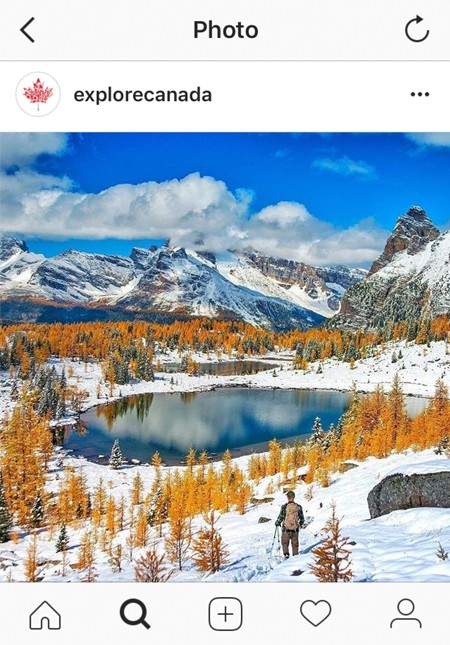
The Government of Canada spends a lot of effort promoting Canadian tourism through a variety of websites and social media accounts, including Instagram — as seen here. The current slogan is "Canada: Keep Exploring" with "explorecanada" their most widely used user name and hashtag.

Why come to Canada?
Canada is a large, diverse country with a lot going for it, but most tourists are drawn to a few of the same things:
Nature — Canada is one of the most beautiful countries in the world, full of picturesque forests, mountains, and lakes that make it a fantastic place for camping, hiking, or just wandering around and admiring.
Winter Sports — Canada’s snowy climate and mountainous geography has produced no shortage of must-visit parks and resorts for anyone interested in skiing, snowboarding, snowshoeing, or any other activity best enjoyed in the cold.
Cities — Canada is home to several large, modern cities that anyone with a taste for urban life will be able to appreciate.
Cost — The Canadian dollar is generally quite weak in comparison to other currencies, which make it a very affordable option for people without too much money in their travel budgets.
- Bank of Canada Exchange Rates
The rest of this chapter deals with general information about traveling to Canada. For more information on things to see and do in Canada’s four most popular tourist destinations, please see the specific chapters on British Columbia tourism , Alberta tourism , Ontario tourism , and Quebec tourism .
What language do they speak in Canada?
Foreigners are sometimes confused by Canada’s language situation. Officially, Canada has two official languages , French and English. However, this is mostly just a matter of government policy. The vast majority of Canadians only speak English, and lack even basic skills in French. French-speaking tourists should not expect to speak French in cities like Vancouver, Toronto, or Calgary.
The capital city of Ottawa is more functionally bilingual than most Canadian cities, and all museums and government-related attractions will feature signs and brochures in both French and English. Staff at popular attractions will likely be fluently bilingual as well, as will many employees of popular stores and restaurants. It helps to ask, however.
The famous city of Montreal , in the province of Quebec , is the most bilingual city in Canada and most residents, particularly those who live and work in the downtown core, can speak fluent French and English. It is not considered controversial in Montreal to speak either French or English to a stranger and assume the other person will understand. In other parts of Quebec, however, rates of English fluency are much lower and it may be considered offensive to speak English to a stranger without first asking for permission.
Downsides of Canada
To avoid unhappy surprises, would-be tourists to Canada should be aware of the following potential disappointments before they go:
Bad weather — Unless you are specifically traveling to enjoy winter activities (see above), there are generally only a few months of the year (usually around June to September) in which Canada’s weather will be mild enough to enjoy. Canadian winters, and even parts of spring and fall, are often cold, dark, snowy, and wet, which can make tourist activities difficult or unpleasant.
Long travel distances — Canada is an enormous country and its main cities are all spread quite far apart from each other. Tourists, particularly European tourists unfamiliar with the vastness of North America, are sometimes disappointed to learn that they will probably only be able to see a rather small part of Canada on their trip. Visiting multiple major Canadian cities on a single vacation — for example, Vancouver, Toronto, and Montreal — would be extremely time-consuming and likely cost thousands of dollars in domestic travel alone.
“America Jr.” — Some tourists are disappointed to discover that Canada is extremely similar to the United States . Travelers familiar with America should not expect to encounter a strikingly different culture in Canada. Stores, brands, food, entertainment and so on will be overwhelmingly American. Though the international press likes to emphasize Canada as being a more “liberal” country than the US, Canadians will probably not seem very different from Americans in day-to-day encounters.
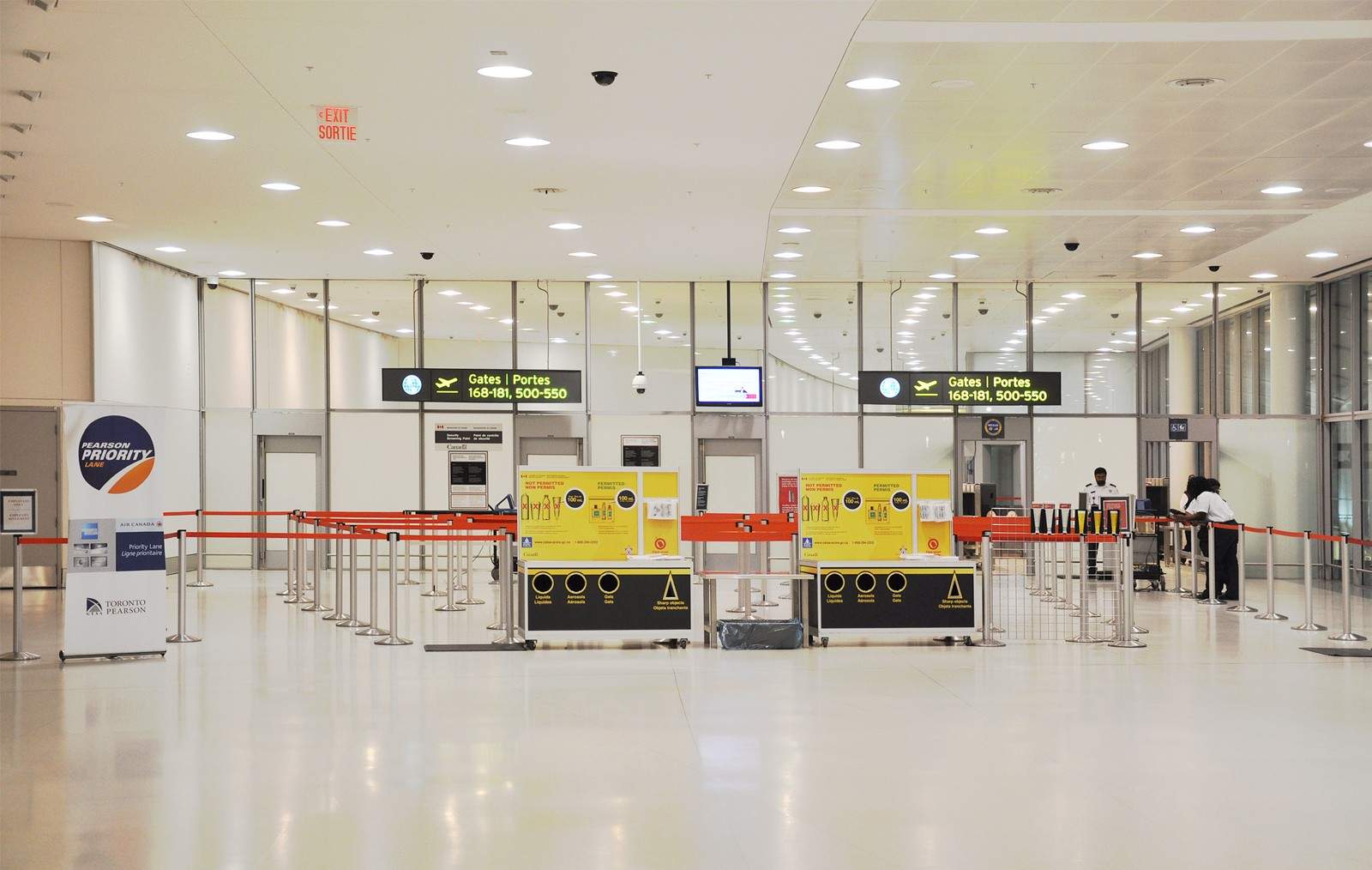
Security checkpoint at Toronto's Pearson International Airport. Serjio74/Shutterstock
Sick travelers.
Travelers from certain countries will need to be cleared by a medical exam as part of their application process before they can visit Canada. During times when there's a global panic over the spread of a particular infectious disease, such as the SARS scare of 2003 or the Ebola scare of 2014, visitors who display worrying symptoms may be detained by border authorities and sent to a hospital for quarantining.
How to Visit Canada
Customs and visas.
Canada does not treat all international visitors the same; citizens of certain countries will have an easier time entering Canada than others. All foreign visitors to Canada, however, must bring a valid passport from their home country.
Residents of the United States have the easiest entry to Canada, and don’t require anything other than a passport to get in. Residents of Great Britain, western Europe, and a few other countries have to obtain an Electronic Travel Authorization ( ETA ) before they can enter. This is a very easy process that only takes a couple of minutes and should be done online before you leave. Once completed, an ETA lasts for five years or until you get a new passport.
- Find out if you need an Electronic Travel Authorization (eTA) or a visitor visa
Residents of countries not covered by the ETA program can only visit Canada after obtaining a short-term visitor’s visa . Applications can be done online, through the mail, or at an overseas Canadian consulate. They take a couple weeks to process and usually cost around $200. For more information, see the Government of Canada’s visitor eligibility questionnaire .
It is illegal for anyone, from any country, to enter Canada to work or live without first obtaining a long-term visa , which are much more complicated to apply for, and take many months to be approved.
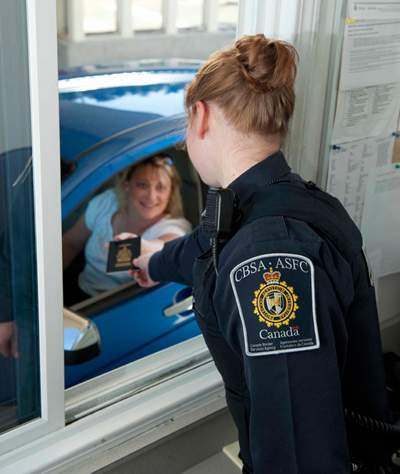
Canada's land border crossing stations operate as drive-throughs. Visitors who arrive by air cross the border at the Canadian airport.
Crossing the Canadian Border
Anyone entering Canada from a foreign country by land, sea, or air — including Canadians themselves — are required to have an interview with a Canadian border guard at their point of entry so it can be determined they are a safe and legal visitor. Exactly how long and invasive this interview will be depends very much on where you are coming from, why you want to visit, whether you have completed any authorizations you may need, and how clearly you communicate these facts. It pays to be honest, cooperative, and informed.
- Canada Border Services Agency
- Wait Times Now, estimated wait times for major Canadian border crossings
It should be remembered that while foreigners enjoy various legal rights after they enter Canada (see below), no foreigner has the right to get into Canada just because they want to. Canadian border guards have the power to deny anyone entry to Canada for any reason. Possessing a criminal record, a history of subversive political activity, dangerous diseases, suspicions of drug trafficking, or just broadly suspicious behavior are all common grounds for refusal of entry to Canada.
Ever since the terrorist attacks of September 11, 2001 Canadian security forces have been extra vigilant about terrorist threats, particularly from the Islamic world. Would-be visitors from the Middle East or parts of Africa, or those with a history of visiting such places, may find themselves subject to increased scrutiny.
- Visiting Canada Help Centre and FAQ, Government of Canada
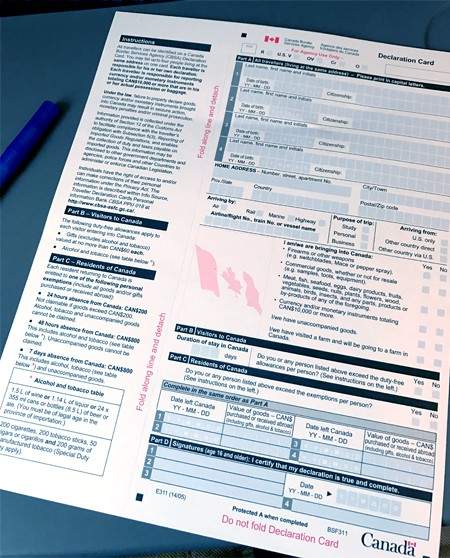
Visitors to Canada are expected to hand a completed Declaration Card to a border guard in order to cross the border. These cards, which ask basic questions about the visitor and their trip, are usually handed out on airplanes or trains. Visitors who cross a land border usually have to just tell the information to the guard.
Bringing Goods to Canada
It is illegal for foreigners to bring products into Canada to sell without first going through the complex procedures for engaging in international commerce . If you cross the border with more stuff than a reasonable person would assume you need for a trip, the authorities may conclude you are probably intending to illegally sell goods. The only exception is a maximum $60 worth of “ gifts .”
Tobacco and liquor products are counted separately, and foreigners can bring a fair bit of both into Canada. The current tobacco limit is quite generous; you can bring up to 200 cigarettes, 50 cigars, and 200 grams of tobacco, if you so choose. The liquor limit is stricter: you can only bring 1.5 litres of wine, 1.13 litres of another liquor, or a 24-pack of beer. Bringing food products into Canada is generally a hassle, as there are very specific rules and limitations for just about every type.
Dangerous goods, like guns , other weapons , and fireworks can be imported, but have their own particular rules. A few very specific things are likewise banned in Canada for safety reasons and are thus illegal to bring into the country, such as certain kinds of kites and baby products. A complete list can be found on the Canadian Government’s official prohibited consumer products list . It’s also illegal to import what the government describes as “obscenity and hate propaganda ” which includes any movies, books, comics, or magazines that contain, in the opinion of the border guard, overly hateful, perverted, gory, terroristic, or violent content.
- Alcohol and Tobacco Limits, Government of Canada
- Restricted and Prohibited Goods, Government of Canada
Traveling Inside Canada
Laws for foreigners.
This should hopefully go without saying, but foreigners have to obey Canadian laws while in Canada. Those who do otherwise can be charged, arrested, sentenced, and imprisoned just like Canadians. At the same time, the legal protections granted to Canadians by the Canadian Constitution also apply to foreigners visiting the country. This includes the right to avoid self-incrimination, the right to consult a lawyer, and the right to dispute before a judge any charges or fines imposed by a police officer.
Canada has extradition treaties with more than half the world’s countries , meaning foreigners who commit a crime in Canada but leave the country before they are caught or punished can be caught by local police and forced to return to Canada to face justice (and vice-versa). Only in very rare situations will a foreigner accused of a crime in Canada be tried and punished for it by their own country’s justice system.
Getting Around in Canada
Flights within Canada are notoriously expensive, with the average domestic flight costing at least $300, plus airport fees and taxes which usually add an additional $40 or so. The country has three national airlines, Air Canada (airline codes: 014, AC or ACA, part of the Star Alliance airline coalition) and WestJet (838, WS, WJA, part of its own 16-airline alliance ) which are largely domestic, and Air Transat (649, TS, TSC) which is mostly international. Canada does not have a major discount or budget airline, though in recent years the major airlines have been experimenting with budget spin-offs, such as Air Canada Rouge and Westjet’s Swoop . Flights to northern Canada , and especially within northern Canada, are extremely expensive, often a thousand dollars or more, and to get to certain remote regions travelers must use a special northern airline or a chartered flight.
Every major Canadian city has its own international airport , and many smaller cities too. There are also several considerably smaller regional or domestic airports that exclusively service flights between Canadian cities. Most of Canada’s big city airports are located around 20 kilometers from their city’s downtown core, or about a 30 minute drive. Vancouver and Toronto have trains that go directly from the airport to downtown.
- Security Screening at Canadian Airports, Canadian Air Transport Security Authority
The railroad played an important role in Canadian history , but trains have now become among the slowest, most expensive ways to travel the country. While trains can be a somewhat convenient way for tourists to travel between large Canadian cities located relatively close to each other, air travel or driving remains much more popular, and may even be cheaper.
VIA Rail is Canada’s primary passenger train service, offering direct service from Vancouver to Toronto (at over 4,000 km, one of the longest train trips in the entire world!), Toronto to Montreal, and Montreal to Atlantic Canada, with stops in all significant cities along the way. Traveling between the axis of Toronto, Ottawa, and Montreal is a popular route. A cross-country Canadian train ride, from one end of the country to the other, will take about four days and cost around $500-$800.
VIA Rail’s Vancouver, Toronto, and Montreal stations also offer connecting trips to the United States, via Amtrak . Several provinces also have limited train service to some of their more remote areas. Cruise-like luxury train services are provided by Royal Canadian Pacific for those willing to pay.
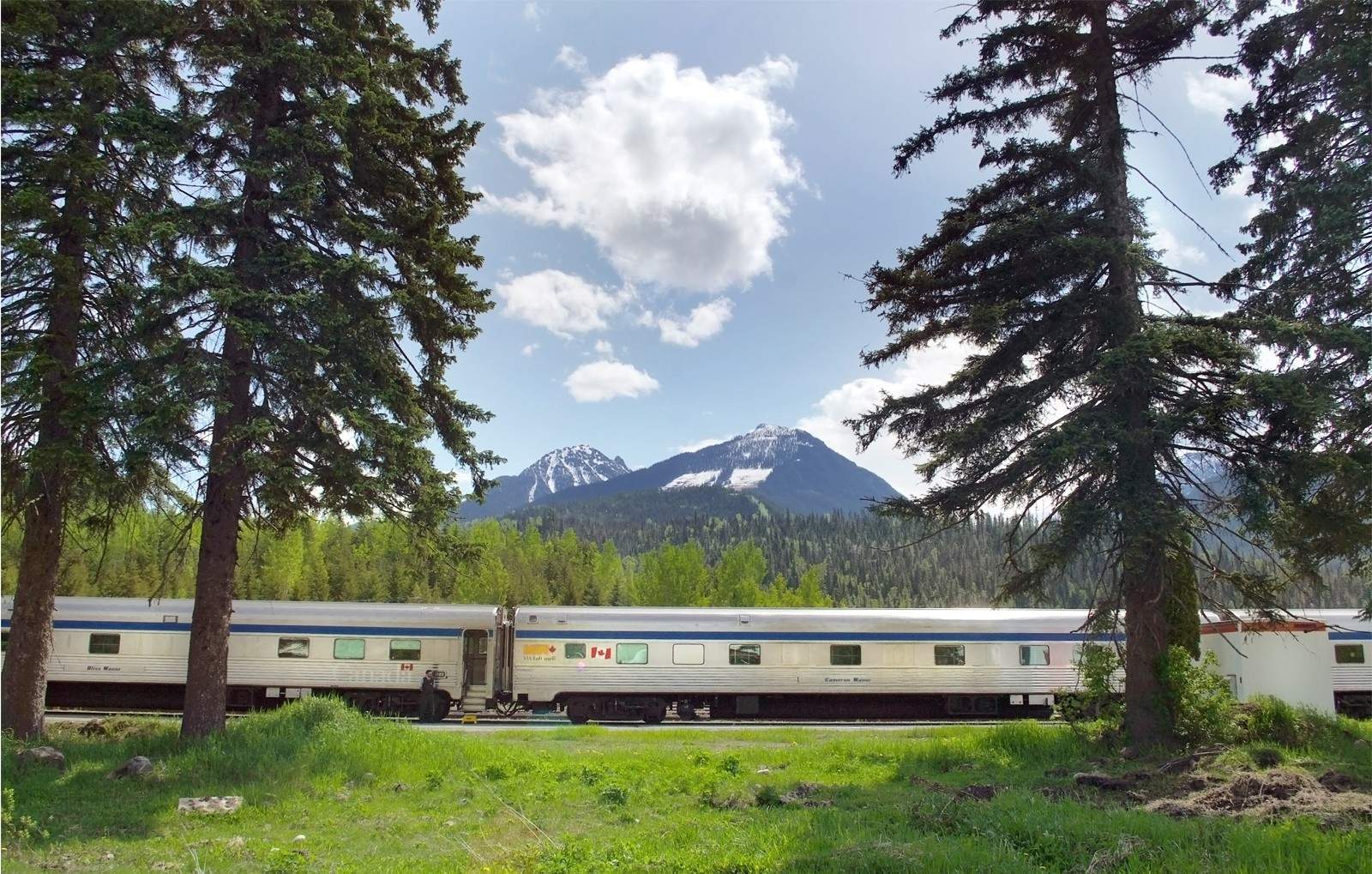
A Via Rail passenger train takes a break in Blue River, British Columbia. joseph s l tan matt/Shutterstock
Driving in canada.
Anyone driving a car or motorcycle in Canada must possess a valid driver’s license . A foreign driver’s license will generally be recognized as valid by the police if it can be read by them, which is to say, if it has English text on it. Don't forget to check if your car insurance applies in Canada!
Car and Bus Travel
Canada is united by a massive cross-country highway known as the Trans-Canada Highway that extends 7,821 km from the farthest western portion of British Columbia to the farthest eastern part of Newfoundland. It is primarily a west-east corridor, however. Though the Trans-Canada highway does have some northern forks, these do not go very far and none reach Canada’s northern territories . Every province has its own highway system as well, and these often merge into portions of the Trans-Canada highway. Through a combination of national and provincial highways, virtually every part of Canada is reachable by road travel, though in many cases drive times will be incredibly long.
- Trans-CanadaHighway map, Transport Canada
Many tourists enjoy traveling between Canadian cities by charter buses , which are large, comfortable buses featuring modern amenities such as bathrooms and WiFi. In eastern Canada, Greyhound is the dominant charter bus line. Other provinces are serviced by various regional bus companies.
Public Transportation
Most large Canadian cities have relatively sophisticated public transportation systems, with some combination of bus, light-rail train, monorail, subway, street car, and ferry services that can be used to navigate most of the downtown core and surrounding areas. The exact combination of services will vary from city to city (as will the cost of tickets and passes). In most cases, public transportation does not travel to rural areas, though some rural communities may have their own public transportation system.
Shopping in Canada
Canadians use the Canadian dollar (symbol: $ ) to pay for goods and services, which can be obtained at any ATM machine, which can be found at banks, shopping centres, corner stores, and many other public places. Most Canadian ATMs will accept foreign bank cards, though withdrawal fees can be high. Some smaller, independently-run shops will have a strict “cash only” policy, but these days, most Canadian business will actually prefer to do transactions through credit or debit cards . Visa and Mastercard are the most commonly-used credit card brands in Canada, and many shops will not accept other kinds — though some will, making it a good idea to ask ahead of time.
US dollars are often accepted at Canadian stores, particularly in tourist-heavy areas. Some places may have a policy of accepting US dollars “at face value,” however, meaning American money will not be accepted at its exchange rate worth, but rather treated as if it was worth as much as Canadian money, which is a bad deal.
Foreigners will be charged sales tax on every purchase they make in Canada, through special “value-added tax” known as GST and either PST or HST . Canada does not have a rebate program allowing foreigners to get a refund for the GST, PST, or HST they spend in Canada.
Challenges, dangers and annoyances when visiting Canada
Medical costs.
Though Canada offers generous public healthcare insurance, you have to be some form of long-term, legal Canadian resident before the government will pay for your hospital visits or operations. Non-residents will be billed full cost for any medical service performed while in Canada, which is why it always pays to get travelers’ medical insurance .
Canada has some of the world’s cleanest tap water and strict laws to ensure the cleanliness and safety of any meat, dairy, or poultry products sold at restaurants or grocery stores.
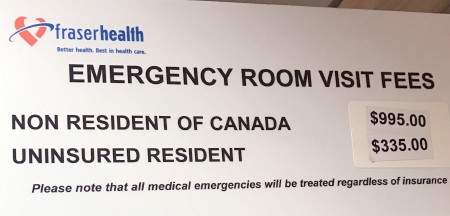
No foreigner will be denied emergency medical service in Canada, though if they have no insurance they will later face a hefty bill. In addition to hospital admittance and treatment, the uninsured should be prepared to pay full cost for things like ambulance rides and hospital beds. Seen here, a sign in a Vancouver hospital emergency room.
Staying Safe in Canada
Canada is generally a safe country, but it has some dangerous places. Every large Canadian city will have a couple of “bad neighborhoods” where criminals tend to congregate and locals generally avoid — particularly after dark — for fear of being harassed, robbed, or assaulted. Unfortunately, these neighborhoods can often be located close to tourist areas, and may seek to take advantage of the obviously confused or foreign. At the same time, most serious, violent crime in Canada tends to occur between people who know each other. Visitors who act confident and use caution and common sense should have little to fear.
Leaving belongings unattended in any public place is generally considered a high-risk activity, and though some businesses may store forgotten items in a “ lost and found ” collection of lost property, the police — and indeed, most Canadians — will generally be unsympathetic to victims of theft caused by inattentive behavior. People generally lock up their homes, cars, and bicycles before leaving them unsupervised. In rare cases, tourists and locals may be targeted by scam artists looking to cheat them out of money. In big cities, most scams are quite brazen, and usually take the form of a stranger asking for money on some sympathetic pretext, such as a phony personal emergency or phony charity. In some cases, a thief may attempt to quietly sell stolen goods to a stranger. Beggars can be common in some large Canadian cities as well. Many Canadians regard them with indifference, believing them to be scam artists.
The police can be called anytime in Canada by dialing 9-1-1 on the telephone. Canadian police are obligated to treat crimes committed against foreigners exactly the same as crimes against Canadians.
- Scams in Canada, TravelScams
More About Canadian Tourism
- Destination Canada, the Government of Canada's Official Tourism Department
- Explore Canada Instagram Account
- Lonely Planet Canada
Exchange Rate for one Canadian dollar (as of April 2019)
- $0.75 U.S. Dollar
- £0.57 U.K. Pound
- $1 Australian Dollar
- ¥5.02 Chinese Yuan
- ¥83.5 Japanese Yen
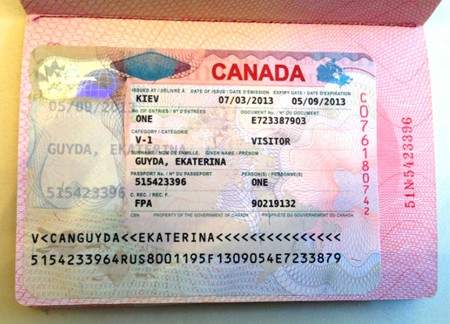
Canadian Travel Visas are special holographic stickers that are attached to a blank page of the passport.
Travel Guide Canada
Book your individual trip , stress-free with local travel experts
- roughguides.com
- North America
- Travel guide
- Itineraries
- Travel Advice
- Accommodation
Plan your tailor-made trip with a local expert
Book securely with money-back guarantee
Travel stress-free with local assistance and 24/7 support
The home of ice hockey, the Niagara Falls, Mounties and maple syrup – not to mention Ryan Gosling, Céline Dion, Drake and of course, Justin Bieber – almost everyone on the planet knows something about Canada. Yet first-time visitors should expect some surprises, beginning with the immense size of the country, hard to appreciate until you get here.
Where to go in Canada
Aboriginal peoples, outdoor activities, the national parks, bears, cougars and snakes, the best parks to ….
Canada’s cities – enchanting Québec, trendy Vancouver, cosmopolitan Toronto and stylish Montréal among them – are rich with historical and cultural treasures, but above all Canada is a land of stunningly beautiful landscapes, from the spectacular fjord-slashed coastlines of Newfoundland and the Maritimes, to the Rockies’ glittering lakes and majestic peaks, and the rippling prairie expanse with all the sky for a ceiling in between.
The second largest country in the world (after Russia), Canada covers an area the United Kingdom could fit into 41 times over. Much of this expanse is sparsely inhabited and the majority of the 35 million Canadians live in its southern half, relatively close to the US border. Like its neighbour to the south, Canada is a spectrum of cultures, a hotchpotch of immigrant groups who supplanted the continent’s many Aboriginal peoples.
For the visitor, the mix that results from this mostly exemplary tolerance is an exhilarating experience, offering such widely differing cultural, artistic and culinary experiences as Vancouver’s huge Chinatown, the Inuit heartlands of the far north, the austere religious enclaves of Manitoba or the Celtic-tinged warmth of the Maritimes.
Yet – in stark contrast to their southern neighbours – some Canadians are often troubled by the lack of a clear self-image, tending to emphasize the ways in which their country is different from the US as a means of self-description (one of their strange foods, jellied moose nose , probably best sums this up). But the question “What is a Canadian?” continues to linger, with the on-again, off-again and always acrimonious debate over Québec’s secession, but ultimately there can be no simple characterization of a people whose country is not so much a single nation as it is a committee on a continental scale. Pierre Berton, one of Canada’s finest writers, wisely ducked the issue: “A Canadian”, he quipped, is “someone who knows how to make love in a canoe”.
Despite this balancing act, one thing is clear: Canadians have an overwhelming sense of pride in their history, their culture and the mesmerizing beauty of their land. Indeed, Canada embraces all this – as well as its own clichés – with an energy that’s irresistible.
Ontario contains not only the country’s manufacturing heart and its largest city, Toronto, but also Niagara Falls, the premier tourist sight. North of Toronto there’s Georgian Bay, a beautiful waterscape of pine-studded islets set against crystal-blue waters. The bay is also accessible from the Canadian capital, Ottawa – not as dynamic as Toronto, but still well worth a stay for its galleries, museums and handful of superb restaurants.

Québec, set apart by the depth of its French culture, is anchored by its biggest city, Montréal, which is for many people the most vibrant place in the country, a fascinating mix of old-world style and commercial dynamism. The pace of life is more relaxed in the historic provincial capital Québec City, and more easygoing still in the villages dotted along the St Lawrence lowlands, where glittering spires attest to the enduring influence of the Catholic Church.
Across the mouth of the St Lawrence River, the pastoral Gaspé Peninsula – the easternmost part of Québec – borders New Brunswick, a densely forested introduction to the three Maritime Provinces, whose people have long been dependent on timber and the sea for their livelihood. Here, the tapering Bay of Fundy boasts mind-blowing tides – rising and falling by 9m or more – and superb maritime landscapes, while the region’s tiny fishing villages are at their most beguiling near Halifax, the busy capital of Nova Scotia. Even prettier are the land and seascapes of Cape Breton Island, whose rugged topography anticipates that of the island of Newfoundland to the north. Newfoundland’s isolation has spawned a distinctive culture that’s at its most lively in St John’s, where the local folk music scene is Canada’s best. The island also boasts some of the Atlantic seaboard’s finest landscapes, particularly the flat-topped peaks and glacier-gouged lakes of Gros Morne National Park.
Back on the mainland, the Prairie Provinces of Manitoba and Saskatchewan have a reputation for dullness that’s unfair: even in the flat southern parts there’s the diversion of Winnipeg, whose traces of its early days make it a good place to break a trans-Canadian journey. Numerous lakes and gigantic forests offer magnificent canoeing and hiking, and in the far north, beside Hudson Bay, Churchill – remote, but accessible by train – is famous for its polar bears, beluga whales and easy viewing of the Northern Lights. Moving west, the wheatfields of Alberta ripple into ranching country on the approach to the province’s two main cities, Edmonton and Calgary, grown fat on the region’s oil and gas fields. Calgary is especially known for its cowboys, rodeos and sumptuous steaks. Both cities provide useful springboards for trips into the Canadian Rockies – most popularly to the resorts of Banff, Lake Louise and Jasper – and the most spectacular scenery in the country, from mighty glaciers to the serene beauty of Moraine Lake and the rugged wilderness of Icefields Parkway.
Further west, British Columbia is a land of snow-capped summits, rivers and forests, pioneer villages, gold-rush ghost towns, and some of the greatest hiking, skiing, fishing and canoeing in the world. Its urban focus, Vancouver, is the country’s third largest city, known for its spectacular natural setting, fabulous food and a laidback West Coast hedonism. Off the coast lies Vancouver Island, a microcosm of the province’s immense natural riches and home to Victoria, a devotedly anglophile little city. It’s also well worth journeying over to the island’s west coast to take in the rugged beauty of Pacific Rim National Park’s Long Beach, Clayoquot Sound and surf town of Tofino.
North of British Columbia, wedged alongside Alaska, is the Yukon Territory, half grandiose mountains, half subarctic tundra, and full of evocative echoes of the Klondike gold rush. Whitehorse, its capital, and Dawson City, a gold-rush relic, are the major towns here, each accessed by dramatic frontier highways. The Northwest Territories and Nunavut, covering the Canadian Arctic, are an immensity of forest, lakes, tundra and ice, the realm of Dene and Inuit Aboriginal peoples. Roads are virtually nonexistent in the deep north, and only the frontier city of Yellowknife, plus a handful of ramshackle villages, offer the air links and resources necessary to explore this wilderness.
Discover more places in Canada

- Ontario Travel Guide
- The Prairie Provinces Travel Guide
- Québec City and Northern Québec Travel Guide
- The Maritime Provinces Travel Guide
- The BC Interior Travel Guide
- Vancouver and Vancouver Island Travel Guide
- Toronto Travel Guide
The British and French were latecomers to Canada, a country that for thousands of years was home to a vast aboriginal population (or “First Nations”). Today, almost a million Canadians claim descent from these first peoples, from the so-called “Indians” of the central and western heartlands, to the Inuit, inhabitants of the great sweep of Canada’s north. A third group, the Métis – descendants of mixed unions of white and aboriginal people – also have a distinct identity, part of a rich cultural, social and artistic mosaic that provides a beguiling complement to the mainstream. You’ll find evidence of Canada’s former aboriginal life in many museums and galleries, and plenty of areas nurturing living aboriginal cultures, though there’s no escaping the fact that many aboriginal people are among the most marginalized of Canadians.
• Canada has the 11th largest economy in the world; the country’s richest person is David Thomson (chairman
of Thomson Reuters), worth around $30 billion.
• It’s true: the Canadian province of Québec is by far the largest producer of maple syrup in the world (accounting for three-quarters of global output).
• Established in 1964, Tim Hortons is a Canadian icon, with over 3000 doughnut and “double-double” (coffee with two sugars and two creams) stores nationwide.
• Unbeknown to most Americans, Hollywood is crammed with Canadians: Michael Cera, Ryan Gosling, Evangeline Lily, Rachel McAdams, Mike Myers, Ellen Page, Keanu Reeves, Ryan Reynolds, Seth Rogen, Kiefer Sutherland and William Shatner (Captain Kirk!) among them.
• Since 1952, Saturday nights have been home to “Hockey Night in Canada” on CBC, when thousands are glued to the TV to pay homage to the national sport.
Canada’s mountains, lakes, rivers and forests offer the opportunity to indulge in a vast range of outdoor pursuits. We’ve concentrated on fishing, hiking, skiing and canoeing – four of Canada’s most popular activities – and on the national parks, which have been established to preserve and make accessible the best of the Canadian landscape.
Other popular activities such as whale-watching, riding and rafting are covered in some detail in the main text. Once in Canada you can rely on finding outfitters, equipment rental, charters, tours and guides to help you in most areas; tourist offices invariably carry full details or contact numbers.
Canada’s 37 national parks and eight national park reserves are administered by Parks Canada ( w pc.gc.ca ), and local staff based at park information centres . Visit these to pick up special permits if you intend to fish or camp in the backcountry, and for information and -audiovisual displays on flora, fauna and outdoor activities. Many offer talks and nature walks presented by park naturalists, as well as reports on snow, weather and recent bear sightings. The national parks system also administers 168 National Historic Sites – important historical sites dotted around the country.
Supplementing the national parks is a network of provincial parks in every province in the country. Entry to these parks is sometimes free, though often you’ll have to pay a small fee of around $5. You’ll also have to pay for fishing and hunting permits as well as campgrounds on top of this; specifics vary from province to province.
National park permits
All those entering Canada’s national sites and parks require a park permit , regardless of their mode of transport, though permits are usually sold to cover all those entering in a particular vehicle from a roadside booth on the park boundary. This costs around $7.80 to $9.80 per person per day with concessions for the young and old. If you intend to visit a number of national parks and sites, it might be worth investing in an annual Discovery Pass, which provides one adult unlimited admission to all parks and national historic sites for $67.70; family or group passes, covering a whole car-load of people, cost around double.
Additional permits are also required to fish (see Bears, cougars and snakes) and backcountry camp in national parks: both are generally available from park information centres.
Canada boasts some of North America’s finest hiking , and whatever your ability or ambition you’ll find a walk to suit almost anywhere in the country. All the national and many provincial parks have well-marked and well-maintained trails, and a visit to any park centre or local tourist office will furnish you with adequate maps of the usually very easily followed local paths. If you’re venturing into the backcountry try to obtain the appropriate 1:50,000 sheet from the Canadian Topographical Series. For key hiking areas we’ve given a brief summary of the best trails in the appropriate parts of the Guide, though with over 1500km of paths in Banff National Park alone, these recommendations only scratch the surface. Park staff can advise on other good walks, and detailed trail guides are widely available for most popular regions.
Before setting off on anything more than a short stroll be properly informed of local conditions and be properly equipped . Hiking at lower elevations should present few problems, though swarms of blackflies in the spring and mosquitoes near water can drive you crazy; anything containing DEET should be a fairly reliable repellent. For more on specific health problems.
Main hiking areas
The most extensive and rewarding hiking-trail networks are in the Rockies national parks of Alberta and BC. Thousands of kilometres of well-kept and well-tramped paths crisscross the four main parks – Banff, Jasper, Yoho and Kootenay – as well as the smaller enclaves of Glacier, Revelstoke and Waterton Lakes. Scope for hiking of all descriptions is almost limitless. More modest areas dotted all over BC boast walking possibilities out of all proportion to their size: we pay less attention to these, but by most relative standards hiking here is still among the best in North America.
In Manitoba , the Riding Mountain National Park offers about thirty hiking trails, but though there’s plenty of upland walking to be had in the prairie provinces, you have to move east to Québec ’s Mauricie, Forillon and Gatineau parks for a taste of mountains comparable to the western provinces. In Ontario , Lake Superior Provincial Park and Algonquin Park are the most challenging terrains. New Brunswick ’s Fundy National Park offers coastal walks, while Newfoundland ’s hiking centres on its two national parks: Terra Nova on the East Coast, and the high plateau and fjords of the West Coast’s Gros Morne. For the truly bold, however, nothing can match the Arctic extremes of Baffin Island, whose principal trail lies over an icecap that never melts.
Long-distance trails
In areas with highly developed trail networks, seasoned backpackers can blaze their own long-distance walking routes by stringing together several longer trails. Recognized long-haul paths are relatively rare, though more are being designated yearly. One of the best is the Chilkoot Trail from Dyea in Alaska to Bennett in BC, a 53km hike that closely follows the path of prospectors en route to the Yukon during the 1898 gold rush. The most popular is probably Vancouver Island’s demanding West Coast Trail , which runs for 75km along the edge of the Pacific Rim National Park.
More far-reaching walks include the Rideau Trail , which follows paths and minor roads for 386km from Kingston to Ottawa ( w rideautrail.org ); the 690km Bruce Trail from Queenston, on the Niagara River, to Tobermory on the Bruce Peninsula ( w brucetrail.org ); and the Voyageur Trail along the north shores of lakes Superior and Huron, which is the longest and most rugged route in the province ( w voyageurtrail.ca ). In the Maritimes, the Confederation Trail cuts a bucolic path across PEI, while the Fundy Trail in New Brunswick and, in particular, the East Coast Trail in Newfoundland offer a more rugged experience.
Wherever there’s good hiking in Canada, there’s also usually skiing . The increasingly popular resorts of the Rockies and BC are the main areas and the country’s leading resorts are at Whistler, Banff and Lake Louise. But there’s also great skiing in Québec, and a few good runs at the minor day resorts that dot the other provinces. Most cities are also close to excellent cross-country trail networks.
Canadian ski packages are available from travel agents worldwide, but it’s perfectly feasible to organize your own trips, as long as you book well ahead if you’re hoping to stay in some of the better-known resorts. Costs for food, accommodation and ski passes are still fairly modest by US and European standards: expect to pay $50–75 per day (depending on the quality and popularity of the resort) for lift passes, plus another $30 or more per day to rent equipment.
Canada is fishing nirvana. While each region has its specialities, from the Arctic char of the Northwest Territories to the Pacific salmon of BC, excellent fishing can be found in most of the country’s abundant lakes, rivers and coastal waters. Many towns have a fishing shop for equipment, and any spot with fishing possibilities is likely to have companies running boats and charters. Most provinces publish detailed booklets on everything that swims within the area of their jurisdiction.
Fishing is governed by a range of regulations that vary between provinces and are usually baffling at first glance, but usually boil down to the need for a nonresident permit for freshwater fishing, and another for saltwater fishing. These are increasingly available online (search the provincial government websites) or from most local fishing or sports shops for $60 and up, and are valid for a year. Short-term (one- or six-day) licences are also available in some provinces ($15–30). For nonresidents, fishing in Ontario requires an Outdoors Card for $11.94 (valid for three years; if you plan to fish for one day only, you can skip this), plus a fishing licence: one year is $85.53, while one day is $25.27 (call t 1 800 387 7011). Alberta fishing licences are $70.90 (one year) and $28 (one day); Northwest Territories charges $40 per season and $30 for three days; while BC charges a whopping $80 annually ($20 for one day). Newfoundland licences are required for salmon ($53 per season) and trout ($8 per season), with seasons strictly regulated. Additional permits are required to fish in national parks (where fishing is allowed); available from park administration centres, these cost around $34.30 annually or $9.80 daily. There may well be quotas on the types and numbers of fish you can catch, which you can find out when you buy a permit.
Opportunities for canoeing are limited only by problems of access and expertise: some of the rapids and portages on the country’s more challenging routes are for real pros only. The most straightforward regions to canoe are in Ontario , with its estimated 250,000 lakes and 35,000km of waterways, some 25,000km of which have been documented as practical canoe routes. The key areas are the Algonquin, Killarney and Quetico provincial parks, though the single most popular run is the 190km Rideau Canal, a tame stretch from Kingston to Ottawa.
The rivers of BC offer generally more demanding whitewater routes, though the lake canoeing – in Wells Gray Provincial Park, for example – is among the country’s most beautiful. One of the province’s other recognized classics is the 120km trip near Barkerville on the Cariboo River and the lakes of the Bowron Lakes Provincial Park. More challenging still are the immense backcountry lakes and rivers of the Mackenzie River system and the Barrenlands of the Northwest Territories , where you can find one of the continent’s ultimate river challenges – the 300km stretch of the South Nahanni River near Fort Simpson. Growing in popularity, partly because of improved road access, are trips on and around the Yukon River system, particularly the South Macmillan River east of Pelly Crossing. Other areas that will test the resources of any canoeist are to be found in Manitoba and Labrador – all detailed in this guide.
Once you’ve decided on an area, provincial tourist offices can provide full lists of outfitters . These will rent out equipment, organize boat and plane drop-offs, and arrange provisions for longer trips. Costs range from $150 to $250 for weekly canoe rental.
Realistically, your biggest irritations while hiking are likely to be mosquitoes, flies and blackflies and hiking in the Canadian wilderness is far safer than wandering around most cities, but make no mistake, bears are potentially very dangerous, and most people blow a whistle while walking in bear country to warn them off. If confronted don’t run, make loud noises or sudden movements, all of which are likely to provoke an attack.
Cougars pose a somewhat lesser threat, with most attacks occurring in BC – unlike bears, the best strategy with cougars is to try and fight them off (they usually avoid groups altogether).
Snake bites are more common in some parts of Canada (there are rattlesnakes in Georgian Bay Islands National Park for example), but even then only a handful are reported each year and fatalities are rare – wear proper boots and if you do disturb a snake back away so that it has room to move freely. Even the most venomous bites can be treated successfully if you receive immediate medical attention (call t 911 or notify park staff).
It’s pure paddling pleasure in Ontario, with Point Pelee National Park’s winding freshwater marshes and Algonquin Provincial Park’s network of lakes.
The islets of Québec’s Mingan Archipelago or BC’s lush Gulf Islands are both national park reserves.
Jasper’s Icefields Parkway is a superlative mountain drive, but the Cabot Trail in Nova Scotia’s Cape Breton Highlands is a fine maritime alternative.
Banff’s credentials can’t be denied, but to escape the crowds, head to Gros Morne National Park, Newfoundland.
Radium or Banff Upper hot springs in the Rockies: both offer steaming waters to soothe the tired traveller.
Nahanni National Park in the Northwest Territories just edges Jasper for wild whitewater thrills.
Travel advice for Canada
From travel safety to visa requirements, discover the best tips for traveling to Canada
- Spectator sports
- Travel Tips Canada for planning and on the go
- Eating and drinking in Canada
- How to get to Canada
- Getting around Canada: Transportation Tips
- Best time to visit Canada
The Rough Guides to Canada and related travel guides
In-depth, easy-to-use travel guides filled with expert advice.
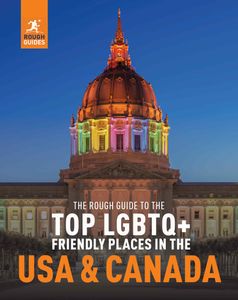
Find even more inspiration here

Planning your own trip? Prepare for your trip
Use Rough Guides' trusted partners for great rates
written by Rough Guides Editors
updated 26.05.2021
Ready to travel and discover Canada?
Get support from our local experts for stress-free planning & worry-free travels.
- Travel advice
- Where to stay

TRAVEL to CANADA – Tips and Information Guide (2024 Edition)
Everything you need to know about travel to Canada in our comprehensive 2024 Canada travel guide.
Have you ever wanted to see the Northern Lights? Or to explore the beautiful cities of Vancouver, Quebec or Calgary? What about venturing out into the world-renown national parks of British Columbia?
Unspoiled nature and incredibly vibrant urban areas create the perfect mixture of reasons to travel to Canada.
“The Great White North,” is a vast country that offers virtually unlimited opportunities for visitors of all kinds.
Whether searching for wildlife, landscapes, adventure activities or the culture of city life, travelling in Canada will give you a variety of experiences you are sure to remember.
There really is so much to do it can be overwhelming to plan to visit Canada. But getting started is not that difficult.
Read on to learn everything you need to plan for travel to Canada!
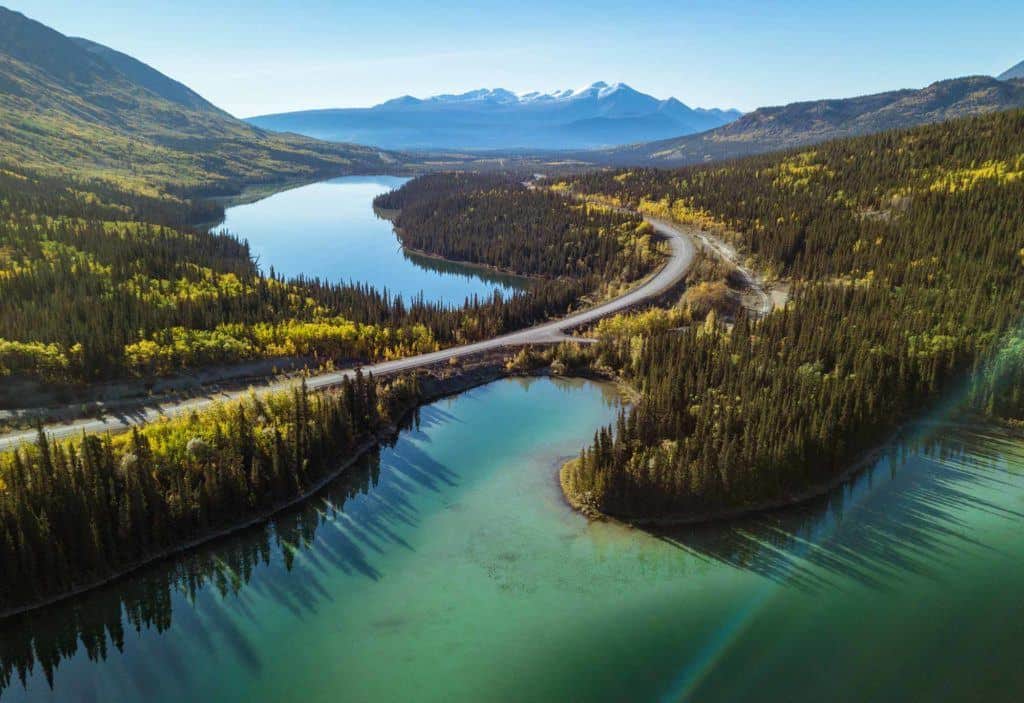
TRAVELLING IN CANADA: AT A GLANCE
Here are the basics of travel to Canada.
TOP 5 TRAVEL EXPERIENCES IN CANADA
With so much to see and do in Canada, it really is hard to pick the top experiences. We have written a comprehensive guide on the best things to do in Canada here.
However, we think that to truly appreciate Canada you need to plan to do these 5 activities during your visit.
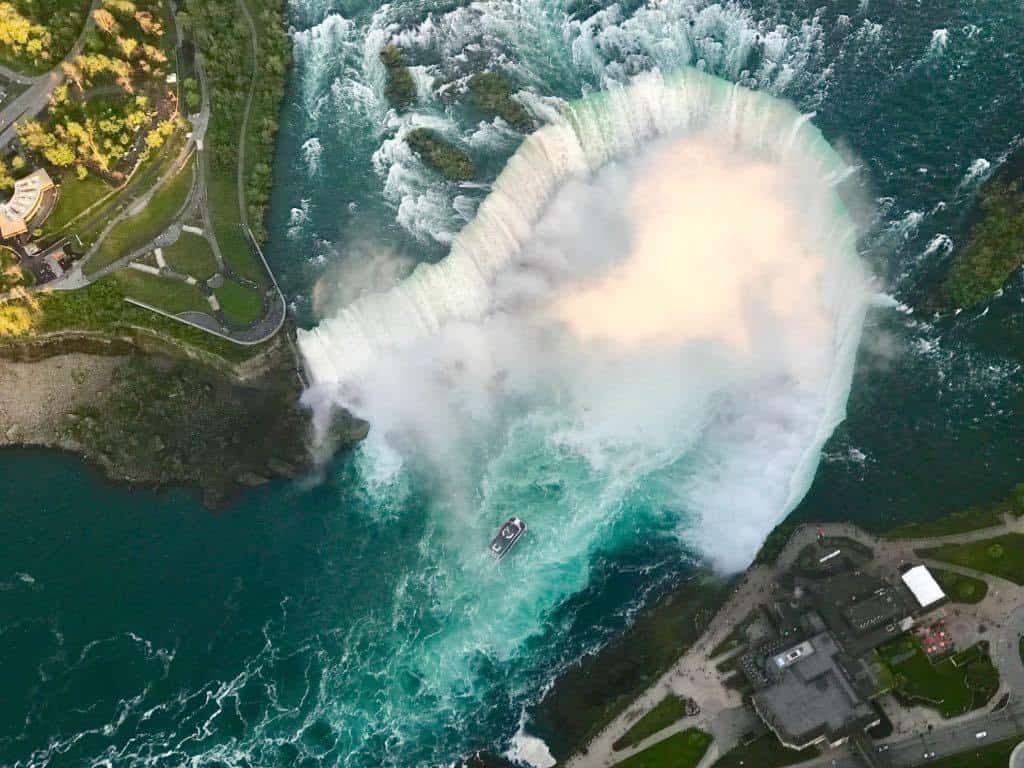
Check out Niagara Falls
Niagara Falls is one of the world’s most famous waterfalls and well worth a visit. Find yourself in awe watching the water tumble over the top of the falls. Or hop on a boat and cruise up to the falls from the river!
Read about all our favourite Niagara Falls attractions .
Explore the Canadian Rockies
From picturesque mountain peaks to stunningly blue glacial lakes, the Canadian Rockies in British Columbia have so much exploration to offer! This part of Canada could be a trip in itself!
Check out our ultimate guide to Hiking in Banff
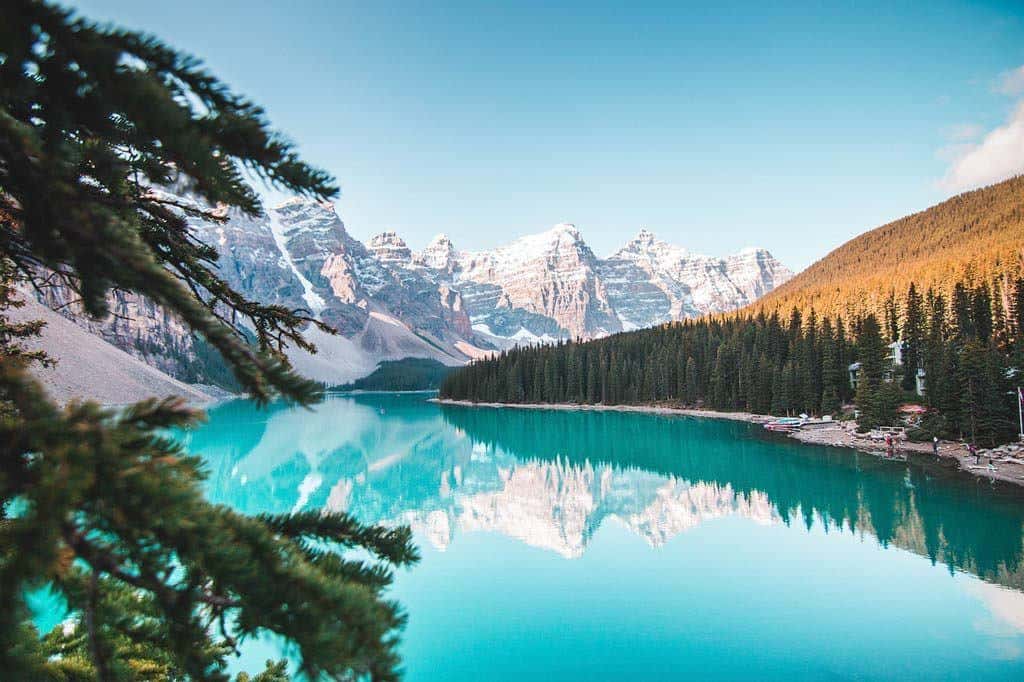
View The Northern Lights
Witnessing northern lights is one of the most amazing natural phenomena. The city of Whitehorse in the Yukon territory might be a perfect place for it! Your chances are highest between September and April since the nights aren’t dark enough during the summer.
Check out the Northern Lights in Whitehorse , Yukon Territory.
See Polar Bears
Churchill in northern Manitoba is known as the ‘Polar Bear Capital of the World’, making it an obvious choice to visit for travellers wanting to get close to the planet’s largest apex land predator.
See polar bears in Churchill, one of Canada’s best wildlife experiences .
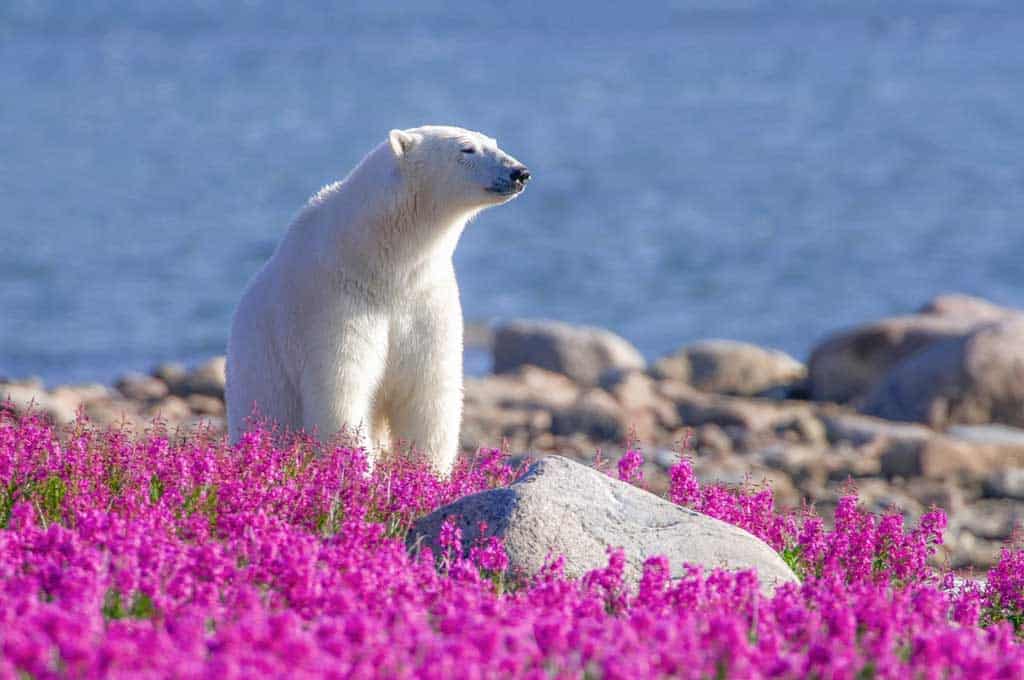
Drink the Sourtoe Cocktail
Taking a shot of alcohol with a frostbitten toe may not be on everyone’s bucket list. But if it’s on yours, you absolutely must try to Sourtoe Cocktail in Dawson City. It’s a strange, yet unique experience when you visit Canada.
Read more about the Sourtoe Cocktail and lots of other great things to do in Dawson City .
Other Things to do in Canada
Scale the CN Tower in Toronto. If you’re unafraid of heights, strap into a safety harness and walk around the top or just check out the views.
Visit Stanley Park in Vancouver. The world’s happiest city has much to offer . But most visitors start at this famous park downtown.
Take a drive on the Icefield Parkway. This incredible stretch of highway connects Banff and Jasper National Parks and is full of amazing landscapes and stunning wildlife!
Hang out with Polar Bears in Manitoba. View these dangerous, but remarkable, animals as they waltz around Churchill like they own the place.
Take a gondola ride in Banff. Situated in the heart of the Canadian Rockies, Banff boasts unrivaled beauty best seen by way of the gondola.
Eat poutine . A strictly Canadian plate, poutine is french fries and cheese curds covered in gravy. Try varieties all across the country!
Take a flight over glaciers in Kluane National Park. The only way to beat the spectacular views of driving or hiking the Canadian Rockies is to check them out from above !
Tour La Citadelle de Québec in Quebec City . One of the most visited cathedrals in Canada, you will feel lost in the grandeur of this sacred place.
Ride the Rocky Mountaineer train . The most relaxing way to enjoy the Canadian Rockies is touring them on this train ride from Vancouver to Banff .
Eat lobster in the Maritimes. Lobster doesn’t get much fresher than that caught and served up in New Brunswick and Nova Scotia.
Go dog sledding in the Yukon. Yes, there are humane ways to enjoy this absolutely incredible experience . Dress warm and enjoy the ride!
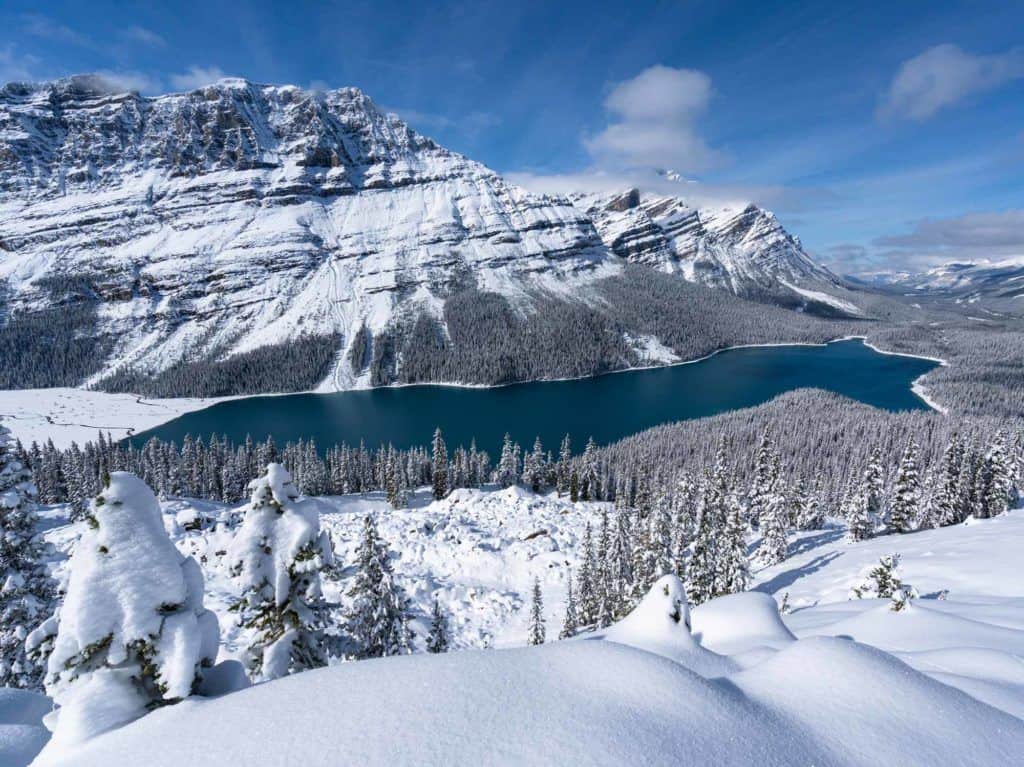
BEST PLACES TO VISIT IN CANADA
There are plenty of amazing places to visit in Canada. Depending on your interests, trip duration and time of year you will find plenty of things to do during any length of stay.
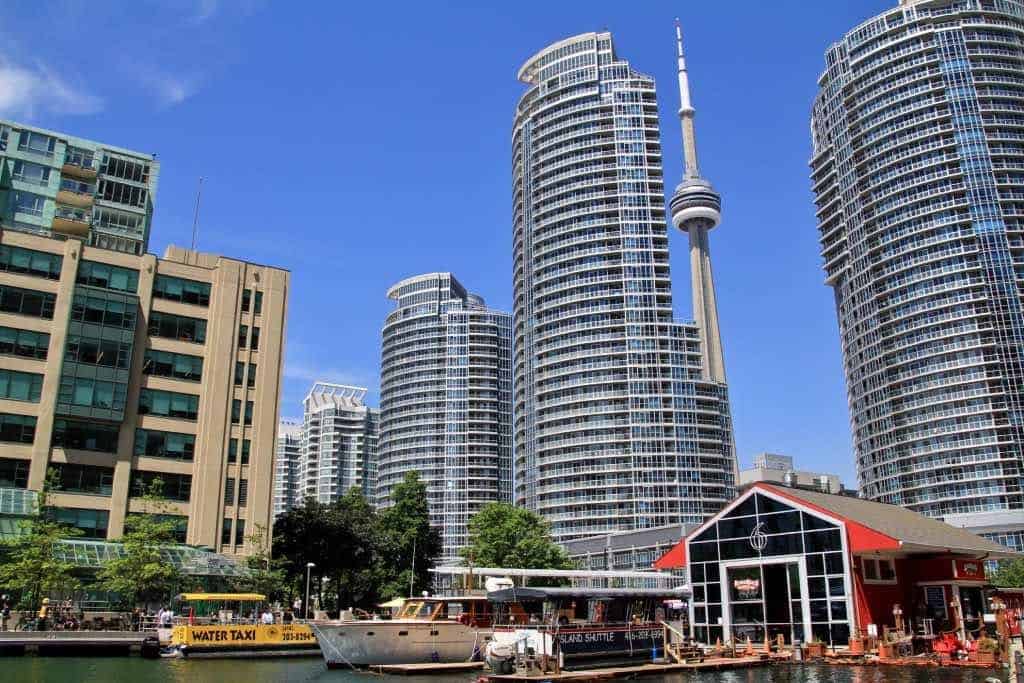
Toronto is not only the largest city in Canada but also truly one of the most stunning cities in the world. It’s famous for its diversity and travelling here will be a great chance to learn about different cultures! The people are incredibly nice, the sights are beautiful.
Check out our Toronto City Guide.
Montréal is a fascinating mix of Europe and North America. It’s a definition of a vibrant city – full of festivals, museums and must-visit restaurants. There’s an abundance of things to do there. Brush up on your French before your trip!
Check out our Montreal City Guide.
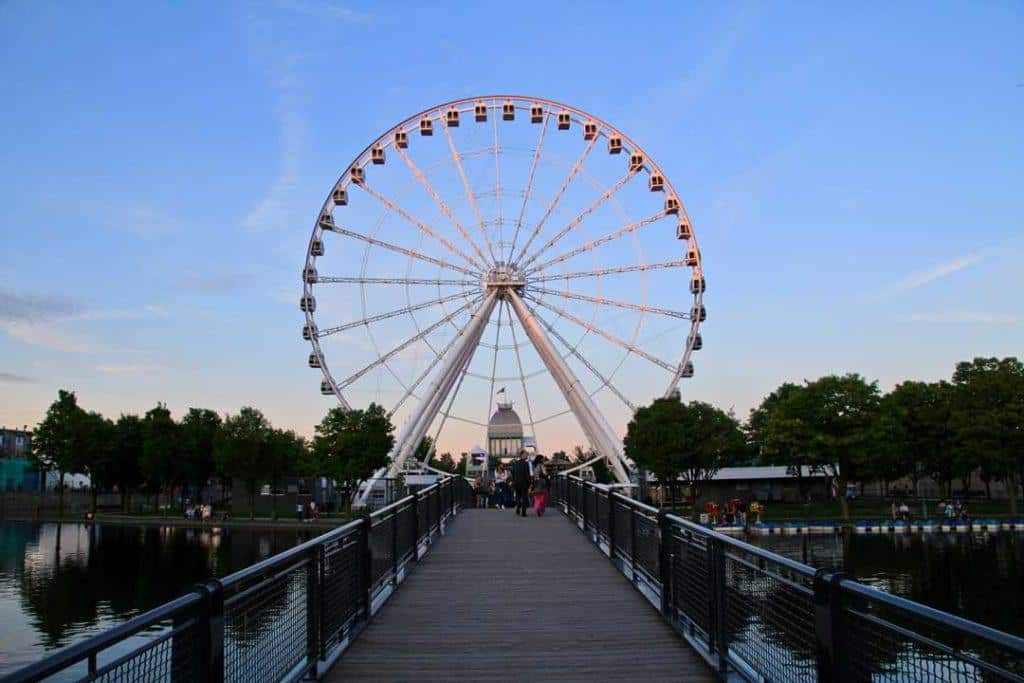
Vancouver is consistently ranked as one of the top places to live in the world. With picturesque scenery all around, tons of outdoor activities, numerous opportunities for wildlife encounters and many great day trips you absolutely have to add Vancouver to your Canada itinerary.
Check out our Vancouver City Guide.
Banff / Lake Louise
Lake Louise is one of Banff National Park ’s most famous sights. The extraordinarily turquoise water is a real feast for the eyes. Plus there is spectacular hiking, biking and even kayaking that you can do to further enjoy the beauty of the nature around. You can visit during the summer or spend your winter vacation here!
Check out our Banff City Guide .
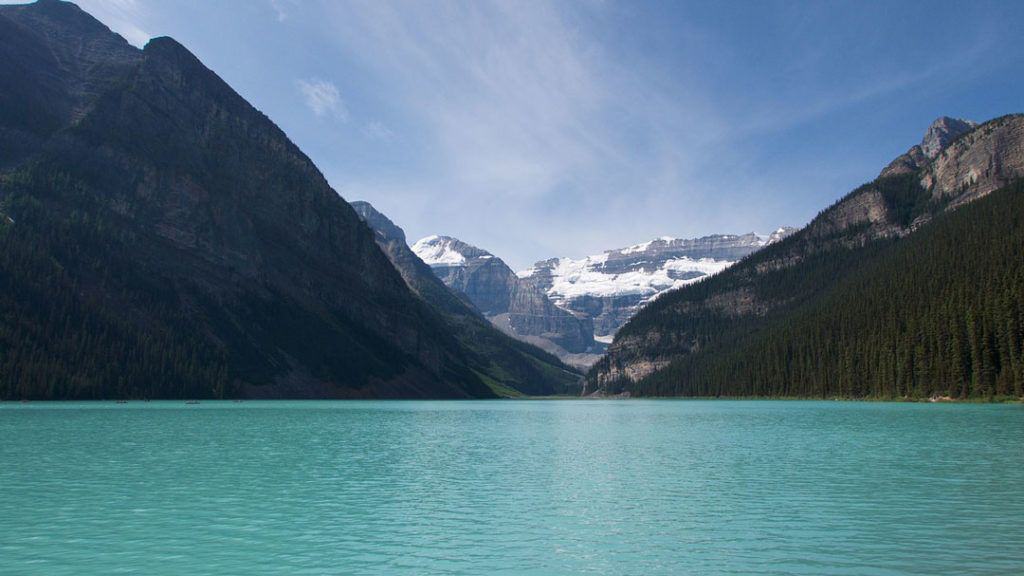
For more information on specific things to do in the top places to visit in Canada, reference our following city travel guides:
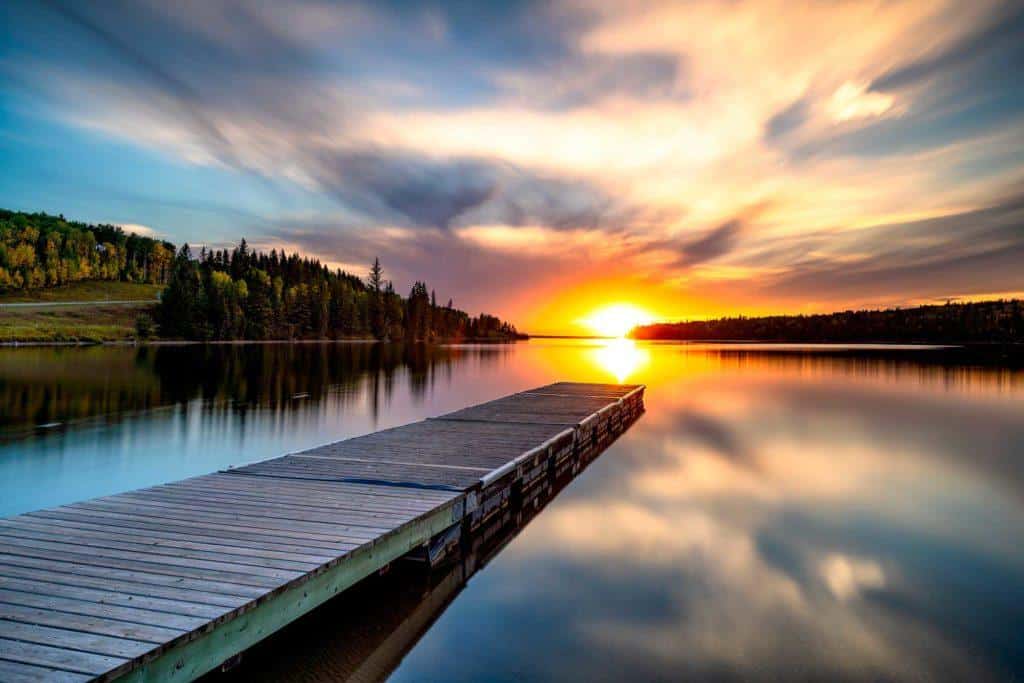
BEST CANADA TRAVEL ITINERARY
Canada is huge and there are so many amazing things to do there that planning an itinerary for your travel can be a little overwhelming.
We’ve divided these itineraries into Eastern Canada and Western Canada options for both 1 or 2 weeks. Having at least 1 month to road trip across the entire country would be ideal.
But short of this, your best option will be to plan to visit each side of the country separately.
Of course, no one-size-fits-all plan will suffice. But if we were to head back to Canada these are the top places and things that we would want to do!
1-Week Canada Travel Itinerary Highlights
Eastern canada 1-week itinerary.
- Fly into Toronto (2 days) / day trip to Niagara Falls
- Go to Ottawa (1 day)
- Go to Montreal (2 days)
- Go to Quebec City (2 days)
- Fly from Quebec City
Western Canada 1-week Itinerary (Road Trip)
- Fly into Calgary (1 day)
- Tour Canadian Rockies – Banff/Jasper/Yoho National Parks (3-4 days)
- Vancouver (3-4 days)
- Fly from Vancouver
2-Week Canada Travel Itinerary Highlights
This is an idea of how we’d spend 2 weeks in Canada.
Eastern Canada Itinerary
- Fly into Toronto (3 days)
- Day trip to Niagara Falls
- Go to Ottawa (2 days)
- Go to Quebec City (3 days)
- Return to Toronto
Western Canada Itinerary (Road Trip)
- Fly into Calgary (1-2 days)
- Banff National Park (1-2 days)
- Jasper National Park (1-2 days)
- Yoho National Park / Glacier National Park (1 day)
- Revelstoke National Park (1 day)
- Stop in Revelstoke (1-2 days)
- Drive to Vancouver (4 days)
- Day trip (ferry) to Victoria on Vancouver Island
- Fly out of Vancouver
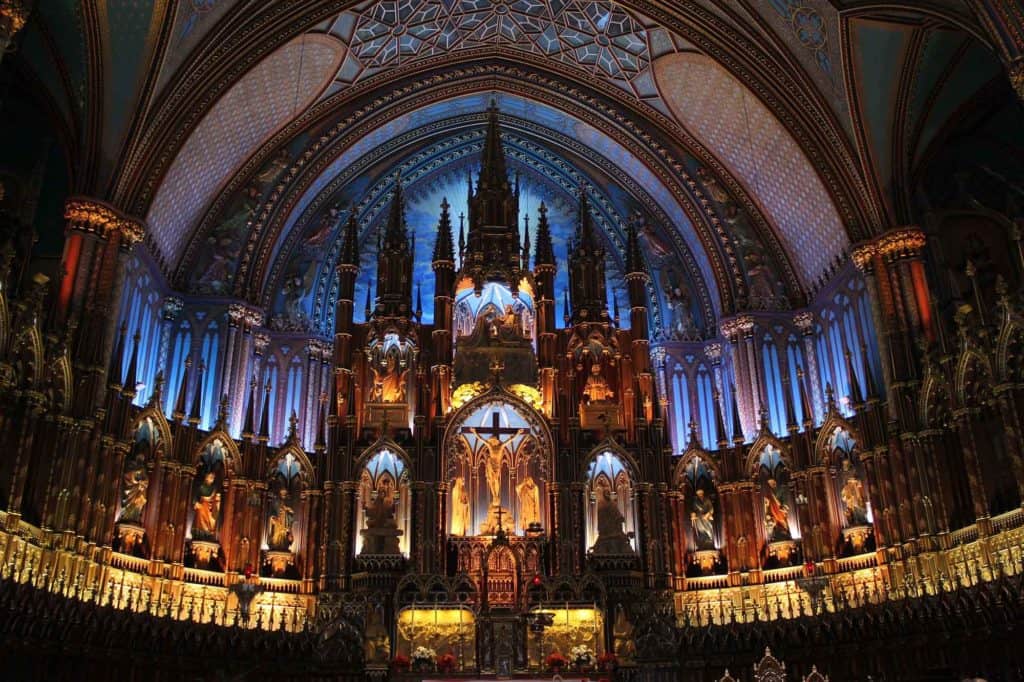
CANADA TRIP PLANNING
Best time to visit canada.
Since the country is so vast and diverse, there really isn’t a time of year unsuitable for travel to Canada.
Depending on what you want to do, you should pick the month of your trip accordingly.
Summer Travel (June – August)
The warmer summer months, such as July and August, are the most common times to visit Canada.
As in many countries in the northern hemisphere, summer in Canada is an ideal time of travel and adventure for many tourists. Expect to come across more tourists and higher prices during this time.
But don’t worry about the crowds and expense. Canada is beautiful during the summer!
It’s summer temperatures tend to not be as extreme as other summer destinations. Some parts of the country, particularly those further north and at higher elevations, will still see the snow melting well into June and July.
This is a great time to explore Canadian cities. But it is also the ideal time to visit any of the stunning national parks.
Winter Travel (December – February)
Winters in Canada can be very cold. But this is also a great time of year for winter activities, such as dog sledding , snowboarding/skiing and ice climbing.
But, keep in mind that some parts of the country deal with extremely uncomfortable temperatures.
For example, Winnipeg is Canada’s coldest city. Temperatures there can drop to -40°C at times!
Many of the places that are popular during the summer months are not as popular during the winter.
So if you would like to see parts of the country with fewer crowds than winter may be a great option for you.
Shoulder Season
The shoulder season in Canada is similar to other parts of the world. Spring and Fall tend to see less tourist traffic than the summer and winter months.
The months that are not very popular are April and November. They are often neither cold nor hot enough to enjoy certain activities.
However, the prices are much lower during this part of the year. So if you factor this into your planning, maybe this isn’t such a bad time to travel to Canada.
CANADA TRAVEL BUDGET GUIDELINE
Budgets for travelling in Canada can vary greatly. This depends on where you want to go, what you want to see and do, how you want to travel and the level of comfort you expect in your accommodations.
Canada is a highly developed country. As such many day-to-day expenses such as meals and accommodation can range in price greatly.
Here are a few ideas of what to expect in planning your budget to travel to Canada.
Budgeting Tips:
To make your money go further here are a few budgeting tips:
- Take public transportation or walk whenever you can.
- For longer trips, look for rideshare options on places like Craigs List and travel forums and groups.
- Buy food at local markets and cook your own meals as often as possible.
- Look for free events and festivals to attend in the cities you visit
- Consider couch surfing from time to time. And camping should be on your list of things to do anyway
- Look for last-minute deals on accommodation, travel and activities.
But there are a few things you should know about the different budgets at which you can choose to travel.
Note: Budgets shown as Single Traveller / Couples per day.
Budget Traveller ($40-75 Single / $100+ Couples)
If you are a budget traveller visiting Canada on your own you will have quite a challenge to keep yourself within budget.
The most affordable accommodation, besides Couchsurfing, are hostels and Airbnb. But not all places you’ll want to travel will have these options.
If you’re on a tight budget then you probably won’t eat at restaurants on a regular basis.
Your best options might be fast-food restaurants and buying your own groceries and cooking when that is an option.
Canada has open-air markets and lots of chain grocery stores where you can buy groceries at affordable prices.
When it comes to public transportation, the prices are different in each area. But they’re not exactly cheap anywhere.
Daily city transportation can cost around USD$10 and single tickets are around USD$3.
Additionally, you will need to budget separately for the various activities that you would like to do.
For example, ski passes in winter can be pricey. And daily entrance fees to national parks are reasonable but will add up.
Mid-Range Traveller ($125 Single / $175 Couple)
If you are travelling to Canada with a mid-range budget then you have some flexibility in your plans that you wouldn’t have on a tighter budget.
The biggest changes will be in accommodation and meals. You’ll be able to stay in moderately priced hotels and eat most of your meals in proper restaurants (even if it’s only fast food).
You might also choose to rent a car from time to time or to upgrade on tour options to do an activity that might otherwise not be in the backpacker budget.
Couples travelling at this budget will save considerable expense by staying in hotels and Airbnb options instead of hostels. Transportation costs could also be reduced for couples choosing to rent a vehicle.
Luxury Traveller ($350+ Single / $450+ Couple)
If you can afford to travel with a little more luxury you’ll find plenty of options to enjoy yourself in Canada.
Large cities, as well as certain vacation destinations, have top-notch hotels and resorts. And you’ll find great stays in boutique lodging all throughout Canada.
You will also be able to afford to eat at the best restaurants and indulge in local delicacies and staples across the country.
Aside from more luxurious meals and accommodations, there are tons of things you can do when travelling in Canada with a more substantial budget.
You will be able to rent a vehicle or hire transportation around town. When travelling across the country you will be able to save time by flying.
Additionally, your choice in activities will expand to more unique experiences. From riding the Rocky Mountaineer train to flights through glacial ice fields , there is no shortage of experiences well worth the higher costs.
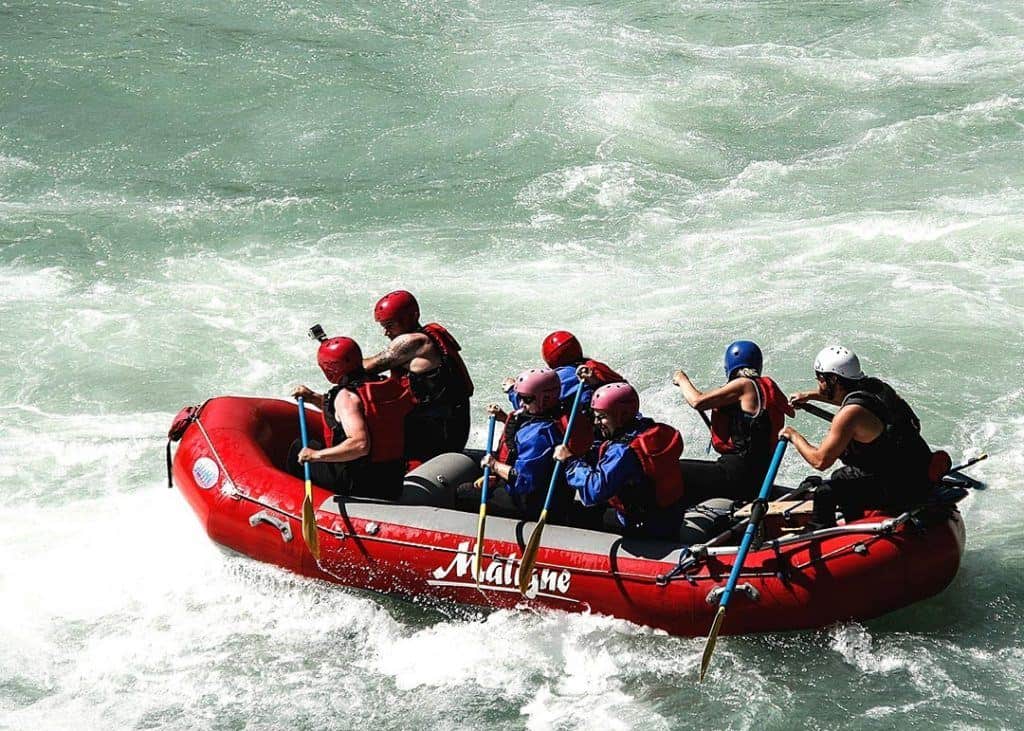
GETTING TO AND AROUND CANADA
Entry requirements.
Canada is relatively accessible for travel. Passport holders in 54 countries can visit Canada without obtaining a visa.
Canada will permit these travellers to stay in the country for up to six months.
Click here to see if your country is on that list. Others must obtain a temporary resident visa.
Travellers must also have an Electronic Travel Authorisation (eTA).
When applying for the eTA , visitors have to provide certain biographical details and passport information. Also, you’ll be asked about your employment information, available funds and your health and immigration history.
Getting to Canada
Since it is one of the most developed Western countries, there are multiple ways to travel to Canada.
The choice is yours depending on your needs and origins.
But you may want to consider comfort, prices, duration of trip and preferred method of travel as you plan how to get to Canada.
Canada has around 20 major international airports. This makes flying to Canada the quickest, most convenient way to enter the country.
The biggest and busiest airport is the Toronto Pearson International Airport. Direct flights to Toronto are available from a lot of cities across the world.
But you will also find international flights in and out of most major cities across the country.
Regardless of whether you put a lot of time into planning your trip or make a last-minute decision to visit Canada, there are almost always reasonable flight options available.
Sometimes it might also be cheaper to fly into the USA and then drive to Canada. So take that option into consideration.
Personal/Rental Vehicle
Many people travel to Canada as part of a North American exploration. Or you may find a better flight deal into a major US city like Boston, New York City, Chicago or Seattle.
As such you may find yourself driving to Canada from the United States.
In many places, it is very easy to pass between the Canadian/US border to visit nearby places in both countries.
Popular places include the Seattle/Vancouver area, Niagara Falls and Montreal/Vermont.
Roads between the US and Canada are generally in excellent condition. They are also marked well so navigation between the two should not be difficult.
Depending on your country of origin, time of stay and purpose for visit, passing through border security by vehicle is often less of a hassle than when arriving by plane.
If crossing into Canada from the United States, do check with your car rental company to make sure that you are able to do so without violating the terms of your agreement.
You will also want to make sure that the vehicle is insured in both countries.
If you’re going to travel to Canada from the United States, you can also travel by bus. Certain cities, like Seattle, Boston, Albany, Detroit or New York, have direct routes and inexpensive fares.
Some well-known bus companies that make trips between the US and Canada include Greyhound, Megabus and Quick Coach.
If you like to travel by train, then travelling to Canada from the US on a train is a great option. This combines relatively low costs, reasonable duration and incredible scenery.
In travelling from the US into Canada train you have two company options. VIA Rail Canada and Amtrak each have three routes that cross various borders between the US and Canada.
Further, all routes start and end in major cities so you can quickly orient yourself to other transportation options upon arrival.
Ferries can be a unique way to see parts of both Canada and the US that are not usually explored by most travellers.
At the moment, there are five ferries that travel to Canada from the United States.
Two depart from Maine and go to Yarmouth, Nova Scotia and Deer Island, New Brunswick (Bay Ferries Limited, East Coast Ferries).
Another two travel from Alaska to Port Hardy and Prince Rupert, both in British Columbia (Alaska Marine Highway System, BC Ferries).
Finally, you can get to Victoria, British Columbia from Seattle (Victoria Clipper).
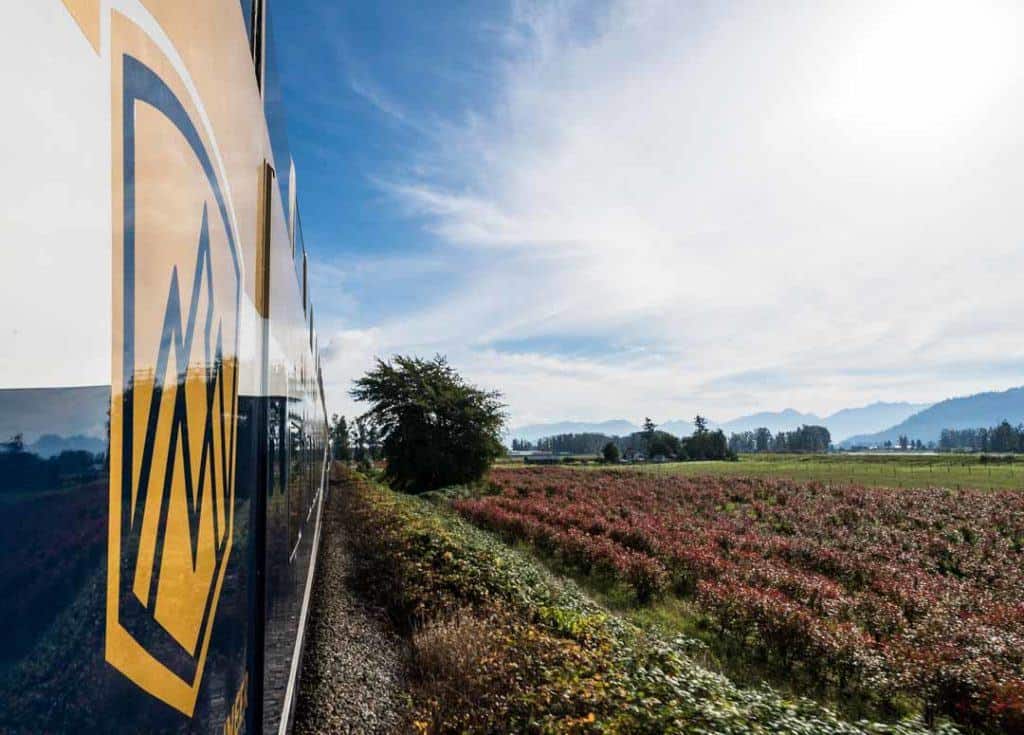
Getting Around Canada
It is pretty easy to get around when you are travelling in Canada. Expect to pay quite a bit more in Canada to travel between cities than in many less developed parts of the world.
And with higher costs, also expect longer durations in between destinations as distances in Canada can be great.
Travelling by Air
Travelling within Canada by air is the best way to cover ground quickly.
The county has many international and domestic airports. Sometimes, especially if you’re short on time, your best option is flying across the country.
In certain remote areas, there aren’t any other options besides air travel. When it comes to domestic flights, Air Canada has the best network of flights.
A few other companies include Air Creebec, Air St-Pierre, Pacific Coastal Airlines among others.
Travelling by Car
Rental cars are accessible and typically reasonably priced in more populated cities.
Much of Canada is best seen by rental car. There are many trips you can take to explore places considered off the beaten path for most.
Keep in mind that fuel prices can be high, particularly in less-trafficked regions of the country.
But a rental car would be a great way to explore the various cities in eastern Canada. It would also be the best way to get around the various national parks and other natural beauty in western Canada.
Travelling by Bus
In most cities, buses are the main form of public transportation. Toronto has the largest system, with around 140 bus lines.
Travelling by Taxi & Rideshare
Taxis are available everywhere in Canada. However, they are a very expensive way to travel.
You should ask the driver in advance what the price is going to be.
The prices are based on mileage and can’t be negotiated and are usually around USD$2 per kilometre.
In many of the larger cities you can also find rideshares such as Uber and Lyft.
These are often substantially more affordable than taxi. But note they are not always available outside of urban areas.
Travelling by Subway
Subway systems exist only in Toronto and Montréal. These systems cover the cities quite well. In Montréal, the subway network has 4 lines.
The daily tourist card costs USD$9 and a three-day pass costs USD$17. In Toronto, there are 3 subway lines available, and the daily pass costs USD$8.50.
In Vancouver they have the Skytrain network, which now connects the airport with downtown, making it very convenient to get around.
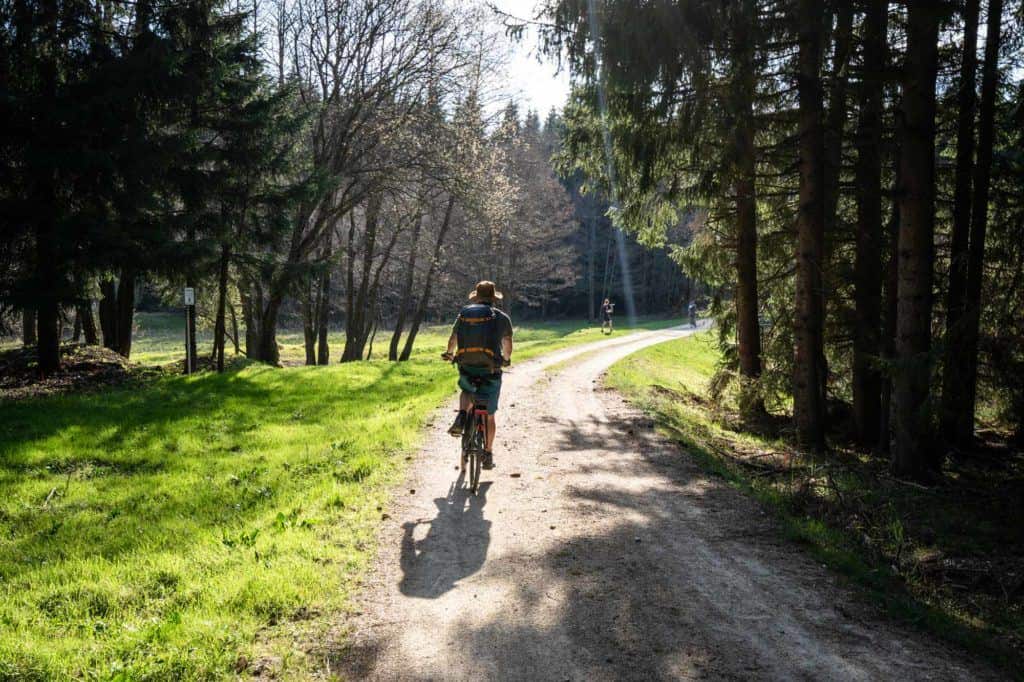
APPS AND TECHNOLOGY
Here are a few apps we think you should definitely acquaint yourself with prior to your travels:
- XE Currency – Transfer, monitor and calculate currency as the need arises. This app may not be totally necessary as you are typically tied into rates the banks charge for services. But it is handy to have around.
- Express VPN – This will protect your sensitive information wherever you travel – not just in Canada. Be sure to have this to keep your online information secure as you travel.
- iOverlander – iOverlander is any Canadian road trip enthusiast’s best friend. Find every resource you need on the road – from free or cheap campgrounds to places to eat or refill RV supplies if travelling by campervan or RV.
- Gas Buddy – This app will help you find the most up-to-date fuel locations and prices when driving nearly anywhere in Canada. This is especially important to have when covering large distances or across remote parts of Canada.
BEST THINGS TO EAT IN CANADA
Some Canadian specialities are worldwide famous. While some require some research to discover!
Here are some of the most popular dishes in Canada:
- Poutine : Probably the most well-known Canadian staple consisting of french fries and cheese curds topped with light-brown gravy
- Lobster Rolls : a sandwich made with lobster meat, lemon, and seasoning best served fresh in Nova Scotia or New Brunswick
- Butter Tarts : crumbly crust filled with a butter, sugar and egg cream
- Nanaimo Bars : a sweet, crispy and crunchy dessert bar with layers of chocolate and custard
- Montreal Smoked Meat : Delicious pastrami or brisket smoked and seasoned in a way particular Montreal
- Bannock : delicious native bread either baked or fried and similar to nan. Bannock is served in a variety of ways and included in almost every meal.
- Yellow Split Pea Soup : soup made with dried peas, veggies and salt pork
- Montreal Bagels : smaller and denser than its famous NY bagel, but usually with the typical everything seasoning
- All-dressed Potato Chips : a name given to some of the fanciest and most interesting flavours you can imagine for potato chips
- Maple Syrup : The maple leaf is iconic of Canada and the syrup from the maple tree is just as famous and delicious and well worth a try as often as possible
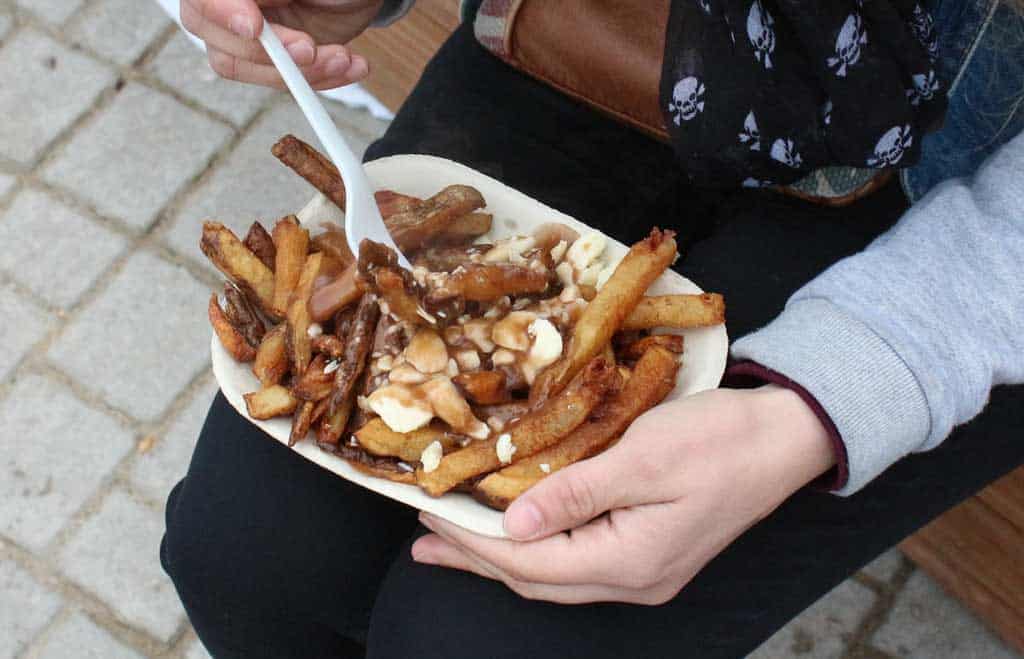
PLACES TO STAY IN CANADA
Canada is not exactly known for cheap accommodation. A highly developed country, rates can be relatively similar to those in Europe and the United States.
However, the prices vary and with advanced planning, you should be able to find a reasonably priced room.
Types of Accommodations
There are over 100 hostels spread out through dozens of cities across Canada. Staying in hostels is not only accepted, it is expected among budget travellers.
You can expect prices and amenities to be comparable to those in Europe. But remember many of the smaller towns and villages will not have hostels as an option.
Canada offers an abundance of hotels. These are typically the best option for travelers in a mid-range budget and are available in most cities and small towns and villages across the country.
Of course, prices range by location and amenities. And if you are travelling during the busier summer season be sure to book in advance.
Another good option for budget accommodation in Canada is Airbnb. In recent years Airbnb has been growing and there are more and more amazing places popping up in Canada to stay for very affordable prices every day.
As is typical in many destinations where Airbnb accommodations are available, you’ll likely find great value and a little more personal space with an Airbnb stay.
CANADA TRAVEL TIPS
Travel to Canada is more or less the same as travel to any country. But there are some subtle tips and tricks that will help make your visit safe, pleasant and more affordable.
GENERAL CANADA TRAVEL TIPS
While there are many basic travel tips we suggest you use when travelling to Canada, there are also plenty of Canada-specific tips that will make your visit the best it can be.
Here are a few we recommend you consider as you plan your trip to visit Canada:
- Pack (and dress) according to the weather. Depending on where and when you travel to Canada the weather can catch you off guard. From extreme heat to mind-boggling cold and everything in between, be sure to pack and wear what will keep you comfortable and safe.
- Have travel insurance. Canada has a fantastic health care system. But having travel insurance is always the best way to protect yourself financially from any mishaps on the road. Not sure you need it? Read this post .
- Be aware (and warned) of wildlife. Bear and moose look cute in pictures and videos. But they can be deadly in person. Canada abounds in wildlife so be mindful when you are out exploring.
- Know the emergency number. 911 is the same call for help in Canada as it is in the US. In some areas, 311 is also helpful for non-emergency situations.
- Tax and tipping are not included in meal prices. Know that tax will be added at the end of the meal and, while not required, tipping is customary at the 15-20% level.
- Pick up a little French. Depending on where you travel, it might be necessary. But you’ll find French is almost everywhere on signs and sometimes it will help to make local friends who can assist you in making the most of your trip to Canada.
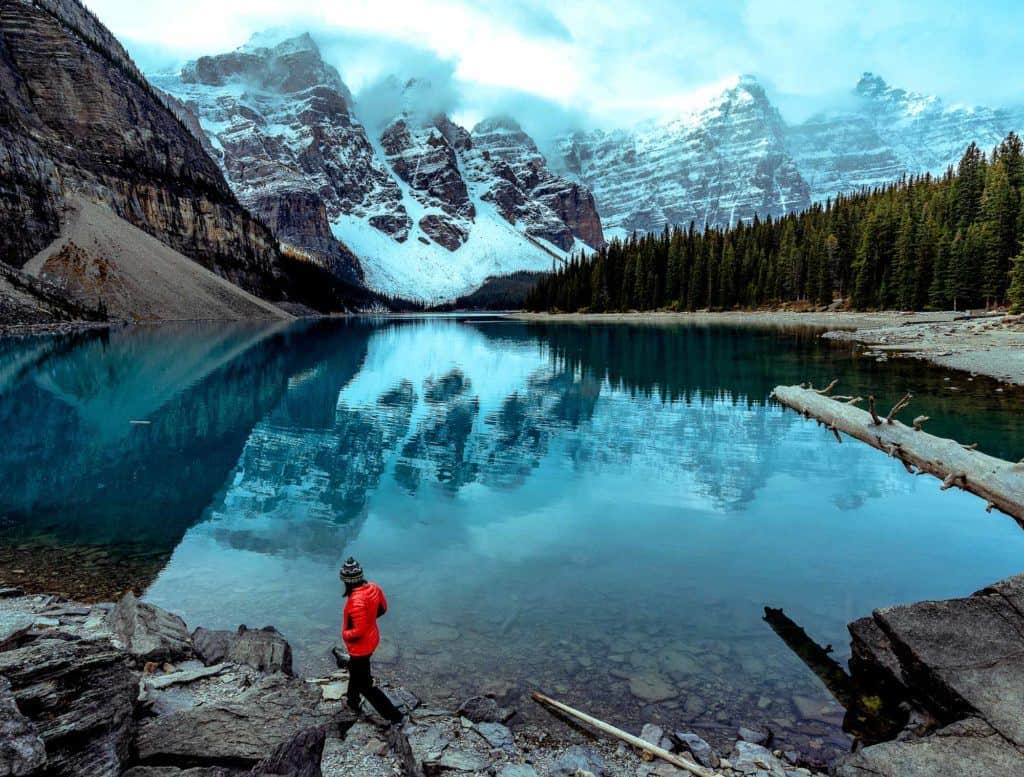
CANADA PACKING LIST
We always travel with a core packing list wherever we go. And when it comes to Canada, many factors will affect what else you need to bring along with you.
Check out our travel essentials and be sure to add any of the other additional items listed below.
Important Note! Before you book any international trip, we honestly recommend getting travel insurance. You never know when things will go wrong, and medical bills can add up quickly if you get sick or injure yourself overseas.
Our personal recommendation based on our own experience is World Nomads.
STAYING SAFE IN CANADA
Canada is a very safe country to visit. It has a very low crime rate and Canadian people are known for their hospitality and seem to always be willing to help someone in need.
Violent crime is basically non-existent in popular tourist spots.
Just like anywhere else in the world, there are some areas in big cities should be avoided. Ask the locals about those neighbourhoods so you can enjoy your trip in peace.
Also, take care of your personal belongings, since tourists are often victims of petty thefts.
Canada is also one of the safest countries for female travellers.
You shouldn’t have any problems if you’re travelling solo. Just keep in mind the same general safety tips you would use anywhere else in the world.
If you’re visiting the Canadian wilderness, watch out for the wild animals.
Every year tourists are attacked by bears, moose and bison. But this is usually due to not respecting the space of the animals and approaching too close to them.
Please mind the wildlife when you see it!
Your best option is to explore and area with someone familiar with it. But if that’s not possible, just be careful and study your maps, have bear spray, whistles and bells and know any regional laws or warnings when it comes to wildlife.
Check out our best travel tips to help you navigate around safely.
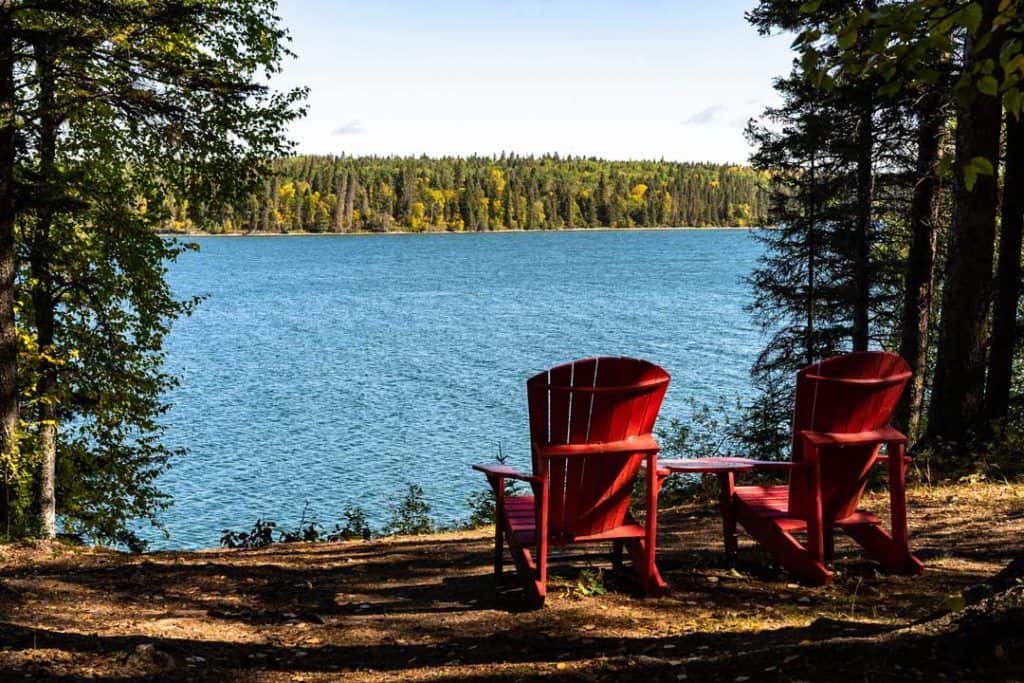
STAYING CONNECTED IN CANADA
Canada is a developed nation and staying connected while travelling in Canada is not very difficult. Of course, there are more remote places you can travel where cellular service will be limited.
And if you drive across the country you’ll experience long stretches of highway where you may have hit-or-miss cellular service.
In general, you can expect to connect to WiFi in a few ways for little to no cost. But we feel like your money will go a lot further if you consider a few other options.
Purchase a SIM Card
Purchasing a SIM card is one of the best ways to access local wireless networks in most countries.
In Canada, you can purchase a SIM card in any of the country’s 3 major carrier stores and at convenience stores and kiosks in major cities. Apply funds for prepaid service and purchase data as you need.
Then throw up a hot spot from your mobile device if you’d like to get online with your computer or tablet.
Rent a Portable WiFi Device
Portable WiFi devices are also readily available across Canada. Roam Mobile, WiFi Cube and MyWebspot Mi-Fi are just a few of the handful of options to look into if you don’t have a qualifying portable WiFi device of your own.
Access Free WiFI
Of course, the easiest and cheapest option to stay connected in Canada is to access free WiFi at a variety of places across the country.
Most hotels, hostels and Airbnb accommodations offer free WiFi.
And if you are out and about you can expect fast food and coffee restaurants such as Tim Hortons, McDonald’s and Starbucks to provide free WiFi as well.
BE A RESPONSIBLE TRAVELER IN CANADA
As is the case whenever you choose to visit and interact with people and places in a foreign land, Canada offers you the opportunity to be responsible in your journey.
Here are a few things to consider as you plan to travel to Canada:
- Leave the natural environment better than you found it. Pretty standard stuff here: pack out your trash, stick to the trails, pick up after yourself.
- Leave wild animals alone. Canada is full of wildlife encounters sure to change your life. But don’t touch, feed or otherwise harass wildlife.
- Be your own transportation as often as possible. Adding a bit of walking or biking to your travel plans reduces the impact of taking vehicles that contribute negatively to the environment.
- Support locals as often as possible. Sure the bigger cities will be full of big brands and mega shopping centres. But as you wander into more remote parts of the Great White North be sure to support smaller, independent businesses as often as possible – including merchants and tour operators.
BOOKS TO READ ABOUT CANADA
Maybe you already know everything about Canada. Chances are you don’t!
But even if you are well-read, here are a few suggestions that might be worth your time while you’re on the plane to Canada.
Canada (Mike Meyers) – Yes, Mike Meyers the comedian and actor has written a book that shows his take on his homeland from his hilarious, if not entirely quirky, perspective.
Alone Against the North (Adam Shoalt) – In a wild adventure that crowned him the “Canada’s Indiana Jones,” Shoalt embarks to explore the Again River in a way that shows that there are still parts of the world unexplored.
Why I Hate Canadians (Will Ferguson) – A humorous, satirical account of Canadian culture and history that sets out to show that opinions on Canada are best expressed through personal experience.
An Inconvenient Indian (Thomas King) – A serious, albeit darkly humorous, look at the Native American – White relationship that has taken place in Canada and throughout North America in search for ways for the collective culture to move forward in meaningful ways.
Read Our Canada Posts
The perfect banff itinerary you can’t miss (2024 guide), 25 awesome things to do in banff, canada, the ultimate guide to yoho national park in canada, the golden circle route – an epic yukon road trip itinerary, 17 awesome things to do in dawson city, yukon, the perfect 3 days in vancouver itinerary (2024 guide), 7 awesome day trips from montreal (2024 guide), the perfect 3 days in montreal itinerary, the 10 best day trips from toronto, 21 awesome things to do in toronto, canada [2024 guide], 11 fun things to do in hamilton, ontario, the 20 best things to do in calgary (2024 guide).
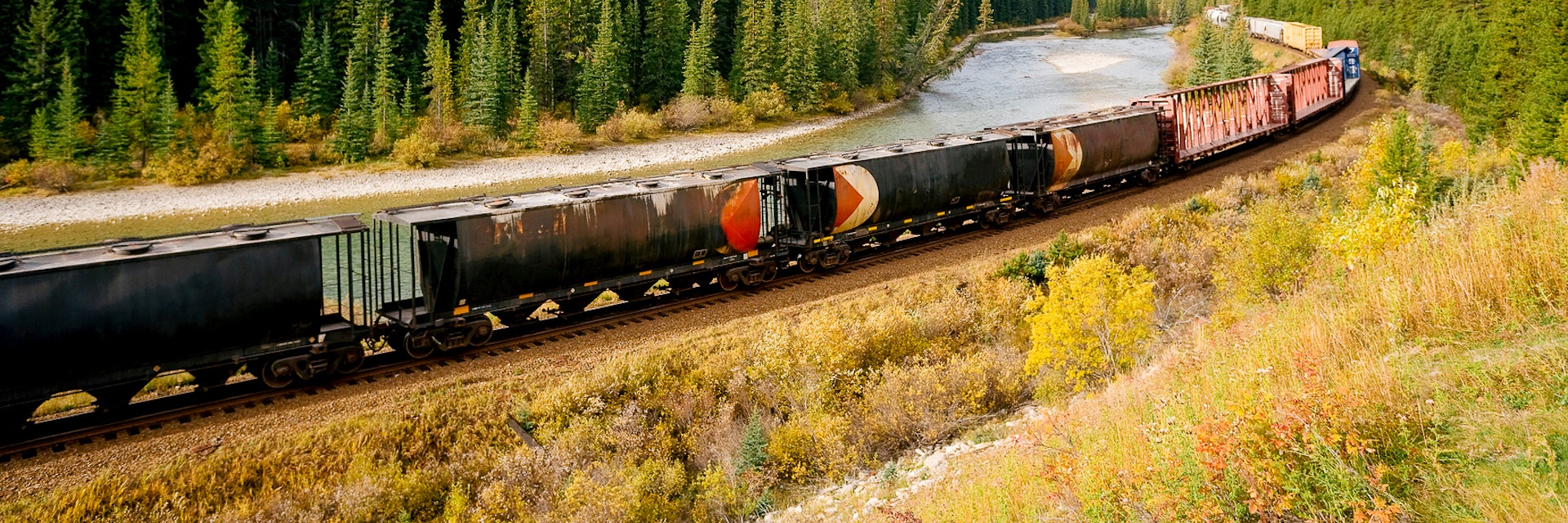
Gavin Hellier / Stocksy United

Canada is more than its hulking-mountain, craggy-coast good looks: it also cooks extraordinary meals, rocks cool culture, and unfurls wild, moose-spotting road trips.
Best Time to Visit
Best places to visit, leave the planning to a local expert.
Experience the real Canada. Let a local expert handle the planning for you.
Attractions
Must-see attractions.
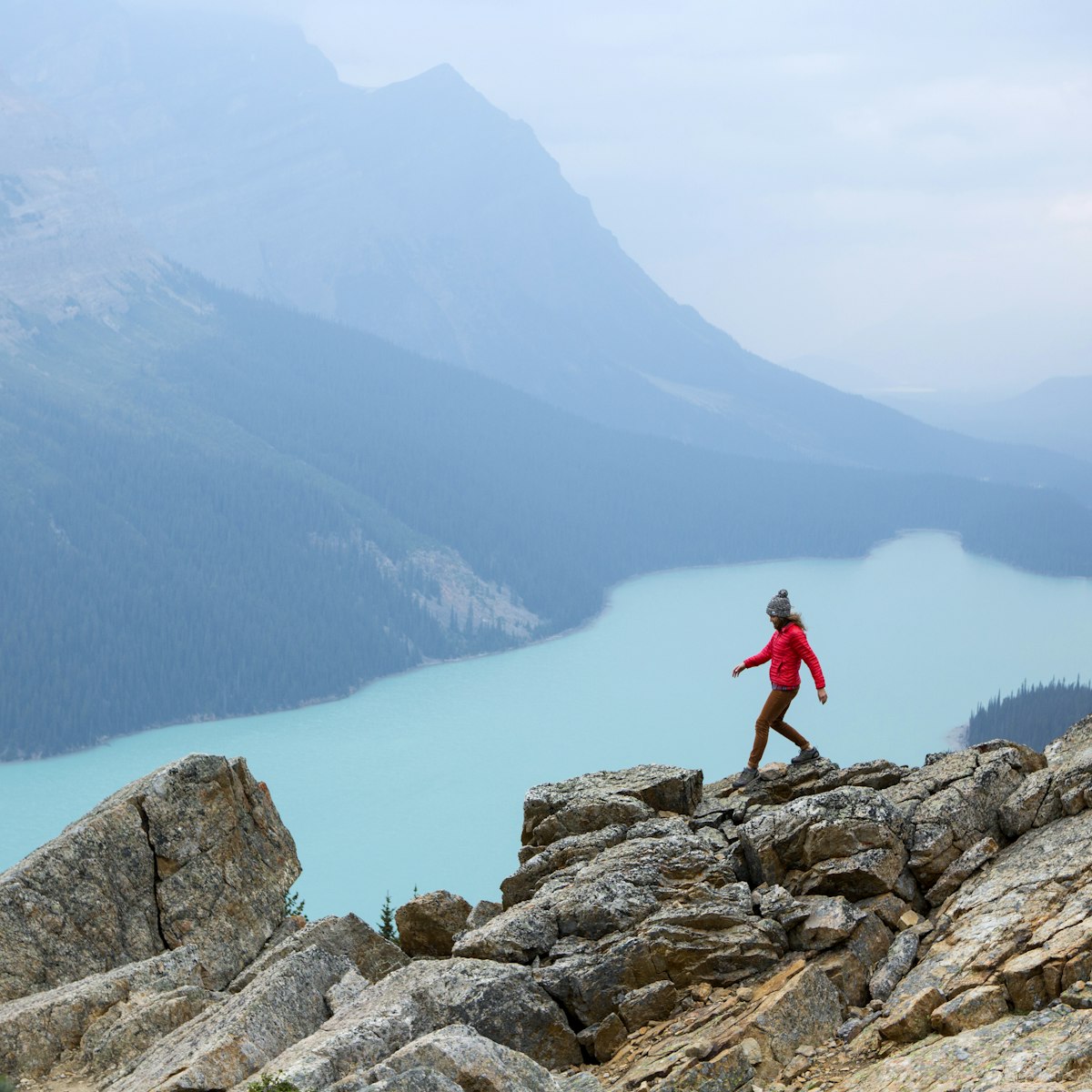
Banff National Park
Banff & Jasper National Parks
Of all Canada’s top sights, Banff National Park justifiably ranks as many people’s number one. As much a piece of history as a natural wonder, Canada’s…
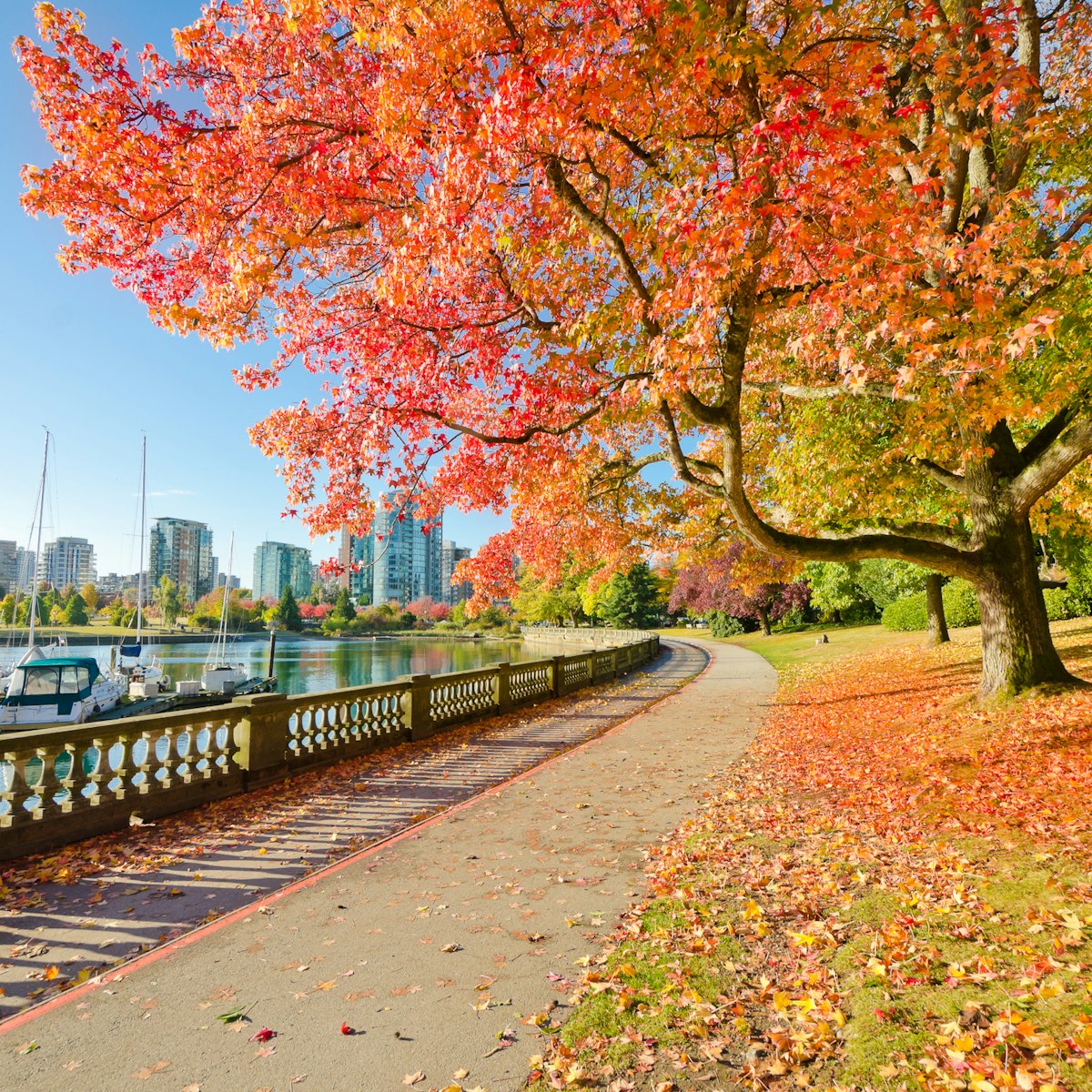
Stanley Park
One of North America’s largest urban green spaces, Stanley Park is revered for its dramatic forest-and-mountain oceanfront views. But there’s more to this…

Jasper National Park
Jasper Town & Around
Jasper is a rugged beauty; it's more raw and less tourist-pampering than its southern cousin Banff, and hence host to a more ambitious, adventurous…
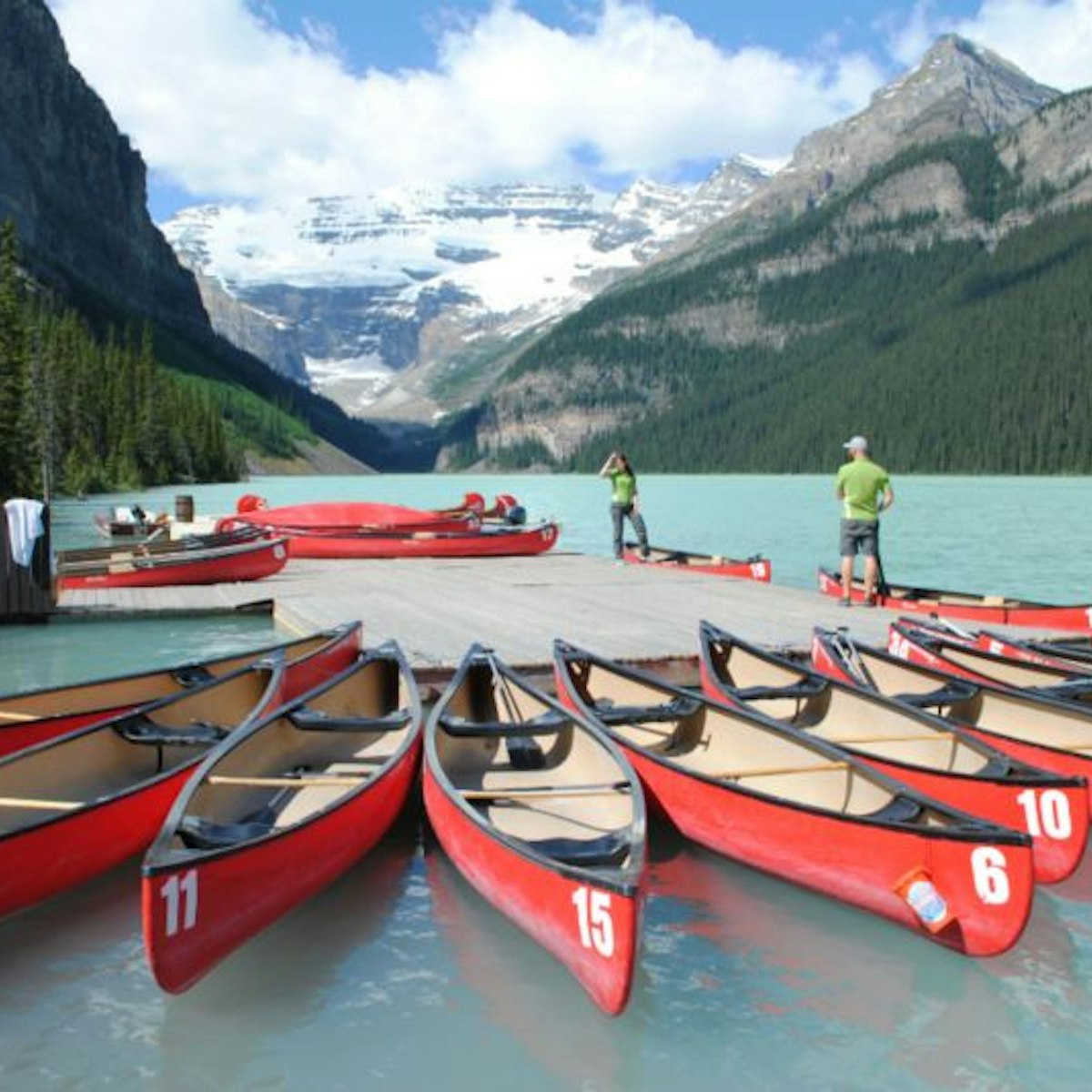
Lake Louise
Considered by many to be the crown jewel of Banff National Park, Lake Louise is nearly impossible to describe without resorting to clichés. This…
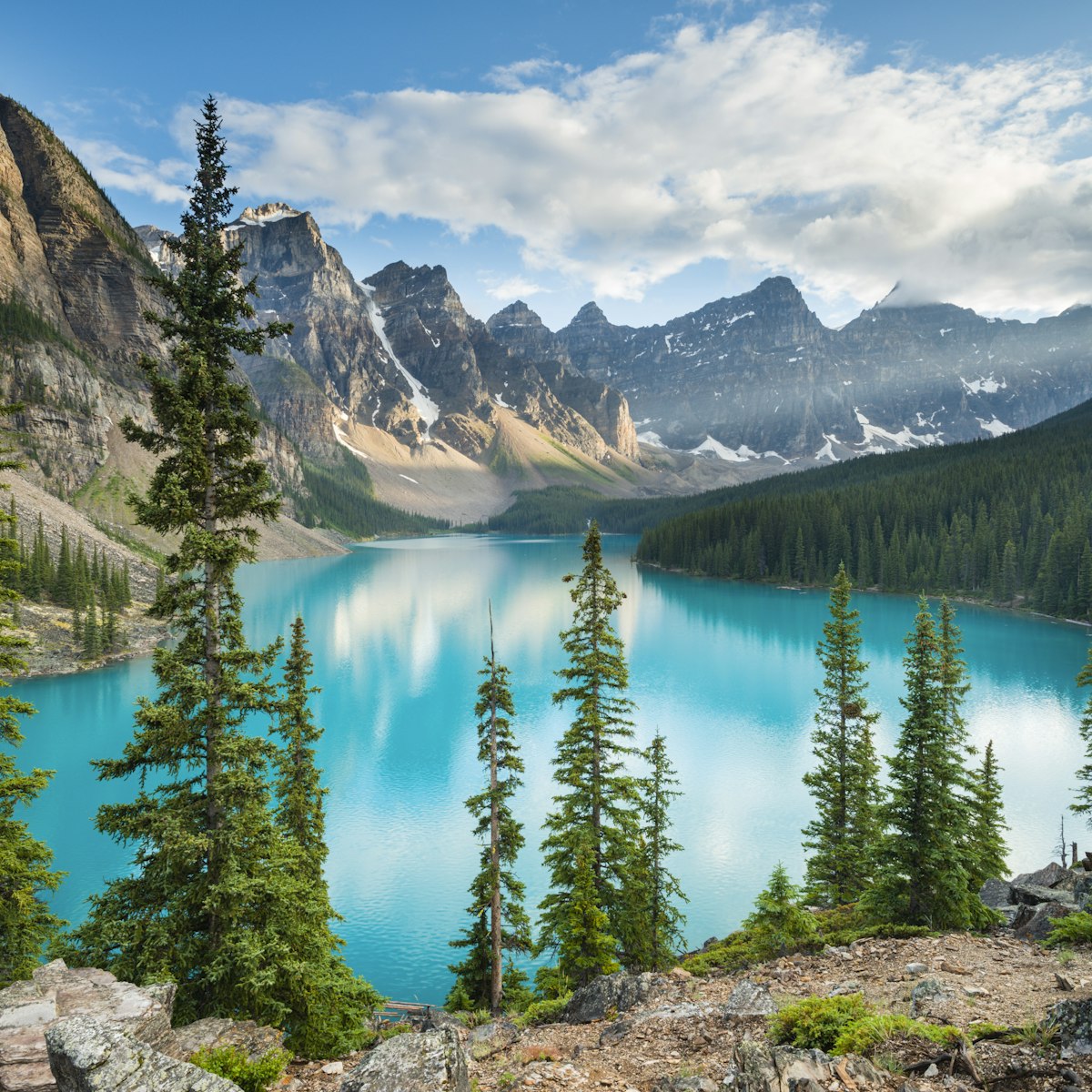
Moraine Lake
The spectacular, deep teal waters of Moraine Lake are one of Banff National Park’s most iconic sights. The lake’s rugged and remote setting…

Encompassing 11,228 sq km of Rocky Mountains wilderness, including jagged peaks, vast forests, glacial lakes and the magnificent Columbia Icefield, Jasper…
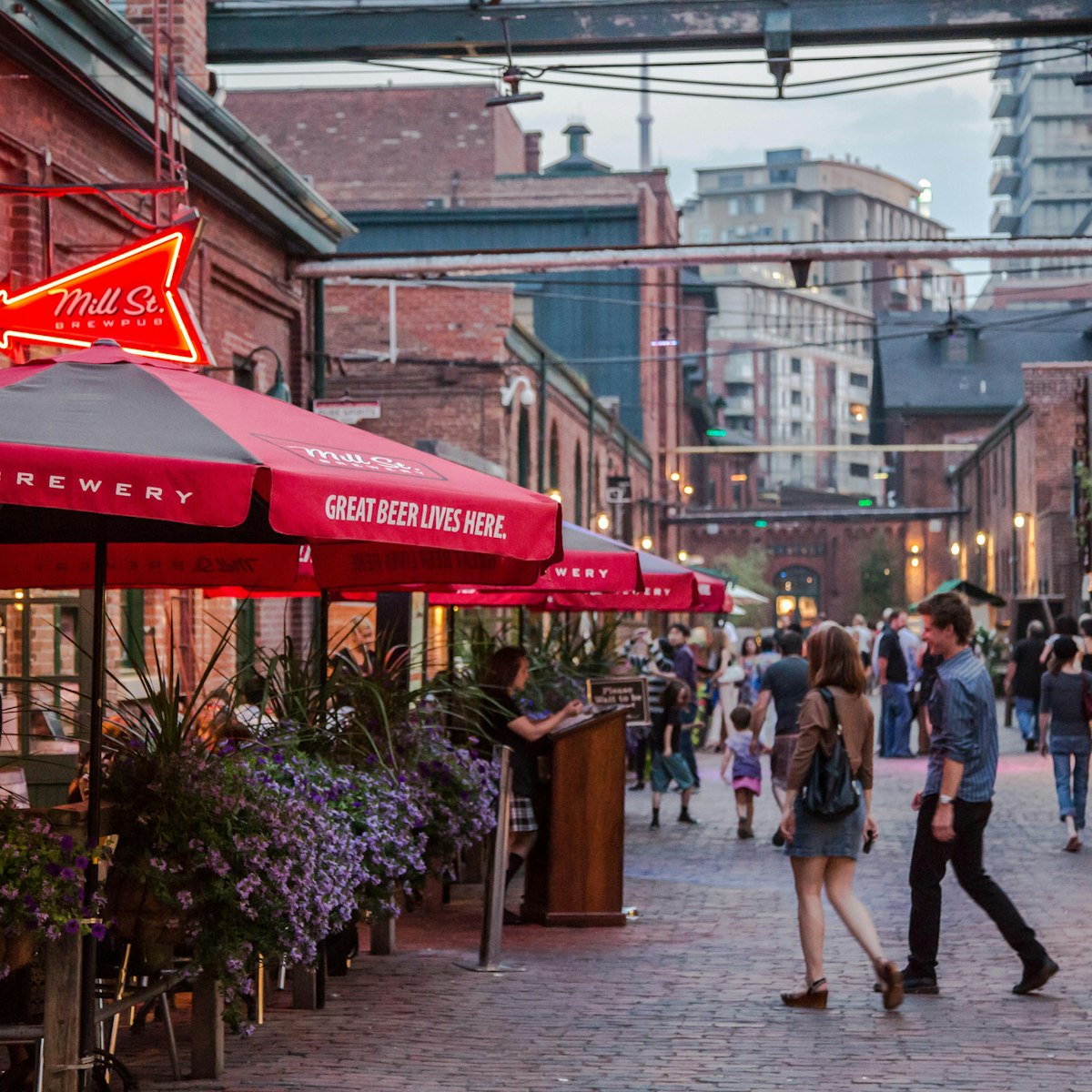
Distillery District
Old Town, Corktown & Distillery District
Centered on the 1832 Gooderham and Worts distillery – once the largest distillery in the British Empire – the 5-hectare Distillery District is one of…
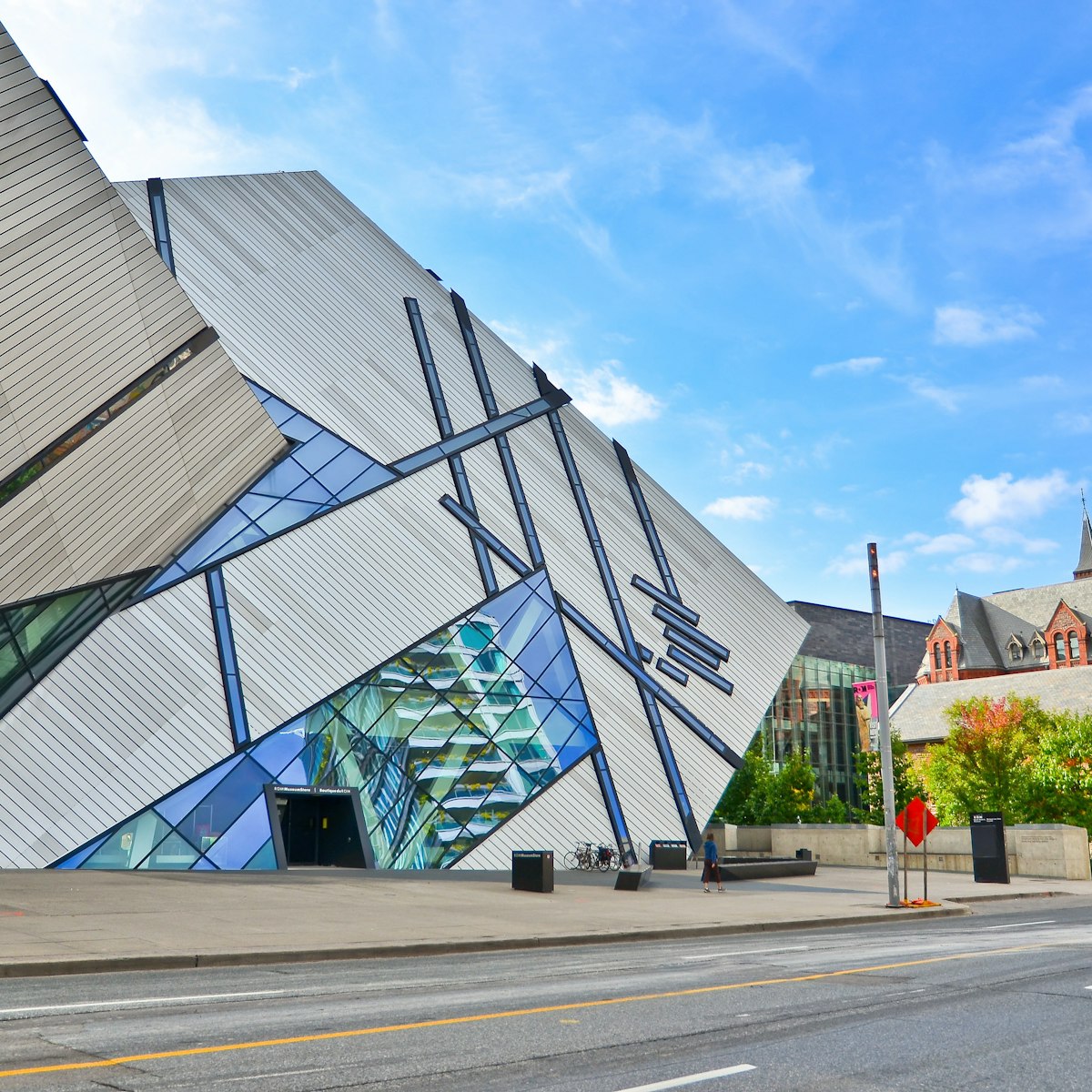
Royal Ontario Museum
Opened in 1914, the multidisciplinary ROM is Canada's biggest natural-history museum and one of the largest museums in North America. You'll either love…
Top picks from our travel experts
The best things to do in canada: be inspired by these 21 epic experiences.

Kitsilano Beach
Facing English Bay, Kits Beach is one of Vancouver's favorite summertime hangouts. The wide, sandy expanse attracts buff Frisbee tossers and giggling…
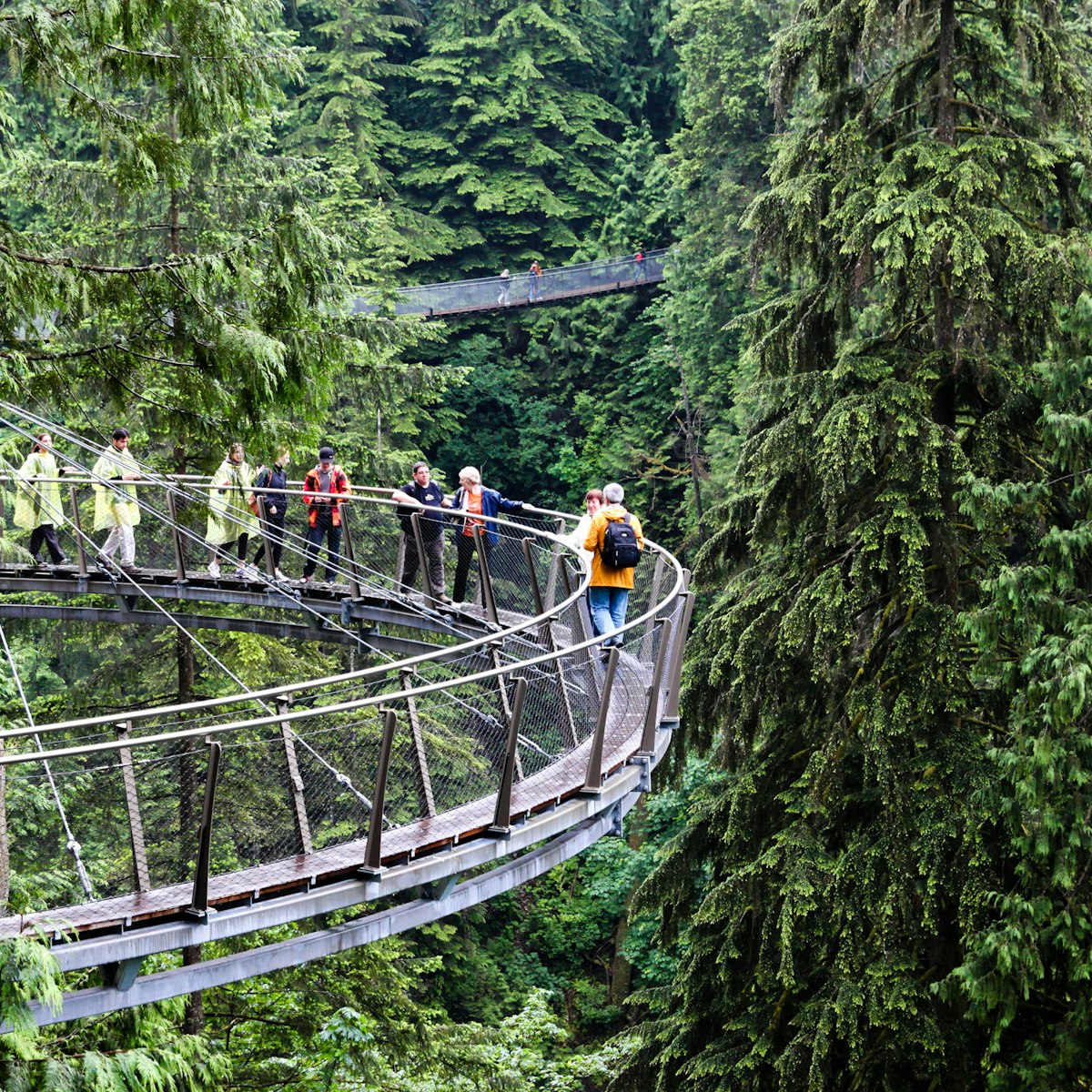
Capilano Suspension Bridge Park
North Shore
As you inch gingerly across one of the world's longest (140m) and highest (70m) pedestrian suspension bridges, swaying gently over roiling Capilano Canyon…

Niagara Fallsview Casino
Niagara Falls
Open 24/7, this mammoth building across from the Skylon is itself worth a look – an amazing complex of commerce and crapshoots, with a fantastical foaming…
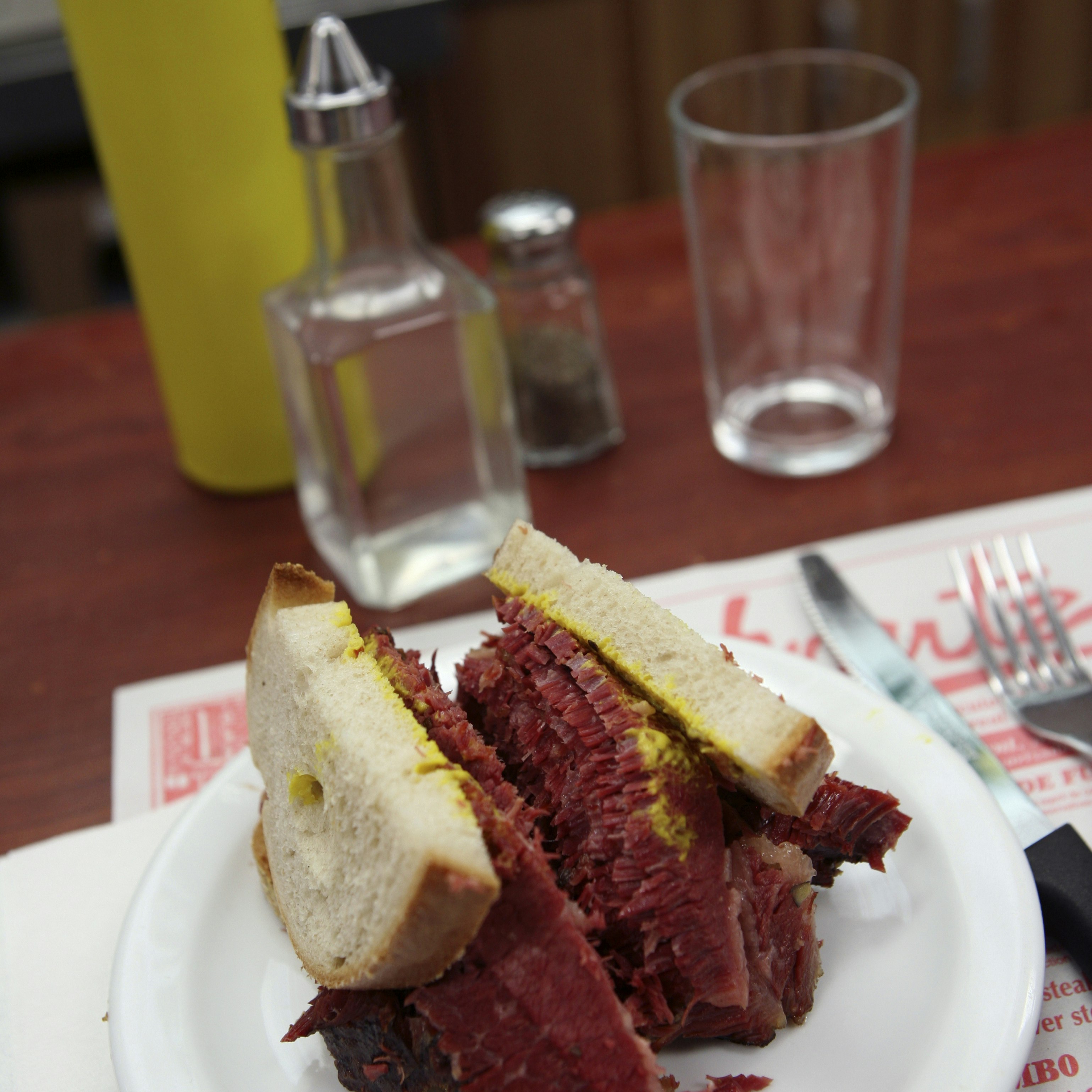
Schwartz's
Reuben Schwartz, a Romanian Jew, opened this Montréal icon in 1928, and it’s been going strong ever since. Schwartz’s meat goes through a 14-day regime of…
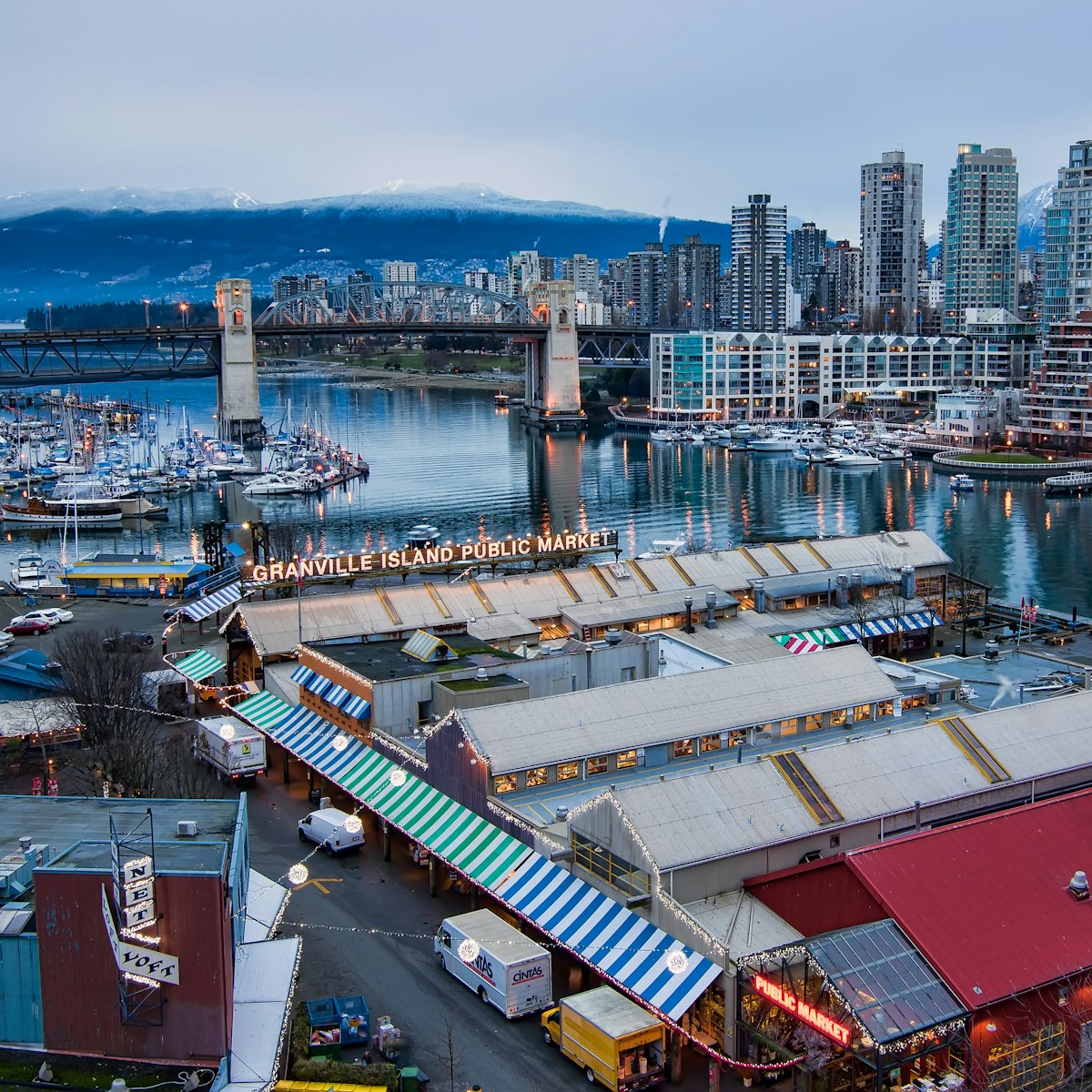
Granville Island Public Market
Granville Island's highlight is the covered Public Market, a multisensory smorgasbord of fish, cheese, fruit, teas and bakery treats (near-legendary Lee's…
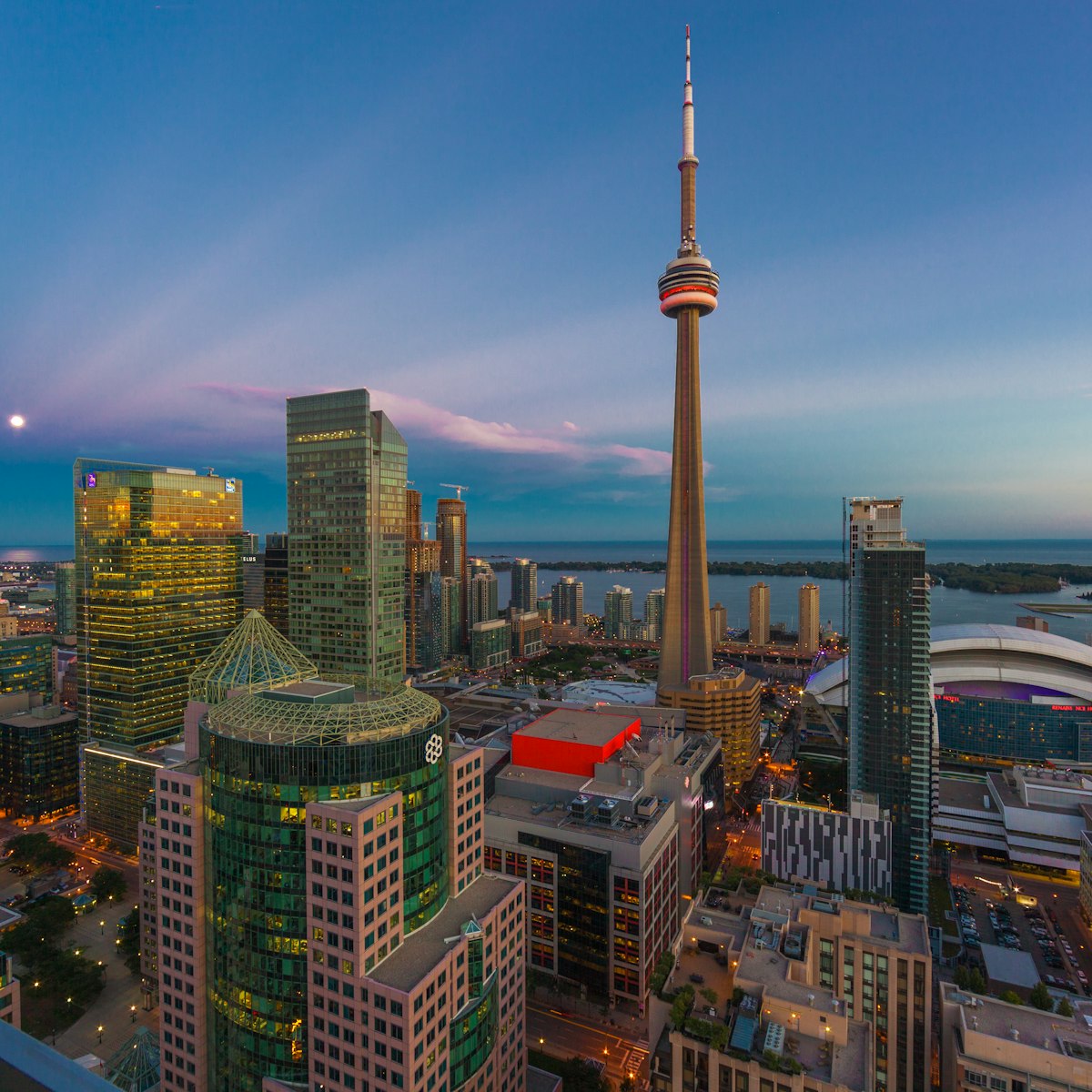
Entertainment & Financial Districts
Dominating Toronto's skyline, the CN Tower is a marvel. At a height of 553 metres, the communications spire stands over the city like a beacon. Queues can…

Lynn Canyon Park
Amid a dense bristling of century-old trees, the main lure of this popular park is its Suspension Bridge, a free alternative to Capilano. Not quite as big…

Drake Devonshire Inn
Eastern Ontario
From the folks behind Toronto's legendary Drake Hotel comes the Drake Devonshire, a historic foundry-turned-inn converted to a swooningly stylish and…
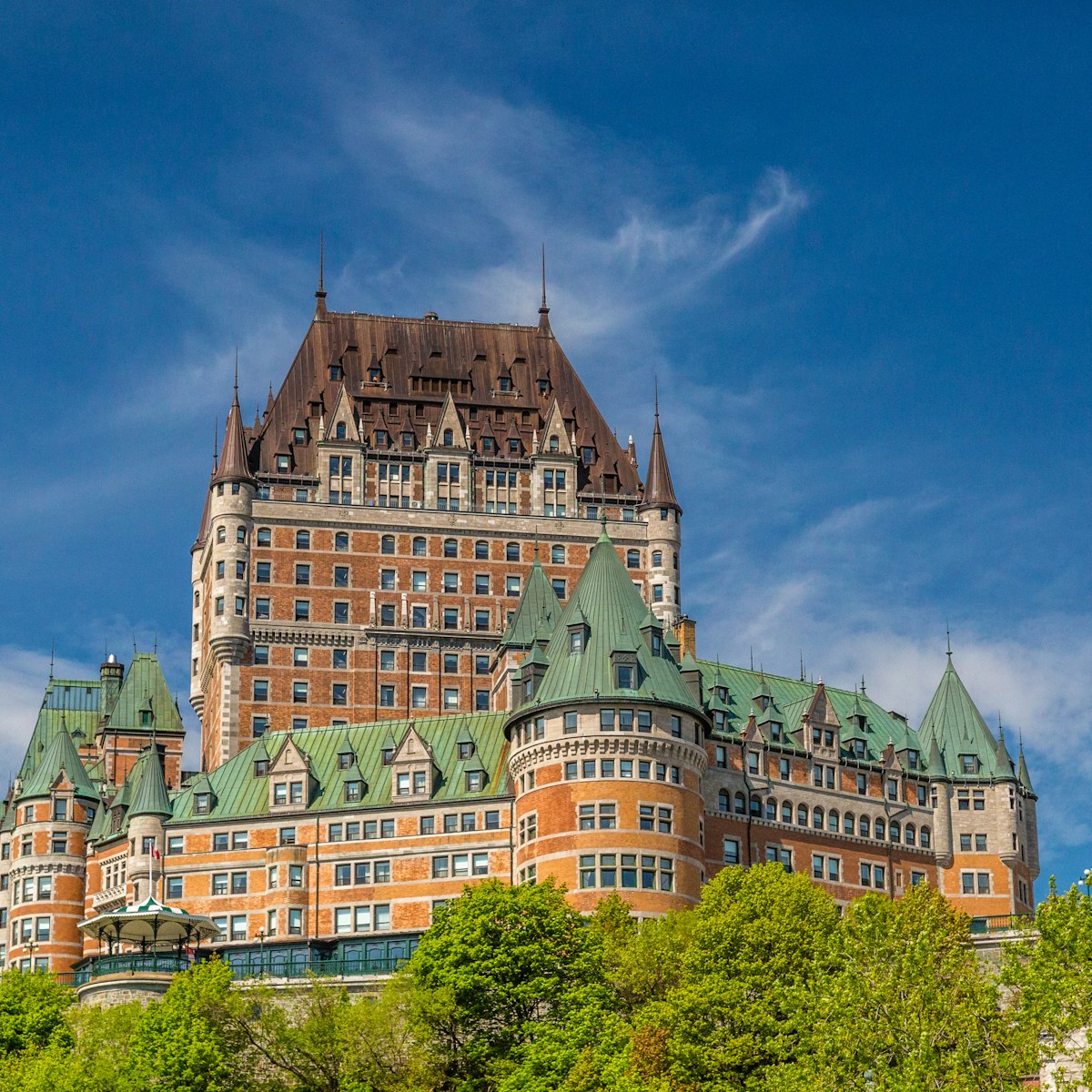
Le Château Frontenac
Québec City
Reputedly the world's most photographed hotel, this audaciously elegant structure was opened in 1893 by the Canadian Pacific Railway as part of its chain…

Dinosaur Provincial Park
Southern Alberta
In no other place on earth has such a large number of dinosaur bones been found in such a small area – over 40 species and 400 skeletons. Set where The…

Cape Breton Highlands National Park
Cape Breton Island
One of Atlantic Canada's most famous and spectacular national parks, Cape Breton Highlands occupies 20% of the Cape Breton Island landmass. It's…
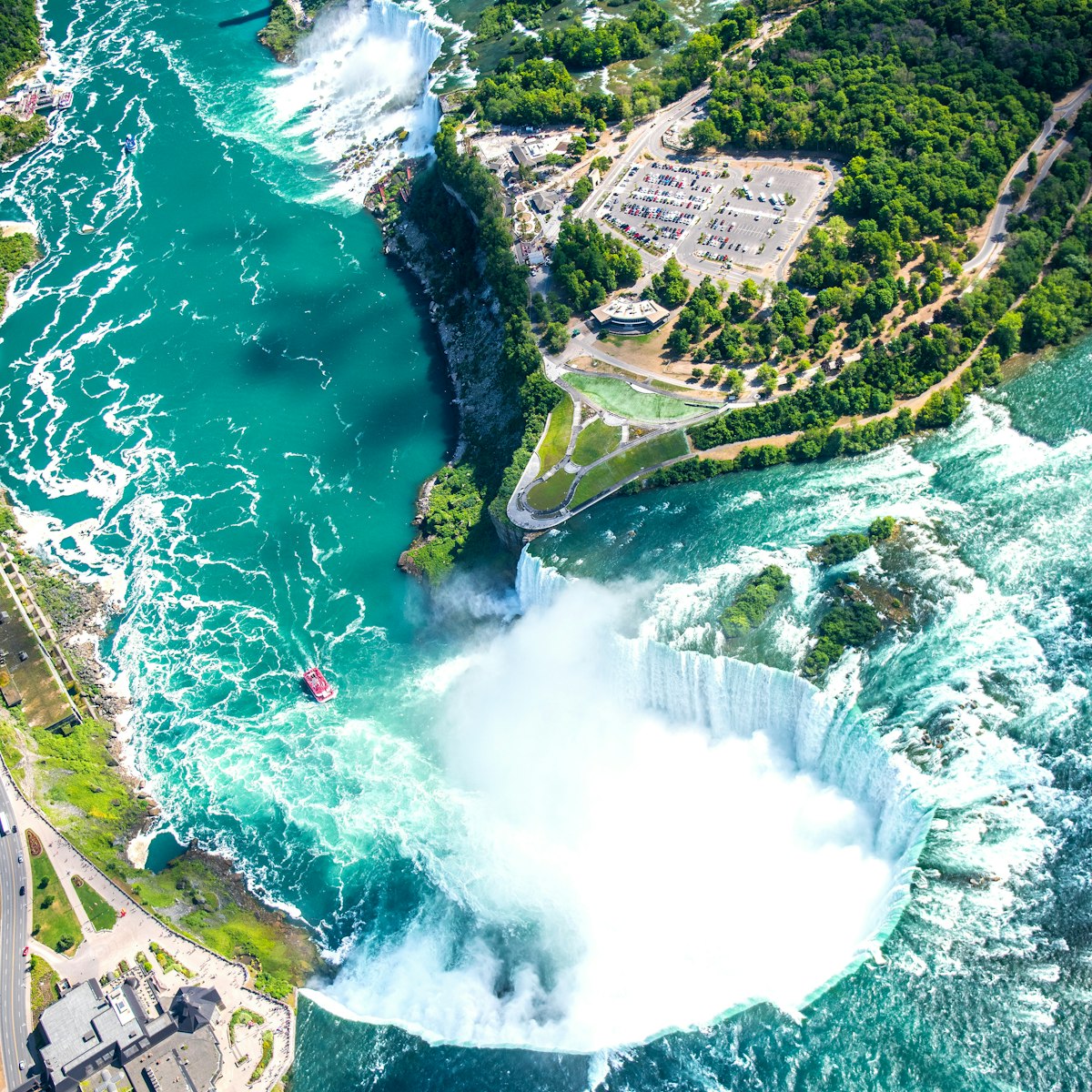
Horseshoe Falls
The centerpiece of any visit here are the Horseshoe Falls. Named after their 670m curved shape, they have the highest flow rate of any waterfall in North…
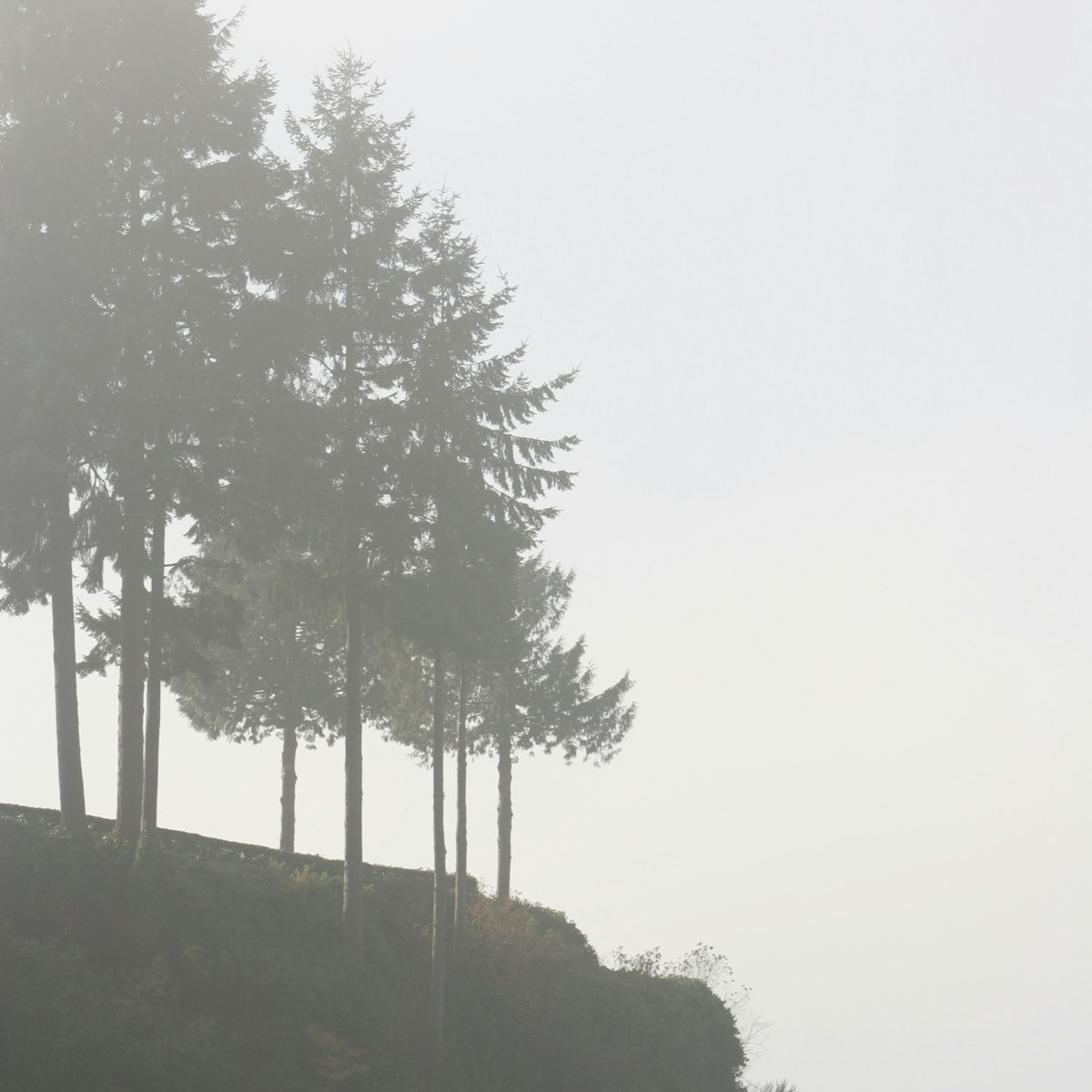
Stanley Park Seawall
Built between 1917 and 1980, the 8.8km seawall trail is Vancouver's favorite outdoor hangout. Encircling the whole of Stanley Park, it offers spectacular…
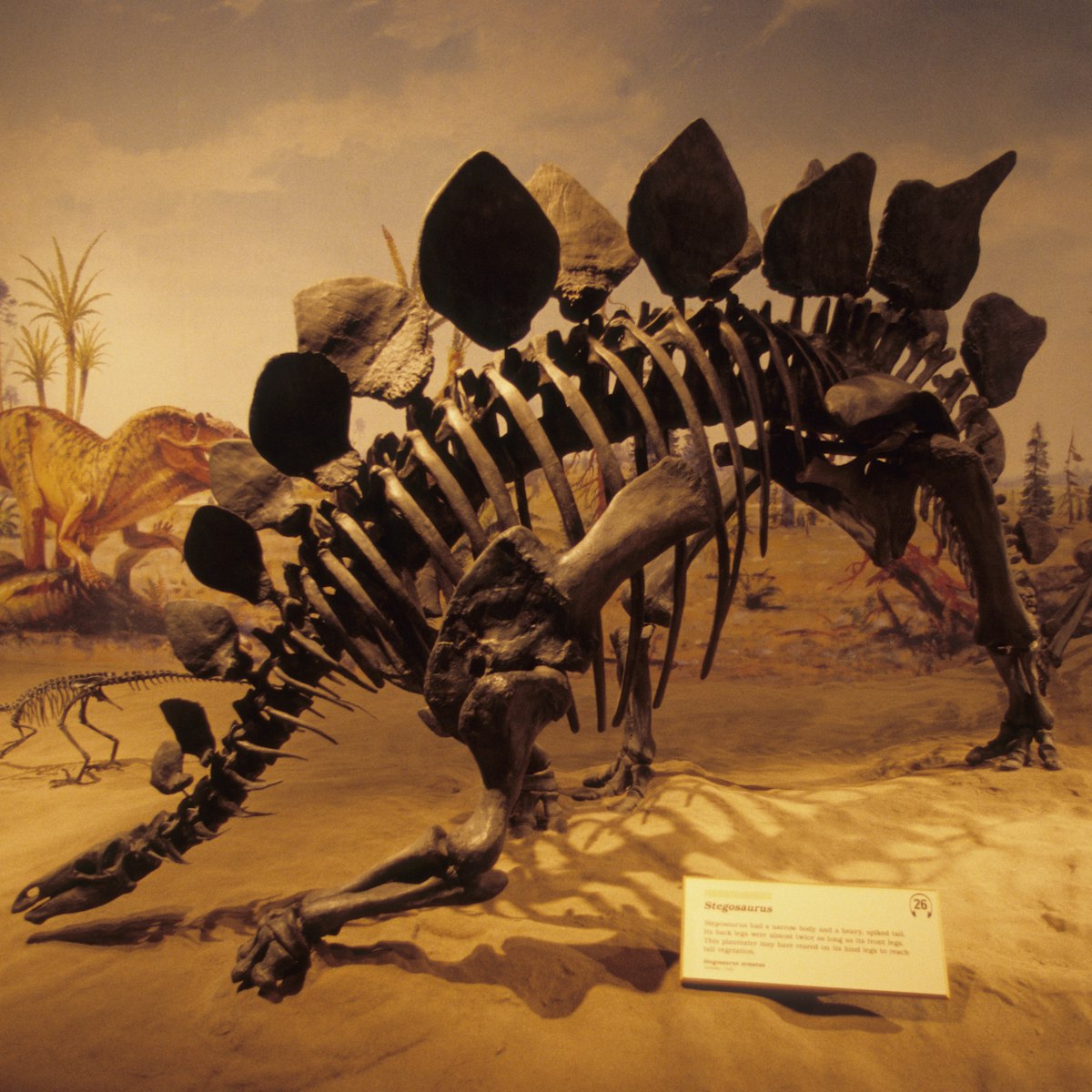
Royal Tyrrell Museum of Palaeontology
This fantastic museum is one of the pre-eminent dinosaur museums on the planet, made even better by a $5.9 million expansion project completed in 2019…

Jericho Beach
An activity-lover's idyll, Jericho is great if you just want to putter along the beach, clamber over driftwood and catch stunning views of downtown. It's…

Fairmont Banff Springs
Looming up beside the Bow River, the Banff Springs is a local landmark in more ways than one. Originally built in 1888, and remodeled in 1928 to resemble…

Coal Harbour Seawall
An idyllic 2km waterfront stroll from Canada Place to Stanley Park, this is a perfect way to spend a sunny afternoon. En route you'll pass the landmark…

Rideau Canal
In 2007, this National Historic Site became Canada's 14th location to be named a World Heritage site, and it remains one of the country's eight cultural…
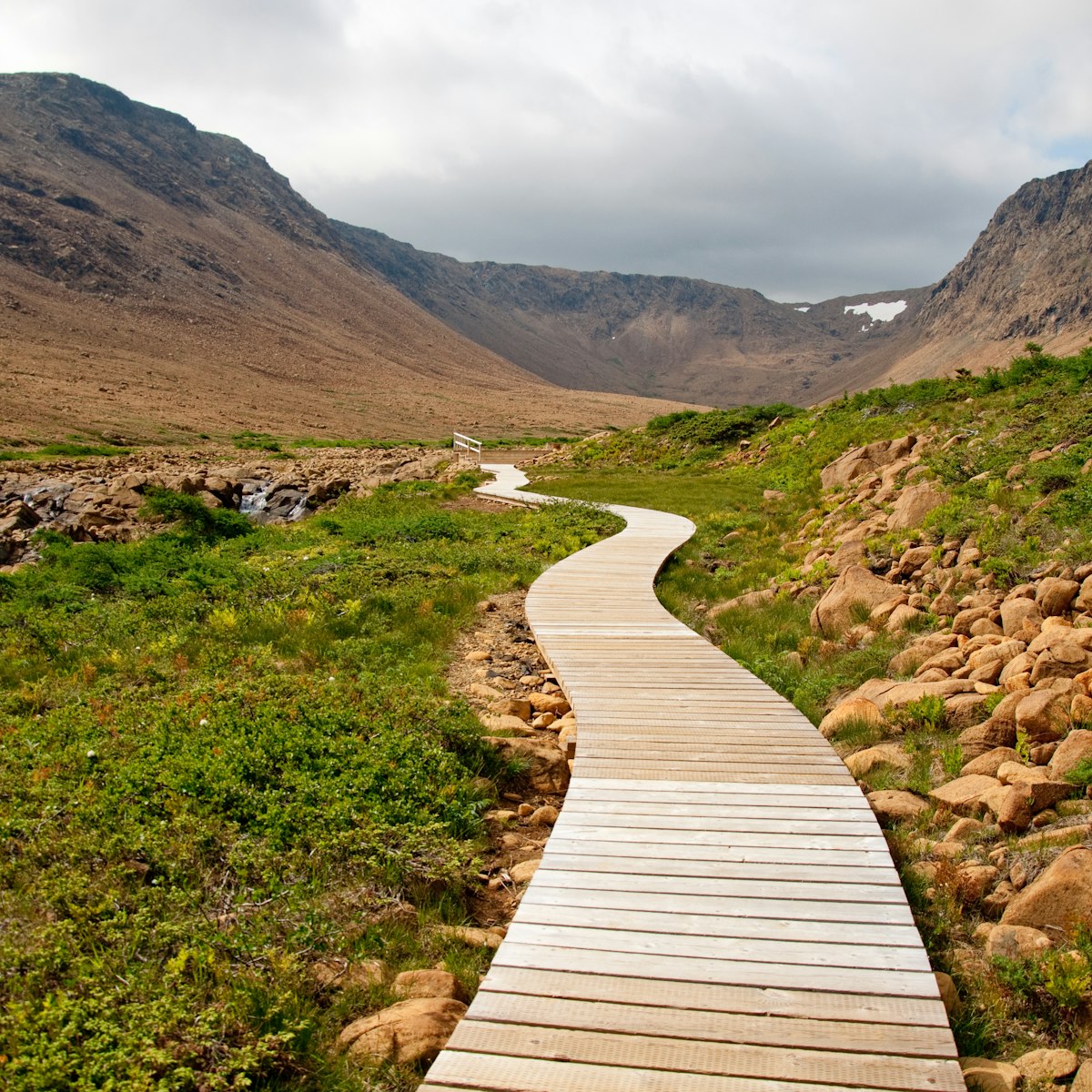
Gros Morne National Park
Dominating the southwest corner of the park, near Trout River, are the unconquerable and eerie Tablelands. This huge flat-topped massif was part of the…

La Banquise
A Montréal legend since 1968, La Banquise is probably the best place in town to sample poutine. More than 30 varieties are available, including a vegan…

Fogo Island Inn
Newfoundland & Labrador
The Fogo Island Inn is a groundbreaking exploration of the concept of local sourcing. Everything in this place comes from at least as close as…
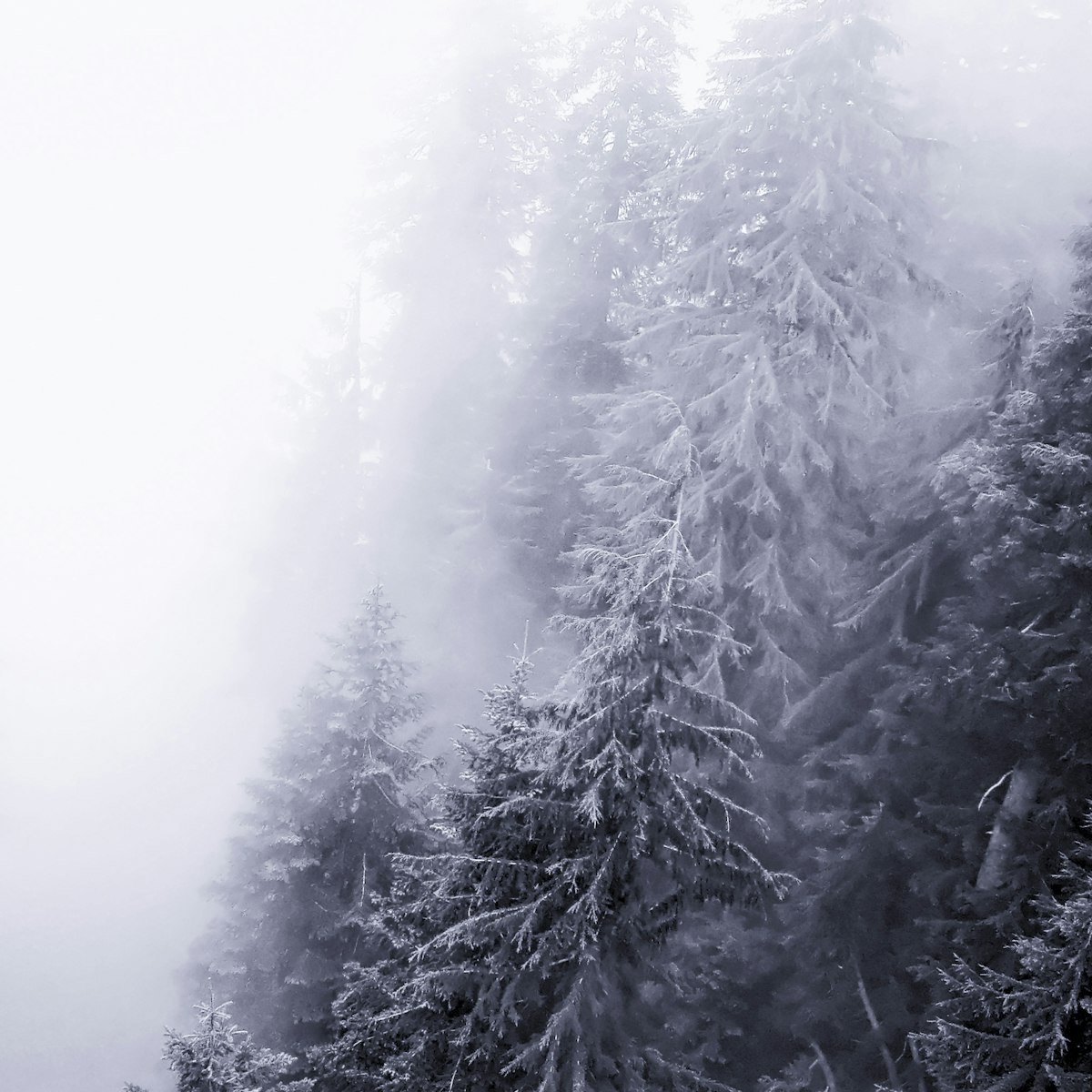
Grouse Mountain
The self-proclaimed 'Peak of Vancouver,' this mountain-top playground, accessed via Skyride gondola (included with admission), offers spectacular views of…
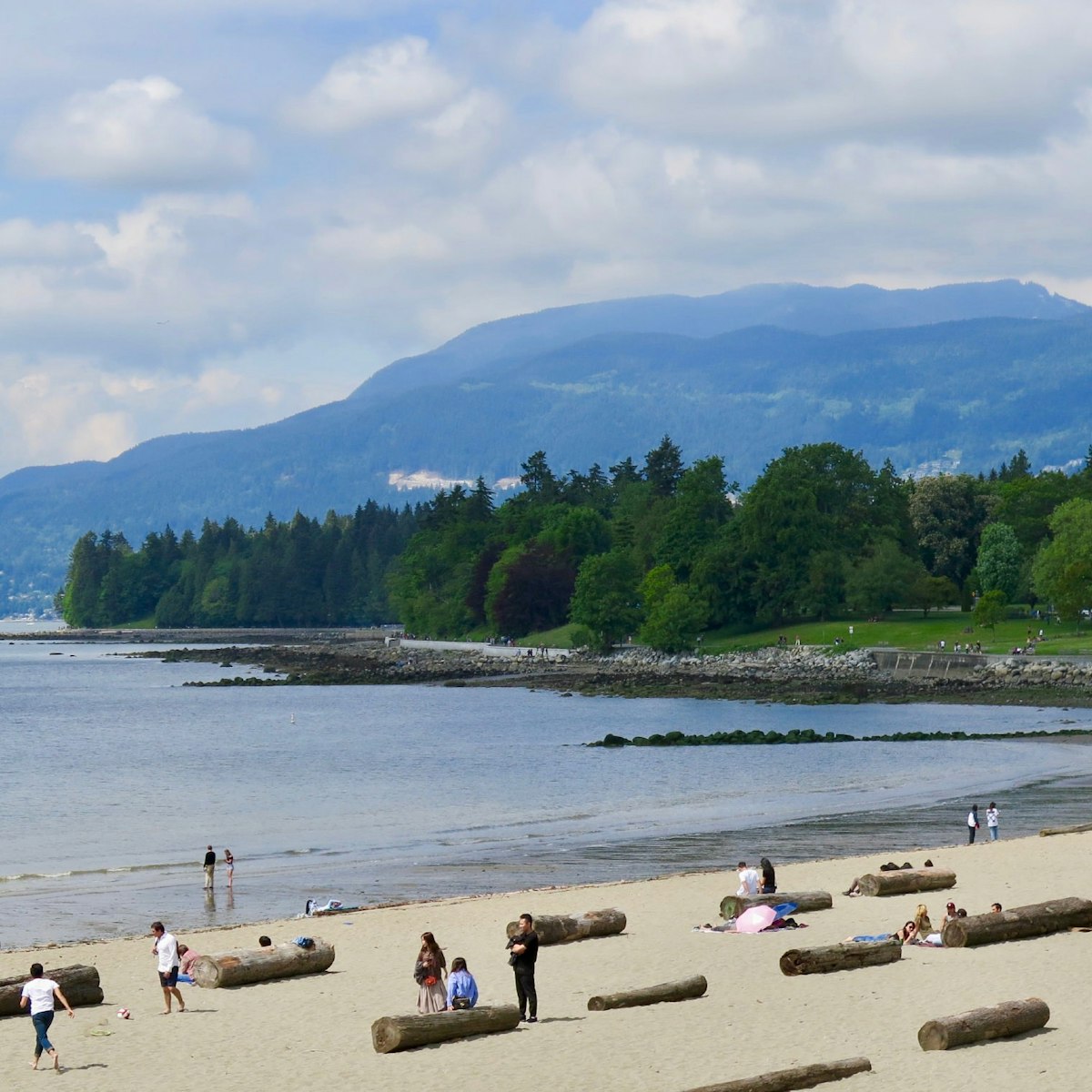
English Bay Beach
Wandering south on Denman St, you'll spot a clutch of palm trees ahead announcing one of Canada's best urban beaches. Then you'll see one of Vancouver's…

Pacific Rim National Park Reserve
Vancouver Island
One in a magnificent seven of BC national parks, Pacific Rim is replete with wave-whipped beaches and brooding forests, most of them far from civilization…

Fundy Geological Museum
Nova Scotia
If you want to understand the geological history of the Bay of Fundy this excellent museum should be your first port of call. It has a wide range of…
Planning Tools
Expert guidance to help you plan your trip.
Best Things to Do
Here are Canada's best experiences to inspire every kind of traveler.
Things to Know
Driving is a tempting way to explore this spectacular country.
Transportation
Crossing Canada’s vastness might seem like a daunting challenge – and it can be. Our guide to getting around the country will help.
Visa Requirements
Many travelers to Canada need a visa or Electronic Travel Authorization to visit. Here's a quick guide to the visa requirements for Canada.
Money and Costs
Canada abounds with pleasures – which, unfortunately, don’t come cheap. Here are a few ways to explore the country without breaking the bank.
Traveling with Kids
Canada offers an abundance of wide open spaces and bustling metropolitan areas that are sure to surprise and delight the kids who visit - and their parents.
Best Road Trips
Experience some of Canada's epic scenery with these fantastic driving routes.
Plan with a local
Experience the real Canada
Let a local expert craft your dream trip.
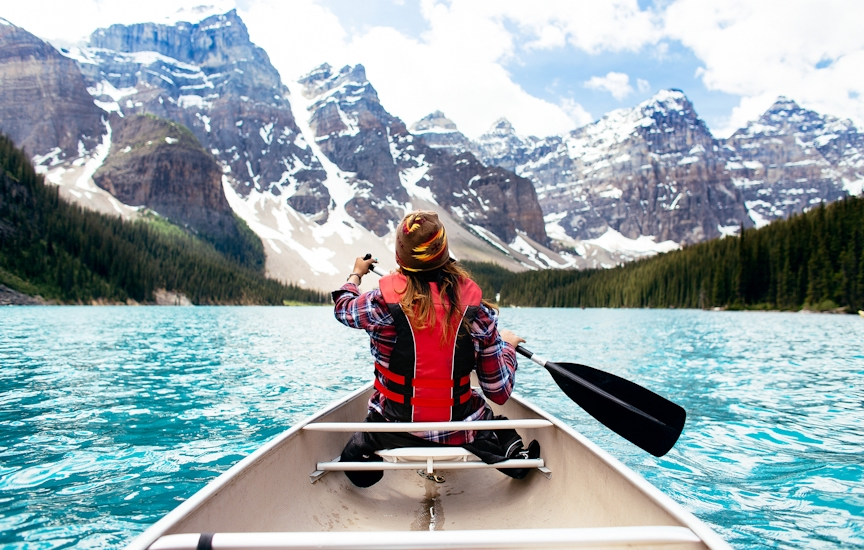
Latest stories from Canada
Filter by interest:
- All Interests
- Adventure Travel
- Art & Culture
- Beaches, Coasts & Islands
- Food & Drink
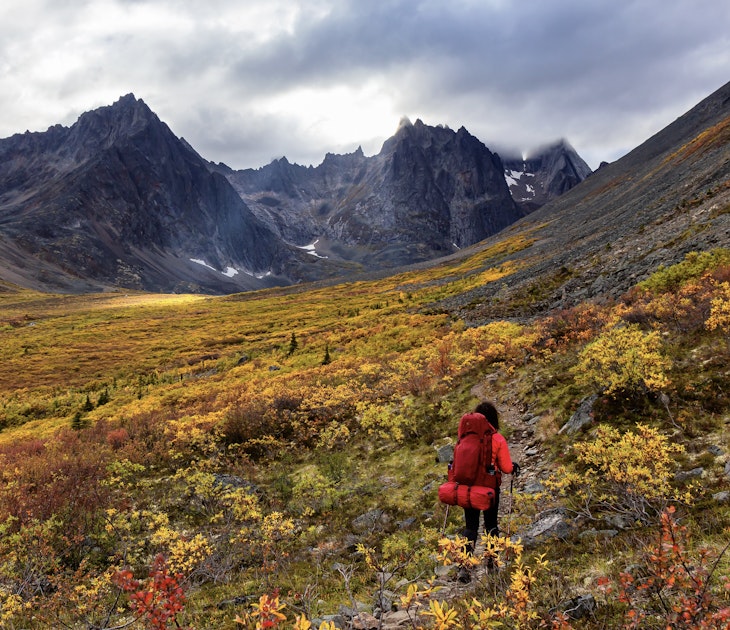
Apr 15, 2024 • 12 min read
The best way to take in Canada’s awe-inspiring landscapes? On your own two feet. Consider starting with these 16 hiking trails all over the country.
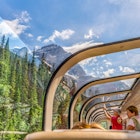
Apr 13, 2024 • 8 min read
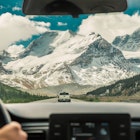
Apr 12, 2024 • 8 min read
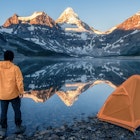
Apr 12, 2024 • 7 min read
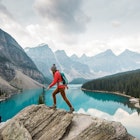
Apr 11, 2024 • 6 min read
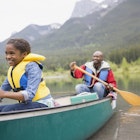
Apr 11, 2024 • 10 min read
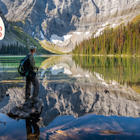
Mar 19, 2024 • 6 min read
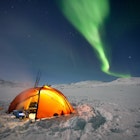
Jan 31, 2024 • 6 min read
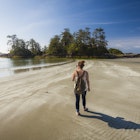
Jan 22, 2024 • 7 min read
in partnership with getyourguide
Book popular activities in Canada
Purchase our award-winning guidebooks.
Get to the heart of Canada with one of our in-depth, award-winning guidebooks, covering maps, itineraries, and expert guidance.
Canada and beyond
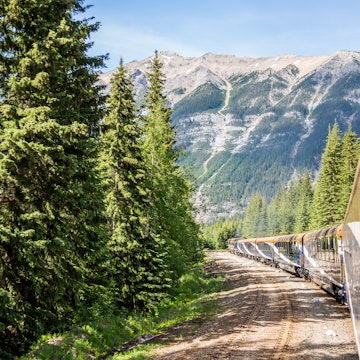

Canada Travel Guide
Your ultimate canada travel guide, with tips, ideas on things to do, and best things to see in canada. great for first-time and returning travelers..
Why Canada ? Full of natural beauty and plenty of activities for fans of the outdoors, Canada is a great vacation spot.
From skiing and snowboarding to kayaking and canoeing, to spotting grizzly bears and the Northern Lights, there are many things to see and do in Canada.
Add in metropolitan cities like Montreal with its shops and exciting nightlife, and Canada has something for everyone.
This Canada travel guide will help you plan your next vacation.
To browse all our articles about Canada click here.
Popular City Guides
- Quebec City
Our Highlight
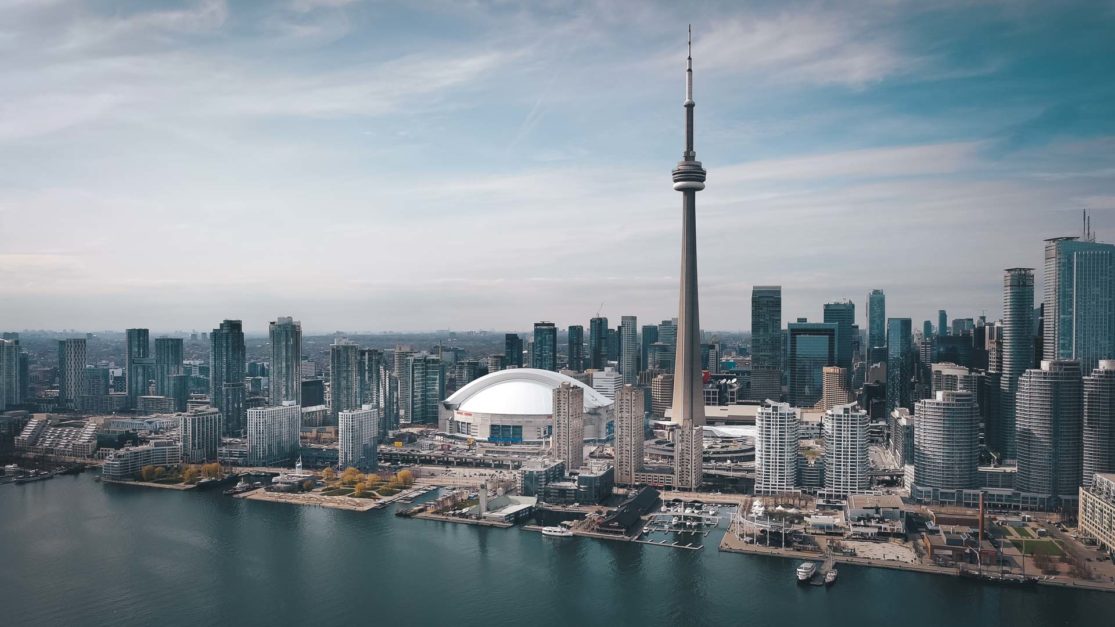
Table of contents
Table of Contents
Fast Facts about Canada
- Currency: The official currency is the Canadian Dollar and 1 Canadian Dollar is equal to 0.79 USD. American dollars are accepted in Canada, though change will be in Canadian Dollars.
- Power: Power voltage is 120V at 60 Hz.
- Entry: To enter, you will need a U.S. passport valid for at least 6 months after your departure date.
- Getting Around : The best way to get around is by public transport or renting a car but beware, Italians are hairy drivers!
- Sales tax : The provincial sales tax for goods and services is set at 7 – 8%, plus GST which is set at 5% which can bring the tax up to 15% depending on the provinces. For more information click here
- The Capital City of Canada is Ottawa – See the Best Things to do in Ottawa.
Things to See and Do in Canada
- Whistler, BC – Largest Ski Resort in the World, Hiking and Downhill Mountain biking, Bobsledding , snowmobiling , outdoor fun.
- Our particular favourite is snowboarding in Whistler or Lake Louise
- Walking with Polar Bears in Manitoba.
- Kayaking the Bay of Fundy in New Brunswick or Nova Scotia.
- Quebec City is Canada’s most European destination and one of the oldest cities in North America established way back in 1608
- Aboriginal Experience – Canada’s First Nations People are welcoming and are a fascinating culture to visit. There are many chances to immerse in aboriginal culture in Canada.
- Niagara Falls – The Canadian side of Niagara Falls is an amazing destination with magnificent views, nightlife and lots of things to do.
- Icefields Parkway – One of the world’s most beautiful drives is from Banff to Jasper and not to be missed.
- Cabot Trail – Incredible scenic drive on the East Coast with whale watching, lobster fishing and awesome views.
Canada Travel Guides
- Best Things to do in Toronto
- Best Things to do in Alberta
- Epic Things to do in Ontario
- Beautiful Places in Alberta
- Nova Scotia Road Trip
- Drive the Dempster Highway
- Best British Columbia Road Trip
- Things to do in Winnipeg
- Best of New Brunswick
- Things to do in Prince Edward Island (PEI)
Accommodation
Budget: You can find a number of budget hotels and hostels for around 20-65 Canadian Dollars. Enjoy dorm-styled or private rooms, common areas, shared kitchens, free Wi-Fi, and easy access to city or scenic locations.
Mid Range: For mid-range hotels, expect to pay 100 to 200 Canadian Dollars per night. Stay in hotels with private rooms, free Wi-Fi, a fitness center, complimentary breakfast, and a restaurant and bar.
High End: Upscale hotels will range from 230 to 500 Canadian Dollars, with the top hotels going up to over 1,000 Canadian Dollars per night. Take in the best with top-of-the-line hospitality and room service, upscale private guest rooms, spa services, indoor and outdoor pools, fitness centers, fine dining, and more. Certain hotels near the water also provide kayak services.
- If you are starting your trip in Toronto check out our suggestions for where to stay in Toronto
- Read: Where to Stay in Vancouver and Where to Stay in Montreal
- Check out our favorite booking platforms Booking.com , Tripadvisor and VRBO for the best deals on accommodation.
The food in Canada has a wide variety of influences, including French, English, Scottish, and First Nations cuisine.
Poutine (fries, gravy, and cheese curds) is a popular dish here, while Nova Scotian lobster rolls are another. If you’re looking for some snacks or desserts, try a Montreal bagel (a sweeter version of a New York bagel, usually topped with sesame or poppy seeds) or a butter tart (eggs, butter, and sugar baked in a pastry shell).
Canada has many great restaurants and cafes where you can try some Canadian food. Expect to pay around 65 Canadian Dollars for a day of food.
Canada’s national drink is the Bloody Caesar, it’s like a Bloody Mary but it is made with Clamato juice. Give it a try, you’ll love it.
The Best Ways to Get Around Canada
Getting to canada:.
The Toronto Pearson International Airport is the busiest airport in Canada and is just a 30-minute taxi ride to downtown or you can take the UpExpress leaving the airport every 15 minutes to downtown.
The Vancouver International Airport and the Montreal-Pierre Elliott Trudeau International Airports are two alternative options, especially when traveling to those cities.
You can check for the best flights to Canada on Skyscanner .
Transportation:
Canada is a massive country and if you want to get around from Province to Province, the best bet is to fly.
Trains are a fast way to get around, especially in larger cities but trains are more expensive in Canada compared to places like Europe and Asia.
If you want to go from Toronto to Vancouver at a more leisurely pace, take The Canadian, an 86-hour trip where you can enjoy beautiful scenic views, dine and sleep in a bed in your private cabin, and enjoy stops at Winnipeg, Edmonton , and Jasper.
Buses : Buses are a good way to get around. You can take the Greyhound or the Megabus and it is a cheap option to get from city to city.
Major cities have rapid transit and light rail systems to get you where you need to go quickly. A typical fare is 3.64 Canadian Dollars.
Taxis: Taxis are an alternative way to get around. Prices typically start at 3.50- 4 Canadian Dollars and increase 2 Canadian Dollars per kilometer traveled. Uber and Lyft are widely used in major Canadian cities.
Car Rental: To rent a car, you must be at least 21 years old and have a valid driver’s license. Check for prices and availability here.
When to go To Canada
- Canada has four seasons and there is no bad time to visit Canada if you are prepared for the weather.
- Summer (June to August) is a good time for road trips , canoeing, hiking, and exploring cities.
- Winter (November to February) is great for skiing, ice skating, and winter carnivals .
- Spring (late March to May) can be unpredictable with a mix of snow, rain and warm sunshine and the same can be said for Autumn (September/October) although Autumn is usually dry.
- September through November is considered the best time to go to Canada, as peak tourism has ended (meaning fewer crowds and lower hotel prices) and there are many beautiful autumn leaves to see. However, for those going to Canada for winter sports, January to March is when the snow conditions are at their peak and is a great time for skiing or snowboarding.
Where to Stay in Canada
Fairmont Lake Louise : Fairmont Lake Louise. I don’t know if there is another hotel in the world with a view like this. It’s worth the spurge to spend a night here when visiting Banff.
Ritz Carlton Toronto: The Ritz Carlton Toronto is in the heart of it all near the Entertainment District, Harborfront, and CN Tower. Pure Luxury in Canada’s Largest City
Prince George Hotel Halifax : Located in the heart of Halifax this grand hotel is pure luxury and within walking distance of everything.
Check out our favorite booking platforms Booking.com , Tripadvisor , and VRBO for the best deals on accommodation.
Canada Accommodation Guides
- Where to Stay in Toronto
- Where to Stay in Niagara Falls
- 24 Fantastic Things to do in Saint John New Brunswick
- Where to Stay in Vancouver – Best Hotels & Vacation Rentals By Area
- Things to do in Calgary, Alberta
- Where to Stay in Montreal
- Where to Stay in Nova Scotia
- 15 Best Things to do in Saskatoon, Saskatchewan
- Where to Stay in Banff
- Things to do in Jasper
- 14 Things to do in Winnipeg – Plus Other Hidden Gems
- The Best Things to do in Toronto – A Guide to the Top Attractions
What to Pack for Canada
If you travel to cities like Toronto, Vancouver, or Montreal in the summer, it’s hot and you can dress as you would in any major metropolis around the world. For winter travel in Canada, expect extremely cold weather. Canada has winter, period.
If you are going to the Rocky Mountains, the North or East Coasts, it can be cool any time of year so pack in layers. Nights can get cool even in the middle of summer in all provinces.
- Hiking Boots: Keep your feet comfortable with a sturdy pair of hiking boots.
- Layers: Be prepared no matter the weather by bringing clothes with layers.
- Waterproof Coat: As it can rain, a waterproof coat is a good item to bring.
- For winter travel to Canada, check out our tips for how to survive the winter deep freeze.
- Dress in layers and be prepared for cool nights, (even in the summer and especially in the mountains.
- How to Pack for a winter vacation read – Travel Tips for Winter Packing
Canada Travel Guide: Best Booking Resources
Whenever we travel to we make sure to start with these companies. We have tried a lot of different ones over the years and all of these have consistently proven to be the best when it comes to offering great prices.
We have used every one of these personally and continue to do so.
- Booking.com : This is our go site to when comparing prices for accommodation. It usually has the cheapest prices, especially in Europe and we love their interface. Not to mention you get free cancellation and you are guaranteed the best price.
- Trip Advisor : What we like about Trip Advisor is that we can look at all the reviews and then book our accommodation. TripAdvisor is where we go when we want to compare prices with multiple accommodation providers.
- VRBO : is the main search engine we use when we are looking for a home or apartment rental. It can sometimes be cheaper than hotels and it is the best way to stay in areas that offer a more local feel.
- Hostelworld : With one of the largest databases of hostels in the world, Hostelworld is the go-to site when you are looking for budget accommodation.
- Skyscanner : This is the first place we check for flights. It consistently comes back with the cheapest and best options. It allows us to compare a lot of airlines to get the best price.
- Rome 2 Rio : If you want to see how to get somewhere by plane, train, bus, ferry or car Rome2Rio lays it all out for you as well as related costs.I love how they show it all to you on a Google Map and it works offline.
- Get Your Guide: For all your day trip and city guide needs, we use Get Your Guide. It has the world’s largest collection of things to do with more than 30,000 activities in 7500 destinations.
- World Nomads Insurance: When traveling to Italy you should always have travel insurance. We have found the best bang for your buck is by far World Nomads.
Canada Travel Guide: Related Articles
To browse all our articles and guides about Canada click here.
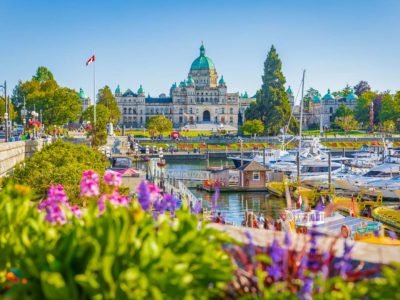
34 Incredible Things to Do In Victoria, BC (Our 2024 Guide)
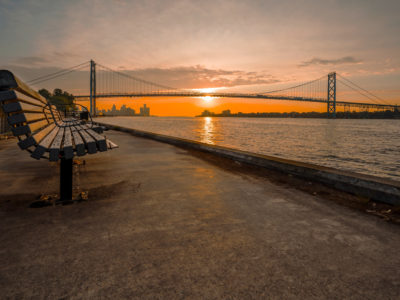
20 Best Things To Do in Windsor, Canada in 2024
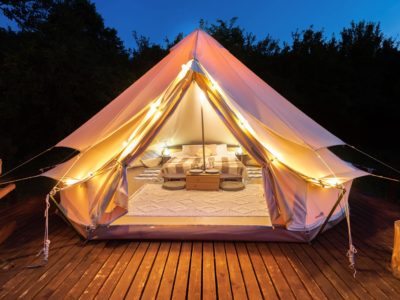
Glamping in Ontario: 14 Best Luxury Camping Sites To Visit In 2024
- Destinations

Canada spans six time zones, and some say that it boasts the longest street in the world. This nation gave the world Leonard Cohen, Leslie Nielsen, Mounties, Tim Hortons, Superman, zippers, the light bulb, and the snowblower. This is a place where polar bears, poutine, and epic panoramas predominate. Canada’s wilderness beckons adventure-seekers from the world over, while the country’s cultural attractions, culinary marvels, hockey rinks, and artistic landmarks thrill visitors of all stripes.
- Copy Link copied

When’s the best time to go to Canada?
The best time to visit Canada depends on what you wish to experience. The snowy months of winter allow for world-class skiing, snowshoeing, and hockey games. Summer is ripe for sunseekers to explore both the Pacific and Atlantic coasts, the lakes of Ontario, and the wild country of the North. Spring turns the West into one gigantic flowerpot, while fall transforms Eastern Canada into a kaleidoscope of colors. Keep in mind that many Canadians travel during the summer months. Also, national parks and big cities attract thousands of visitors from the United States during school holidays and long weekends, when prices can soar in destinations like Toronto, Vancouver, Jasper, Montreal, Banff, Calgary, and Halifax.
How to get around Canada
Major international airports are spread across the country from Vancouver in the west to Halifax in the east. Many international visitors choose to arrive at U.S. border cities (e.g. Seattle, WA and Buffalo, NY) and then drive across the border. This can be a cheaper way of entering Canada, but be prepared for traffic and extended waits at border checkpoints during peak travel times.
Major cities like Toronto, Vancouver, Calgary, Montreal, and Halifax have excellent public transportation networks: taking the bus, riding the metro, or hailing a cab is a breeze. Smaller cities and rural towns are walkable, but you’ll need a car to get out into the countryside. Public transportation in and out of national parks is virtually nonexistent. The space between metro centers can seem daunting, so consider flying if you wish to cut down on travel times.
Food and drink to try in Canada
Canadian cuisine is as diverse as the country is expansive. On one city block—or on one menu—you may find restaurants serving Ukrainian, Chinese, Irish, German, Portuguese, Haitian, Nigerian, and Ethiopian dishes. Each province and city has its own culinary flair: you’ll find unique Western fare in Calgary and Edmonton, gastro-nouveau in Toronto and Vancouver, fine French dining in Montreal and Quebec City—and the best the ocean has to offer in Halifax, Charlottetown, and St. John.
Culture in Canada
Have you come for the great outdoors, or Winnipeg’s Folklorama? Perhaps you’re in town for Toronto’s MuslimFest, or you made the trek to quirky little Maxville, Ontario, for the Glengarry Highland Games. Massey Hall in Toronto has hosted the world’s largest musical acts for decades, while the Quebec Winter Carnival is Canada’s premiere winter event. The Edmonton International Fringe Festival, held every August, is the largest and oldest fringe fest in North America.
Canadians love to party. Canada Day (July 1) is celebrated from coast to coast, with Canadians and visitors packing public squares, stadiums, parks, and concert halls for massive festivals. The Calgary Stampede takes over Alberta’s largest city every July; Montreal’s International Jazz Festival (June 29–July 9) welcomes 2.5 million visitors each year; and Pride, Scotiabank Caribbean Carnival, The Canadian National Exhibition, and the Toronto International Film Festival bring revelry to Ontario’s capital.
Local travel tips for Canada
English is Canada’s common tongue, though French is spoken throughout Quebec and in many Atlantic cities. That said, you’ll hear nearly every other language in the big metro centers. The currency is the Canadian Dollar ($). Tipping is required (15%) in restaurants, and it is generally expected in taxis and hotels. ATMs are everywhere, and major credit cards are accepted across the country. Electricity is 110v.
Guide Editor
Flash Parker

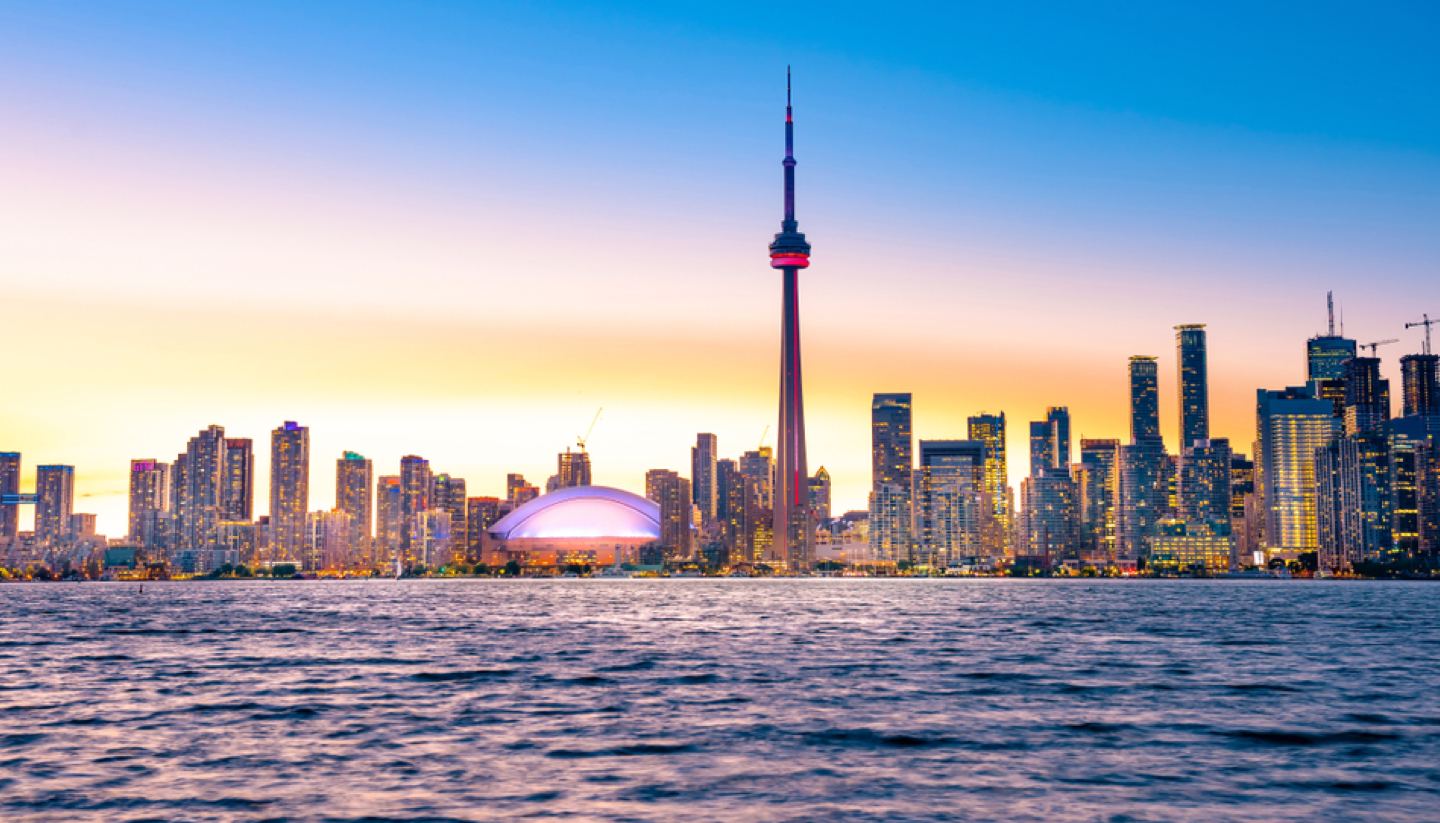
Introducing Canada
About canada.
- Images of Canada
- History, language & culture
- Weather & geography
- Doing business & staying in touch
Plan your trip
- Travel to Canada
- Where to stay
While you’re there
- Things to see & do
- Shopping & nightlife
- Food & drink
- Getting around
Before you go
- Passport & visa
- Public Holidays
- Money & duty free
Book your flights
- British Columbia
- New Brunswick
- Newfoundland And Labrador
- Northwest Territories
- Nova Scotia
- Prince Edward Island
- Saskatchewan
- Yukon Territory
- Quebec City
- Calgary International Airport
- Halifax Stanfield International Airport
- Montreal-Pierre Elliott Trudeau International Airport
- Ottawa International Airport
- Toronto Pearson International Airport
- Vancouver International Airport
Ski Resorts
- Kicking Horse
- Lake Louise
- Whistler Blackcomb
Canada travel guide
Whether you’re a hardcore adrenaline junkie, a wildlife enthusiast or a city slicker looking for cutting-edge culture, Canada ticks all the boxes. The world’s second-largest country (by total area) racks up an astonishing diversity of landscapes; the vast Canadian Prairies rise abruptly to the glacier-topped Rocky Mountains; rugged, unspoiled coastlines give way to immense forests and emerald lakes; and Arctic waters lap upon frozen tundra. Incredibly, this wilderness is also home to cosmopolitan cities, quirky towns and remote indigenous settlements.
Canada’s people are as varied as the landscapes; from the Arctic Indigenous peoples and the Francophone Quebeckers to the British expatriates and burgeoning Asian community, this is a multicultural land where around 22% of the population are foreign-born.
Canadian cities are progressive, vibrant and regularly feature on lists of "best places to live". Toronto, a veritable patchwork of charming neighbourhoods, has an idyllic beachside location on the shore of Lake Ontario, while Canada’s capital city, Ottawa, contains a clutch of fantastic museums and the gorgeous Rideau Canal for ice skating in winter. Montreal’s skyscrapers belie its French heritage, but look closer and you can stumble upon historic, cobbled streets and centuries-old customs.
A stone’s throw from the Canadian Rockies, booming Calgary flaunts its cowboy traditions during the annual boot-stomping Stampede. Chilled-out Vancouver, meanwhile, seems to have it all: mountains, beaches, an incredible downtown park and a cosmopolitan dining scene. And across the Georgia Strait, Vancouver Island offers a wide variety of things to see and do including marine and land activities and festivals.
For something wilder, ski steep chutes in British Columbia, kayak secluded bays with whales in Nova Scotia or learn to lasso at an Albertan ranch. Capture grizzlies on camera in the Yukon, watch mammoth icebergs drift past the Newfoundland coast, or soar over Niagara Falls by helicopter. Tour vineyards, dig for clams or feel giddy gazing at the Northern Lights. In Canada, the options are endless.
9,984,670 sq km (3,855,100 sq miles).
37,602,103 (estimate Q2 2019).
3.92 per sq km.
Federal parliamentary democracy and constitutional monarchy.
HM King Charles III since 2022, represented by Governor General Mary Simon since 2021.
Prime Minister Justin Trudeau since 2015.
Travel Advice
Before you travel.
No travel can be guaranteed safe. Read all the advice in this guide and any specific travel advice that applies to you:
- women travellers
- disabled travellers
- LGBT+ travellers
- solo and independent travel
- volunteering and adventure travel
Travel insurance
If you choose to travel, research your destinations and get appropriate travel insurance . Insurance should cover your itinerary, planned activities and expenses in an emergency.
About FCDO travel advice
The Foreign, Commonwealth & Development Office ( FCDO ) provides advice about risks of travel to help British nationals make informed decisions. Find out more about FCDO travel advice .
Follow and contact FCDO travel on Twitter , Facebook and Instagram . You can also sign up to get email notifications when this advice is updated.
This information is for people travelling on a full ‘British citizen’ passport from the UK. It is based on the UK government’s understanding of the current rules for the most common types of travel.
The authorities in Canada set and enforce entry rules. If you’re not sure how these requirements apply to you, contact the Canadian High Commission in the UK .
COVID-19 rules
There are no COVID-19 testing or vaccination requirements for travellers entering Canada.
Passport validity requirements
To enter Canada, your passport must be valid for the length of your planned stay.
If you’re travelling through another country on your way to or from Canada, check the entry requirements for that country. Many countries will only allow entry if you have at least 6 months validity remaining on your passport.
Visa requirements
To enter or transit through Canada, most people need a visa or an Electronic Travel Authorization ( eTA ) – not both.
Check if you need a visa or an eTA online .
You do not need a visa for short visits (normally up to 6 months). You may need an eTA instead.
You do not need an eTA , if you are:
- arriving by land and sea – you must have acceptable travel documents and ID
- a British-Canadian dual national – you must have a valid Canadian passport
See Canada’s entry requirements for full details of eTA and visa requirements.
Contact the Canadian High Commission in the UK if you are unsure about visa requirements or your eligibility to enter the country, for example, if you have a criminal record or have been arrested.
Checks at border control
Canadian border officials may ask you to show a return or onward ticket and proof that you have sufficient funds to support yourself for the duration of your stay, even if you are staying with family or friends.
Visas for permanent residence, study or work
See information on visas for permanent residence, study or work in Canada .
Transiting through Canada
If you are travelling through Canada (transiting) by air, you must have an eTA or a transit visa.
If you have questions, contact:
- your airline
- Immigration, Refugees and Citizenship Canada
- your nearest Canadian high commission, embassy or consulate
Find out more about transiting Canada .
Visa and eTA scams
Some unauthorised websites charge for submitting visa applications. These websites are not associated with the Canadian government.
You can check your eTA status online with the Canadian government . If it has been 72 hours since you applied, and you have not received confirmation of your application, complete an enquiry form .
Travelling with children
If a child travels alone or with only one parent or legal guardian, they should carry a letter of consent from the non-travelling parents or guardians. Immigration officers have the right to question children using simple and appropriate language to see if there are any concerns about child abduction.
For more information, check with the Canadian High Commission in the UK or the Canada Border Services Agency .
Vaccine requirements
For details about medical entry requirements and recommended vaccinations, see TravelHealthPro’s Canada guide .
Customs rules
There are strict rules about goods that can be taken into and out of Canada . You must declare anything that may be prohibited or subject to tax or duty.
The Canadian authorities will confiscate banned food products and you could get a fine. For more information, see importing food, plants or animals to Canada .
If you visit a farm or have contact with wild animals before entering Canada, and plan to visit a farm during your stay, you must declare this on your Customs Declaration Card. For more information, see biosecurity at the Canadian border .
There is a high threat of terrorist attack globally affecting UK interests and British nationals, including from groups and individuals who view the UK and British nationals as targets. Stay aware of your surroundings at all times.
UK Counter Terrorism Policing has information and advice on staying safe abroad and what to do in the event of a terrorist attack. Find out how to reduce your risk from terrorism while abroad .
Terrorism in Canada
Terrorists are likely to try and carry out attacks in Canada.
Attacks could be indiscriminate, including in places visited by foreigners. You should remain aware of your surroundings, keep up to date with local media reports and follow the advice of local authorities.
Recent attacks include:
- in 2023, one person stabbed and injured in Surrey, British Columbia
- in 2021, 4 people killed and one injured by a vehicle in London, Ontario
- in 2020, one person killed with a hammer in Scarborough, Ontario
- in 2020, one person killed and 2 wounded in a machete attack in Toronto, Ontario
See the Canadian government’s national terrorism threat level .
Take precautions to protect yourself from petty crime, including:
- not leaving your bag or luggage unattended
- keeping luggage out of sight in cars
- keeping valuables and passport in a safe location
- leaving copies of important documents with family and friends in the UK
- carrying a copy of your passport for ID
Laws and cultural differences
Recreational cannabis is legally available in Canada. Laws vary depending on the province or territory you are visiting . It is illegal to take cannabis across the Canadian border without a permit or exemption authorised by Health Canada. Those who attempt to take cannabis out of Canada without the relevant permit face arrest.
See the Canadian Border Services Agency website for more information.
If you are hiking or camping, be considerate and cautious of local wildlife. You should:
- take all rubbish with you including food items to avoid attracting animals to your site
- be careful around animals with nearby young or nests – they may be aggressive when protecting their territory
- research the region to learn about the local wildlife
- take particular care if you’re in an area where bears have been sighted
- keep a safe distance from any wildlife including marine animals and birds
- follow park regulations
Outdoor activities and adventure tourism
See advice on visitor safety when planning outdoor activities and adventure tourism in Canada, and on preparing for winter sports abroad .
Transport risks
Road travel.
If you are planning to drive in Canada, see information on driving abroad .
See driving in Canada for information on traffic and safety laws. Laws vary between provinces and territories, including:
- whether you are allowed to turn right on a red light
- driving licence requirements – you may need to get an international driving permit ( IDP )
Take extra care when travelling on country roads and watch out for wild animals. For more information on road conditions and road safety, see Transport Canada , the Canadian Automobile Association and Travel Canada .
Hire car companies often have stricter requirements for their customers, such as a year of driving experience, a higher minimum age and holding an IDP .
Driving in winter
In winter, highways are often closed because of snowstorms and avalanches in Alberta, British Columbia and other provinces. Check local weather conditions on The Weather Network .
Driving conditions can be dangerous, even when roads remain open during a winter storm. Take care, follow local restrictions or guidelines and make sure your vehicle has snow tyres and emergency supplies. See winter driving advice , including vehicle preparation and using winter tyres.
Extreme weather and natural disasters
Find out what you can do to prepare for and respond to extreme weather and natural hazards .
From July to November, hurricanes can affect coastal areas. Check the US National Hurricane Center , Environment Canada and The Weather Network websites for the latest weather conditions.
Avalanches can happen in mountainous regions, including Alberta and British Columbia. Always follow avalanche advice and stay away from closed trails. Follow the directions of local guides or instructors. For more information and avalanche news, see the Canadian Avalanche Foundation website.
Earthquakes and tsunamis
Familiarise yourself with safety procedures in the event of an earthquake or tsunami. The Canadian government has information about emergency preparedness .
Thunderstorms
Summer thunderstorms are frequent in most parts of Canada, particularly between April and September. They can damage property and threaten lives.
Winter storms
Winter storms, including freezing rain, blizzards and hail, are frequent in many parts of Canada, particularly from November to April. They can make driving conditions dangerous, damage property and threaten lives. Follow local warnings or news for details.
Tornadoes can happen anywhere in Canada from May to September, but June to July is the peak season in:
- southern Ontario
- south-eastern Quebec
- southern Saskatchewan and Manitoba through to Thunder Bay
- the interior of British Columbia and western New Brunswick
Follow instructions from Canadian officials or law enforcement. Check the US National Hurricane Center for weather updates.
Forest fires
Forest fires can start at any time, whatever the season. There is greater risk of fire in the grasslands and forests of western Canada. In summer 2023 there were significant fires in eastern Canada, including parts of Ontario, Quebec and Nova Scotia. Follow local warnings or news for details on the latest outbreaks.
The Canadian Wildland Fire Information System shows active wildfires and forecasts .
Arctic travel
Parts of Canada are in the Arctic Circle, including some very remote areas of land and sea. Emergency medical assistance and search and rescue are limited in these areas. See Arctic travel safety advice .
Before you travel, check that:
- your destination can provide the healthcare you may need
- you have appropriate travel insurance for local treatment or unexpected medical evacuation
This is particularly important if you have a health condition or are pregnant.
Emergency medical number
Dial 911 and ask for an ambulance.
Contact your insurance or medical assistance company quickly if you’re referred to a medical facility for treatment.
Vaccine recommendations and health risks
At least 8 weeks before your trip:
- check the latest vaccine recommendations for Canada
- see where to get vaccines and whether you have to pay on the NHS travel vaccinations page
See what health risks you’ll face in Canada .
Altitude sickness is a risk in parts of Canada, including skiing and hiking destinations in the Canadian Rockies such as Banff and Lake Louise. Read more about altitude sickness on TravelHealthPro .
The legal status and regulation of some medicines prescribed or bought in the UK can be different in other countries.
TravelHealthPro explains best practice when travelling with medicines .
The NHS has information on whether you can take your medicine abroad .
Healthcare in Canada
Medical treatment can be very expensive. There are no special arrangements for British visitors.
For emergency healthcare, go to a hospital emergency room or a walk-in clinic.
If you have dual British-Canadian citizenship, you may still have to pay for medical treatment if you do not meet provincial residency requirements for healthcare. Check with the relevant province or territory health ministry for more information.
COVID-19 healthcare in Canada
Public Health Canada has COVID-19 updates and guidance. These Twitter accounts are also official sources of information and guidance:
- @GovCanHealth
- @CPHO_Canada
Travel and mental health
Read FCDO guidance on travel and mental health . There is also guidance on TravelHealthPro .
The Foreign, Commonwealth & Development Office ( FCDO ) cannot provide tailored advice for individual trips. Read this travel advice and carry out your own research before deciding whether to travel.
Emergency services in Canada
Telephone: 911 (ambulance, fire, police)
Coastguard maritime emergencies
Telephone: 1 800 463 4393
Contact your travel provider and insurer
Contact your travel provider and your insurer if you are involved in a serious incident or emergency abroad. They will tell you if they can help and what you need to do.
Refunds and changes to travel
For refunds or changes to travel, contact your travel provider. You may also be able to make a claim through insurance. However, insurers usually require you to talk to your travel provider first.
Find out more about changing or cancelling travel plans , including:
- where to get advice if you are in a dispute with a provider
- how to access previous versions of travel advice to support a claim
Support from FCDO
FCDO has guidance on staying safe and what to do if you need help or support abroad, including:
- finding lawyers and translators and interpreters in Canada
- dealing with a death in Canada
- being arrested in Canada
- getting help if you’re a victim of crime
- what to do if you’re in hospital
- if you are affected by a crisis , such as a terrorist attack
Contacting FCDO
Follow and contact FCDO travel on Twitter , Facebook and Instagram . You can also sign up to get email notifications when this travel advice is updated.
You can also contact FCDO online .
Help abroad in an emergency
If you’re in Canada and you need emergency help from the UK government, contact the British High Commission in Ottawa or your nearest consulate .
FCDO in London
You can call FCDO in London if you need urgent help because something has happened to a friend or relative abroad.
Telephone: 020 7008 5000 (24 hours)
Find out about call charges
Risk information for British companies
The Overseas Business Risk service offers information and advice for British companies operating in Canada on how to manage political, economic, and business security-related risks.

Related Articles
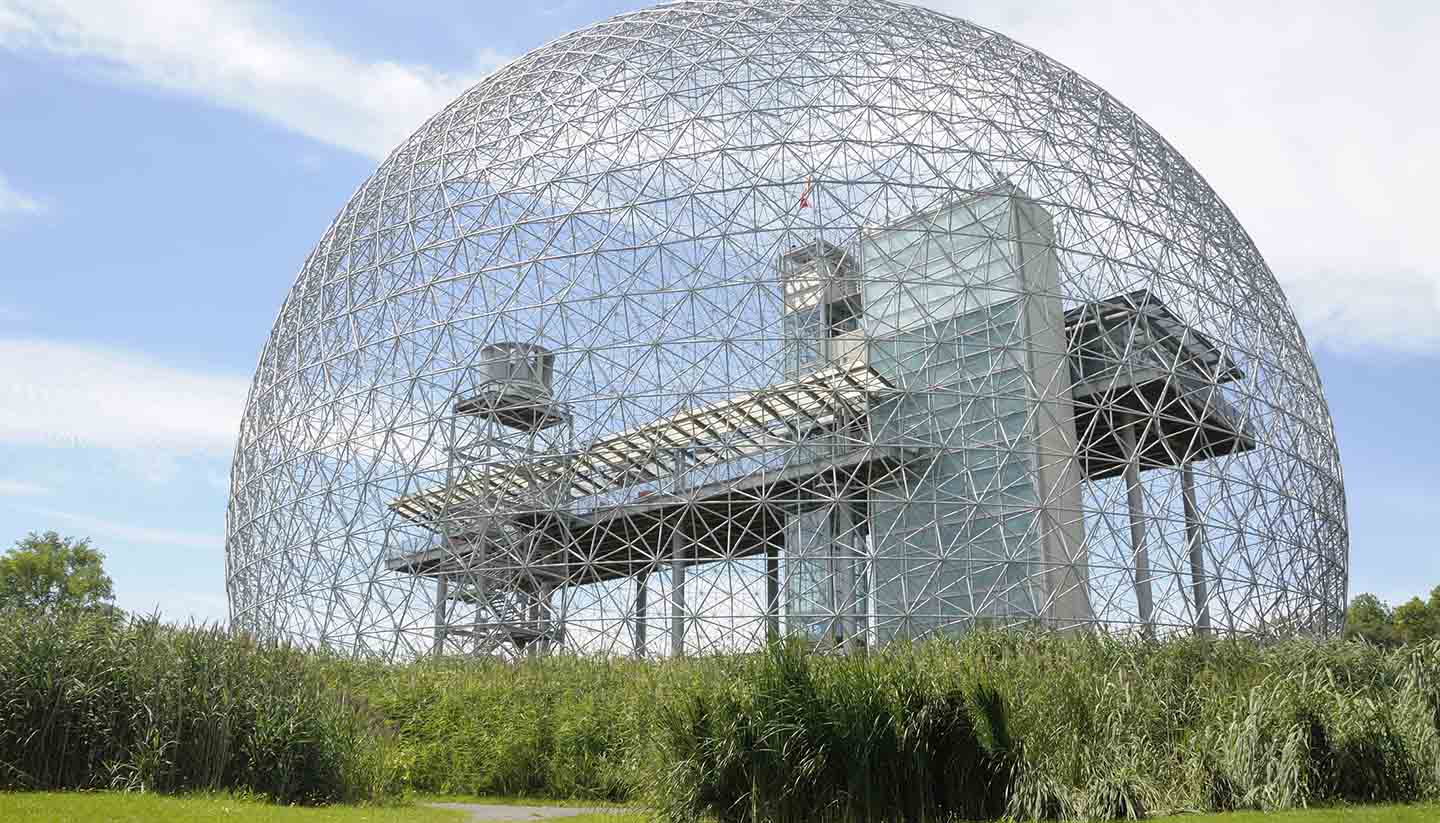
City Highlight: Montreal
The Canadian city with chic appeal, Montreal has an attitude and sense of style that would be more at home in continental Europe than North America.
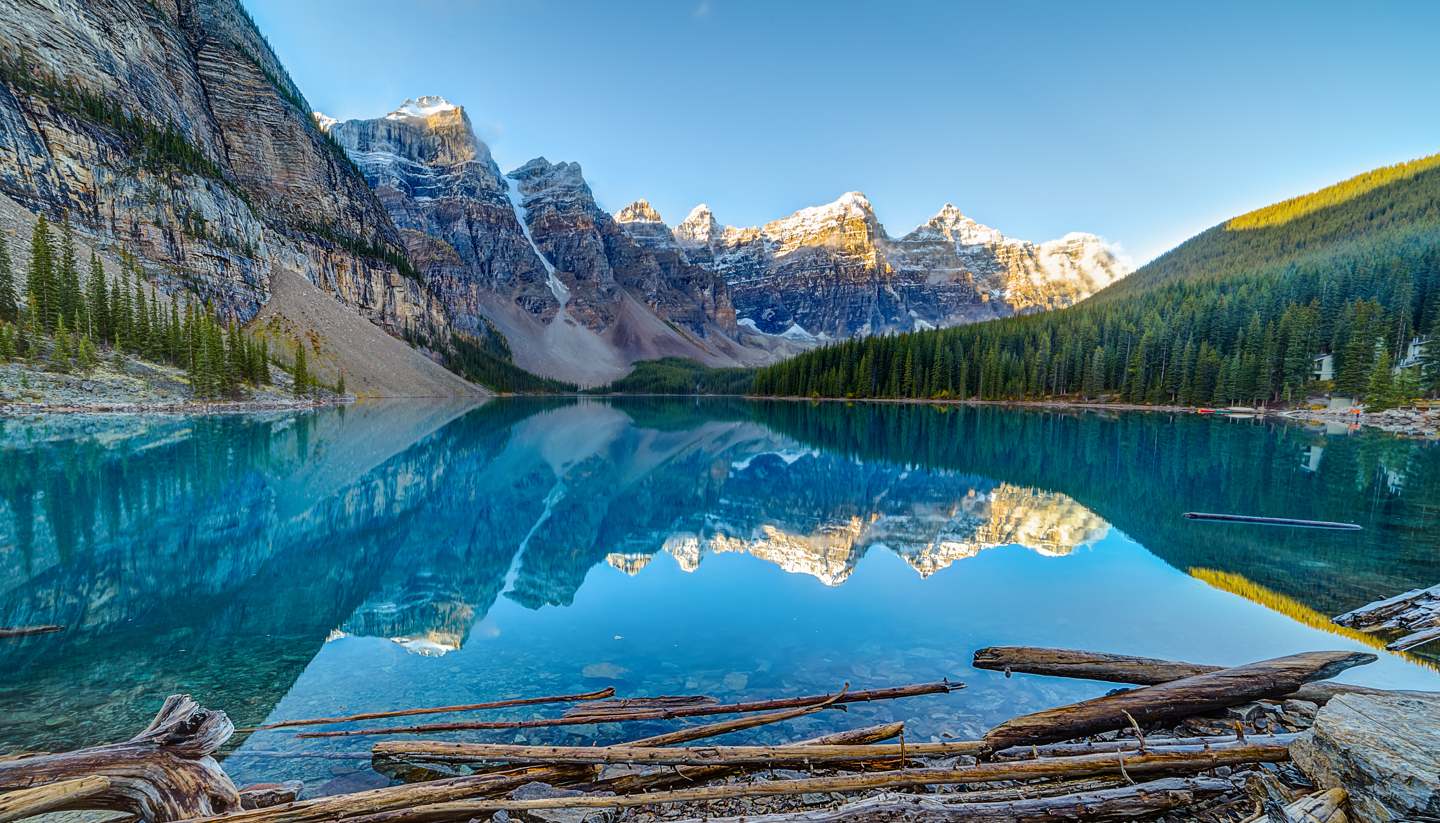
Going off the trail in the Rockies
Banff National Park in the Canadian Rockies is worth visiting.
Fighting the tide in Nova Scotia
Tidal bore rafting is testament to the timeless appeal of mindlessness. Gavin Haines reports from the brutal Bay of Fundy.
Book a Hotel
© Columbus Travel Media Ltd. All rights reserved 2024
Reconnect with what matters
Explore all that Canada has to offer, where wide open spaces and friendly locals can be found from coast to coast. Experience your country like never before—all you need to bring is an open mind.
Vibrant cities

The best of Canada’s vibrant cities from coast to coast to coast
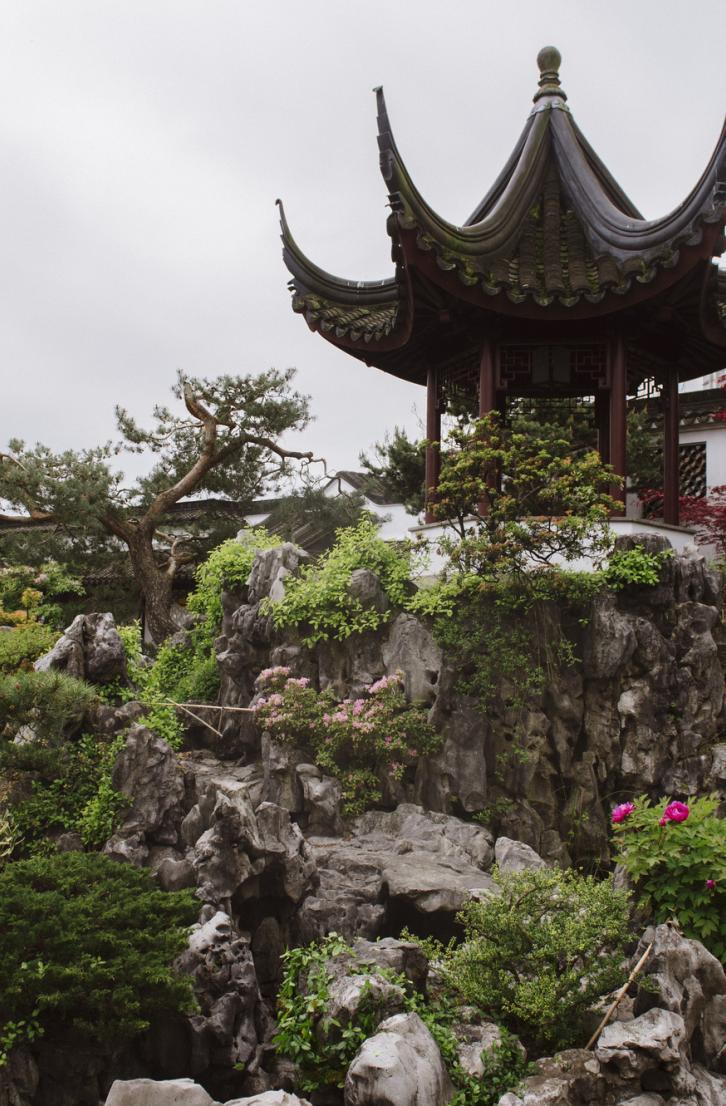
Canada’s unique neighbourhoods
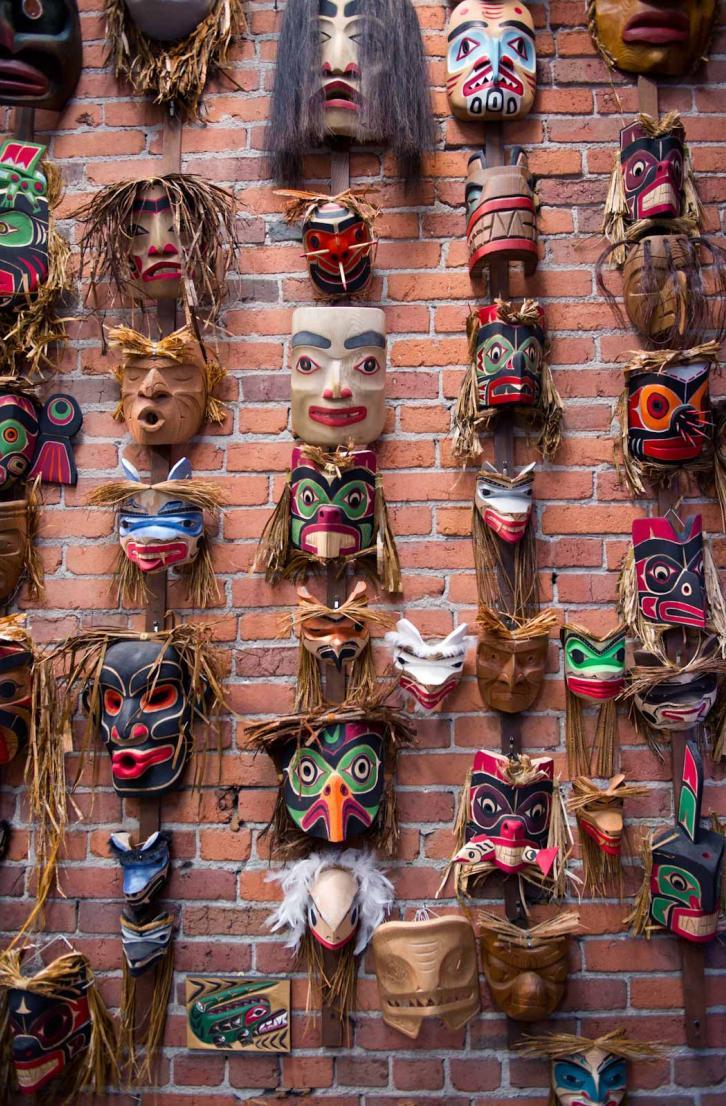
Experience Indigenous culture in the heart of the city
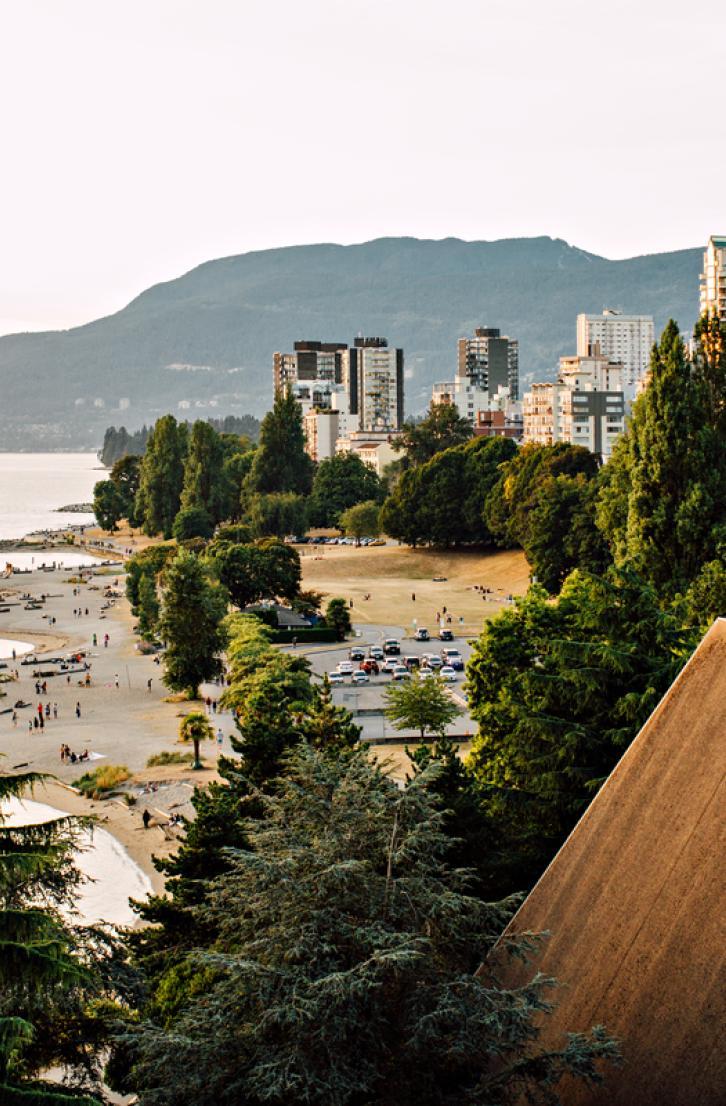
Five of Canada’s best beaches near the city
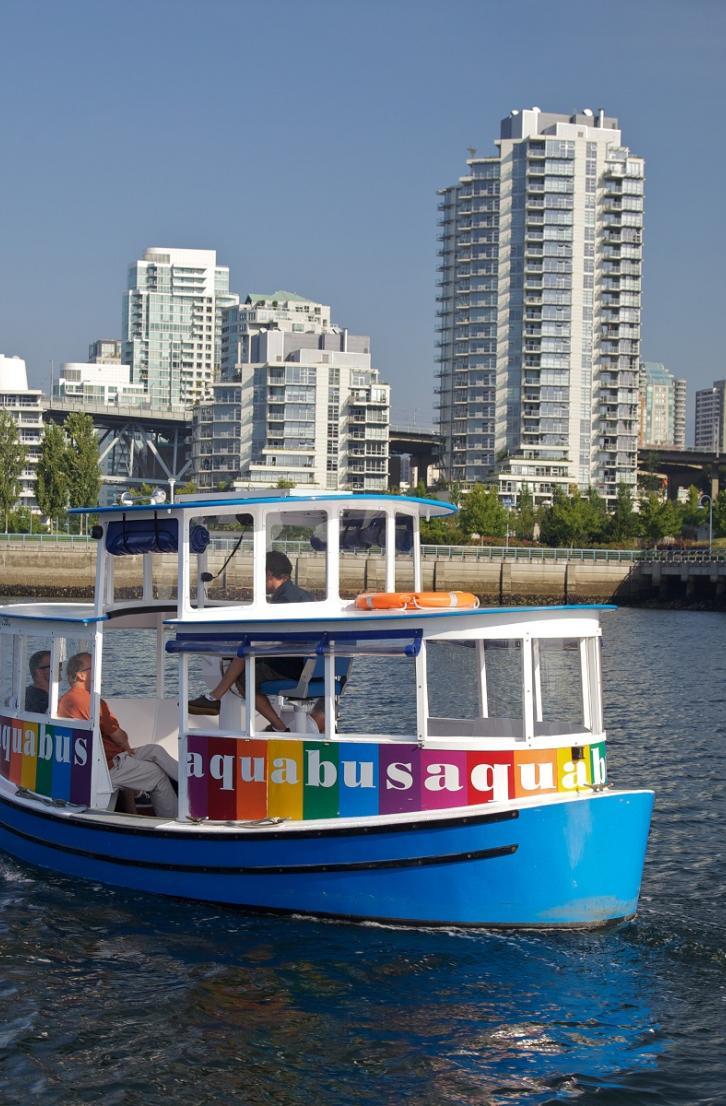
Vancouver's top 10 attractions
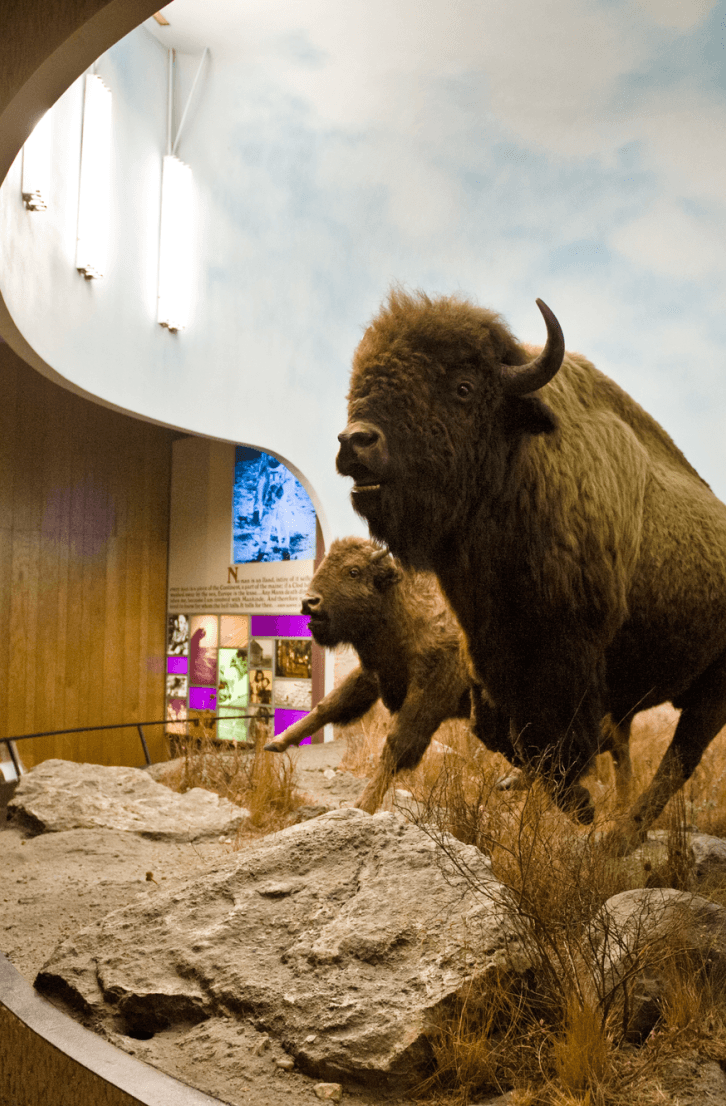
Long weekends in Canada: arts and culture getaways
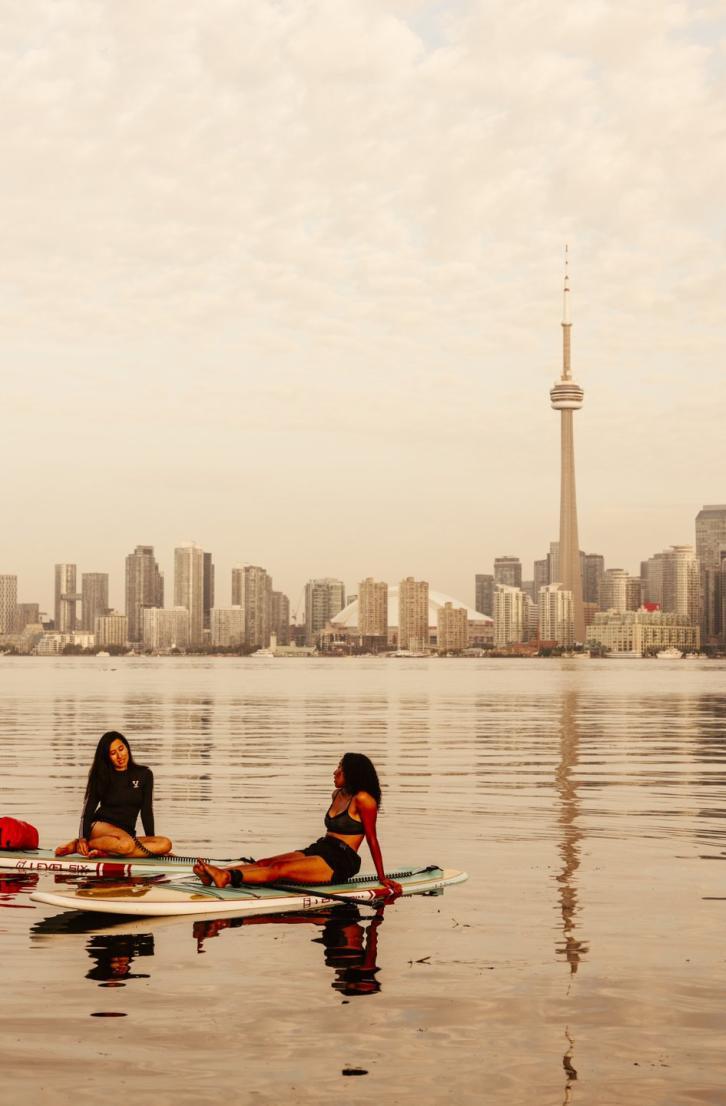
Toronto's top 10 attractions
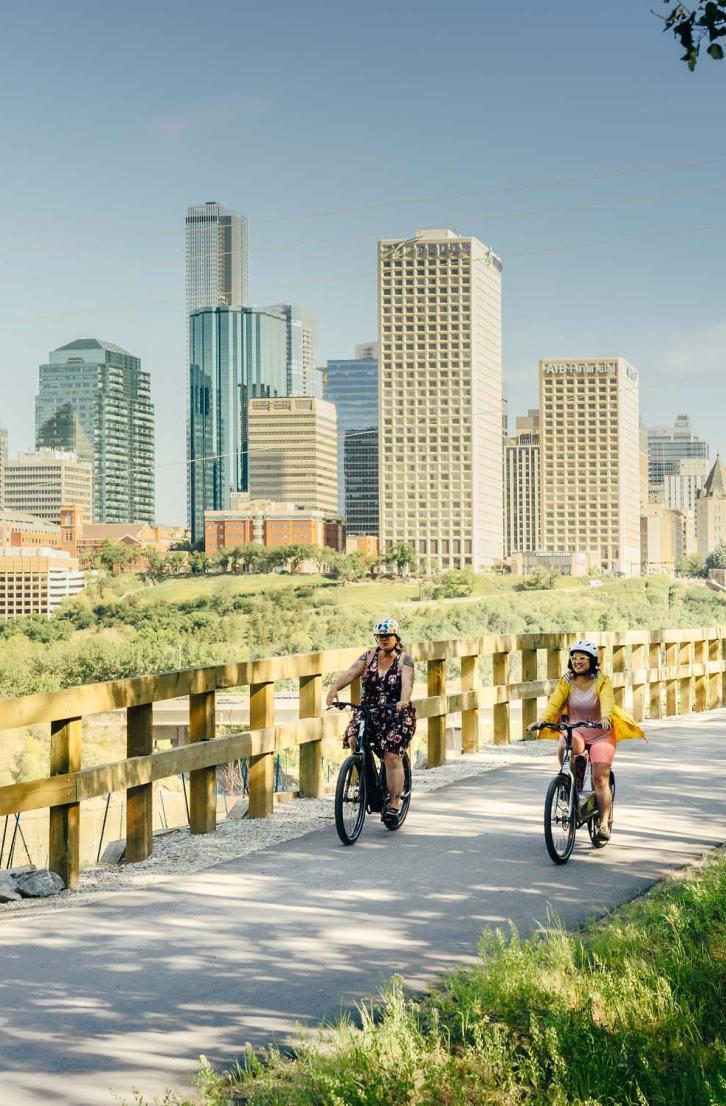
City itinerary: 8 spots to see Edmonton by bike
Something for everyone.
Discover Canada's captivating allure where welcoming metropolises meet sweeping coastlines, embodying a unique blend of wild prairies, fearless adventures, and refreshing perspectives. Whether kayaking off British Columbia, savouring Nova Scotia's lobster feast, or witnessing the mesmerising northern lights in the Yukon. Canada offers a diverse landscape that promises unforgettable experiences with true Canadian charm.
Travel inspiration
Unique experiences
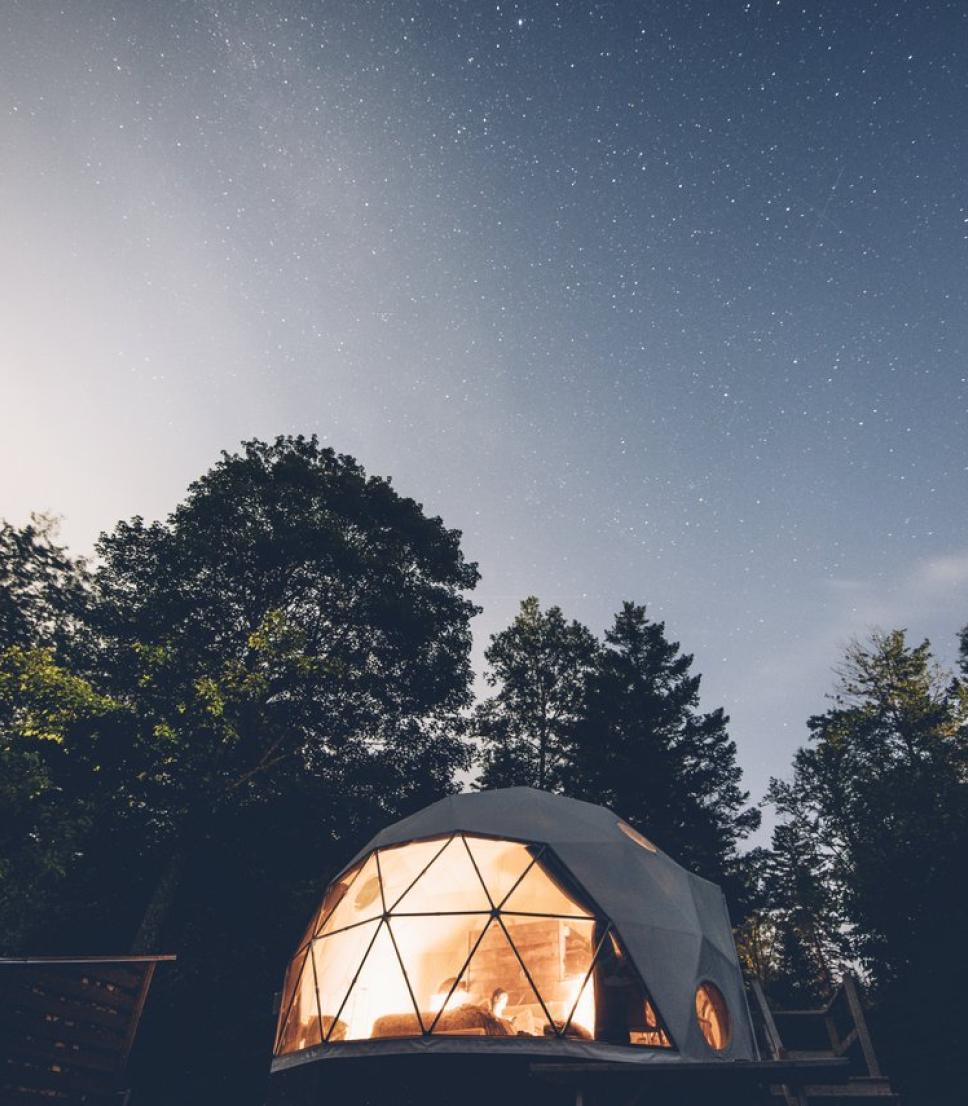
Best camping in Canada – with a twist

Canada’s extraordinary train trips
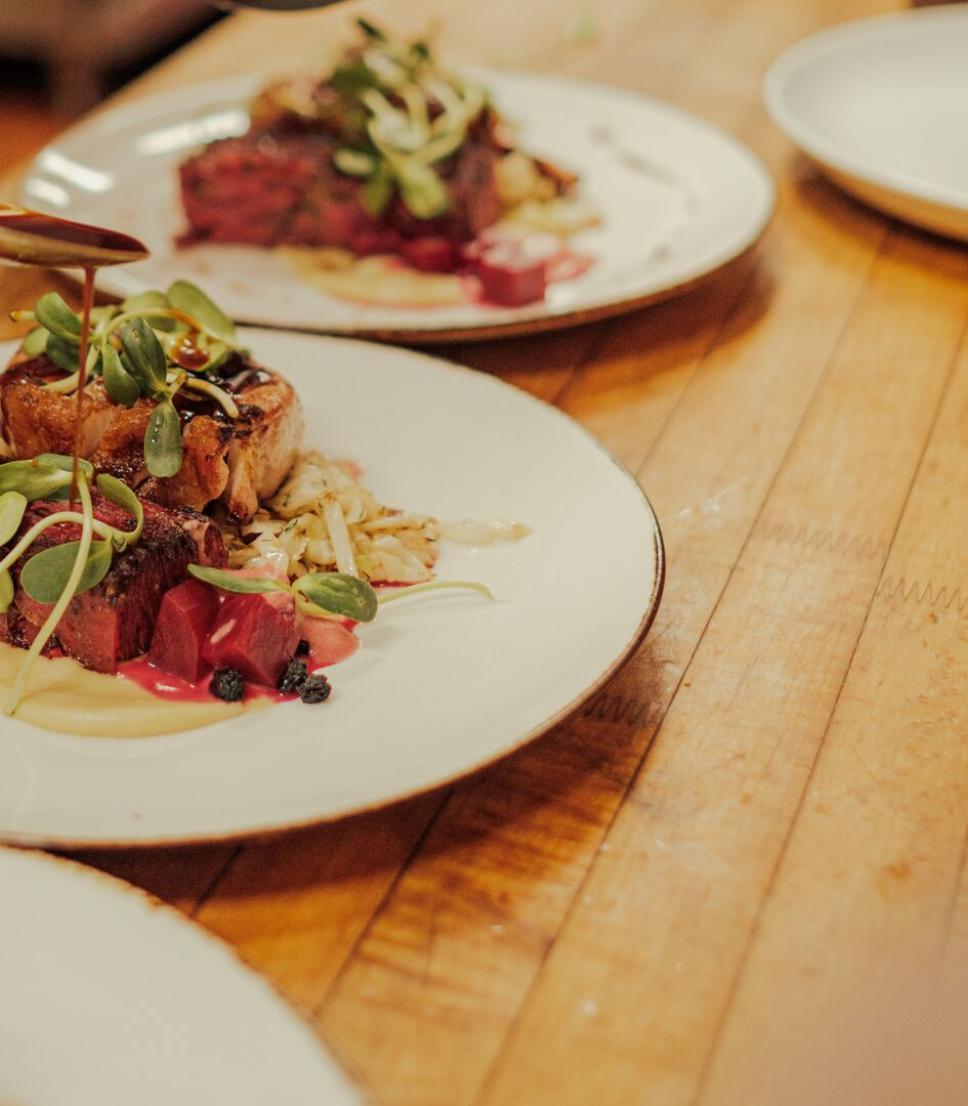
The best flavours of Canada
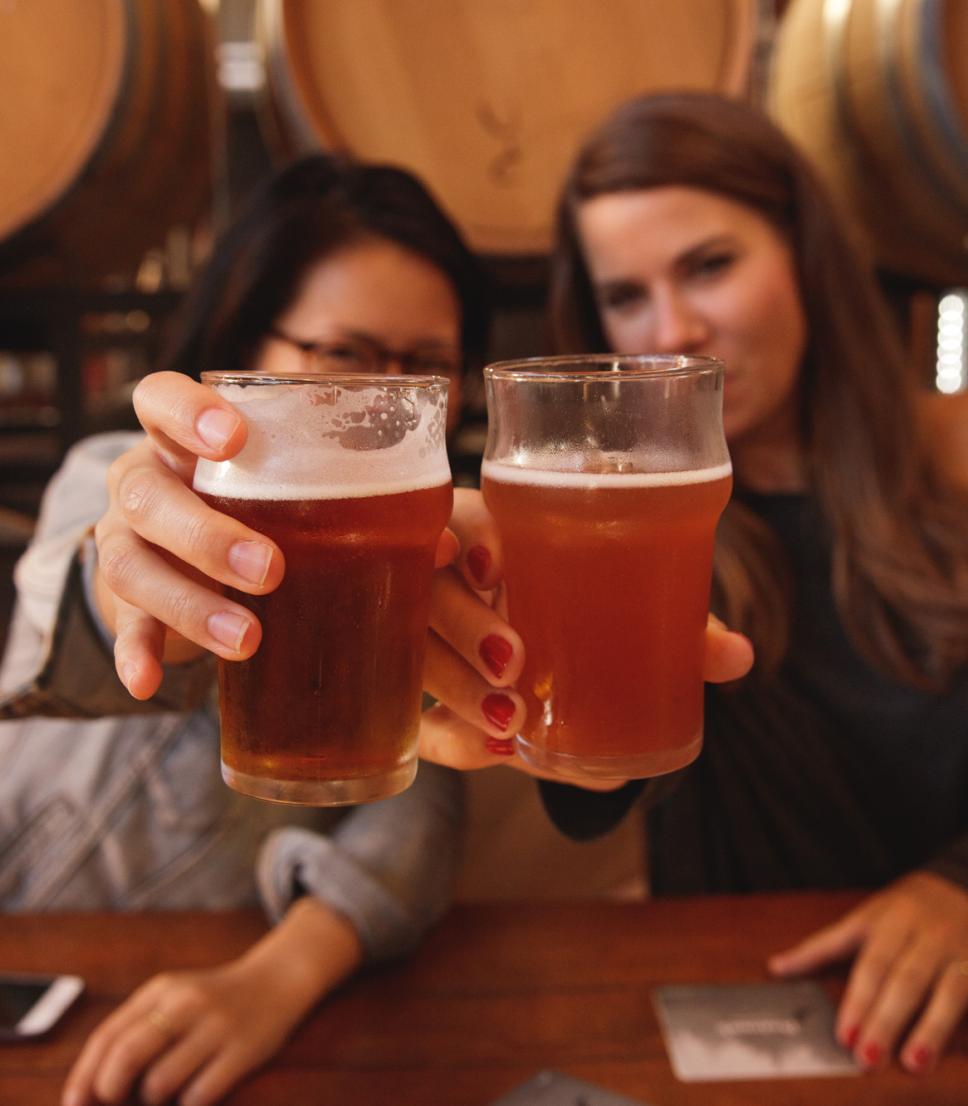
Local's guide: Canada's best breweries and pubs
Natural wonders.
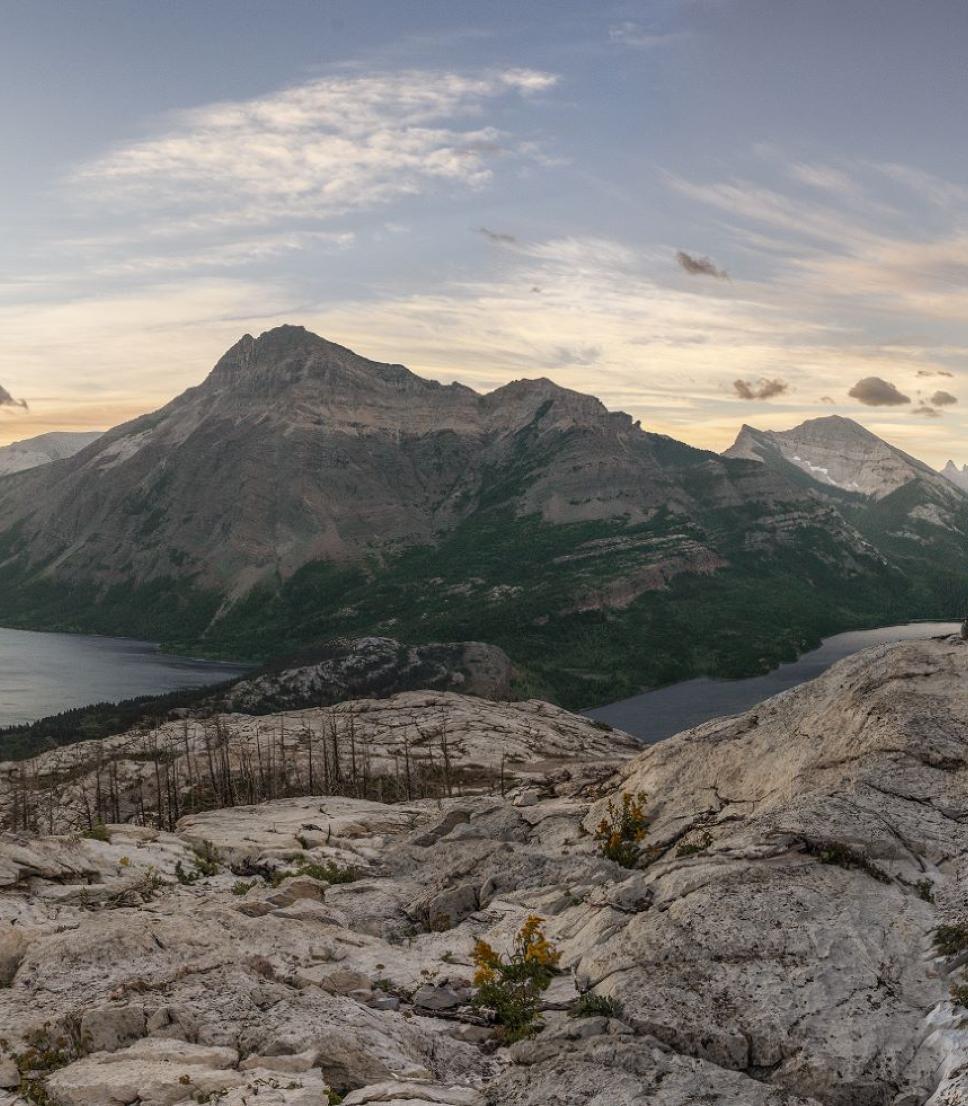
Canadian natural wonders not far from the city
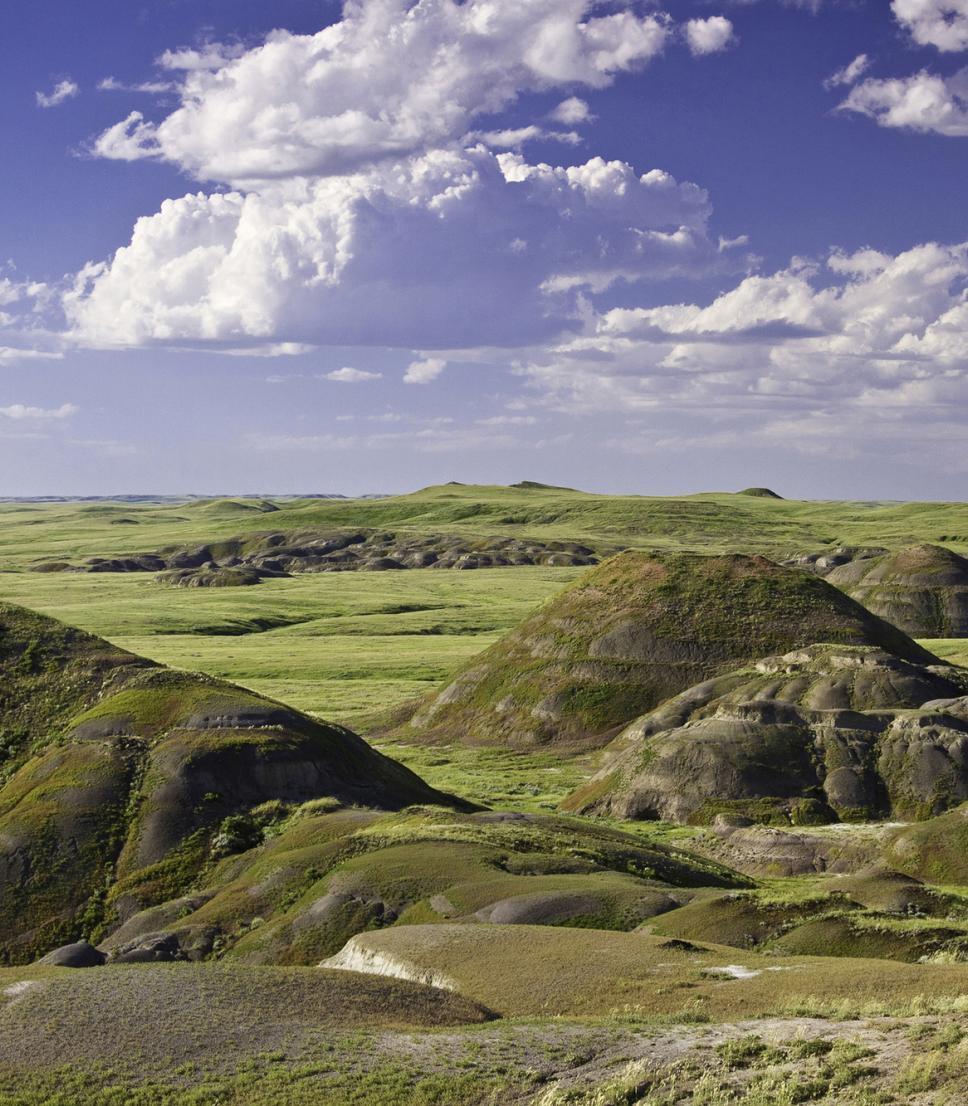
5 unexpected parks to visit this summer
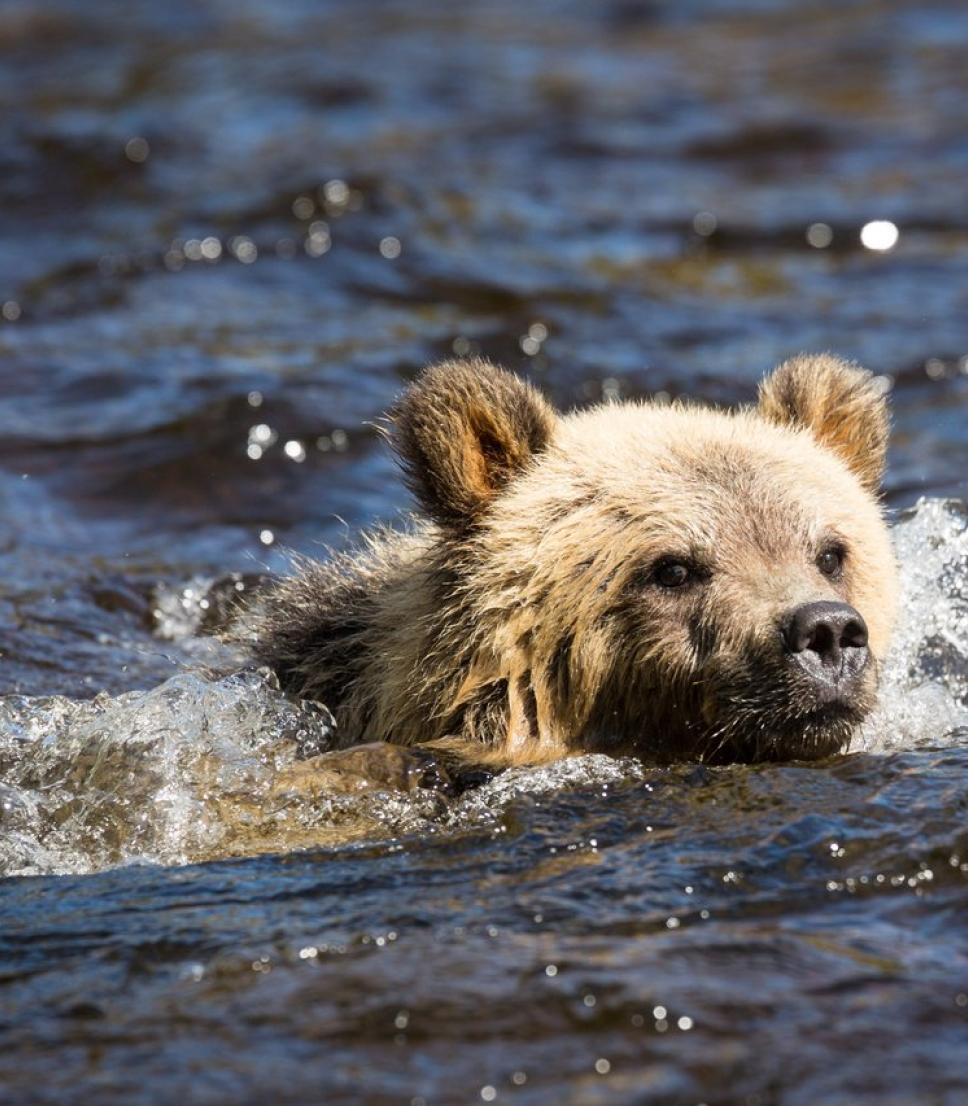
The great Canadian safari
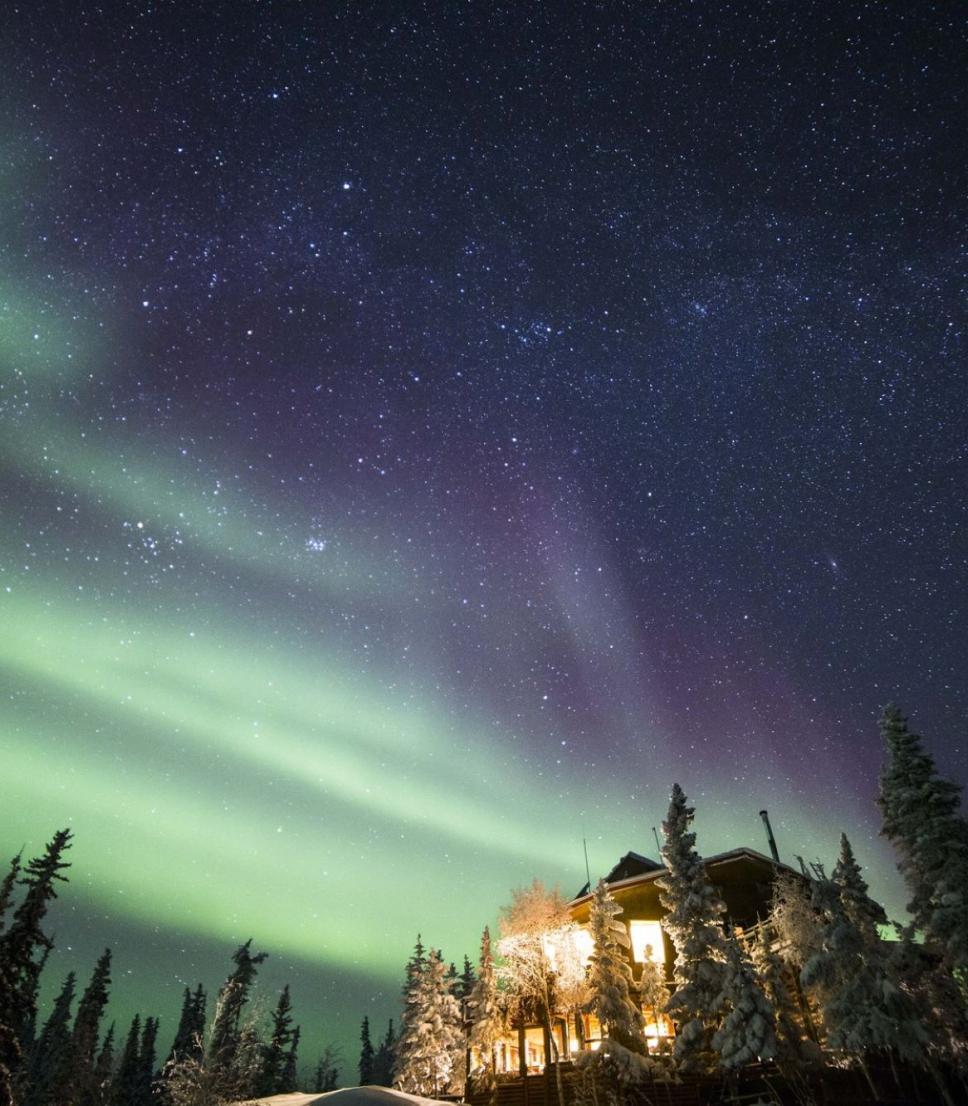
Where to see the northern lights
Follow us and share: #explorecanada.
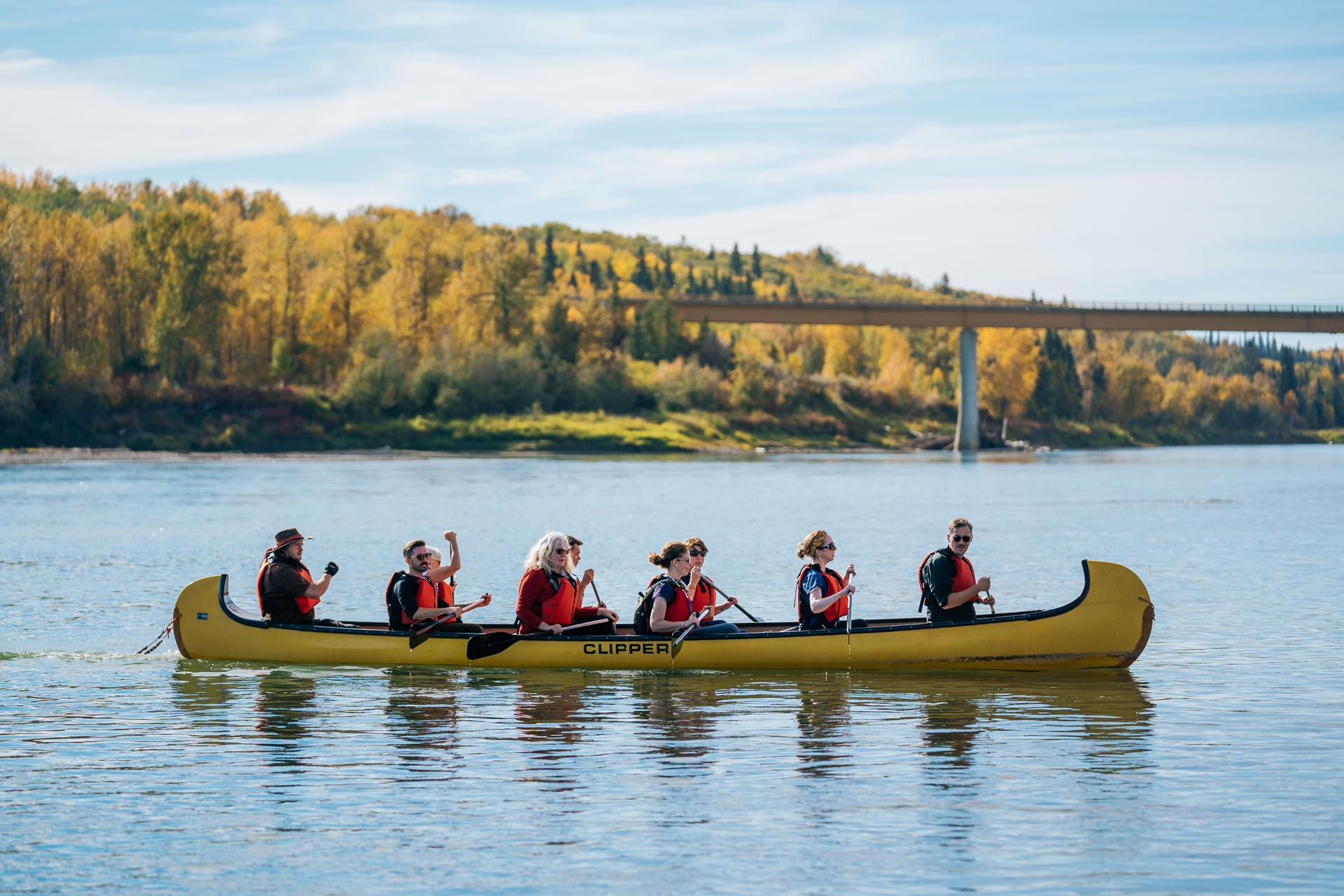
- Skip to main content
- Skip to footer
Must Do Canada
The Best Things to Do in Canada
Main Content
YOUR ULTIMATE TRAVEL GUIDE TO CANADA
We help you do canada right with the best canadian travel guides and videos., want fun weekly canada travel news.
Join 70,000 travellers and get our weekly travel newsletter with new Canada travel guides, videos, travel news, and more!
Things to Do in Canada
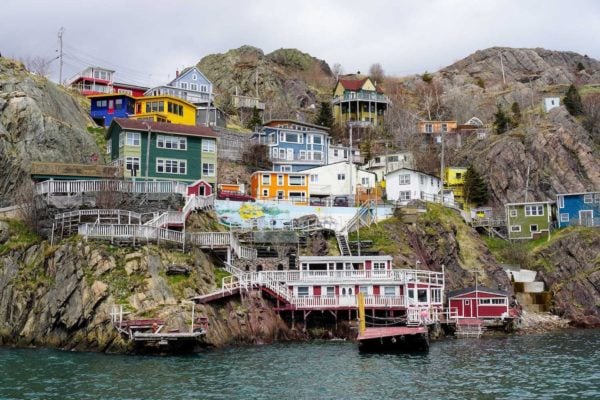
After years of exploring the world, including 42 countries and 6 continents, Matt and Karla decided to focus on their home country of Canada.
For Canada's 150th birthday in 2017, they drove coast to coast to coast for 150-days to create a mini travel series about Canada and a mini-documentary about what makes Canada special.
Since then, they've become experts on travelling in Canada and share all their tips, stories, and advice through videos, travel guides, social media, and more!
Our most popular articles
Date ideas in montreal, 23 of the best things to do in victoria, bc, top 10 things to do in forillon national park, best restaurants in brantford, 58 best things to do in calgary, canada, dune 3 set to film at the athabasca sand dunes of saskatchewan, best seafood restaurants in toronto, these are the best water parks in ontario, 7 unique places to visit in saskatchewan, best sushi in toronto, we’ve been featured on.

Youtube Canada: Videos about Canada Travel
After driving across Canada for 150 days to create a 12-part travel series about travel in Canada, the Must Do Canada Youtube channel took off. Matt and Karla now produce travel vlogs about Canada all year, focusing on Canadian cities, towns, and off-the-beaten track destinations from coast to coast to coast.

Latest From The Blog

Road to 150
To celebrate Canada's 150th birthday in 2017, we jumped in an SUV and drove across Canada for 150 days to experience some of the best things to do in Canada while interviewing people about what makes Canada special. We drove coast to coast to coast, starting in Newfoundland, going all the way up to the Arctic Ocean, down to the Pacific, and back to our home province of Alberta. It was spectacular and we'd love to show you what it was like in our videos.

© 2022 Must Do Canada. All Rights Reserved.
- Privacy Policy
- Work With Us
- Get in Touch
- Facts about Canada
- Canadian Languages
- Canadian Money
- Canada Flags
- Things to Do in Calgary
- Best Canada Road Trips
- Best Road Trip Essentials
- Fall in Canada
- Travel Resources
Log in with user name:
Log in with social media:
Get FREE email communications from Fodor's Travel, covering must-see travel destinations, expert trip planning advice, and travel inspiration to fuel your passion.
- Destinations

Canada Travel Guides
Top destinations guides.
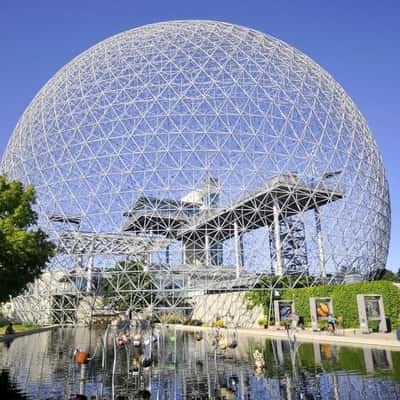
- Quebec City
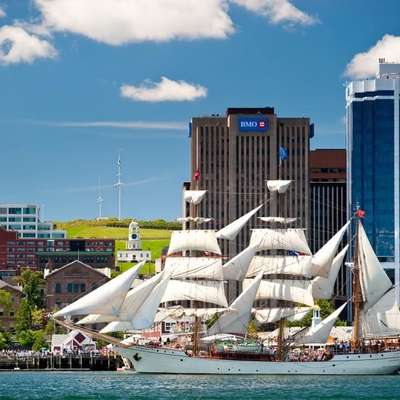
- St. John's
RECOMMENDED FODOR'S VIDEO
All canada destinations.
- Banff National Park
- Canmore and Kananaskis Country
- Jasper National Park
- Southern Alberta
- Waterton Lakes National Park
- Kootenay National Park
- Okanagan Wine Country
- Prince Rupert
- Vancouver Island
- Yoho National Park
- The Acadian Coast
- Campobello Island
- Fredericton
- The Fundy Coast
- St. John River Valley
- Avalon Peninsula
- Central Newfoundland and Notre Dame Bay
- Eastern Newfoundland
- Western Newfoundland
- Cape Breton Island
- The Eastern Shore and Northern Nova Scotia
- South Shore and Annapolis Valley
- Side Trips from Toronto
- Central Coastal Drive
- Charlottetown
- North Cape Coastal Drive
- Points East Coastal Drive
- Baie-Comeau
- Cap aux Meules, Magdalen Islands
- Havre St. Pierre
- Port Saguenay
- Side Trips from Montreal
- Side Trips from Quebec City
- Trois-Rivieres
- Dawson City
Related Forum Posts
Halifax and pei, montreal and halifax, slow 10 day itinerary, 2 day trip from vancouver to banff, boston to cape breton nova scotia..
- Advertising
- Fodor’s Travel Use of this site indicates your consent to the Terms of Use. Copyright © 2024 by MH Sub I, LLC dba Internet Brands. Fodor’s is a registered trademark of MH Sub I, LLC dba Internet Brands. All rights reserved.
Thank you for your interest!

The Ultimate Canada Travel Guide
C anada has been the spotlight of the travel community this year, and with good reason. Lonely Planet ranked it 2017's top country for travel, and Canada has been the word ever since. The icing on the cake? This year only, Canada is offering free admission to all national parks and historic sites . No better time to visit, eh!
Despite the recent hype, Canada's beauty has been long renowned. Our snow-smeared mountains resemble the cosiest of snow globe scenes, and the glacial lakes are as brightly emerald as photos portray. And our overly polite reputation? Well sorry , but I'm afraid that's true too.
As thrifty Canadians ourselves, a thorough guide to our home country is long overdue. We've driven across Canada via a 1-cent per day RV relocation , explored both sea-soaked coasts, and ventured the far North in search of the Yukon's aurora. Here's our ultimate travel guide to seeing Canada affordably!
- 1 How much does a trip to Canada cost?
- 2 When to Go
- 3 Where to Go
- 4 Transportation
- 5 Accommodation
- 6 Activities & Tours
- 7 Food & Drink
- 8 The Thrifty Gist
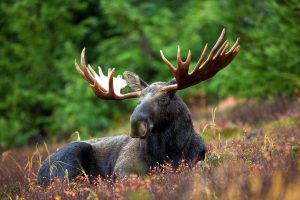
How much does a trip to Canada cost?
First things first, Canada isn't cheap. Food, accommodation, and activities are fairly comparable to Europe or Australia. Tax is not included for nearly all food and goods, so prices can be deceiving. In addition to tax, tipping 15-18% is expected for drinking, dining, and tours.
But don't be dismayed – there are plenty of ways to reduce your costs here. A conservative travel budget for Canada would be $80 USD per day to cover accommodation (e.g. dorms and humble AirBNBs ), food, and potentially activities. This depends largely on how basic your accommodation is, and whether you choose free entertainment versus day tours. A mid-range amount would be $80-$200 USD, again, varying hugely based on your pace of travel, activities, mode of transport, and more.
Most Canadians would tout that our country is beautiful year-round – and we can't argue with that. Ultimately, trip timing should be based on what you want to see. Each season has its own festivals, foods, and unique natural displays. Travellers are spoilt for choice here!
Winter (November – February)
Winter in Canada is snowy, other-worldly, and of course, cold . Our already incredulous landscapes of mountains, rivers, and forests become more majestic when draped in a fluffy layer of snow. Take note that the west coast tends to have milder, rainier winters. Top winter highlights include:
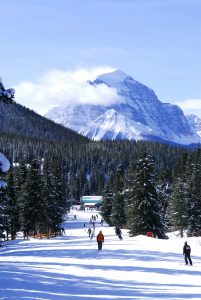
- Snow-smothered mountains and landscapes (British Columbia, Alberta, Yukon, Northwest Territories are great for this). Winter sports are popular country-wide, including skiing, sledding, snow-shoeing, and ice skating.
- A wonderfully winter-y Québec , the French-influenced province with delightful European vibes. Montréal and Quebec City are pure magic in the winter months – check our Montréal winter bucket list here .
- A frozen Niagara Falls (if the temps are cold enough!), colourfully lit during the Fallsview Winter Festival of Lights.
- Delectable winter eats like maple taffy (maple syrup drizzled on snow, twirled onto a popsicle stick). A cup of mulled wine is also great for frigid fingers!
- Infinite winter festivals – a quick Google search will reveal local events. Popular ones include the Quebec Winter Carnival (Carnaval de Québec), Winterlude in Ottawa, and Montreal's Festival of Lights (Montréal en Lumière).
Spring (March to June)
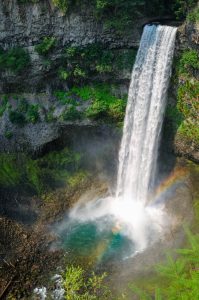
Springtime is bloom time, and is also the shoulder season of travel. This means less festivals and events, but far less tourists too. The snow has melted (or is melt ing ), animals emerge from hibernation, and greenery reappears. Spring also brings lots of rain, so prep for wet days. Springtime highlights include:
- Spotting 10,000 year old glaciers floating through the ocean. In April to late June, Newfoundland and Labrador providers optimal viewing in “Iceberg Alley”. You can even kayak right up to them!
- Outdoor activities like white water rafting gain popularity with increased river flow from snow melt-off in early spring.
- Vancouver's Cherry Blossom Festival is one of Canada's few major spring festivals. This event celebrates the city's perfumed blossoms, which embellish the city in hues of pink.
Summer (June to September)
Summer is a favourite, albeit fleeting, season for Canadians. Temps average between 20 and 30 degrees depending on where you are (our weather is generally erratic). A hurried energy fills in the air as people squeeze in as much sunshine as possible. Summer highlights include:
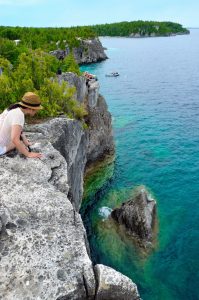
- Wildlife spotting via hiking or camping . With our elusive animals being more active, the chance to spot moose, bears, deer, beavers, and other wildlife increases.
- Festival season! Summer is packed with events across the country, from music and art, to food and wine. Some of the big ones include Calgary Stampede (Alberta), Celebration of Light (Vancouver), Montreal Jazz Festival (Québec), and Just for Laughs (nationwide, originates from Montréal).
- Infinite backyard barbecues . Connect with some locals and experience a classic Canadian summer's night with BBQ'd food, bonfires, and good company.
- Outdoor sports – kayaking, canoeing, and the ultra Canadian choice – portaging. Portaging is an alternation between canoeing and carrying your canoe overland for water and land-based exploring. Not for the weak-armed!
Fall (September to November)
Fall is another top contender for most-loved season. Canadian autumn is world famous for the spectacular leaf colour changes that occur as temperatures drop. This paints mountains and forests in rustic shades of orange, yellow, and red. Fall highlights include:
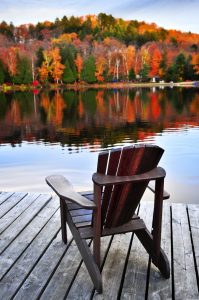
- Polar bear spotting . These creatures are incredibly out of the way and require expensive tours to see, but once you do, it's worth every effort. From October to November polar bears (and beluga whales) are spottable at Churchill, Manitoba and Baffin Island, Nunavut as they fatten up for winter. Tours are mandatory, and are available either as a day tour , or a package trip through TourRadar , G Adventures or Viator .
- Spirit bear watching . Spirit bears are a rare subspecies of black bears (not albino). These mystic creatures are spottable in fall as they fatten up for hibernation. They are best viewed on the west coast from August to September. The Spirit Bear Lodge is a dedicated lodging tour operator for spirit bear spotting.
- Finding fabulous trails, drives, and lookouts for changing leaves changing is a staple activity for Canadian autumn. Each province has leaf change tracking websites (e.g. here for Ontario) to track the where/when of colour changes.
- Toronto's wonderfully quirky Nuit Blanche takes place each October. This eclectic all-night arts event speckles immersive pieces and experiences across the entire city.
- Canadian Thanksgiving takes on the second Monday of October every year. This involves a huge feast of roast turkey drizzled in spices, served with mashed potatoes, roasted vegetables, gravy, and more. If you cannot find a local family to dine with (try searching BonAppetour ), try to find a restaurant putting on a Thanksgiving roast.
Where to Go
Canada is massive – in fact, it's the second biggest country on the planet! Even if you're long-term travelling, scratching its surface is an enormous task.
To start, choose one or two regions to cover. It's best to determine what kind of scenery and activities you want to narrow down your choices. If you're covering a few areas, it is likely you'll need to connect your trip with flights.
Need inspiration? We have a great roundup of some of Canada's best national parks here , and some epic driving routes here to get the Canadian wanderlust flowing.
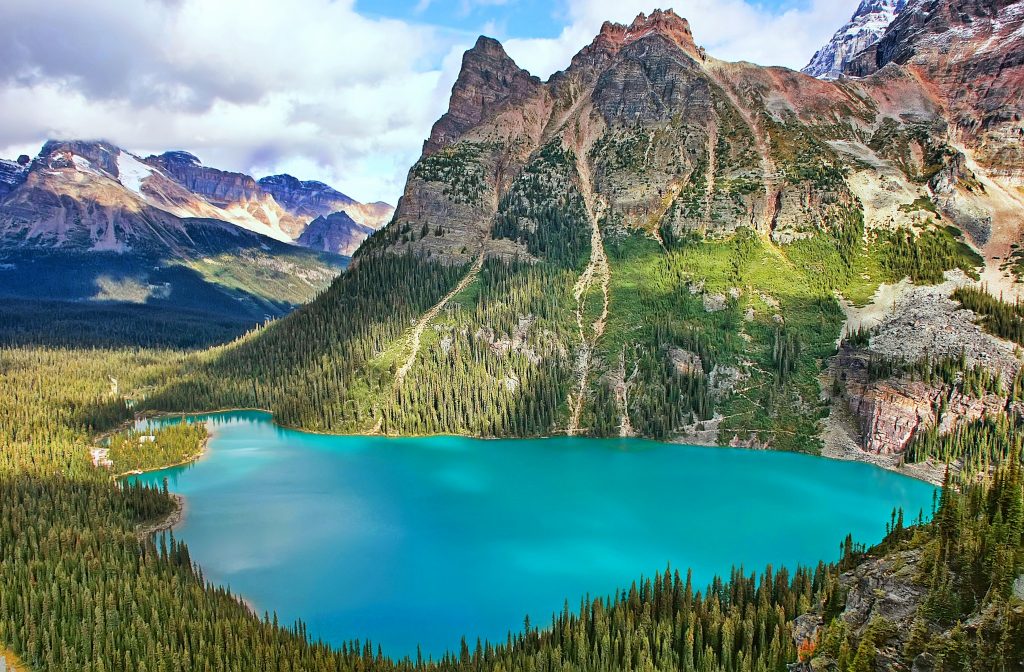
“West Coast, best coast” is a phrase touted by residents of Canada's westernmost province, British Columbia (B.C.). This province, along with its neighbour Alberta, are a popular combo for first-time visitors. Much of Canada's quintessential wildlife and scenery can be found here, amidst lots of other highlights including:
- Mountainous scenery and mountain-based activities . The famous Canadian Rockies wind through both B.C. and Alberta. Many mountains here boast glacial lakes whose neon hue will suck the “wow” right out of you. Skiing and mountain sports are hugely popular here and Whistler – home to the 2010 winter Olympics – begs a visit in summer or winter, whether hitting the powder or hovering the mountains by gondola.
- Beautiful and accessible nature . If visiting Vancouver, Stanley Park is not to be skipped. Arguably the most beautiful city park in the world, Stanley has oceanside views, towering forestry, and the delectable scent of cedar, fir, and spruce trees hanging in the air.
- Quintessential Canadian wildlife . Keen to see bears, moose, beavers, elk, and more? B.C. is one of the best places to view them. Whistler is perhaps the most accessible from Vancouver, but the province's parks are also a great place to search for wildlife.
- An iconic city and skyline . Vancouver has an unbeatable skyline – its modern, shiny downtown sits perched along the Pacific Ocean, while a backdrop of snow-drizzled mountains tower behind. Trendy bars and restaurants abound, as well as plenty of nearby hikes and biking trails to escape the city bustle.
The Great White North
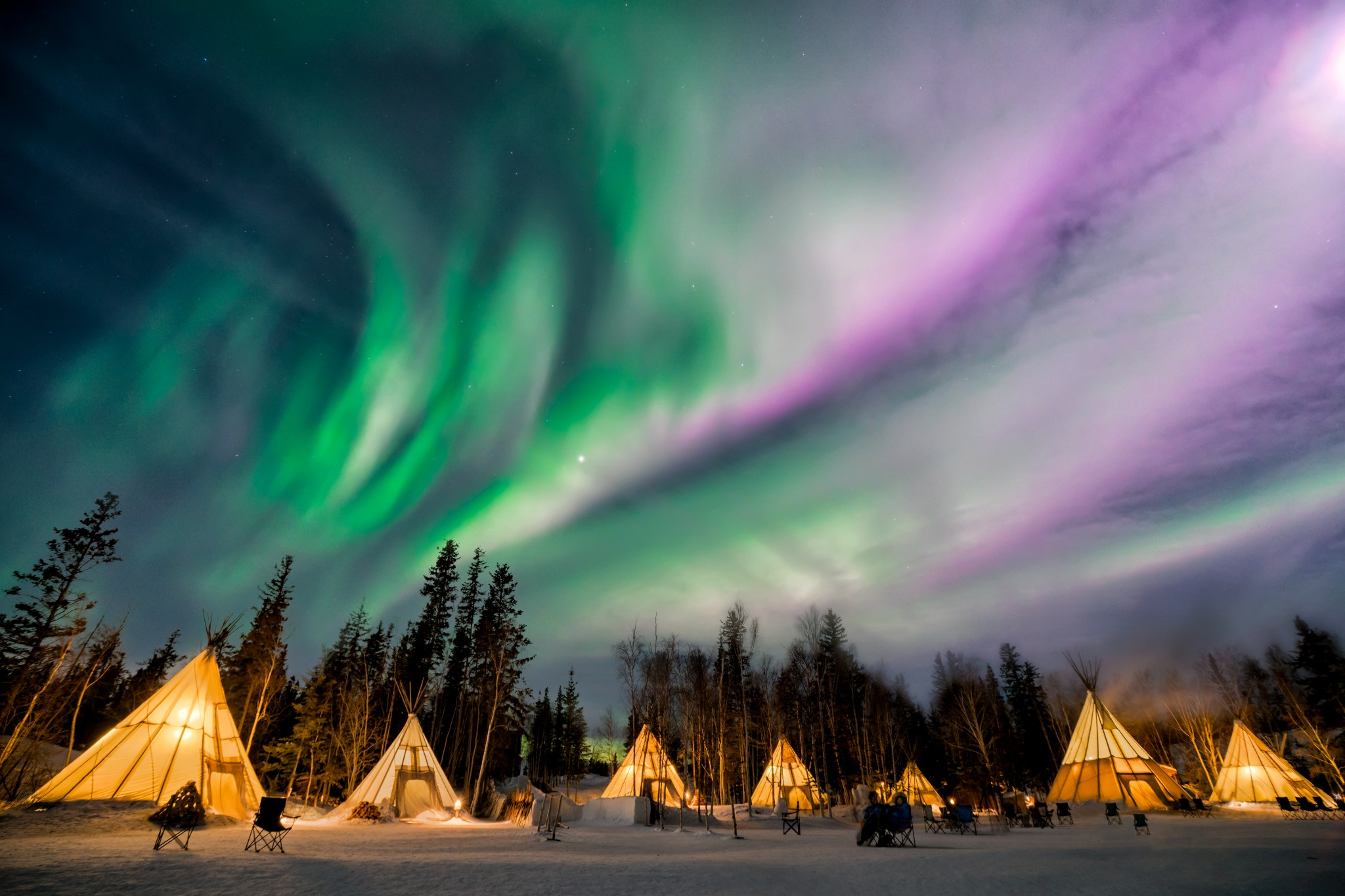
The true great North is a rugged venture to get to, but it is well worth every effort (and penny!) once you've made it. The “North” is comprised of Yukon, Northwest Territories, and Nunavut. Of the three, Yukon is perhaps most accessible as it can be most affordably combined with a visit to B.C. Here's what's the Great White North has in store for its visitors:
- Aurora (Northern Lights) spotting . Whitehorse, Yukon and Yellowknife, Northwest Territories are the most accessible places for spotting the incredulous Northern Lights. September to March is the best time for viewing. To avoid the coldest months, Sept-Nov and Feb-March are best. The cheapest times are tourist shoulder season, around September and March. You can compare viewing tours along with reviews on Viator .
- Epic road tripping . The remote landscapes here feel that much more otherworldly when you jump in a car and explore them. A great drive is to do a figure-eight loop through the Yukon and Alaska (outlined in this post). You'll pretty much be guaranteed bear sightings and a visual feast of mountainous scenery.
- Remote national parks . The North has several stunning national parks including Kluane National Park (Yukon), Auyuittuq National Park (Nunavut), and Nahanni National Park Reserve (Northwest Territories). Camping or cabin-hopping here is a must !
The Prairies
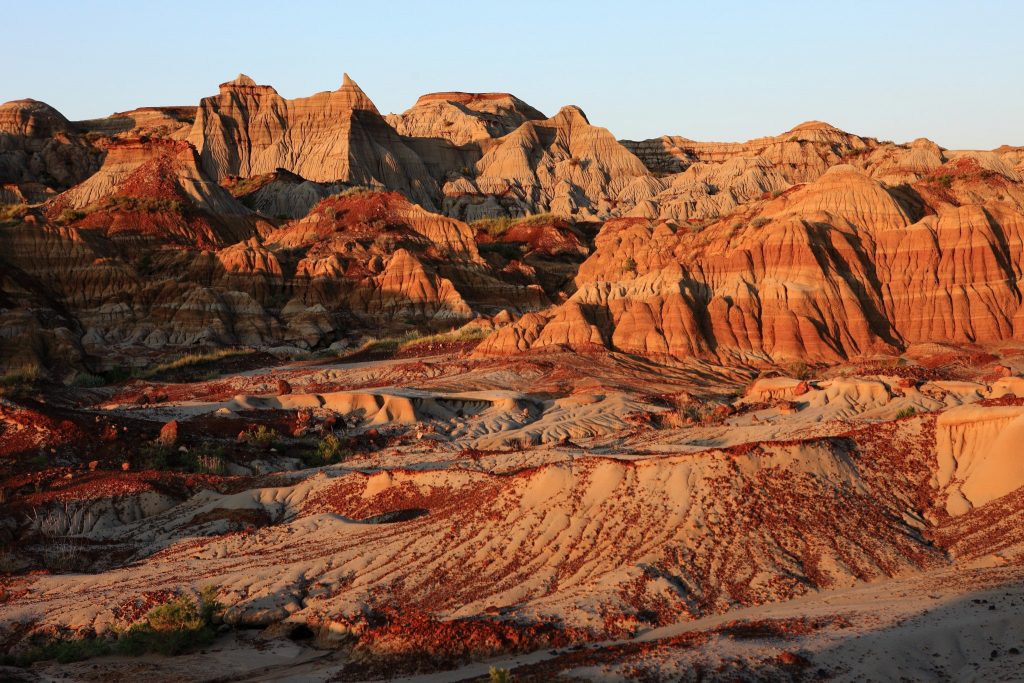
Besides Alberta, Canada's prairies are one of the nation's lesser visited regions. But don't be mistaken, this area is teaming with unexpected treasures. While much of this region is well, prairies , which harvest a large supply of the world's wheat, don't miss out on any of these gems:
- Polar bear spotting . Churchill, Manitoba is remote and expensive to get to, but is one of the best places on earth to for polar bear watching. Tours are required (trust us, you wouldn't want to watch these notoriously aggressive beasts without one!).
- The freshest steak in the country. Alberta produces nearly 3% of the world's beef – this is the place to sink your teeth into some! Calgary has many acclaimed steak restaurants – the best steak we ever had was at Model Milk . Be sure to try the “Fat Kid Cake 2.0” if you have room for dessert!
- Cowboy culture and country livin' . The world famous Calgary Stampede displays Canada's “cowboy” culture in July each year. Featuring a rodeo, concerts, acrobatics shows, and more, there's plenty to see and do!
- Spectacular mountain ranges and national parks . As mentioned in this post, Jasper and Banff National Park are some of Canada's most visited national parks, and justifiably so. Both parks offer prime opportunities for wildlife spotting and a breathtaking selection of mountains and lakes.
- Visit the world's oldest, biggest dinosaur fossils . Dinos in Canada? Yep, we've got 'em (or their fossils at least!). The Alberta Badlands are home to tens of thousands of dinosaur fossils. You can view them in sediment at Dinosaur Provincial Park , or see the biggies on display at the Royal Tyrell Museum.
Central Canada
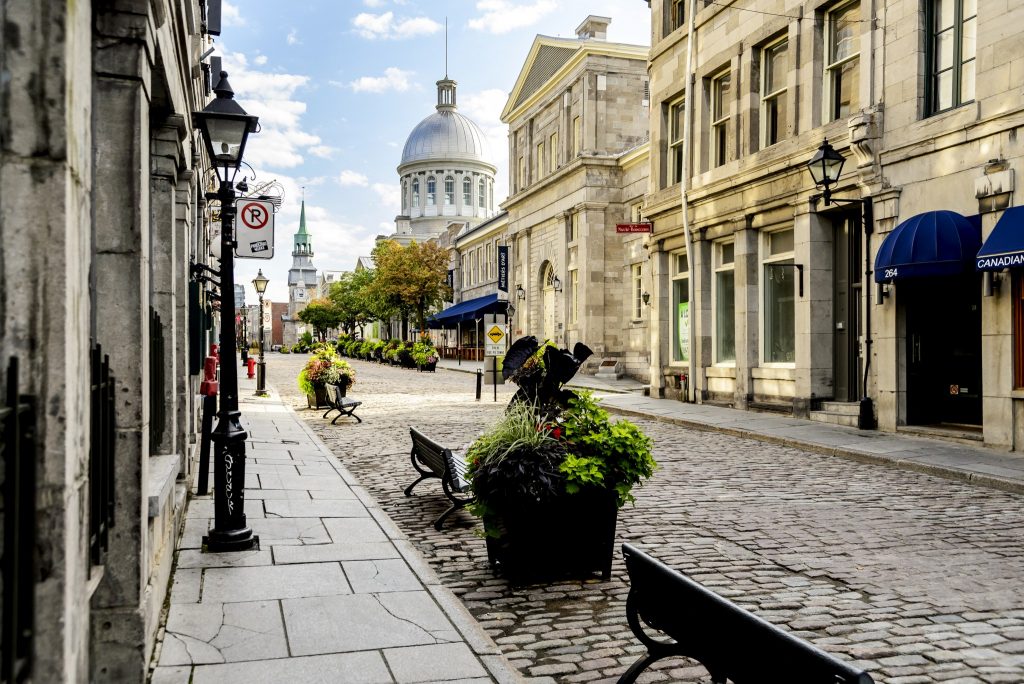
Central Canada is home to some of the nation's biggest cities, as well a delightful array of national and provincial parks. The terrain here is flatter (no towering mountains), but houses an abundance of gorgeous lakes and forests. Here's what the centre of the country has to offer:
- Historic sites and parliamentary buildings . Ottawa is home to parliamentary buildings, quaint historic streets, and the picturesque Rideau Canal (which you can skate on in winter). Québec is teeming with historic sites and cobblestoned streets – Québec City and Montréal being the best to wander.
- Trendy cities, eclectic art, and buzzing nightlife . Toronto and Montréal are rich in music, arts, and festivals. Both cities have plentiful bars and clubs for those seeking booze or a boogie. The Art Gallery of Ontario (AGO) in Toronto is a must for art lovers, as is Montréal's Museum of Fine Arts. Toronto's CityPASS and Montreal's Passporte MTL are great ways to see some of the top attractions in each city at a deep discount.
- Visit the world-famous Niagara Falls . 1.5 hours north of Toronto lies Niagara Falls. Each second, thousands of tonnes of turqouise water spills over Niagara's cliffs. Be warned, the entire immediate vicinity surrounding the falls is the epiphany of tourist tacky. Casinos, buffets, and the biggest selection of mini putt you've ever seen – you get the idea. That said, if you know what to expect, you can still have a tacky great time! A huge number of day tours from Toronto and within the Niagara region can be instantly booked on Viator and GetYourGuide .
- Taste and explore Niagara wine region . Counteracting the tackiness that is Niagara Falls is the splendidly serene Niagara wine region. Niagara-on-the-lake is a quaint Canadian town speckled with fudge shops, homemade goods like quilts and scarves, and adorable cafes. It's also a great base for exploring the region's plentiful vineyards. We recommend exploring with a wine tour so that you can safely taste all the wine you want without worrying about driving or getting from one winery to the next. If visiting wineries independently, a car or bike is recommended – local buses exist, but are sporadic. Here is also one of the few places on earth producing ice wine – a sweet, syrupy dessert beverage made from frozen grapes. It is divine!
- A taste of France in Canada . Québec was colonized by the French hundreds of years ago, and their influence has led to a uniquely French Canadian flair ever since. Montréal is a captivating city, and feels foreign even to resident Canadians with its cobblestoned streets and French cuisine (poutine and crepes are a must !). If visiting Montréal in winter, be sure to check our bucket list items here .

Canada's East is made up of New Brunswick, P.E.I., Nova Scotia, and Newfoundland and Labrador (the latter two names being a single province). A bite-sized east coast trip would include New Brunswick, P.E.I., and Nova Scotia. Newfoundland and Labrador is stunning, but more remote and pricier to get to and explore. This side of Canada offers red sand beaches, fresh seafood, and classic Canadian wildlife like moose and deer. Other eastern must-do's are:
- Witness the world's highest tidal change . The Bay of Fundy (in New Brunswick) is home to the world's highest change of tide – up to 17 metres (56 feet) tidal change takes place here. During each 12 hour tidal change, 115 billion tonnes of water flow in and out of the bay. This is also a good region for whale watching .
- Wander genuine viking settlements . An unknown fact to many is that Canada was in fact a settlement place for vikings as far back as 1,000 A.D. These can be visited in L'Anse aux Meadows, Newfoundland.
- Watch 10,000 year old icebergs bobble and crash . Newfoundland and Labrador are primely located south of the Arctic. Each spring, icebergs break off of ancient glaciers and hobble down what's known as “Iceberg Alley”. One can take tours to see them up close by boat.
- Visit fjord and waterfall filled national parks . Arguably reminiscent of Iceland, Newfoundland's Gros Morne National Park is a must-visit for this region. Endless stretches of fjords, fields, and stomach-churning cliffs are just some of the delights in this remote slice of Canada.
- Embark on one of Canada's best coastal drives . Nova Scotia's Cabot Trail is one of Canada's most impressive drives. The trail winds through Cape Breton National Park, alternating between oceanside stretches and moose-ladenl forests.
- Indulge in Canada's Gaelic culture . Having been inhabited by refugees from the Scottish Highlights centuries ago, Canada's east has a strong Gaelic influence that is still alive today. Watching a local Ceilidh (a show of string music and traditional dancing) is an absolute must.
Transportation
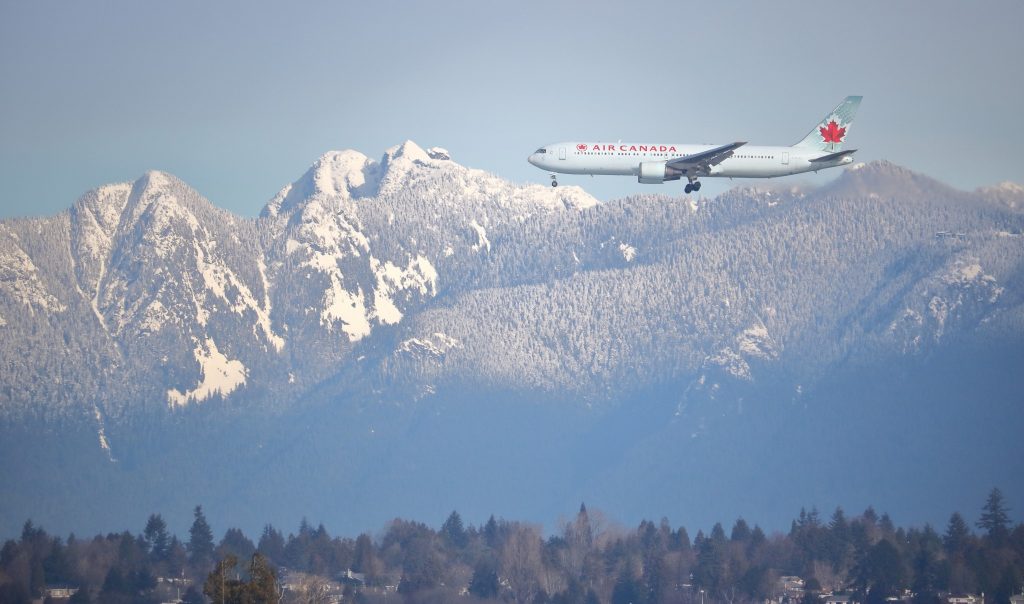
Flights to and within Canada are generally not cheap. We do not have budget airlines, and our airline taxes make tickets wildly expensive compared to other countries. Sale and error fares to/from Canada do exist – including to/from the United States – but this requires flexibility. Some international budget airlines, such as Spirit and WOW Air , are now offering international flights into Canada.
Where you fly into will depend on your route. Here's a quick breadown:
- West coast (i.e. “mountainous” Pacific region) : Start and end in Vancouver (British Columbia) or Calgary (Alberta).
- The Prairies : either Calgary (Alberta), Saskatoon (Saskatchewan), or Winnipeg (Manitoba).
- The North and Arctic Canada : Whitehorse (Yukon) is a great base for exploring both the Yukon and Alaska, as well as aurora spotting. Fly into Iqaluit (Nunavut) to explore the arctic. Yellowknife is best for explore the Northwest Territories and also aurora spotting, though most of these flights will require a connection via Calgary or Vancouver.
- Central Canada: Fly into Toronto (Ontario), which is also a good base for visiting Niagara Falls (can be done as a 1-2 day trip). Toronto is also a departure point for driving or flying to Ottawa, the nation's capital. For Canada's “European” region of Quebec, fly into Montreal.
- The East Coast (i.e. Atlantic): fly into Charlottetown (P.E.I.), Halifax (Nova Scotia), or St. John's (Newfoundland and Labrador). These may require connections if flying internationally.
If you're doing a big Canada trip, it could be cost-effective to book an open-jaw flight. If making several stops, Kiwi is great for constructing complex, multi-leg itineraries. To identify the cheapest dates to fly, we recommend Skyscanner and selecting “whole month” to visualize the month's pricing. For more tips, check our other flight booking hacks here .
Domestic Flights
Canada is well connected by (overpriced) flights. The somewhat “budget” airlines include Porter , Flair , and Air Canada's Jazz , though true bargain fares are rare.
If you are visiting more remote regions (e.g. Northern British Columbia, Yukon, etc.), these areas often have smaller, regional airlines only. As such, these do not always show up in major airline search engines, so be sure to always Google search for local airlines (e.g. “Yukon local airline”).
Car, Campervan, or RV Rental
Canada is one of the best places to explore by car. When planning a road trip, be generous with driving times and allocating days in your itinerary . The distances are long and the scenic stops plenty . If your days are too packed with no time for whimsical stops, you won't feel like you've really “seen” much of Canada at all!
Car rental pricing varies by season and demand. Upwards of $25 USD per day is standard for a compact vehicle. You're wise to book in advance (especially in summer) to at least “hold” a good rate if cancellation is free. We recommend BookingBuddy , which lets you compare many car rental sites in a single search. For more car rental hacks, check our other tips here .
An RV or campervan is an excellent mode of transport, given that it doubles as accommodation. This can be a major saver in tourist hotspots like Banff and Jasper (where many of Canada's famous glacial lakes and mountains are pictured). Keep in mind that bigger, grander RVs guzzle gas quickly. If you can split an RV or camper with friends or fellow travellers, you'll reduce your costs.
Outdoorsy pitches itself as the Airbnb of RV and campervan rentals, letting you book an RV direct from an owner for a fraction of the cost of a standard RV rental (which can easily cost thousands in daily rates, add-ons, and mileage). Insurance and 24/7 roadside assistance is included in all bookings. If you want to book an RV, Outdoorsy is one of the best options.
RV and campervan relocation deals exist in Canada, but are typically posted last minute (~2-3 weeks before the required departure date). Peer-to-peer RV sharing is another great way to reduce costs. Sites like Wheel Estate connect RV/campervan owners with those wishing to rent them when not in use.
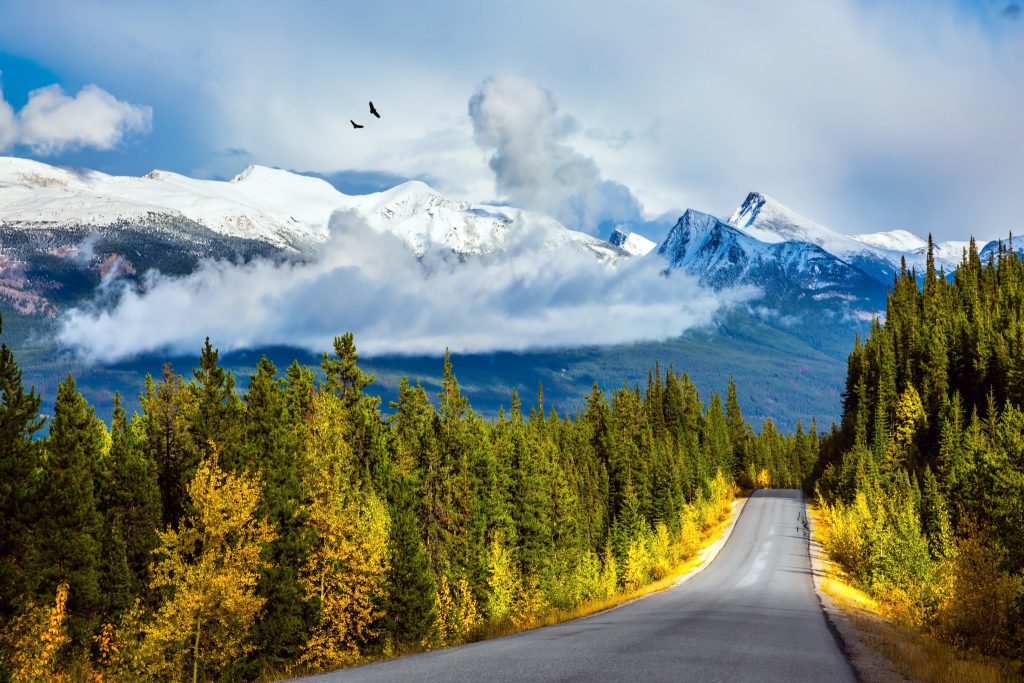
Regional buses connect much of Canada's small towns and cities. If you aren't renting a car, bus travel is typically your cheapest transport between cities and provinces.
Greyhound is the biggest bus operator in Canada, with routes in nearly every province and territory. Tickets purchased seven days in advance are reduced in price. Discounts for military, seniors, and students also apply.
STA Travel offers hop-on hop-off bus passes, providing greater flexibility at reduced cost. These include fixed small group tours, or a non-accommodated hop-on hop-off pass valid for 6 months.
Megabus is a low-cost bus carrier that is notorious for its low prices, but temperamental service. Arrival and departure times are spotty, and buses are sometimes overbooked. We highly recommend paying the small extra fee for reserved seating to ensure you get a spot. Megabus operates between Ontario, Quebec, and some U.S. cities. Coach Canada also runs routes around Ontario and select U.S. cities.
Canada's cross-country railway is one the most impressive train routes worldwide. Tourist and commuter routes are mainly operated by VIA Rail . VIA's most famed experience is the sleeper class trains, where the train cars' glass roofs provide full visibility to mountains, forests, and wildlife. This is a unique and breathtaking way to see Canada, with the hefty price tag to prove it.
Regular (non-sleeper class) trains are more affordable than domestic flights, but pricier than buses. Prices typically start at $31 USD for shorter one-way routes, upwards of $120 USD for longer ones. Tickets are sold in a tiered system, with basic economy as the lowest fare, up to business class. This means in order to get the best price, it's best to book in advance before cheap fares sell out. Concession rates exist for students with an ISIC card .
Every Tuesday, VIA Rail posts sale fares here (or sign up for their newsletter for a reminder). National and regional rail passes are also available, including 21-day and 60-day passes. These are pricey, but can be worthwhile for lengthier trips covering a lot of ground.
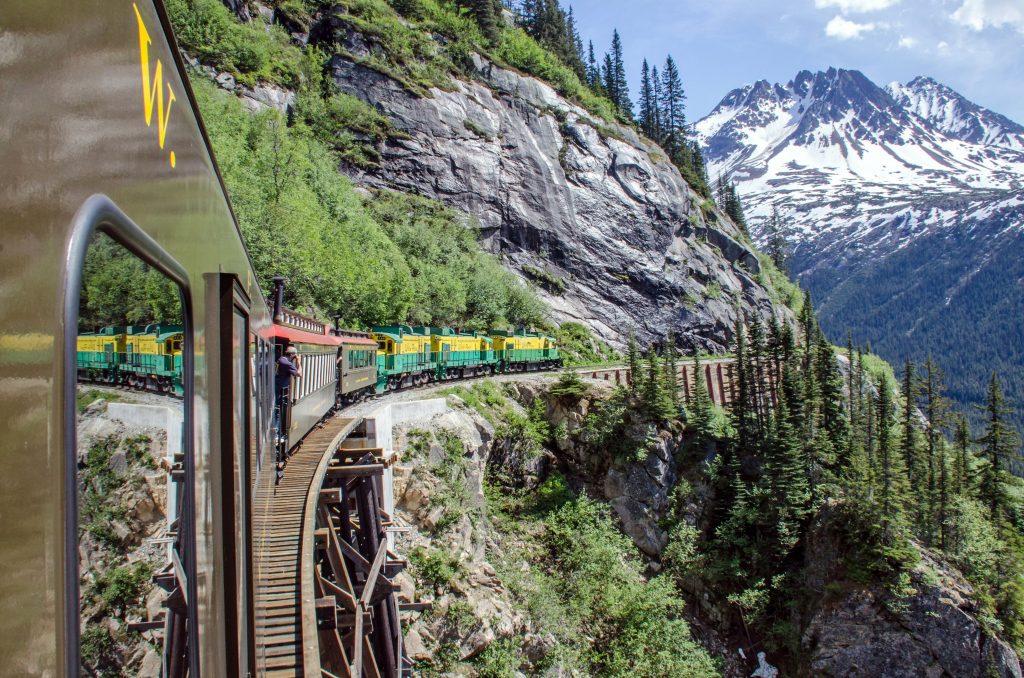
Public Transport
Public transit is available in most major cities and suburbs, with bus coverage at minimum. Major capital cities will have a more sophisticated network of subways or trains. Ride passes are often available and can provide better transit fares. For directions, Google Maps is linked up with public transport, or you can simply ask a transit worker for assistance and a map.
Taxis & Ride Sharing
Taxis are abundant in Canada, as is ride sharing. Ride share services like Uber are typically much cheaper, especially in cities with idling traffic like Toronto, Montréal, or Vancouver. Get $10 off your first ride with coupon code uberthriftynomads .
Bike sharing services are common in Canada's major cities, and can be a great way to create a DIY city tour. Simply pick up a bike from a docking station and return it to another one anywhere in the city.
Rental rates are around $4 USD per hour, though better fares apply for longer trips (e.g. 1-day use or a membership). The bike share services in Canada's major cities are:
- Montreal: Bixi
- Toronto: Bike Share Toronto
- Ottawa: VeloGo
- Vancouver: Mobi Bikes
Accommodation
Accommodation options and prices in Canada are somewhat comparable to Europe or Australia. Dorm beds are $20-$40 USD, camp sites $20-$40 USD, budget hotels ~$60-$100 USD (depending on proximity to city centre), and mid-range and higher hotels $130+ USD. Last minute deals do exist, but touristy regions will sell out and drive up rates in peak season (e.g. summer and winter). Broad hotel search engines like HotelsCombined and TripAdvisor will reveal most options.
Ways to Save
Book last minute.
If your schedule allows it and it isn't peak season, last minute hotel deals are a great way to save. These are often aggregated on apps and websites like HotelTonight or Hotwire . TravelZoo often does a nice roundup (“Top 20”) of hot deals, sometimes including higher end hotels in touristy regions. Another clever service is Roomer , which allows you to take over a hotel reservation of someone who no longer wants it, at a discounted rate.

Use sharing economy services
Sharing economy services like AirBNB are a great way to slash sleeping costs. AirBNB is plentiful countrywide, and arguably provides the best bang for your buck for accommodation. Private rooms typically cost less than a dorm bed if you are two or more people. It can even be used to find places (i.e. backyards) to camp in.
Housesitting is common in Canada, as is house swapping (check our how-to guide on these here ). This is a more feasible option for those with flexible travel plans, or if you can arrange a sit or swap before your trip date. Dog Vacay is a fairly new service which invites one to look after someone's pet in their own home, or the pet owner's home.
Many universities and colleges across the country will rent out dorm rooms when they are unoccupied in summer or during holidays. There are aggregate sites like University Rooms , or conduct a search via Google or TripAdvisor forums to check with locals' knowledge.
Craiglist and Kijiji are popular posting platforms for selling goods like sports equipment and clothing (perfect for picking up ski and camping gear for your trip), as well as listing rental accommodation and ridesharing. For a complete list of the types of sharing economy services out there, check out comprehensive post here .
Build meaningful connections
Canadians are famously friendly, and it's not uncommon for them to open their homes to travellers. Establishing a basic friendship is a good place to start. One can begin seek out connections via platforms like Twitter, Facebook groups, or websites like Reddit (look for sub-reddits in the city you're visiting, like Vancouver or Toronto ). Hostel dorms are also a great place to meet travellers who may happen to have connections in your country of visit.
Work in exchange for accommodation
If you're travelling long term, you can easily combine travel with work to reduce or eliminate accommodation costs. Firstly, you can work in hostel dorms in exchange for your bed. One of the most common work exchange programs is WWOOF – Willing Workers on Organic Farms. This service usually provides accommodation for free in exchange for work on farms, vineyards, and more, with additional pay sometimes included as well.
For other tips on how to work abroad while travelling, read our detailed guide here .
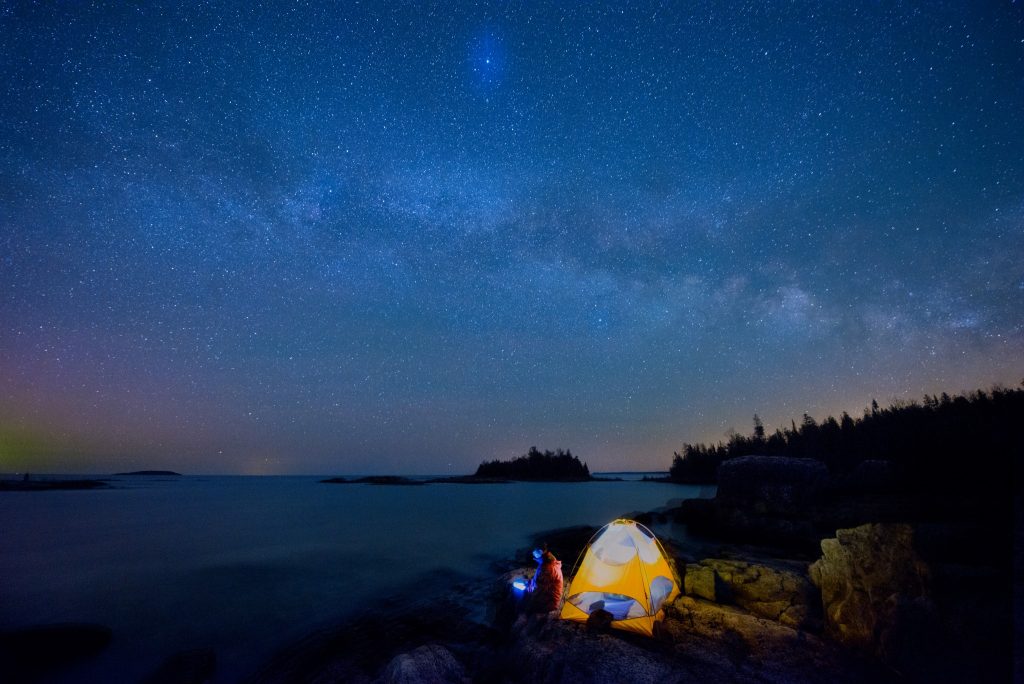
Camping in Canada is a rite of passage for any visitor. It's not only an easy way to sleep on a budget, but a great way to immerse yourself in our country's natural beauty. For 2017 only, all national parks have no admission charge, so this is the year to camp as much as you can!
If you want to reduce camping costs, there's a few ways to do so as park fees do add up. One option is to pay to camp at people's private properties via sites like Gamping . If driving an RV or campervan, it is an unwritten rule that Walmart allows travellers to park overnight in the back of their parking lots. You can also obtain a camping membership to get reduced rates across several sites. For a list of camping memberships, check this post here .
Activities & Tours
Canada has a wealth of cheap and free activities on offer. Sites like Groupon and TravelZoo can be useful for discounted activities, particularly touristy ones. In any city you visit, be sure to check for national parks, walking trails, and city parks as these are often cheap or free. Vancouver's Stanley Park is perhaps one of the most impressive city parks in the world, and it doesn't cost a dime!
Group tours can be a great for both day venturing or longer trips. Organized tours are often essential to visit particular sites, such as glaciers, boat tours, or historic sites.
Below is a list of some of the more popular tours to do in Canada. All these links allow you to book online with immediate confirmation:
- Niagara Falls Horn blower falls tour (Niagara Falls, Ontario): Book on GetYourGuide or Viator
- Orca (killer whale) watching (West Coast): Book on GetYourGuide or Viator
- Polar bear watching (Churchill, Manitoba): Book as a day tour , or as a package tour through TourRadar , G Adventures or Viator
- Northern Lights tours (Yellowknife, NWT and Whitehorse, Yukon): Book on Viator
- Wildlife tour through Jasper and Banff, Alberta (note: you can DIY this yourself, but those tight on time or not wishing to drive may prefer an organized tour): Book on Viator ( Jasper , Banff ) and GetYourGuide ( Jasper , Banff )

Food & Drink
Like America, fast food chains are the cheapest eats here. Tim Hortons is our national coffee chain, which serves up healthy-ish mediocre food. Bagels and cream cheese, light salads, sandwiches, and soups can all be bought for $2-$8 USD, while hot drinks range from upwards of $1.60+ USD.
Mid-range restaurants vary from $10-$20 USD per meal, and upwards of $20 USD for a nicer venue. Breakfast is often the best bang for your buck, especially at diners where small hot meals can range from $4 USD upwards. Lunch specials are common at restaurants, sometimes around the $8 USD mark. Dinner is most expensive to dine out for. Food trucks are common in some cities (e.g. Toronto, Vancouver, Calgary) and can offer quick cheap food options.
Keep in mind that menu prices do not include the provincial sales tax (8-13%) and a tip (15-18%, but only expected at sit-down restaurants). Groupon can be good for finding reduced restaurant prices, but cross-check reviews on TripAdvisor or Yelp before buying.
Prepping your own food is always cheapest, whether that means packing simple eats for breakfast (e.g. fruit and granola bars), or tortilla wraps with your simple choice of filling such as tuna or peanut butter. Farmers markets exist in most major cities, and can be great for stocking up on fresh produce and locally farmed eats.
The Thrifty Gist
- Canada is a big place. Choose only one or a few regions for your trip to cut costs (and flights). The less you fly, the more you'll save.
- Exploration by car (combined with camping) is a cheap, scenic alternative to flying.
- Visiting regions that are rich in natural beauty (e.g. West Coast) is a great way to reduce paid activities since free ones like hikes and parks are plentiful.
- Travelling in off season such as spring or fall can reduce prices, but also means more unpredictable weather.
- Dining out is not cheap – alternating between DIY meals and making breakfast or lunch your big meals out will slash costs.
Nomadic Matt's Travel Site
Travel Better, Cheaper, Longer
Nova Scotia Travel Guide
Last Updated: November 10, 2023

That welcoming atmosphere — combined with over 100 beaches, picturesque lighthouses, fresh seafood, and endless rugged coastline — makes visiting Nova Scotia an exciting (and underrated) destination in Eastern Canada.
Outside the capital city of Halifax, Nova Scotia is dotted with tiny fishing villages and coastal towns. Drive further north, and you’ll hit scenic Cape Breton Island which comes alive with vivid fall foliage each year along its Cabot Trail. In short, Nova Scotia is a province perfect for road trips.
Another bonus: Nova Scotia doesn’t see nearly as many tourists as the country’s larger cities, making it a somewhat off-the-beaten-trail destination that’s much more affordable than many of the more popular cities in Canada.
This travel guide to Nova Scotia can help you plan your trip, save money, and make the most of your visit to this beautiful east coast province!
Table of Contents
- Things to See and Do
- Typical Costs
- Suggested Budget
- Money-Saving Tips
- Where to Stay
- How to Get Around
- How to Stay Safe
- Best Places to Book Your Trip
- Related Blogs on Nova Scotia
Top 5 Things to See and Do in Nova Scotia
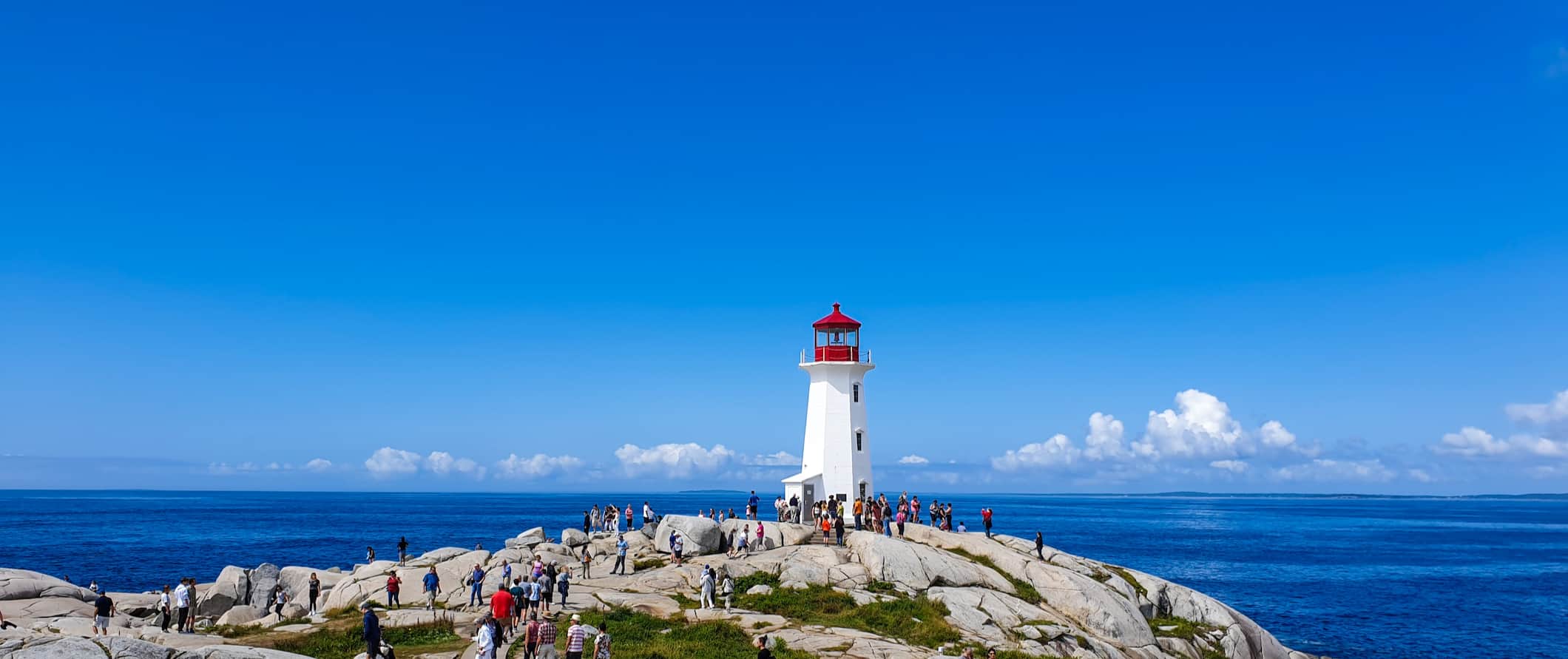
1. Hike the Skyline Trail
The Skyline Trail is easily the most popular hike in Cape Breton Highlands National Park. It stretches 6.5 kilometers (4 miles) through thick forest and then along the coast to reach a viewing platform overlooking the ocean. It’s a breathtaking walk on which you might even encounter moose. The hike is suitable for all levels and takes between 1.5-3 hours. Make sure to bring your own water, good shoes, and clothing layers as the weather can change quickly. The most popular time to visit is July, August, and September but many people come to see the autumn leaves change in October. Park admission is 8.50 CAD.
2. Tour the Alexander Keith’s Brewery
Alexander Keith is a legend in Nova Scotia. He opened his brewery in 1820, became mayor of Halifax, and was so wildly popular that Halifax throws a massive birthday party for him on the waterfront every October. Today, the 200-year-old brewery is one of the oldest in North America. Take a tour of the Halifax brewery to learn more and sample some of the limited edition beers at “Stag’s Head” pub at the end of the tour. Tours are 29.95 CAD.
3. Hang out in Halifax
Halifax is Nova Scotia’s cool capital city. It’s home to half a dozen universities so it has a lively nightlife, a thriving music scene, and countless trendy restaurants and craft breweries. Stroll the waterfront boardwalk, grab a lobster roll, and spend the evening at a local pub. Take the ferry over to Dartmouth across the harbor, known as ‘Halifax’s Brooklyn’ and check out the live music at New Scotland Brewing Company. The city has a youthful, arty vibe and is worth visiting for a couple of days.
4. Visit Peggy’s Cove Lighthouse
There are some 170 lighthouses in Nova Scotia, but Peggy’s Cove Lighthouse is the most famous. Once you see it, you’ll understand why it’s one of the most photographed lighthouses in the world. It’s a quintessential red-topped lighthouse standing on a rocky shore overlooking the Atlantic. Walk around and enjoy the ocean views and snap some photos. Beware: rogue waves are common, even on calm days. It’s possible to reach the lighthouse via bus and taxi but it is much easier by car.
5. Drive the Cabot Trail
Other things to see and do in nova scotia, 1. go tidal bore rafting in shubenacadie.
The Shubenacadie River’s rapids in the Bay of Fundy are powered by the highest tides in the world. One minute you’re floating down a peaceful river keeping an eye out for bald eagles and other wildlife and the next minute the river turns into a raging, foaming mass of rapids. When the tide changes twice a day, the tidal bore temporarily reverses the flow of the river, resulting in this wild river ride. A four-hour tour includes the guided rafting excursion, safety flotation gear, extra mud sliding on request (yes!), and post-rafting showers for when you need to clean up. Make sure to bring an extra clean change of clothes as well as a towel. A four-hour rafting trip starts at 95 CAD.
2. Go whale watching
In the summer and fall, 12 species of whales visit the waters around Nova Scotia, including pilot whales, minke whales, giant humpbacks, and the endangered North Atlantic right whale. There are tons of whale-watching tours to choose from in the area, with most operating outside of Halifax. Mariner Cruises takes you out for a 2.5-hour boating tour for 50 CAD departing from Westport on Brier Island, while larger groups like Lunenburg Whale Watching Tours start at 70 CAD.
3. Enjoy summer on the water
Summer is short in Nova Scotia, so when the weather is nice and the sun comes out, Nova Scotians hit the water to go sailing, kayaking, paddle boarding, and canoeing. Surfing is also big here, with Lawrencetown Beach being one of the more popular areas to find the biggest waves. Go swimming at Melmerby Beach or take a kayak around Kejimkujik National Park. Kayak rentals cost around 25 CAD for two hours or 32 CAD for the entire day.
4. Wander the Annapolis Royal Historic Gardens
Spanning 17 acres of greenery, these historical gardens overlook a tidal river valley and include an enormous rose collection (best seen in July) as well as an 18th-century Governor’s Garden and a 19th-century Victorian Garden. You can check out the reconstructed 1671 Acadian House or grab a coffee and light lunch at The Elm Tree Café (seasonal). It’s 16 CAD to visit except November to April when there is only a suggested donation of 5 CAD as the Gardens are not maintained during the winter months.
5. Visit the Alexander Graham Bell Historic Site
This museum in Cape Breton is host to a rich collection of artifacts and documents chronicling the life and career of Bell, the inventor of the telephone. The collection was accumulated by his family during their time here in Baddeck, Cape Breton. In the parlor, you can see Bell’s personal effects, like his favorite jacket, notebook, and walking stick. You can also take a behind-the-scenes “White Glove Tour” of the artifact storage facilities. The site is open May-October and admission is 8.50 CAD (13 CAD for the white glove tour).
6. Explore the Highland Village Museum
Over the centuries, the Canadian Maritimes have been heavily influenced by Scottish and Irish immigration. This outdoor pioneer museum and Gaelic culture experience highlights that history. The 43-acre site overlooking Bras d’Or Lake includes historic buildings like three frame houses, a mill, and a forge. You can take part in a traditional céilidh dance, hear Gaelic singing, and even practice a little of the language yourself. It’s open from June to October and costs 11 CAD.
7. Tour the Maritime Museum of the Atlantic
This museum depicts Nova Scotia’s maritime history with exhibits on boatbuilding, World War II convoys, the Titanic, and the Halifax Explosion (a huge disaster that happened in 1917, when two ships carrying ammunition ran into each other and destroyed much of the city). It’s a very comprehensive overview of the region’s history. Admission is 5.15 CAD from November-April and 9.55 CAD from May-October.
8. Visit nearby New Brunswick or Prince Edward Island
These two provinces are close to Nova Scotia and can be visited as day trips (or multi-day trips) if you have your own vehicle. Don’t miss New Brunswick’s Fundy National Park to see the world’s highest tides. In P.E.I., you can soak up some tranquility on the sea (and eat lots of seafood) and visit the Anne of Green Gables house.
9. Explore Lunenburg
Lunenburg is one of the most colorful towns you’ll ever come across. With its narrow streets and colonial 18th- and 19th-century buildings painted in bright hues of pinks, oranges, and greens, you’ll feel like you’ve stepped back into the past. There are still tall ships in the harbor and even an operational blacksmith hammering away on the waterfront. The harbor is home to the famous Bluenose II, a replica schooner of the original Bluenose boat that’s featured on the Canadian dime (ten-cent coin). The Bluenose was a famous fishing/racing schooner that went undefeated in her 18-year run and is an iconic part of Canadian history.
10. Tour the Canadian Museum of Immigration at Pier 21
If there’s just one museum you visit in Halifax, make it this one . Pier 21 was the immigration point for one million newcomers to Canada between 1928 and 1971. You’ll learn about 400 years of Canadian immigration history through first-person stories, archival photos, artifacts (including trunks and personal treasures), and digital documentation. Exhibits are incredibly interactive and you can even research your family’s pre-1935 immigration records from all ports of entry in North America. Admission is 15.50 CAD.
11. Relax in Kejimkujik National Park
For a taste of Maritime nature, come to this national park to paddle, hike, camp, and relax. Here you’ll find ancient rock carvings (petroglyphs), canoe routes, and coastal wilderness punctuated with sandy beaches and wildlife. To learn more about the Mi’kmaq people who traditionally have called the region home, join a storytelling session, take a guided petroglyph tour, or participate in a canoe-building workshop. Admission to the park is 6.25 CAD.
For more information on other destinations in Canada, check out these guides:
- Calgary Travel Guide
- Montreal Travel Guide
- Ottawa Travel Guide
- Quebec City Travel Guide
- Toronto Travel Guide
- Vancouver Travel Guide
- Vancouver Island Travel Guide
Nova Scotia Travel Costs
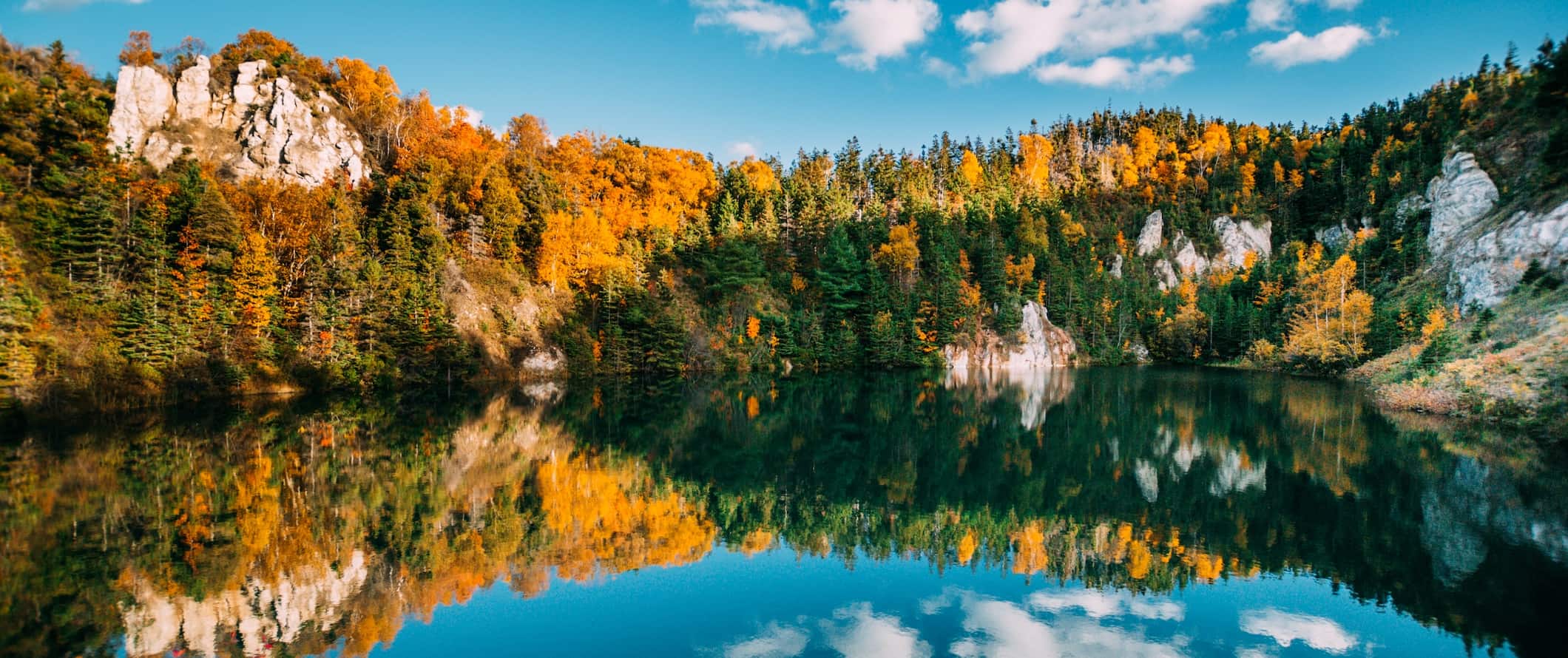
Hostel prices – Hostels are virtually non-existent in Nova Scotia. The only exception is Halifax. A bed in a 4-6-person dorm costs 30-35 CAD per night. A private room costs about 78-90 CAD per night. Expect basic amenities like free Wi-Fi and self-catering facilities.
For those traveling with a tent, camping is available around the province starting at 27 CAD per night. This gets you a basic plot without electricity for two people.
Budget hotel prices – Budget hotels start around 105 CAD per night for a place outside of Halifax. Within Halifax, most budget hotels start at around 130 CAD per night. Expect basic amenities like free Wi-Fi, TV, AC, and a coffee/tea maker. Prices are lower during the off-season.
Airbnb is available all around Nova Scotia. Private rooms start around 50-75 CAD per night, though they average double (or even triple) that price. An entire home/apartment costs around 100 CAD per night, though they average closer to 160 CAD (200 CAD in Halifax). Book early to find the best deals.
Food -In Nova Scotia, seafood is king. Be sure to try scallops and oysters, wild blueberries, lobster, and donair (thinly sliced beef in a pita with a sauce that’s similar to kebab; it’s the official food of Halifax). Also, be sure to sample more general Canadian staples like poutine (fries with gravy and cheese curds), beaver tails (fried dough with maple syrup), Canadian bacon, and the oddly tasty ketchup chips.
You can find cheap street food eats like donair for around 7 CAD (go to Johnny K’s), or a small pizza on Halifax’s “Pizza Corner” (an intersection at Blowers Street and Grafton Street full of pizza places) for less than 10 CAD.
A fast food combo meal (think McDonald’s) costs around 12 CAD. A lobster roll at an inexpensive restaurant is about 20 CAD, while lobster poutine is closer to 18 CAD. A bowl of pasta (such as scallop carbonara) costs around 20 CAD. A beer to go with it is about 7 CAD while a glass of wine starts at 9 CAD.
A meal at a higher-end restaurant costs about 40 CAD for a steak or duck entree without a drink, while lobster is closer to 55 CAD.
If you cook for yourself, expect to spend 50-65 CAD on groceries per week. This gets you basic staples like rice, pasta, seasonal produce, and some meat or fish.
Some recommended places to eat include No. 9 Coffee Bar (Lunenburg), The Barn Coffee & Social House (Mahone Bay), The Economy Shoe Shop (Halifax), McKelvie’s Restaurant (Halifax), and The Wooden Monkey (Halifax).
Backpacking Nova Scotia Suggested Budgets
If you’re backpacking Nova Scotia, expect to spend about 70 CAD per day. This assumes you’re staying in a hostel, cooking all your meals, limiting your drinking, taking public transit to get around, and doing mostly free activities like swimming and hiking. If you plan on drinking, add another 10-15 CAD to your daily budget.
On a mid-range budget of 180 CAD per day, you can stay in a private Airbnb, eat out for a few meals, enjoy a couple of drinks, rent a car to get around, and do more paid activities like rent a kayak, visit museums, and day trips to a nearby province.
On a “luxury” budget of 280 CAD per day or more, you can stay in a hotel, rent a car, drink more, eat out for most meals, and do whatever tours and activities you want. This is just the ground floor for luxury though. The sky is the limit!
You can use the chart below to get some idea of how much you need to budget daily, depending on your travel style. Keep in mind these are daily averages — some days you’ll spend more, some days you’ll spend less (you might spend less every day). We just want to give you a general idea of how to make your budget. Prices are in CAD.
Nova Scotia Travel Guide: Money-Saving Tips
Nova Scotia can be an affordable destination if you budget properly. It gets more expensive during peak summer season and early fall (everyone comes to see the leaves change color). Here are some of my ways to save money in Nova Scotia during your visit:
- Stay with a local – If you plan ahead, you can usually find a Couchsurfing host in Halifax. This way, you not only have a free place to stay, but you’ll have a local host that can share their insider tips and advice.
- Take a free walking tour – Walking tours are a great way to get familiar with a city and its culture. Halifax Free Walking Tours offers daily informative walking tours in the summer. In the off-season, tours are available by request. Just be sure to tip your guide at the end!
- Look for free events – Many of Nova Scotia’s events and festivals are free, including Halifax’s Busker Festival in July. Many towns (like Pictou) also have free summer concerts in public spaces. Check the Tourism Nova Scotia website for more info!
- Go camping – If you want to camp, use novascotia.goingtocamp.com to find available campsites around the province. A two-person site costs around 27-35 CAD.
- Look for the happy hours – The Ultimate Happy Hours website lists all the happy hour drink and food specials around Halifax. They update with new info frequently!
- Get the Museum Pass – If you plan on visiting lots of museums, the Nova Scotia Museum Pass lets you pay one price to access any of the province’s museum sites. It’s valid for 12 months and costs 47 CAD.
- Bring a water bottle – The tap water here is safe to drink so bring a reusable water bottle to save money. LifeStraw makes a reusable bottle with a built-in filter to ensure your water is always safe and clean.
Where to Stay in Nova Scotia
Nova Scotia doesn’t have many hostels and most of the existing ones are in Halifax. Here are my suggested places to stay:
- HI Halifax Heritage House Hostel
- Halifax Backpacker
- Bear on the Lake Guesthouse
How to Get Around Nova Scotia
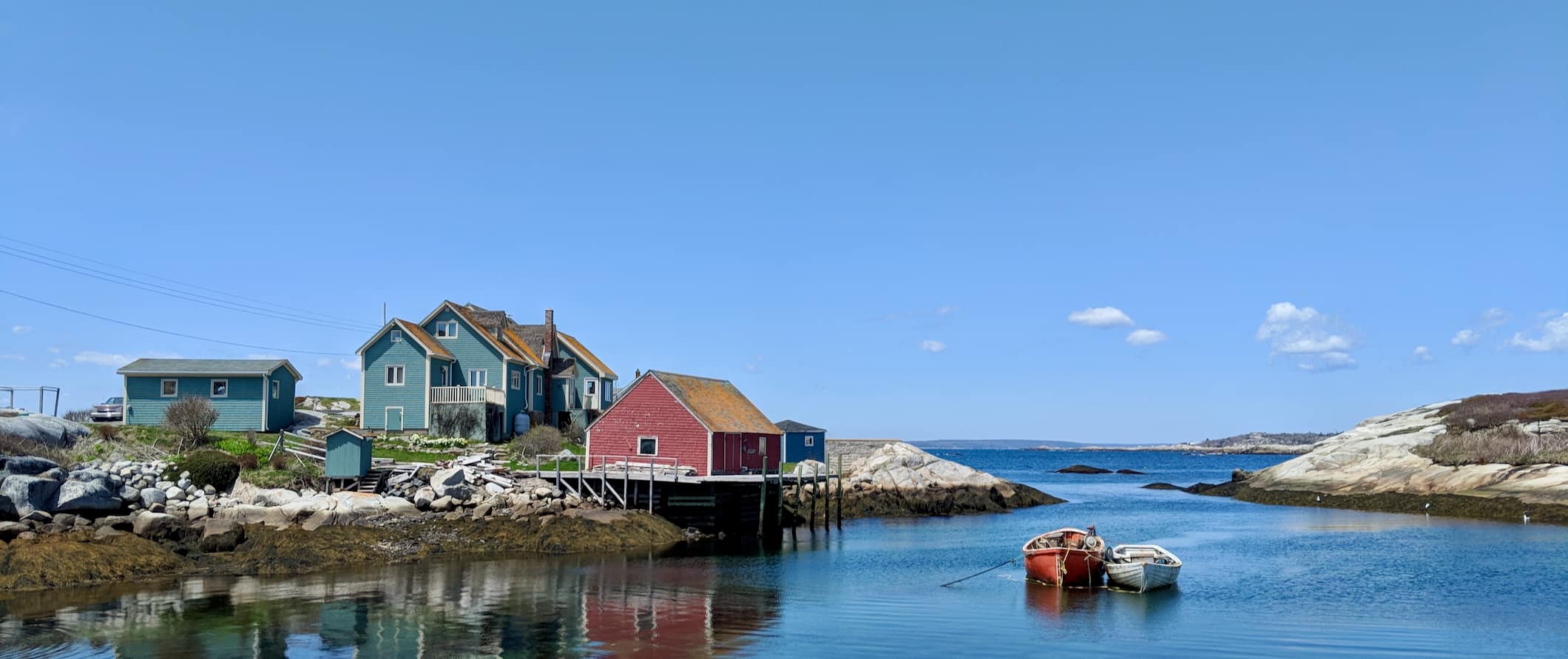
Public transportation – Halifax is the only major urban center in Nova Scotia and locals depend on a public bus system to get around. Halifax’s public buses can take you all around the inner city and into the suburbs, but the downtown area is very walkable. Fares are 2.75 CAD.
You can take the MetroX bus from the airport to downtown St. John’s for 4.25 CAD (exact change required). There’s also a ferry connecting downtown Halifax to Dartmouth for 2.75 CAD.
Bus – Taking the bus is the best way to get around Nova Scotia if you don’t have a car. Maritime Bus connects most towns in the province. A two-hour trip from Halifax to Lunenburg is 26 CAD, while Halifax to Mahone Bay takes an hour and costs 20.25 CAD. Halifax to Sydney (Cape Breton) costs 72 CAD and takes 6 hours.
To find bus routes and prices, use BusBud .
Taxi – Taxis are not cheap here. Their base rate is 3.75 CAD, and it’s an additional 1.70 CAD per kilometer afterward. Prices add up fast so I’d avoid them if you can.
Ridesharing – Uber is available in Halifax, but the city is easily walkable so I’d skip the ridesharing if you can.
Car Rental – Car rentals can be found for as little as 30 CAD per day for a multi-day rental. If you want to take advantage of all that Nova Scotia has to offer, this is your best option. For the best car rental prices, use Discover Cars .
When to Go to Nova Scotia
Nova Scotia is at its busiest in the summer, with the best weather occurring between June and August. Temperatures often exceed 25°C (78°F). Keep in mind that accommodation prices are higher during this time, but tourist attractions are never overly crowded compared to elsewhere in Canada.
Both early fall and late spring are also excellent times to visit. The weather is warm, you can do all the outdoor exploration you want, and the tourist season isn’t in full swing. This is the best time to drive Cape Breton’s Cabot Trail. The fall colors are particularly pretty.
Winters in Nova Scotia are cold and wet, with temperatures ranging between from -17-0°C (0-32°F) from December to March. If you come during this time, be prepared for all weather types and dress in layers because it is cold. Keep in mind that many businesses shut down for the winter (mostly outside of Halifax). In short, I’d avoid a winter visit unless you’re here for winter sports and activities.
How to Stay Safe in Nova Scotia
You don’t have to worry much about crime in Nova Scotia — it’s incredibly safe to visit. Your greatest risk is petty crime like pickpocketing, but even that is super rare. Overall, I really wouldn’t worry about crime here. Getting hurt hiking is more likely to happen than any crime!
Like much of rural Canada, Nova Scotia has ticks that carry Lyme Disease. If you’re hiking, try to wear long sleeves or pants, or stick to well-trodden trails. Check yourself for ticks after spending time in nature.
Solo female travelers should generally feel safe here. However, the standard precautions you take anywhere apply (never leave your drink unattended at the bar, never walk home alone intoxicated, etc.). For more information, check out one of the many solo female travel blogs in the city.
If you’re visiting in the winter, make sure you keep an eye on the weather — especially if you’re driving a car. Road conditions can change rapidly.
Hurricanes can occasionally make it up to the Maritimes, so keep an eye on them if you’re visiting during hurricane season (June-November).
If you experience an emergency, dial 911 for assistance.
When in doubt, always trust your instincts. If a taxi driver seems shady, get out. If your hotel or accommodation is seedier than you thought, go somewhere else. Make copies of your personal documents, including your passport and ID, in case of an emergency.
The most important piece of advice I can offer is to purchase good travel insurance. Travel insurance will protect you against illness, injury, theft, and cancellations. It’s comprehensive protection in case anything goes wrong. I never go on a trip without it as I’ve had to use it many times in the past.
Nova Scotia Travel Guide: The Best Booking Resources
These are my favorite companies to use when I travel. They consistently have the best deals, offer world-class customer service and great value, and overall, are better than their competitors. They are the companies I use the most and are always the starting point in my search for travel deals.
- Skyscanner – Skyscanner is my favorite flight search engine. They search small websites and budget airlines that larger search sites tend to miss. They are hands down the number one place to start.
- Hostelworld – This is the best hostel accommodation site out there with the largest inventory, best search interface, and widest availability.
- Booking.com – The best all around booking site that constantly provides the cheapest and lowest rates. They have the widest selection of budget accommodation. In all my tests, they’ve always had the cheapest rates out of all the booking websites.
- Get Your Guide – Get Your Guide is a huge online marketplace for tours and excursions. They have tons of tour options available in cities all around the world, including everything from cooking classes, walking tours, street art lessons, and more!
- SafetyWing – Safety Wing offers convenient and affordable plans tailored to digital nomads and long-term travelers. They have cheap monthly plans, great customer service, and an easy-to-use claims process that makes it perfect for those on the road.
- LifeStraw – My go-to company for reusable water bottles with built-in filters so you can ensure your drinking water is always clean and safe.
- Unbound Merino – They make lightweight, durable, easy-to-clean travel clothing.
- Top Travel Credit Cards – Points are the best way to cut down travel expenses. Here’s my favorite point earning credit cards so you can get free travel!
Nova Scotia Travel Guide: Related Articles
Want more info? Check out all the articles I’ve written on backpacking/traveling Canada and continue planning your trip:
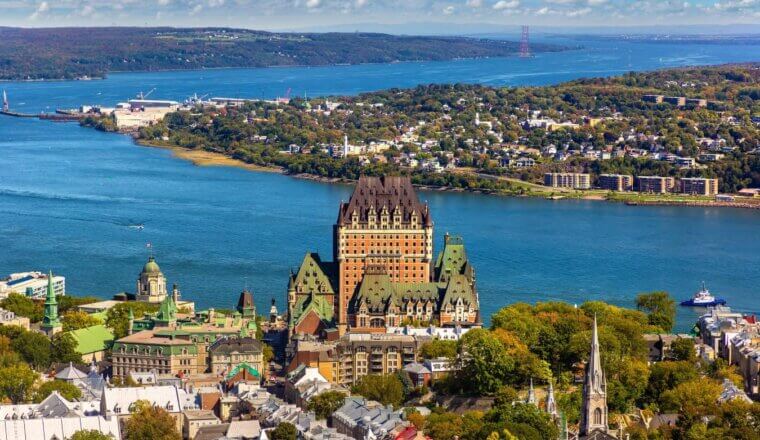
Where to Stay in Quebec City: The Best Neighborhoods for Your Visit
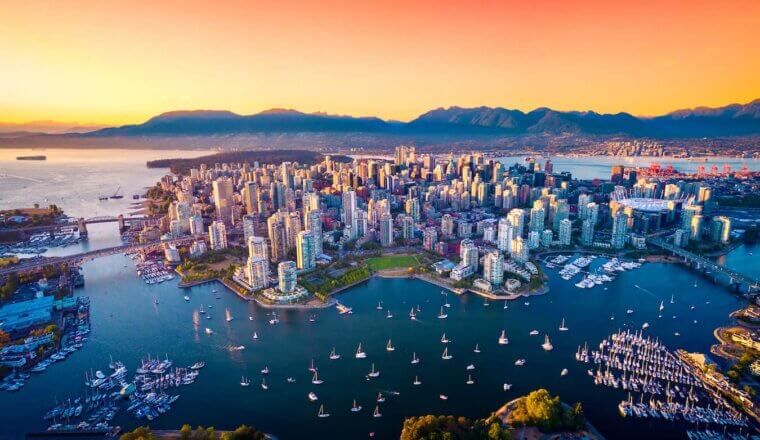
Where to Stay in Vancouver: The Best Neighborhoods for Your Visit
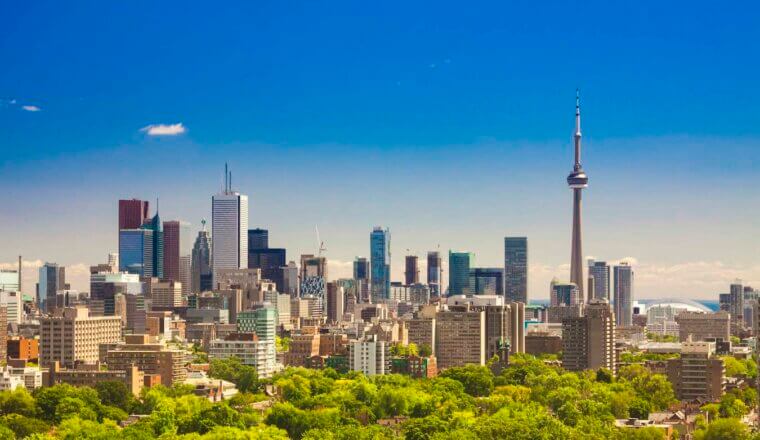
Where to Stay in Toronto: The Best Neighborhoods for Your Visit
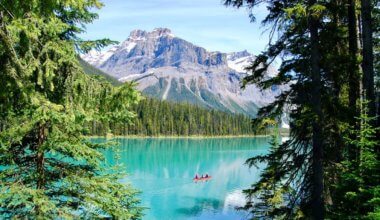
Canada Road Trip: A One Month Suggested Itinerary
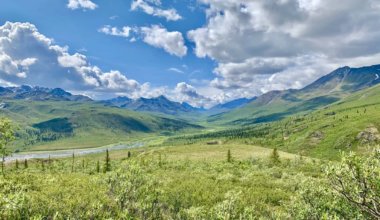
How to Road Trip the Yukon on a Budget
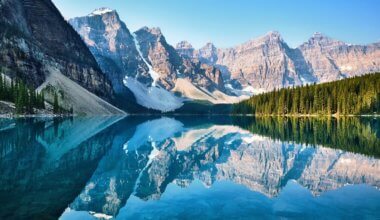
How to See Alberta: A 10-Day Suggested Driving Itinerary
Get my best stuff sent straight to you, pin it on pinterest.
- Where To Stay
- Transportation
- Booking Resources
- Related Blogs
Canada Travel Guides

Explore a destination in Canada to see the top hotels and top things to do, as well as photos and tips from U.S. News Travel.
All Canada Travel Guides
- Jasper National Park
- Niagara Falls
- Quebec City
- Saint John, New Brunswick
- Vancouver, Canada
- Victoria & Vancouver Island
If you make a purchase from our site, we may earn a commission. This does not affect the quality or independence of our editorial content.
- 3 Other destinations
- 4.1 History
- 4.2 Politics
- 4.3 Culture
- 4.4 Time zones
- 4.5 Units of measure
- 4.6 Climate
- 4.7 Holidays
- 4.8 Visitor information
- 6.1 Transit
- 6.2 Customs
- 6.3 From the United States
- 6.4 By plane
- 6.6.1 From Canada's southern border with the United States
- 6.6.2 From Canada's northwestern border with the United States
- 6.8.1 By cruise boat
- 6.8.2.1 Atlantic Canada
- 6.8.2.2 Central Canada
- 6.8.2.3 Western Canada
- 6.8.3 By private boat
- 7.1.1 Air couriers
- 7.5 By train
- 7.6 By boat
- 7.7 By thumb
- 7.8 By ride sharing
- 7.9 On foot
- 8.1 Cultural tourism
- 8.2 Spectator sports
- 10.2 Tipping
- 10.3 Bargaining
- 10.4 Currency exchange
- 10.5 Credit cards
- 10.6 Electronic banking and purchasing
- 12.3 Distilled spirits
- 12.4 Other beverages
- 15.1 Working Holiday Visas
- 16.1 Policing
- 16.3 Winter storms
- 16.4 Firearms and weapons
- 16.5 Cannabis and other drugs
- 16.6 Drunk driving
- 16.7 Hate speech and discrimination
- 17.1 Food preparation
- 17.2 Health care
- 17.3 Potable water
- 18.1 Gay and lesbian travellers
- 18.2 Indigenous people
- 18.3 Religion
- 18.4 National identity
- 19.1.1 By mobile phone
- 19.2 By internet
- 19.3 By mail
Canada is the world's second largest country by area, behind only Russia . Nicknamed the Great White North , Canada is renowned for its vast landscapes of outstanding natural beauty and its multicultural heritage. While much of Canada consists of forests and there are cosmopolitan cities, it also has more lakes than any other country, the Rocky Mountains , the Prairies , three oceanic coasts and a sparsely populated archipelago extending into the Arctic .
Regions [ edit ]
Visiting Canada all in one trip is a massive undertaking. The Trans-Canada Highway is about 8,000 km (5,000 mi) from St. John's , Newfoundland to Victoria , British Columbia (about the same distance as Cairo to Capetown, and more than three times Napoleon's march from Paris to Moscow). Crossing the country with any ground transport takes at least a week, even if you do not stop to sightsee. A flight from Toronto to Vancouver takes over 4 hours.
When planning a trip within Canada, it's better to consider its distinct regions:
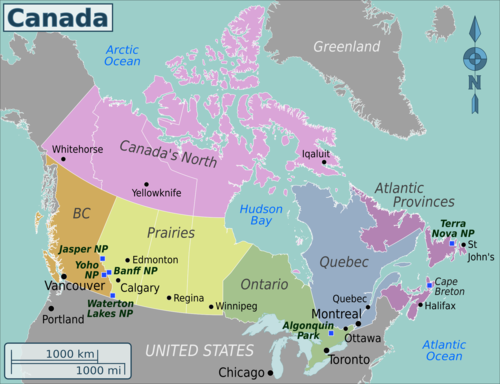
Cities [ edit ]
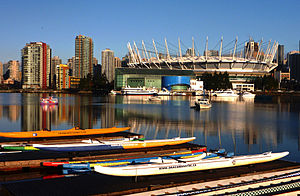
- 45.424722 -75.695 1 Ottawa — Canada's national capital, this city is home to national government monuments like Parliament Hill, many major museums like the National Gallery, cool urban neighbourhoods like the ByWard Market, and great old architecture.
- 51.05 -114.066667 2 Calgary — A boom-town without a doubt, Calgary is a major Canadian financial city, but for non-business travellers, it offers museums and shopping, the world-class Calgary Zoo and the Calgary Stampede (one of the world's largest rodeos ). It is only a short distance from the recreation of the Rockies.
- 44.647778 -63.571389 3 Halifax — home to the second largest natural harbour in the world is rich in history with architecture dating back from English colonialism. See fortress Citadel hill, Canadian museum of the Atlantic, and the active night life where everything is a short walk away.
- 45.508889 -73.561667 4 Montreal — Once Canada's largest metropolis, Montreal is the core of North America's Francophone culture (you can still get by with English) and is home to some of the finest galleries, museums, venues, and festivals in the country along with great shopping on streets like Sainte-Catherine and Saint-Denis. Known as the cultural capital of Canada. Don't miss Mount Royal, either.
- 46.816111 -71.224167 5 Quebec City — The provincial capital of Quebec, founded 1608, well known for its quaint old city, its grand winter festival and gorgeous architecture like the Château Frontenac.
- 43.670278 -79.386667 6 Toronto — The largest city in Canada, fourth-largest in North America, Toronto is the media, entertainment, business, and economic capital of Canada. Toronto is well known for famous landmarks like the CN Tower, but also has many great museums, theatres, sports venues, shopping districts, entertainment districts, beaches, and recreational parks.
- 49.260833 -123.113889 7 Vancouver — One of the most densely populated cities in Canada, Vancouver is a city of steel and glass condominiums and outstanding natural beauty; you can ski and sit on the beach in the same 24 hours. The city was also the host of the 2010 Winter Olympics and is frequently ranked as one of the most livable cities in the world.
- 60.717222 -135.055833 8 Whitehorse — Capital and largest city of Yukon, and midpoint of the Alaska Highway , gateway to the outdoor activities of Canada's far north.
- 49.883333 -97.15 9 Winnipeg — This city is near the heart of the continent and has a rich French-Canadian and First Nations culture, along with well preserved blocks of historic commercial buildings, renowned arts and culture, and the vibrancy of the Forks.
Other destinations [ edit ]
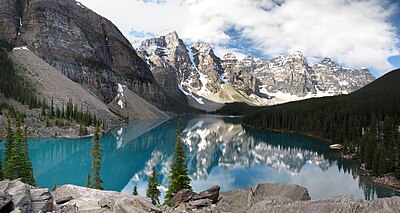
See the "Canada" section of the UNESCO World Heritage List , as well as the list of Canadian national parks , for a sample of Canada's cultural and natural attractions. Many important natural areas can be found also in provincial parks , owned and managed by provincial governments. The Quebec government calls its provincial parks national parks.
Of particular fame, from west to east are:
- The vast wilds and isolated settlements of the North , particularly 64.066667 -139.429167 1 Dawson City , the hub of the Klondike gold rush of the 1890s, with many of the buildings of that era largely preserved
- The rocky Pacific coast of Vancouver Island , the Lower Mainland of British Columbia , and the smaller islands between them, for example 48.76 -123.55 2 the Southern Gulf Islands : quiet refuges a short ferry ride from urbane Vancouver
- The dry, sunny valleys of the British Columbian interior , notably 49.747778 -119.717222 3 the Okanagan , a wide valley featuring a deep, clean lake, Canada's warmest summers, and fresh fruits and wines that go with the weather
- The dramatic alpine vistas of the Rocky Mountains , in particular in 51.166667 -115.55 4 Banff National Park , oldest and most famous of all Canadian national parks, and home to world-famous Lake Louise
- The wide skies and open spaces of the prairies (plains), for example at 49.0819 -111.617 5 Writing-on-Stone Provincial Park , a world heritage site featuring natural rock formations and Indigenous rock art
- The rich farmlands and historic towns of the Great Lakes and St. Lawrence River region , where the majority of Canadians actually live, notably 43 -79.5 6 the Niagara Peninsula , home of the famous waterfalls, Central Canada's most famous wine region, and numerous historic sites related to the War of 1812
- The cottage country found all along the southern edge of the vast boreal forest that covers the northern halves of most provinces, where there are many camping and boating opportunities as well as lakeside "cottages" and "chalets" (vacation homes) for rent , in particular 45.8 -78.7 7 Algonquin Park , Canada's oldest and most famous provincial park, which is between Toronto and Ottawa
- The rolling Appalachian Mountains and charming fishing villages of the Atlantic coast , for example 48.069669 -69.661511 8 Saguenay–St. Lawrence Marine Park , the most popular national park east of the Rockies and a beluga whale-watching mecca
Understand [ edit ]
Canada is a land of vast distances and rich natural beauty. Canada's economic, cultural, linguistic and social characteristics closely resemble its neighbour to the south, the United States , but there are significant differences as well, as Canadians will be quick to tell you! For one thing, over 20% of Canadians (mostly, but by no means all, in Quebec) speak French as a first language. Also, while Canada is about the same size as the U.S. (larger if you count the many lakes), it has only about a tenth the population, most of them living within 200 km (120 mi) of the U.S.-Canada border. Large areas further north are quite sparsely populated and some is nearly uninhabited wilderness.
Indigenous cultural symbolism is also generally more visible in Canada than in the U.S., and there are plenty of opportunities for tourists to engage with Indigenous cultures. Indigenous issues occupy a prominent role in mainstream Canadian political discourse.
Canada is consistently ranked as one of the wealthiest, least corrupt and most livable nations on Earth.
History [ edit ]

The main wave of prehistoric settlers that came into the Americas from Northeast Asia via Alaska are thought to have arrived around 15,000 years ago, although the first migrants may have arrived around 30,000 years back and the last about 5,000. The main current theory as to the expansion of the prehistoric settlers is a southward migration along the coast with branching populations moving east and, later on, north. By this theory, the longest established cultures are the Pacific Coast tribes and the most recently established are the Arctic cultures.
Indigenous nations across what would later become Canada led different lifestyles depending on the local environment and the resources they could use for food and materials. The Pacific Coast peoples relied on salmon fishing and were about to construct elaborate houses and totem poles, for example on Haida Gwaii or Vancouver Island . On the great plains, buffalo (bison) and pronghorns were driven into corrals or over cliffs, for example at Head Smashed In Buffalo Jump , a UNESCO world heritage site in Alberta. Around the Great Lakes, walled farming communities like the one at Sainte-Marie among the Hurons mixed agriculture with hunting and gathering. Along the Atlantic coast, hunting and fishing predominated. In the Rocky Mountains and the vast Boreal forest s of the subarctic, small nomadic groups relied on hunting and trapping and human populations were very small and scattered. In the Arctic, the Inuit people lived from caribou hunting on land and seal hunting on frozen sea ice.
The first confirmed European contact with Canada was just after 1000 CE: Vikings under Leif Erikson certainly reached Newfoundland and there are some controversial indications that they also sailed far up the St Lawrence and south along what is now the U.S. coast. The next confirmed group were the Portuguese who had fishing outposts along the Atlantic coast by the early 1500s. However, neither group built permanent settlements. The Viking attempt at a settlement, L'Anse aux Meadows in Newfoundland was abandoned after a few years and only rediscovered in 1960. There are unconfirmed claims of several other European groups reaching Canada earlier, notably including the Irish Saint Brendan in the 6th century.
Early European explorers during the so-called " Age of Discovery " were looking for a ocean passage to Asia or for deposits of gold or silver that could be easily exploited, but found neither. They did, however, find resources that would draw many settlers in the coming centuries: fish, furs, forests, and land for farms . John Cabot, an Italian working for the English, seems to have reached Newfoundland in about 1497, but the records are neither clear nor complete. The French explorer Jacques Cartier landed on the Gaspé Peninsula in 1534 and claimed it for King Francis I of France. The English explorer Humphrey Gilbert landed at St. John's , Newfoundland and claimed it for Queen Elizabeth I of England in 1583 as the first English colony in North America.
The most significant of all these early settlements was Quebec City , founded by Samuel de Champlain in 1608, as this later become the capital of the new capital of New France . From this base the French expanded until they controlled most of what is now eastern Canada. Most of what is now Atlantic Canada was called Acadia , while what is now Quebec and Ontario was called Canada . In these territories relatively few French settlers arrived, so French officials developed close alliances with the local indigenous peoples to resist encroachments from other European powers, notably in the Dutch in New Amsterdam . However, they fatefully stumbled into making enemies of the most powerful indigenous people in the region, the Haudenosaunee (who the French called the Iroquois) and subsequent spent a century embroiled in bloody conflict.
After the Dutch and Haudensaunee, the French also had to deal with England (later Great Britain) and the two powers fought numerous wars over Canada and Acadia. In the aftermath of one of these conflicts, the British governor expelled many of the French-speaking settlers from Acadia. Many of them went to Louisiana , settling in a region known as Acadiana . Some settlers later returned to the region, notably the Acadian Coast of New Brunswick , while for those who remained in the U.S. became the Cajuns, as the English language corrupted "Acadien" to "Cajun".
One of the critical turning points in Canadian (and world) history was the Seven Years' War: this ended New France and ushered in British rule across North America . The most important battlefield of that war in Canada is on the Plains of Abraham just outside the old city walls of Quebec City; it is now one of that city's main tourist attractions. At the end of that war in 1763, the French ceded most of their colonies in continental North America to the British, who agreed to permit the continued official usage of the French language and legal system in the ceded colonies. Consequently French continues to be the dominant language in Quebec province to this day.
For a short time it appeared that the former French lands would be integrated into the pre-existing British Thirteen Colonies, but the American Revolution was another key turning point. The American Revolutionaries invaded Canada in 1775, but instead of support from the French-speaking residents, they were resisted and ultimately turned back. After this point, the former French colonies ironically became strongholds for the British even as their original colonies began to break away.
After the American War of Independence , there was considerable migration to Canada by people who wanted to remain part of the British Empire , the United Empire Loyalists (or just Loyalists ). With this influx of English-speaking settlers, new colonies where English law and language could be used were created from the former French territories, including New Brunswick in 1784 and Upper Canada (now Ontario) in 1791. This left only Lower Canada (now Quebec) with a French-speaking majority and using French law.
Some of the Loyalists were of African descent, many of them either former slaves who had been granted their freedom in exchange for service for the British or escapees from owners aligned with the U.S. government. Some of them or their descendants later moved to England or what is today Sierra Leone, but there are still Afro-Canadians who can trace their heritage to Black Loyalists.
The British and Americans fought a war in 1812–1815 in which invasions were launched across the U.S.-Canada border in both directions. Some of the hotter heads on both sides had quite ambitious goals – drive the British out of North America entirely and annex Canada into the U.S., or reverse the effects of the American Revolution a few decades earlier and bring the U.S. back into the Empire. Neither side got anywhere near achieving such goals, and both ideas were thoroughly discredited by the end of the war. Americans consider the war an American victory, since the U.S. maintained its independence, but because Canadians managed to fend off a large-scale U.S. annexation of Canadian territory, particularly on the valuable Niagara Peninsula , they herald it as a British-Canadian military victory. This was another major turning point in which Canada could easily have been absorbed by the United States, but was not.
Following the war, substantial waves of immigration came from the British Isles. These were often ex-soldiers, mostly Scots (see Prescott-Russell region of Ontario or Cape Breton Island, Nova Scotia), and many Irish from the time of the Potato Famine onward (see especially Grosse Isle , Quebec). Still today many English-speaking Canadians have proud Celtic roots, examples of which can been seen at the Highland Village (Baile nan Gàidheal), Iona, Cape Breton Island or the Canada's Irish Festival in Miramichi , New Brunswick.
Canada received a small number of African slaves during the Atlantic slave trade . Slavery was abolished in the British Empire in 1834, but would remain legal in much of the U.S. until 1865, after the end of the American Civil War. The 1850 introduction of the U.S. Fugitive Slave Act , a federal law which allowed black people to be abducted by slave-catchers and forcibly returned to slavery in the south – led to the establishment of an Underground Railroad of disparate routes leading north to freedom in Canada, mainly in the Niagara Peninsula region of Ontario and Halifax , Nova Scotia (see for example, the John Freeman Walls Historic Site in Lakeshore, Ontario ). Descendants of Underground Railroad refugees and continue to live in Canada.
While the Great Lakes coasts and St. Lawrence valley were mostly filled with agricultural settlers by the mid-19th century, most of the rest of future Canada was still primarily inhabited by indigenous peoples. Their main interaction with Europeans and Euro-Canadians were through the fur trade . The Hudson's Bay Company and its rival the North West Company collected huge numbers of beaver pelts and other furs from the indigenous peoples in exchange for manufactured goods such as blankets, traps, knives, and pots. The two companies build hundred of lightly-fortified trading posts, grandly called "forts". There remain today hundreds of historic sites across Canada related to the fur trade (for example, the Fort George and Buckingham House site in Alberta , or the Fort St. James National Historic Site in British Columbia ) .
The British established their first colony on the Pacific coast of Canada in 1849, when Vancouver Island was chartered with Fort Victoria as its capital. The colony of British Columbia was established in 1858, and the two were merged in 1866. These Pacific colonies started as fur trading outposts, but were quickly filled with English-speaking settlers with gold rush fever. This later repeated itself in the Yukon at the end of the 19th century, in the last great gold rush of the pre-war world.

The colonial provinces of Canada (split into Ontario and Quebec ), Nova Scotia and New Brunswick federated to form the self-governing Dominion of Canada on July 1, 1867, celebrated each year as Canada Day with parades and fireworks. A huge territory called Rupert's Land — all the land whose rivers drain into Hudson Bay, much of Canada and parts of a few U.S. states — had already been granted by the British crown to the Hudson's Bay Company in 1670. In 1870, the newly formed dominion purchased this land, greatly expanding the federation. The purchase more than doubled the sizes of existing provinces Ontario and Quebec and led to the creation of several new provinces: Manitoba was created in 1870, and Saskatchewan and Alberta were created in 1905. Most of the other British colonies in continental North America eventually agreed to join the Canadian federation, with British Columbia joining in 1871, Prince Edward Island in 1873, and finally the former Dominion of Newfoundland in 1949. Canada's newest territory, Nunavut , was created in 1999 from part of the existing Northwest Territories .
Canada's independence from Britain was achieved in stages and over the course of nearly a century, and it maintains a close connection with the United Kingdom. The British Parliament's British North America Act in 1867 established the country and the British monarch is still King or Queen of Canada, with a Governor General representing him or her in the country. Until the 1960s all the Governors General were British noblemen; since then, they have all been Canadians. In 1931, changes were made making Canada mostly independent of the United Kingdom . In World War I , there were Canadian regiments in the British Army under British generals, but by World War II there was a separate Canadian Army with its own generals. Canadians and Newfoundlanders made significant contributions in both wars, best seen at the Canadian War Museum in Ottawa and dozens of other military museums across the country. In 1982, the United Kingdom passed the Canada Act 1982 , with Canada simultaneously passing the Constitution Act, 1982 , ending any residual power the British Parliament may have had to pass laws for Canada. The Constitution Act, 1982 also importantly added a bill of rights to the Constitution of Canada known as the Charter of Rights and Freedoms .
Canada's relationship with the U.S. is also complex. In general, the two nations are friendly and there is a great deal of trade and tourism in both directions. Many Canadians migrate to the U.S. for work opportunities – Hollywood has thousands – and some Americans come north. Following the Empire Loyalists during and after the American Revolution, there have been Underground Railroad passengers, draft dodgers during the Vietnam War, and others. The two countries have not been to war since 1814 and are proud to have "the world's longest undefended border", but there have been tensions and threats since that war. For example in the 1840s the slogan "Fifty-four-forty or fight" was used in American elections to claim about half of what is now British Columbia ; ultimately the boundary was negotiated to 49 °N, several hundred miles to the south, and animosity towards Canada and the British played a marginal role in the jingoistic fervour. Canada and the U.S. have been allies in a number of wars, including both World Wars, Korea, the first Iraq War and the War on Terror. Canada stayed out of some American wars, including Vietnam and the second Iraq War.
Canadians sometimes cash in on events in the U.S. Canada's only involvement in the Civil War was selling supplies to the North, and Canada was the main source for smuggled booze during prohibition.
Canada and particularly Newfoundland also played an important role in the history of transatlantic aviation. Gander was one of the closest points in North America that was fog free most of the year where an airport could be built and it turned into a frequent refueling stop before planes gained enough range to cross the Atlantic nonstop. During the Cold War, defections sometimes happened during those refueling stops. While its European equivalent, Shannon , is still the second biggest airport in Ireland, Gander has since lost most of its importance but briefly came to the centre of the world's attention when after 9/11 countless flights that could not enter U.S. airspace were diverted there and the locals took in stranded visitors from all over the world giving a piece of positive news to report on a generally depressing newsday.
Canada is famously ethnically diverse; in 1967, Canada reformed its immigration system, removing the previous preferences for Europeans over others. Since that time, Canada has become one of the largest destination countries for immigration in world. While other countries attempt to cap or limit the number of new arrivals each year, Canada officially has a minimum target to add 1% to its population each year by immigration. This means that most present-day Canadians, especially in larger cities, are either foreign-born (nearly 1/4 nationally, much higher in Toronto or Vancouver) or the children of foreign-born. This tends to be a very popular policy, and while anti-immigrant sentiment certainly exists, it is decidedly in the minority.
Politics [ edit ]

Canada has a federal system of government, consisting of ten provinces and three territories.
Canada is a parliamentary constitutional monarchy in the British Westminster tradition. King Charles III of the United Kingdom is also King of Canada and the head of state, with an appointed governor general as his representative in Canada at the federal level and a lieutenant governor in each province. The roles of the King and his representatives are mostly ceremonial.
The Parliament of Canada is the national legislature. It consists of an elected House of Commons and the Senate, which is made up of senators appointed by the Governor General on the advice of the Prime Minister. Elections of members to the House of Commons take place every four years, but can be held earlier if the House votes that it does not have confidence in the government, or if the Governor General otherwise calls for one on the advice of the Prime Minister.
Executive power is exercised by the Cabinet (also called the Government), which consists of the Prime Minister and other ministers. The Prime Minister is appointed by the Governor General, but must have the support of the House of Commons, and is therefore almost always the leader of the largest party in the Commons. Other ministers are appointed by the Governor General on the advice of the Prime Minister from among the members of the House of Commons, and occasionally the Senate.
The judicial branch consists of the courts, and is headed by the Supreme Court of Canada, which has served as the highest court of appeal since taking over that role from the Judicial Committee of the UK Privy Council in 1949.
Each province has its own provincial government and legislature, based on the same system but without a senate. The premier serves as the head of the provincial government. The Constitution of Canada defines certain areas of provincial jurisdiction. For example, each province sets its own drinking age, minimum wage, sales tax, labour regulations, and administers its own roads, health care and education systems.
Quebec has twice had a referendum on the question of leaving Canada, the first time in 1980 with an almost 60-40 "no" vote and the second time in 1995 with an extremely narrow "no" vote of 50.58% to 49.42%. Quebec separatism is no longer a pressing issue, but it does come up from time to time, as do grumblings of other provinces — particularly the Western provinces and occasionally Atlantic Canada — about being left out or ignored by federal policy.
There are five parties in the federal Parliament (as of 2023): the centre-left Liberal Party, the centre-right to right-wing Conservative Party, the left-wing New Democratic Party, the Bloc Québécois, which is a regional party in favour of the independence of Quebec from Canada, and the environmentalist Green Party. While minority governments are somewhat common, coalition governments are almost unheard of. In 2015, the Liberals under Justin Trudeau (son of Pierre Elliott Trudeau, another Liberal prime minister) formed a majority government, and have won further victories in the 2019 and 2021 elections, although reduced to a minority government.
While Canada does not have an equivalent of the United States’ "red states" and "blue states", there are some marked preferences for particular parties by province that have been relatively stable. For example, the Conservative Party almost always wins a majority of votes and seats in the Prairie provinces of Alberta and Saskatchewan. The Atlantic provinces and Northern territories generally, but not always, lean toward the Liberal Party. Ontario and Quebec are the most competitive provinces, while British Columbia is often divided between all three major parties (those being the Conservatives, the New Democrats, and the Liberals).
Overall, Canadian politics are mostly pragmatic and moderate. Extremism has never been a prominent force, with far-left, far-right, and other radical parties having performed very poorly over the course of the country's history.
Culture [ edit ]
Domestically, Canada has displayed success in negotiating compromises among its own culturally and linguistically varied population, a difficult task considering that language, culture, and even history vary significantly throughout the country. In contrast to the United States' traditional image of itself as a melting pot (now falling out of use), Canada prefers to consider and define itself as a mosaic of cultures and peoples. Canadians are used to living and interacting with people of different ethnic backgrounds on a daily basis and will usually be quite friendly and understanding if approached in public. Canada's multiculturalism is most visible in Toronto and Vancouver , where about half the population was born outside Canada. The country is largely urban-based and is home to a diverse population (less so in rural areas). As is common with any neighbouring nations, there is some rivalry between Americans and Canadians, which may be more evident in Canada than the United States. Consequently, if you are obviously an American visitor, a minority of Canadians may make comments that could offend you. However, if you don't negatively compare Canada to the U.S. the worst you will probably hear are some good-natured jokes.
Time zones [ edit ]
The Canadian Sir Sandford Fleming first proposed time zones for the entire world in 1876, and Canada, being a continental country, is covered coast to coast with several zones.
- UTC−8 Pacific Time (most of British Columbia )
- UTC−7 Mountain Time ( Alberta , Northwest Territories , Yukon , portions of Nunavut , portions of British Columbia )
- UTC−6 Central Time ( Saskatchewan , Manitoba , portions of northwestern Ontario , portions of Nunavut )
- UTC−5 Eastern Time ( Ontario , most of Quebec , parts of Nunavut )
- UTC−4 Atlantic Time ( Nova Scotia , New Brunswick , Prince Edward Island , most of Labrador and eastern Quebec )
- UTC−3.5 Newfoundland Time ( Newfoundland and a few Labrador points on the Strait of Belle Isle)
Daylight saving time, when clocks are moved forward by one hour, is observed in most of the country (except Saskatchewan, Yukon, parts of northeastern British Columbia, and some small parts of eastern Quebec and northwestern Ontario) from 2AM on the second Sunday in March until 2AM on the first Sunday in November; during this time, for example, British Columbia uses GMT −7 while Alberta has GMT −6.
Anglophone Canada mostly uses the 12-hour clock system, but the 24-hour clock is generally used in francophone Canada. The 24-hour notation is also often used in English in such contexts as train and airline schedules, similar to the United Kingdom.
Units of measure [ edit ]
Canada's official measurement system is metric, but many Anglophone Canadians still use the imperial system for many things in colloquial usage. One of the most common holdovers from the imperial system is the use of feet and inches for measurement of short distances and heights, and especially the use of pounds for masses, even among younger Canadians and Francophones, though these measurements will be recorded in metric units on official documents. Supermarkets often display the fruit, vegetables and meat prices in both units, but the price metric unit will be more prominent (larger font, bolded and/or centred). Receipts however will only show the price in metric. In Quebec and other Francophone communities, Imperial units are referred to by their French names. Feet become pieds, inches become pouces and pounds become livres . Older Canadians might still use the term 'mile' when referring to informal distances. Fahrenheit temperatures are only used when referring to water in pools and hot tubs, and for oven temperatures. Air temperature, both inside and outside is almost exclusively reported in Celsius. All weather forecasts will be in °C, centimetres of snow, millimetres of rain and wind speed in km/h. Similarly, all road signs will use metric units, meaning that speed limits will be given in km/h and distances will be given in km, and fuel is sold in litres. "Gallons", "quarts", "pints" and "fluid ounces" in Canada are generally used to refer to the British and not the American versions of those units.
Climate [ edit ]
Trying to distill the climate of Canada into an easy-to-understand statement is impossible, given the vast area and diverse geography within the country, but "Frozen North" would be a reasonable first approximation. In most places, winters are harsh, on par with Russia . The most populated regions, southern Ontario and southern Quebec, have a less severe climate, similar to, but still a little cooler than, the bordering regions of the northeastern and midwestern United States. Iqaluit , the capital of Nunavut, is just south of the Arctic Circle and remains very cold except for the months of July and August, when the July average maximum is only 12 °C (54 °F). On the other hand, the coastline of British Columbia is very mild for its latitude, remaining above freezing for most the winter, yet it is not far away from some of the largest mountain glaciers on the continent.
Most of the large Canadian urban areas are within 200 km (120 mi) of Canada's border with the United States ( Edmonton , Calgary , Halifax and St. John's being notable exceptions). Visitors to most cities will most likely not have to endure the weather that accompanies a trip to more remote northern or mountainous areas often pictured on postcards of Canada. Summers in the most populated parts of Canada are generally warm, but often aren't that long (typically lasting for the months of June, July, and August). Summer temperatures over 30 °C (86 °F) are not unheard of in Southern Ontario, the southern Prairies and especially the southern Interior of BC, with Osoyoos being the hot-spot of Canada for average daily maximums. Toronto's climate is only slightly cooler than many of the larger cities in the northeastern United States, and summers in the southern parts of Ontario, Quebec (including Montreal ) and Manitoba are often warm, sometimes even hot, and humid. In contrast, humidity is often low in the western interior during the summer, even during hot weather, and more cooling occurs at night. In the winter, eastern Canada, particularly Atlantic Canada , is sometimes subject to inclement weather systems entering from the US, bringing snow, high wind, rain, and sleet.
Many inland cities, especially those in the Prairies, experience extreme temperature fluctuations, sometimes very rapidly. Owing to a dry climate (more arid west than east on the southern Prairies), bright sunshine hours are plentiful in the 2,300–2,600 annual hours range, though these areas are, in winter, the coldest significantly populated parts of Canada.

Winnipeg has warm-to-hot summers with bouts of aggressive humidity, yet experiences very cold winters where temperatures around −30 °C (−22 °F) are not uncommon. The official hottest temperature in Canada ever recorded was in interior BC, at 49.6 °C (121 °F), while the coldest was in Snag, Yukon −63 °C (−81 °F). Summer storms in the Prairies and the southernmost parts of Ontario can be violent and sometimes unleash strong damaging winds, hail, and rarely, tornadoes. On the west coast of British Columbia, Vancouver and Victoria are far more temperate and get very little snow, average low wind speeds and seldom experience temperatures below 0°C or above 27°C (32–80°F) but receive high rainfall amounts in winter, then in turn relatively (although not completely) dry, sunny, pleasant summers.
The average temperature is typically colder in Canada than in the US and Western Europe as a whole, so bring a warm jacket if visiting between October and April, and earlier and later than this if visiting hilly or mountainous terrain or Northern areas. For most of the country, daytime highs in the summer are generally well above 15 °C (60 °F), usually into the 20s °C (70s °F) range, and occasionally into the 30s °C (80s–90s °F).
Holidays [ edit ]
Canada recognizes and celebrates the following national holidays (some provinces may have minor differences):
- New Year's Day — 1 January
- Family Day — 3rd Monday in February (not observed in all provinces, known as Louis Riel Day in Manitoba, Islander Day in PEI)
- Good Friday — Friday before Easter (a few provinces also recognize Easter Monday as a public holiday)
- Victoria Day — Last Monday in May before 25 May (known as Fêtes des Patriotes in Quebec)
- St. Jean Baptiste Day (Quebec) — 24 June (also known as Fête Nationale)
- Canada Day — 1 July
- Civic Holiday — first Monday in August (only applies in some provinces, under different names; not in Quebec)
- Labour Day — first Monday in September
- National Day for Truth and Reconciliation — 30 September (not observed in all provinces)
- Thanksgiving — Second Monday in October
- Remembrance Day — 11 November (bank holiday only)
- Christmas Day — 25 December
- Boxing Day — 26 December
Canada's Labour Day is not celebrated on 1 May,, but on the first Monday in September. Labour Day is generally the last day of vacation for Canadian students before the start of the school year.
Visitor information [ edit ]
- Destination Canada
Talk [ edit ]
English and French are the only two official languages in Canada at the federal level, though many other languages are spoken among immigrants or Canada's native peoples. All communications and services provided by the federal government are required by law to be available in both official languages. However, individual provinces are free to decide which languages they wish to adopt as official languages at the provincial level, meaning that offices of the provincial governments may not necessarily offer services in both languages (e.g. British Columbia only offers services in English, while Quebec only offers services in French). Most Canadians are functionally monolingual, although some parts of the country have both English and French speakers. Over a quarter of Canadians are bilingual or multilingual. A majority of Montrealers and Gatinois , as well as about 40% of Ottawans , are at least conversationally bilingual. New Brunswick is officially bilingual as roughly one third of the province speak French as their first language, mostly in Northern New Brunswick.
English is the dominant language in all regions except Quebec, parts of New Brunswick and Nunavut, where French and Inuktitut are dominant and actively promoted as the main languages respectively. However, there are numerous francophone communities scattered around the country, such as:
- the national capital region around Ottawa, and various towns between Ottawa and Montréal
- some parts of eastern and northern Ontario ,
- the city of Winnipeg (particularly St. Boniface ) and areas to the south,
- the Bonnie Doon neighbourhood in Edmonton, and several surrounding communities,
- a few parts of the Acadian region of Atlantic Canada , scattered across Nova Scotia, New Brunswick and Prince Edward Island).
Likewise, there are anglophone communities in Quebec, such as the on-island western suburbs of Montreal. Most Francophones outside of Quebec are bilingual, as are most Anglophones living in Quebec.
Canadian English mostly uses British (Oxford) spellings ("colour" instead of "color") but U.S. vocabulary choices ("gas" instead of "petrol"). A few British terms not usually understood in the United States are widely used in Canada. Certain words, as well as the letter "z", follow British instead of American pronunciations, but the accents of Canadians and Americans are nonetheless quite similar. The standard Canadian accent differs from the standard American (Midwest) accent being smoother, less nasal and faster-paced (common phrases that are normally two words are pronounced as though there is no space between them). The most stereotypical feature of the Canadian accent is the pronunciation of the "ou" diphthong in words like "shout" and "about", which often sounds like "shoot" and "aboot" respectively to American ears. Canadian English also tends to have a stronger French influence than other varieties of English, and Canadians are also more likely than other English speakers to pronounce loan words from French according to their original French pronunciation.
Atlantic Canada has the greatest variety of regional accents in English-speaking North America, largely as a result of the isolated nature of the fishing communities along the Atlantic coastline prior to the advent of modern telecommunications and transportation. A visitor to the Atlantic provinces may have some difficulty understanding strong local accents rich in maritime slang and idiom, particularly in rural areas. From Ontario westward, the accent of English Canadians is more or less the same from one region to another and is akin to that spoken in northern U.S. border states.
English-speaking Canadians are generally not required to take French after their first year of high school, and thus most English-speaking Canadians outside Quebec cannot speak French unless they are closely related to someone who does, or have chosen to continue French studies out of personal or professional interest. Ottawa is an exception as French is needed in many civil service jobs. Education in other languages (such as Spanish, German, and Japanese) is offered, although only a small minority of students take these courses, and those that do rarely progress past the basics. As Canada is a popular destination for migrants from all over the world, you will often hear different languages being spoken in Canada's major cities, and you will often find neighbourhoods or suburbs whose primary language is that of their respective immigrant communities. Most immigrants learn English or French in addition to speaking their native tongue with family and friends. Depending on the demographics of the area, government offices may be able to offer services in the language of the relevant immigrant community.
In Quebec, one can usually get by with English in Montreal, Gatineau, the main tourist areas of Quebec City, and a few traditionally Anglophone rural areas such as the Lower North Shore , Chaleur Bay , and some areas along the U.S. border. However, elsewhere in the province, knowledge of French ranges from very useful to downright essential. Even if you're just passing through, it pays to know at least enough French to read road signs (this is especially true if you're planning to venture off the autoroutes onto country roads). It is useful to know at least a few basic French phrases even in the larger cities, where some attempt by travellers to communicate in French is often appreciated. The varieties of French spoken in Quebec and the Acadian regions differ in accent and vocabulary from each other and from European French. Some Franco-Europeans have difficulty understanding Canadian French. Nevertheless, all Francophone Canadians learn standard French in school, so they will generally be able to speak standard French if required.
There are also dozens of Indigenous languages spoken by many Indigenous Canadians. In Nunavut more than half the population speaks Inuktitut, a traditional language of the Inuit, as their native language. Nevertheless, most of these people speak English or French as well, so learning these languages is generally not a necessity to communicate, though it would certainly impress your hosts.
Two sign languages are predominant in Canada. American Sign Language , or ASL , is used in Anglophone Canada; Quebec Sign Language , or LSQ , is used in Francophone Canada. While the two are distinct languages, they share a degree of mutual intelligibility. Both are part of the French Sign Language family, and LSQ is believed to be a mix of French Sign Language and ASL.
Get in [ edit ]
Citizens of the following countries do not need a visa to visit Canada for a stay of (generally) up to six months , provided no work or study is undertaken and the traveller holds a passport valid for six months beyond their intended date of departure:
Andorra , Anguilla , Antigua and Barbuda , Australia , Austria , Bahamas , Barbados , Belgium , Bermuda , British Virgin Islands , Brunei , Bulgaria , Cayman Islands , Chile , Croatia , Cyprus , Czech Republic , Denmark , Estonia , Falkland Islands , Finland , France , Germany , Gibraltar , Greece , Hong Kong (BNO Passport or SAR Passport), Hungary , Iceland , Ireland , Israel (National Passport holders only), Italy , Japan , Latvia , Lithuania , Liechtenstein , Luxembourg , Malta , Monaco , Montserrat , Netherlands , New Zealand , Norway , Papua New Guinea , Pitcairn Islands , Poland , Portugal , Romania (biometric passports only), Samoa , San Marino , Singapore , Slovakia , Solomon Islands , South Korea , Spain , St. Helena , Sweden , Slovenia , Switzerland , Taiwan (must be ordinary passport including ID card number), Turks and Caicos Islands , United Arab Emirates , United Kingdom (including British (Overseas) Citizens that are re-admissible to the United Kingdom), United States and Vatican City . For more information, see this page .
A visa exemption also applies to individuals holding nationalities that are not specified above if they are in possession of a US Green Card, or can provide other evidence of permanent residence in the United States. Persons who do not require a visa and who are entering for any reason other than tourism must have a letter of invitation from the individual, business, or organization that they are visiting ( information about letters of invitation and what information they need to contain ).
Foreigners entering Canada visa-free by plane are required to obtain an eTA (electronic Travel Authorization) in order to be allowed on the plane. The eTA is issued by the Department of Citizenship and Immigration Canada (CIC) and is similar to the US ESTA, but the fee is lower at $7 and is valid for a period of five years or until passport expiry. US citizens and permanent residents, and French citizens of Saint Pierre and Miquelon are exempt from this. The eTA is not required if you are entering by land or sea.
Brazilian citizens who hold a valid US nonimmigrant visa or who have held a Canadian visa within the last 10 years also can apply for an eTA, on the condition that they arrive by air. Brazilian citizens entering Canada across the US border or by sea or who have not applied for a Canadian visa in the past 10 years or a US nonimmigrant visa must also hold a valid Canadian visa.
If you live in Iran, you should apply for visa before you travel to Canada. Since Canada does not have an embassy in Iran, you should visit neighboring countries such as Turkey, the United Arab Emirates, Armenia and Georgia to complete the Canadian visa process. Or you can send your Canadian visa application to a valid immigration lawyer or immigration agency in Iran.
Canada is quite strict about admitting anyone with a criminal record, and even people who would otherwise not need a visa may be denied entry or may need additional paperwork if they have a record, no matter how long ago or minor it may be. Even a drunk driving conviction counts, because that is considered a criminal offence under Canadian law. On the other hand, travellers are unlikely to be denied entry for some criminal convictions like adultery and being an LGBT member in the native country because they have no equivalent law that prohibit these activities in Canada. Anybody with a criminal record, including U.S. citizens, should contact a Canadian diplomatic mission for advice before making travel plans. See Traveling with a criminal history#Canada .
All others will be required to obtain a Temporary Resident Visa to enter the country. This can be done at the applicants' nearest Canadian Visa Office . Applicants are required to submit, as part of their application :
- A valid travel document (such as a passport)
- Two properly-formatted, passport-sized photos for all applicants
- The application fee (the fee per person is $75 for a single entry visa, $150 for a multiple entry visa or $400 for a family (multiple or single entry)
- Reservation confirmation (for tourists) or letter of invitation (for everybody else).
- Proof that you have enough money for your visit to Canada. The amount of money may vary, depending on the circumstances for your visit, how long you will stay and whether you will stay in a hotel, or with friends or relatives. You can get more information from the visa office.
- Other documents as required. These documents could be identification cards, proof of employment, or a proposed itinerary. Check the website of the visa office responsible for the country or region where you live for more information.
If you plan to make a side trip to the United States or St Pierre and Miquelon and do not travel outside their respective borders, you can use your single entry or expired visa re-enter Canada as do so within the initial period of stay granted to you by the immigration officer when you first entered Canada.
Working while in the country is forbidden without a work permit, although Canada does have several temporary work permits for youth from specific countries. See "Work" below.
Quebec has been given limited autonomy in the selection of immigrants by the federal government. While its immigration rules differ slightly from the rest of Canada, these rule differences do not affect short-term visitors (such as tourists and business travellers) who do not plan to work or immigrate.
United States citizens travelling by land (vehicle, rail, boat or foot) to Canada need only proof of citizenship and identification for short-term visits. In addition to a passport, a number of other documents may also be used to cross the border:
- United States Passport Card (issued by the Department of State)
- Enhanced Drivers License or Non-Driver Photo ID card (issued by Michigan , Minnesota , New York , Vermont , and Washington State )
- Enhanced Tribal ID Card
- Trusted Traveler Cards issued by the US Department of Homeland Security for the Canadian Border ( NEXUS and FAST).
American citizens can travel across the border with just a birth certificate, but if you try to re-enter the United States with your birth certificate, you will eventually be let in, but only after significant delays while U.S. Customs and Border Protection verifies the information on it with the issuing department. You may also be fined or prosecuted for non-compliance, although anything more than a written warning is unlikely for a first time violator.
Residents of Greenland , Saint-Pierre and Miquelon and some Caribbean nations are not required to present a passport if they can prove nationality and identity via some other means.
Residents of Greenland, Saint-Pierre and Miquelon, and the United States also benefit from arrangements where applications for work and study permits can be made upon arrival in Canada at the Immigration Office at the port of entry without the need for an advance Temporary Resident Visa or advance application at a consulate. However, all the paperwork normally needed for such a permit has to be submitted at the port of entry as it would at a consulate, including a letter of introduction/invitation, the appropriate paperwork issued by the institution/employer, and the appropriate fees.
Canadian immigration no longer stamps the passports of most visitors; all entries are recorded electronically. If you need your passport stamped, you can request the immigration officer to do so when you enter Canada. There are no departure immigration checks in Canada.
Transit [ edit ]
Canada requires entry formalities even if you are transferring between two international flights at the same airport. The exception to this is if you are connecting from another international flight to a U.S.-bound flight (but not vice versa) at an airport with U.S. border pre-clearance, and if the connection is made in the same terminal. If you are not eligible for a visa waiver to enter Canada, then in general you will need to apply for a free-of-charge transit visa to transit through Canada. While Canada's visa policy is in general somewhat more relaxed than the U.S., making it a popular route for people who wish to avoid transiting through the U.S. , Canada's rules on criminal inadmissibility are very strict: if you have a criminal record, or even a drunk-driving conviction, it is likely that you will be refused immigration clearance to transit through Canada.
Customs [ edit ]
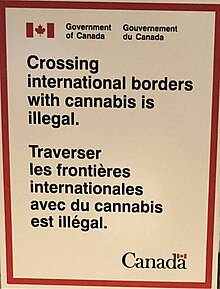
Canada has very strict biosecurity laws. All food items being brought into Canada must be declared to customs on arrival and inspected. Failure to declare any food items could lead to a hefty fine, even if the items are permitted.
Attempting to bring illicit drugs into Canada is a very serious offence which carries a heavy jail term with it. It is illegal to attempt to bring marijuana into Canada, even if you have a prescription and even though recreational use of cannabis is legal in Canada — see the government's Cannabis and International Travel page for details. If you want marijuana for use within Canada, it is legal to purchase from authorized suppliers across the country.
It is illegal to bring firearms and explosives across the border into Canada without declaring them, with proper paperwork, to customs. Anyone under 18 years of age cannot legally bring a firearm into Canada at all. For details, see the Canada Border Services Agency's Import and Export a Firearm or Weapon into Canada page for firearms and the Natural Resources Canada Importing, Exporting and Transporting-in-Transit pages for ammunition. Certain weapons, such as switchblade knives, butterfly knives, knuckle dusters and nunchucks are illegal, and it is not possible to get a permit for them.
Although there is no restriction on the amount of money that can be brought into or out of Canada, customs requires you to declare if you are carrying $10,000 (Canadian) or more, or its equivalent in foreign currency. Failure to declare could lead to prosecution and possible seizure of the cash.
From the United States [ edit ]

If you are a U.S. citizen or permanent resident and travel to Canada frequently, consider applying for a NEXUS card. NEXUS allows pre-approved, low risk travellers to use expedited inspection lanes both into Canada and the United States at many land crossings with minimal questioning. You can also utilize kiosks to make your customs declaration and clear the border at major international airports if you opt for an iris scan. The application fee is $50 and requires being legally admissible to both nations, a thorough background investigation, credit check, fingerprinting and an interview with both U.S. Customs and Border Protection and Canada Border Services Agency.
Participants in other DHS trusted traveller programs such as Global Entry (expedited clearance at airports), SENTRI (expedited U.S.-Mexico border clearance) and FAST (for truck drivers) cannot utilize NEXUS lanes into Canada, although are allowed to use their Global Entry, SENTRI, or FAST card as a travel document denoting identity and citizenship. Additionally, these cards can be used in NEXUS lanes entering the United States.
If you are travelling to Canada from the U.S. and you are not a permanent resident of either country you need to be careful to satisfy the U.S. authorities on any subsequent trip that you have not exceeded their limits on stays in North America. Your time in Canada counts towards your maximum allowed United States stay if you are returning to the US prior to your departure from North America.
- If you are returning to the U.S. in this trip, you do not need to do anything more. You can re-enter the U.S. multiple times provided the total amount of time you have spent in North America does not exceed your maximum allowed stay in the U.S.
- If your default U.S. time is going to run out while you are in Canada, and you want to return to the U.S. direct from Canada, you need to apply for a U.S. visa with a longer time period (e.g. B-1/B-2, or a C-1 transit visa) before your first trip through the U.S. . For example, if you are going to stay in Canada for six months, and you transit through the U.S. on a visa waiver, then the U.S. will regard your six months in Canada as not allowing you to return to the U.S. without leaving North America first, as you have stayed more than 90 days in North America in total. In this scenario, you have not done anything wrong by visiting the U.S. and then staying in Canada for a long time, simply that the U.S. will not allow you to return directly from Canada; you have to reset their clock by leaving North America.
- If you are intending to leave North America entirely without returning to the U.S. on this trip, save any documentation to prove that you were outside the U.S. before your maximum allotted stay expired. This can include getting Canadian immigration to stamp your passport when you cross the border.
If you leave Canada to briefly visit the United States and wish to re-enter Canada, you may do so without getting a new Canadian visa as long as you return within the initial period authorized by the immigration officer, and you do not leave U.S. soil before returning to Canada (i.e., not even during a cruise which begins and ends at a U.S. point but crosses international waters in-between), even if you have a single-entry visa or your visa has expired. If you leave U.S. soil for a third country for any reason with a single-entry or expired Canadian visa, you will have to apply for a new visa to re-enter Canada.
By plane [ edit ]
Canada's main international airports, in decreasing order of importance, are Toronto ( YYZ IATA ), Vancouver ( YVR IATA ) and Montreal ( YUL IATA ). Many other cities have international airports as well, with the following being of particular use to visitors: Calgary , Ottawa , Halifax , St. John's , Winnipeg , Edmonton , Regina , Saskatoon , Kelowna , Victoria and Quebec City .
With rare exceptions, Canadian three-letter IATA airport codes start with a "Y" and the corresponding ICAO codes are "CY"; the last two letters of both codes almost always match.
Luggage allowance for flights to or from Canada usually operates on a piece-wise in addition to the weight system even for foreign carriers. This means that you are allowed a limited number of bags to check-in where each bag should not exceed certain linear dimensions (computed by adding the length, width and height of the bags). The exact restrictions on weight, linear dimension and number of baggage allowed are determined by the carrier you are flying with and the class of service you are travelling in, usually individual bags may be up to 23 kg (50 lb) if travelling in economy class.
If you are flying across the border from the United States, Air Canada and all U.S.-based carriers (e.g. Alaska, American, Delta, United) charge checked bag fees. Typically $25 for a single bag of up to 23 kg (50 pounds), and $35–50 for a second bag, unless you have elite status, are travelling in First or Business class, or qualify for a fee waiver (e.g. U.S. military personnel). If you are flying to the U.S. from a major airport, you will typically clear U.S. customs and immigration at the Canadian airport before departure; make sure you give yourself ample time to complete all these procedures
By car [ edit ]
Canada has a land border accessible to travellers with only one country — the United States of America . There are two main Canada-U.S. land borders, Canada's southern border with the 48 contiguous states and another between Western Canada and Alaska . See the from the United States subsection for more information on what to do when leaving the U.S. Be sure to check the CBSA's website for border wait times — this way one can avoid excessive delays by simply not checking which crossing are busiest.
The same advice as applies at a land cross as at an airport customs check (see above). If your case is not straightforward, expect to be delayed, as the officials here (especially in more rural areas) see fewer non-U.S. travellers than at the airports. Also expect delays during holiday periods, as border crossings can become clogged with traffic.
After crossing the border into Canada, road signs change into metric units; distances are in kilometres and speed limits in km/h (kilometres per hour). One mile is 1.609 km so multiply what you see on the road signs by 5/8 to get its approximate equivalent in miles e.g. 40 km ≈ 25 miles and 100 km/h ≈ 62.5 mph. If you are driving a U.S.-model vehicle into Canada, the speedometer will usually have U.S. units on top or outward while metric units are below or inward. If only U.S. units are displayed, there may be a switch allowing you to change the speedometer to metric units; check your owner's manual to find where it is.
Drivers of U.S. registered vehicles in Canada are not required to carry a separate Canadian insurance document. It is your responsibility as the driver to ensure that your U.S. policy will cover you in Canada and meets the minimum coverage level of the provinces you'll be driving in. C$200,000 liability coverage is the standard requirement in all provinces apart from Nova Scotia which sets the minimum at C$500,000, by contrast, most U.S. states have statutory minimums of US$50,000 or less. Most American insurers will cover you fully in Canada although some require advanced notification and/or payment of an additional premium. Call your agent prior to any cross-border car trips to discuss requirements and procedures.
Crossing the border in a rental car is relatively straightforward with the large multinational companies, and they will usually permit you to pick up a rental car in the U.S. and drop it off in Canada and vice versa. Even if you are only planning to make a day trip to Canada without spending the night, be sure to inform your car rental company, as additional documentation will be required.
By train [ edit ]
From canada's southern border with the united states [ edit ].
- Adirondack between Montreal from New York City .
- Maple Leaf between Toronto and New York City via Niagara Falls . This route is jointly operated with VIA Rail Canada , Canada's national passenger train operator.
- Cascades between Vancouver and Seattle via Bellingham .
Not many take the train as a regular means of inter-city transportation. Most simply drive to where they want to go if the distance is short (which in Canada can still mean hundreds of kilometres!), or fly if distances are long.
Important: If you're travelling cross-border on Amtrak services, you must have your tickets validated prior to boarding. Pick up your tickets from the window (not the Quick-Trak kiosk) and show your passport or travel document to the agent (your travel document information is sent ahead of time on a manifest to border services to facilitate crossing procedures). Some stations, such as New York City, have a dedicated window for international passengers. A simplified procedure applies to the Cascades line (Portland-Seattle-Vancouver). You can pick up your ticket from either the window or the kiosk, or even print it yourself at home, and the conductor validates it at a special "Canada bound" boarding lineup (Portland or Seattle) or upon boarding (other stations).
As of 2017, Hostelling International members are eligible at 12.5% discount from VIA Rail Canada .
From Canada's northwestern border with the United States [ edit ]
By bus [ edit ], by boat [ edit ], by cruise boat [ edit ].
Several cruise lines run cruises between the eastern United States and Halifax . There are also cruises between the western United States and Vancouver , the most popular of which are Alaska cruises. Most freight routes run to Montreal on the east coast and Vancouver on the west coast. International passengers will be required to pass through customs in their port of arrival.
By ferry [ edit ]
Atlantic canada [ edit ].
- A passenger ferry operates between to Fortune in Newfoundland and Saint Pierre and Miquelon .
- A ferry runs seasonally (May 1-end Oct) between Yarmouth and Portland .
Central Canada [ edit ]
- A truck ferry operates between Windsor and Detroit . It is primarily to carry dangerous goods prohibited on the Ambassador Bridge.
- A small car ferry operates from Pelee Island and Kingsville to Sandusky , Ohio when ice and weather allows.
- A small car ferry operates seasonally between Wolfe Island , Ontario (near Kingston ) and Cape Vincent , NY.
Western Canada [ edit ]
- Alaska Marine Highway connects Prince Rupert with Alaska , including Ketchikan and Juneau .
- Washington State Ferries serves Sidney (near Victoria ) from the San Juan islands and Anacortes (service to Sidney is suspended until at least 2030).
- Black Ball runs a car ferry to Victoria from Port Angeles ; tourist-oriented passenger-only ferries run from Victoria to points in Washington.
By private boat [ edit ]
Cruising on small craft is also an option to reach Canada from Saint Pierre and Miquelon or from US border towns on the Great Lakes , Saint Lawrence Seaway, New Brunswick 's St. Clair River and on both the Atlantic and Pacific coasts. The master of small craft arriving in Canada must contact Customs at +1-888-CANPASS (226-7277) before passengers disembark from the boat.
Get around [ edit ]
Canada is huge – the second largest country in the world by area after Russia; this means that you will need several days to appreciate even a part of the country. The distances involved will boggle many travellers, though perhaps not those from other large countries.
For comparison, the distance from St. John's, Newfoundland to Vancouver (over 5,000 km or 3,000 miles as the crow flies) is considerably more than that from London to Moscow, or from Delhi to Shanghai or Istanbul.
The span of Canada's population is actually very small, however: 90% of Canada's population resides within 160 km of the southern border with the United States, and 57% of Canadians reside south of the parallel on which Seattle resides. As such, getting around in Canada is almost completely restricted to the southern "Canadian corridor", and travelling to or getting around Northern Canada often requires flying.

The best way to get around the country is by air. Flag carrier Air Canada has by far the largest network and most frequent schedules, with its main competitor, WestJet offering an alternative to Air Canada. Because of protectionism policies favouring Canadian carriers and high taxes, fares tend to be more expensive than flying similar distances in the United States, Australia or China, and sometimes, transiting in the U.S. could be cheaper than a direct domestic flight.
However, in the early 2020s, ultra-low-cost carriers have gained popularity in Canada, so airlines such as Flair Airlines now offer comparatively cheap fares for no-frills services. Complaints — mainly cancelled flights and awful customer service — are rather frequent though.
Most major airports are served by public transit. This consists of trains and feeder buses running at peak frequencies ranging from five to fifteen minutes or less (Toronto, Montreal, Winnipeg, Ottawa). Service may be spotty or non-existent late at night or on weekends if you are outside the major centres. To travel to the city centre/downtown, one or more connections are required in all cities except Vancouver, Montreal, Winnipeg and Ottawa, making a taxi or shuttle a better idea for large groups or those with a lot of luggage.
Domestic flights in Canada are generally similar to those in the U.S. in terms of service levels; airlines charge economy class passengers for meals and check-in baggage, and these are only included in the ticket price for business class passengers or frequent flyers with status on them or a partner airline, but you do get lounge access for domestic travel if you are flying business class, or have elite status with the airline.
Air couriers [ edit ]
Air courier travel is a dying phenomenon. It was once common to deliver urgent documents and parcels more quickly by using the checked baggage allocation of a passenger ticket on frequently-travelled routes (such as Paris to Montréal); as checked baggage must have a corresponding passenger, the seat would be offered with carry-on luggage only to a traveller at a reduced rate. With rare exception, any time advantage has been eliminated by airlines improving their cargo operations and by major parcel carriers (such as FedEx and UPS) moving the bulk of their cargo on their own aircraft.
If one accepts work in Canada’s high north, many employers will pay one's passage. Because it pays so well and there is little work in places like Newfoundland, many Canadians commute from the Atlantic provinces to well- paid jobs in Northern Canada and Alberta.
Travel by intercity coach is available between most major cities in Canada. In Western and Central Canada bus service is provided by a variety of carriers on individual routes, which would be too much to list them here. They can be found under the applicable listing for the region or city. The timetables and fares of most Canadian intercity bus companies are included in busbud , which makes it easy to find a suitable ride.
In Atlantic Canada you find these intercity bus companies:
Most routes do not operate overnight, coordination of routes to transfer from one route to the next should not be expected, multiple separate bookings with different bus operators may be required to reach longer distance or less popular destinations, and there may be limited weekly service or no available options to reach the least popular destinations.
Prior to travelling between regions of Canada by bus, it would be prudent to:
- Understand what bus services are available, how much they cost, and when they operate.
- Understand what, if any, facilities will be available, if transferring between buses.
- Compare travel options including by plane.
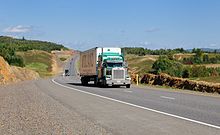
Canada is a very car-dependent country, and many visitors rent a car. Many of Canada's famed natural attractions are only accessible by car. Although somewhat expensive if you are travelling alone, this can be economically reasonable if you are sharing the costs with others. However, there are many limitations and drawbacks on car rentals in Canada, including:
- There can be very high surcharges associated with dropping off the car at a different location than where it was picked up.
- Unlimited kilometres are usually offered for the province you rent it in only. As soon as you enter another province, even for a few kilometres, your entire trip gets limited (mostly to 200 km a day).
- Driving is usually permitted on paved roads only.
- There are no manual transmission rental cars available in Canada.
In some cases, frugal travellers may be able to "earn" budget automobile travel by delivering a car across Canada. The option is not common. Nor does it offer the opportunity to spend much time stopping along the way. However, it can be a cheap way to cross Canada while seeing the interior. Canada Drive Away and Hit the Road are options.
Throughout the mainland of North America including Canada, traffic moves on the right with most cars being left-hand-drive. The only areas of North America that do not drive on the right are on some Caribbean Islands.
Driving within Montreal, Vancouver or Toronto is not always practical; these cities are densely populated and parking can be difficult to find and/or expensive. All three cities provide extensive public transit, so it may be better to park in a central location, or at your hotel or lodging, then use public transit. You can usually obtain maps of the public transit systems at airports, subway kiosks, and train stations. Outside those cities, public transport tends to be unreliable or non-existent, so a car is almost essential just to get around at all.
Gasoline in November 2022 costs $1.60-2.00 per litre in most Canadian cities. Debit and credit cards without the "chip and PIN" are not recognized at the pumps, although most companies accept the cards if they are brought inside to the cashier.
In general, foreign visitors are allowed to drive using their foreign licence for up to 90 days if their licence is in English or French, after which they have to obtain a Canadian licence from the province or territory they are residing in. Foreign licences in other languages must be accompanied by an International Driving Permit (IDP). Most foreigners are required to take a written and practical test before they can get a Canadian licence, though individual provinces may have reciprocal agreements that exempt some foreigners from testing requirements; check with the relevant provincial government to be sure. Licensing laws and road rules vary slightly from province to province.
Many jurisdictions also have red light and speed cameras that issue fines via mail to the car's registered owner, again via licence plate when the car is automatically photographed running (disobeying) a red traffic light or going above the speed limit. The above warning regarding rental agency policies applies to these as well. As the ticket is sent to the vehicle owner (not the driver) long after the alleged offence, it is difficult or impossible to obtain due process or a fair trial, making these traps a lucrative source of revenue for local and provincial governments.
By RV [ edit ]
If you are set on a road trip, an alternative to car rental is to rent an RV (motorhome or campervan). This gives you the flexibility to explore Canada at your own pace and is ideal if your trip is geared around an appreciation of Canada's natural environment. Costs can also be lower than combining car rental with hotels.
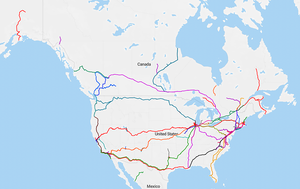
Railways in Canada are considerably underdeveloped by the standards of the developed world. Passenger rail service in Canada, although safe and comfortable, is often an expensive, slow and inconvenient alternative to other types of transport, though it may be still faster and more convenient than inter-city buses on long distance routes, as most inter-city routes do not operate overnight and route schedules are generally not coordinated between the various bus operators. Government-owned VIA Rail is Canada's main long-distance rail operator, and provides service to most of Canada's major cities except Calgary.
The Quebec City - Windsor Corridor , passing through through Montreal , Ottawa and Toronto , is an exception to this generalization. There are no high-speed trains in Canada, and taking the train usually works out slower than driving yourself.
The routes outside of the Quebec City-Windsor Corridor are either the single day trains in Ontario and Quebec or the four multi day trains outside of the Central provinces. The approximately four full days and nights train ride between Toronto and Vancouver called The Canadian is the most famous, and VIA Rail Canada's flagship train, which passes through the splendour of the Canadian prairies and the Rocky Mountains , with domed observation cars to allow passengers to take in the magnificent views. The Ocean , a full day and night train trip that passes from Montreal to Halifax , passes through the Canadian Maritimes and provides excellent ocean views in its journey in Northern New Brunswick. The Winnipeg - Churchill route takes two days and nights to travel to the shores of Hudson Bay and is the only passenger train service to Northern Canada. In British Columbia, The Skeena travels from Jasper to Prince Rupert over the course of 2 days and provides some of the best scenery aboard any VIA Rail Canada train. However, this train overnights in Prince George and a ticket does not include accommodation in the town. Additionally, the route travels along a heavily trafficked rail route, so expect multiple delays along the way.
Some tourist trains can also get you from A to B but their focus is mostly on sightseeing, not transportation and they are usually much more expensive than a plane, car or bus trip would be. The Rocky Mountaineer is the most well known and runs three routes out of Vancouver during the summer (late April to early October). The most popular and arguably most scenic of the Rocky Mountaineer's routes is the First Passage to the West from Vancouver to Banff along the historic Canadian Pacific Railway, taking two days to complete the journey with an overnight stop in Kamloops . However, this train is not a viable inter-city train as tickets are very expensive and oriented towards sightseeing tourists exclusively.
While you'll find various ferries crossing rivers around the country and scenic boat trips on lakes and rivers, the main ferry services are on the east and west coasts.
Marine Atlantic provides ferry service between North Sydney , Nova Scotia, and Port-aux-Basques , Newfoundland. There are also ferries to the Îles-de-la-Madeleine , generally from Souris , and much less often from Montreal .
BC Ferries has an extensive network of services along the coast of British Columbia and to Vancouver Island and to outlying islands.
By thumb [ edit ]
Canada can be a great place for hitchhiking , and is still done by younger travellers strapped for cash, or seeking adventure. It's most common in the far western provinces, although popularity is decreasing. Hitchhiking in the urban areas of Southern Ontario and Montréal is not a sure thing as many drivers will not pick up hitchhikers in these regions.
In heavily populated areas such as the Windsor-Quebec corridor , the main route used to be a road that went through every town as the main street. A freeway was built in the 1960s, leaving three options – hitchhike on the old road (slower, and more difficult as most of the remaining traffic is local), stand on the shoulder of the freeway (which is illegal, but not uncommon) or stand at the on-ramp and hope someone getting on at that crossroads is going your way. In less-populated areas (such as the vast stretches of Trans-Canada Highway across northern Ontario ), the surface road remains the only highway, giving pedestrians (and hitchhikers) unfettered access at any point.
The small town of Wawa in Northern Ontario was famous in the 1960s and 70s as a place where westbound hitchhikers became stranded, sometimes for days. It might still be wise not to accept a ride that only goes to Wawa; look for one that goes through to Thunder Bay . More generally, look for lifts going to decent-sized towns rather than ones that will drop you in the middle of nowhere. This makes it easier to find your next lift, or food and lodging, and reduces risks of dangerous animals or being caught without shelter in nasty weather.
Hitchhiking in winter is best avoided (except as a last resort) as darkness falls early and drivers cannot see you easily in snowstorms or hazardous weather conditions.
As anywhere in the world, hitch-hiking carries risks.
By ride sharing [ edit ]
Ride sharing is increasing in popularity among users of Internet website Craigslist and dedicated ridesharing sites such as Kangaride , Poparide and RideshareOnline . This method of transport works best between major centres, for example, Toronto-Montreal or Vancouver-Calgary. Generally anything along the Trans-Canada Highway corridor (Victoria, Vancouver, Banff, Canmore, Calgary, Regina, Winnipeg, Thunder Bay, Sault Ste Marie, Sudbury, Toronto, Ottawa, Montreal, Quebec City, St Johns, Halifax, PEI) should be no problem if your dates are flexible.
Some tourist destinations, especially those popular with young people, can be accessed via rideshare, for example: Vancouver-Whistler or Calgary-Banff. People sharing a ride will usually be expected to pay for their fair share of the fuel cost, and may also be asked to do some of the driving on long hauls.
For best results be sure to post a request listing, and start checking for offer listings at least one week prior to your anticipated ride date. Backpacker's hostel notice boards are also a good resource for ride sharing.
Like hitchhiking, some common sense and discretion is advisable.
On foot [ edit ]
The Trans Canada Trail covers 27,000 km (as of 2020), stretching from the Atlantic Ocean to the Pacific Ocean and to the Arctic Ocean.
See [ edit ]

Canada is a nation with many places of interest all across the country. Each province and territory is unique with each one containing its own special attractions.
North American wildlife can be found all across the country.
The Canadian territories, though often expensive to reach, provide the natural tourist the least touched natural areas in the country. In Yukon , you have the majestic Northern Mountains, such as in Kluane National Park , and the relatively unknown Tombstone Territorial Park . While the Northwest Territories are relatively unknown to many adventurers, they are the real "fisherman's paradise", with thousands of untouched lakes loaded with big game fish, including the mighty sturgeon. The NWT also possesses highly esteemed national parks such as Nahanni National Park Reserve and the more remote Aulavik National Park , as well as the northern part of Wood Buffalo National Park . Nunavut has some of the most beautiful untouched Arctic land in the world, tucked away in hard to reach corners like Baffin Island and Ellesmere Island .
Alberta is one of the most geographically diverse provinces in all of Canada, with the world-famous Rocky Mountains in the west, the "greatest outdoor show on earth" in Calgary (the Calgary Stampede), West Edmonton Mall in Alberta's capital, the arid badlands near Drumheller , and the wild frontiers of Alberta's northern forests. Calgary and Edmonton are both world class cities and offer a wide array of museums and sights to see. Alberta is home to world famous Banff National Park and Jasper National Park , and possesses many provincial parks such as the provincial park in Kananaskis Country .
Saskatchewan and Manitoba are generally considered the "fly over" provinces of Canada with little to see. However, travellers to these two provinces will actually find quite a bit to see. Saskatchewan is notorious for how flat it is, however this can a surprising sight to those accustomed to seeing the farmlands of Ontario and Quebec because of the lack of trees and the abundance of grain elevators. Grasslands National Park remains one of the few untouched prairie landscapes and provides much to do within a weekend trip. Regina and Saskatoon are the two big cities and, although much smaller than Calgary or Toronto, provide all of the amenities common to any major city. Northern Saskatchewan remains largely untouched by people and has become a paddling and fishing destination for many from around the world. Manitoba's geography is similar to that of Saskatchewan, with a largely flat terrain and a sparsely populated northern boreal forest. Riding Mountain National Park provides visitors with stunning natural scenery and Wapusk National Park on the shores of Hudson Bay is the denning grounds for the majority of Canada's polar bear population. Winnipeg is the biggest city in Manitoba and offers many amenities of a major city. Being the first major city of Western Canada, Winnipeg is rich in history and a history tourist will find plenty to see in and around the city. Churchill is famous as a destination for nature photographers as polar bears are frequently seen in the town, so much so that the town has its own Polar Bear Patrol and made it illegal to lock your car and house doors in the case someone needs to flee an attacking polar bear. For fans of snakes, Manitoba possesses a natural secret in the Narcisse Snake Dens, recognized as the site with the greatest concentration of snakes on the face of the Earth. Every spring, red sided garter snakes make their way from their winter dens to this location to take part in a breeding frenzy.
Ontario and Quebec include the beaten-path Windsor-Quebec corridor through the country's two largest metropolises, Toronto and Montreal ; both also contain huge rural expanses and many remote points where there simply is no road. As the national capital, Ottawa - Gatineau has an unparalleled array of museums. Quebec City (1608) and Montréal (1640) are famous for their old towns and architecture, with old Quebec City retaining original "walled city" fortifications of yesteryear.
Pioneer villages and historic sites in many provinces recall the everyday life of early colonists before the introduction of machine power. The memory of the United Empire Loyalist exodus and the War of 1812 lives on in many Ontario and New Brunswick border communities. Atlantic Canada has preserved much of its Acadian heritage.
The three Maritime provinces are a hidden gem to travellers to Canada as many visitors pass over the Maritimes towards the Mountains of the west. Nova Scotia treasures its maritime legacy with a famous lighthouse perched atop the rocky shoreline of Peggys Cove , historic shipyards at Lunenburg and a seaside fortress the size of a small colonial village at Louisbourg . In the north of the province is Cape Breton Island , which is home to the world famous Cabot Trail, and the scenic shores of Bras d'Or Lake. The sandy beaches of Prince Edward Island gain immediate recognition by literary travellers seeking the birthplace of Anne of Green Gables, and many are delighted to visit the Parks Canada Green Gables Historic Site where the site has been turned into a living replica of the famous story. Though refered to as the "drive thru province" because of the misheld belief that there is little to see, New Brunswick has some of the most beautiful natural scenery in the region. The Appalachian mountains in the North provide visitors with pristine wilderness scenery and the Fundy Shores, especially in Fundy National Park , showcase the highest tides in the world. The St. John River Valley provides those looking to take the scenic route with a royal treat, as one can drive the length of the river valley from Edmunston to St. John.
The coasts of Newfoundland are dotted with tiny fishing villages known as "outports" and four UNESCO World Heritage sites - Gros Morne National Park , Mistaken Point , the Anse-aux-Meadows Viking archaeological site on the Great Northern Peninsula and a Basque whaling camp at Red Bay , Labrador .
Cultural tourism [ edit ]
Because of its immense geography and history of immigration, Canada is home to numerous "ethnic enclaves" where various cultures continue to co-exist with Canada's predominant, European-derived culture. Not only that, but Canadians are typically quite proud to tell you about their genealogy, even if they are only "a quarter this and half that". It's not considered rude in Canada to refer to someone whose family has lived here for generations as "a Ukrainian" or "an Italian", so long as you don't imply they are not also fully Canadian.
This pride in distinctiveness most obviously refers to the mostly French-speaking province of Quebec , but even here there are smaller minorities within such as Jews and Italians in Montreal or English and Irish in pockets of rural Quebec, and so on. Further east another group of French-speakers, the Acadians , also have a distinct history and lifestyle along the Atlantic Coast. On that same coast is a strong Celtic influence , which is evident in the musical traditions of Cape Breton Island and Newfoundland and Labrador , notably in Newfoundland's Irish Loop . Besides the numerous immigrant neighbourhoods in uber-cosmopolitan Toronto, Ontario has many different flavours in its smaller cities: Finns are a major influence on Thunder Bay , Germans on Kitchener , and so on. Out West, it's the Icelanders, Mennonites and Ukrainians that left a mark in the countryside of Manitoba as well as Winnipeg. Speaking of Ukrainians, Alberta's Kalyna Country is a giant "eco-museum" dedicated to them. Chinatowns are numerous in Canada, but none are as historic as Vancouver's or Victoria's.
Indigenous cultures are still distinct, and have a complex and tragic history. Like their counterparts in the United States and Australia, the government had for much of Canadian history tried to exterminate the Indigenous cultures, notably including by forcibly taking children from their parents and placing them in boarding schools in an effort to assimilate them into mainstream white Canadian culture. Most Indigenous people have until recently lived in remote and isolated places, and in any case were prevented from travelling freely by the Canadian government until the 1940s and 1950s; consequently most Canadians had little contact with them. However in recent decades thousands of them have arrived in cities, often with little education, and with unresolved mental health and addiction problems. Therefore there have been ethnic tensions. A new well-educated Indigenous middle class is emerging that has brought Indigenous issues into the attention of the mainstream, and the Canadian government has been making some progress in addressing historical grievances of the Indigenous communities. These days there is a new spirit of "reconciliation" between Indigenous peoples and the state, but problems remain. These likely won't affect a traveller, but it certainly explains the relative lack of Indigenous-owned-or-operated businesses in the tourism industry here, despite the international appetite for "authentic experiences". Simply put, most Canadians have always avoided reserves the way white South Africans avoid townships or white Americans avoid the "hood": there are no attractions or accommodations on most reserves, and no one would want to risk building one. This picture is changing rapidly, however, as Indigenous governments are taking matters into their own hands and building museums, casinos, hotels, restaurants, and more. Examples would include Blackfoot Crossing Historical Park near Calgary, Wanuskewin Heritage Park near Saskatoon or the River Cree Hotel and Casino near Edmonton . In the meantime, however, often the best places to learn about Indigenous cultures and histories are at federal or provincial government-owned parks or museums, particularly the Royal British Columbia Museum in Victoria , the Museum of Canadian History in Gatineau (directly across the river from the Parliament in Ottawa), or Head Smashed In Buffalo Jump in southern Alberta. Of course the picture is much different in Northern Canada , where Indigenous people are a majority or sizable minority in all three territories; here much of the tourism is, in effect, Indigenous cultural tourism and the types of activities on offer will reflect that.
Spectator sports [ edit ]
- Ice hockey — The national sport of Canada, where it is known as just "hockey", and perhaps the one unifying factor between English and French Canadians. The top professional league in the sport is the National Hockey League (NHL) , which Canada shares with the United States. Seven of the 32 teams in the NHL are based in Canada, in the cities of Montreal , Toronto , Ottawa , Winnipeg , Calgary , Edmonton and Vancouver , and even though the last time a Canadian team won the NHL was in 1993, a considerable part (or even most) of the players in any given NHL team, including those based in the United States, are Canadians. The season finale is known as the Stanley Cup , which consists of a series of games played between the two finalists in May and June to determine the NHL champion.
- Canadian football — Very similar to American football played south of the border, though with rule differences that are more than trivial, making them distinct codes. In Canada, the term "football" usually refers to either Canadian or American football, while association football is known as "soccer". The top tier professional tournament is the Canadian Football League (CFL) , which has nine teams, with the season finale to decide the champion being the Grey Cup .
- Basketball — Canada has a long association with basketball; James Naismith, the sport's inventor, was a Canadian from Almonte , Ontario . One of the teams in the US-based National Basketball Association (NBA) , the Toronto Raptors, is based in Canada.
- Baseball — Canada hosts one team in the US-based Major League Baseball (MLB) , the Toronto Blue Jays.
- Lacrosse — Canada's national summer sport. The National Lacrosse League an indoor lacrosse league with 10 teams from the United States and 5 from Canada is the main professional league in the sport. Field lacrosse, the traditional form of the sport, is primarily played at the amateur level, with the Canadian University Field Lacrosse Association being the premier tournament in the sport.
- Short track speed skating — Particularly popular in Quebec , which has produced numerous Olympic gold medallists in the sport.
- Soccer — As for association football, the sport is becoming increasingly popular in Canada's major cities. Canada's three largest cities (Toronto, Montreal, Vancouver) all have teams in the U.S.-based Major League Soccer , where those three teams compete with 25 more from the U.S.. In 2019, the country launched its own Canadian Premier League , which shares top-flight status within Canada with MLS. The CPL has eight teams, only two of which share their markets with MLS (the Vancouver and York Region teams).
Do [ edit ]
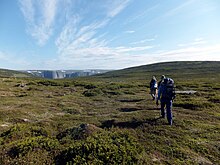
Canada is a country with a rich cultural heritage. In Canada, festivals and events are held annually to celebrate the multicultural landscape of this great nation. Each festival represents a single cultural facet belonging to the diverse population of Canada. These festivals are easily identified by season.
Spring [ edit ]
In some parts of the country, April and May mark the beginning of Canadian music festival season. Yellowknife in the Northwest Territories celebrates spring with the Cariblues Festival, Halifax showcases chamber music with the Scotia Festival of Music and Ottawa highlights concerts, flowers and history at the Canadian Tulip Festival.
Canada is also renowned the world over for its theatre festivals such as the Stratford Festival in beautiful Stratford and the Shaw Festival in scenic Niagara-on-the-Lake , both of which begin at this time and continue through to the fall. There are also a number of children's festivals including the Calgary International Children's Festival and the annual Saskatchewan International Film Festival for Young People.
Summer [ edit ]
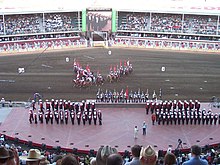
June 21 to July 1 marks 10 days of celebrations in Canada. The festivities begin on 21 June with National Aboriginal Day and celebrations across the country continue on 24 June with Saint-Jean-Baptiste Day, in honour of the patron saint of French Canadians, on 27 June with Canadian Multiculturalism Day, and culminate with Canada Day with parties everywhere on 1 July.
In addition, there are many musical and cultural summer festivals taking place across the country. Here is just a taste: Yellowknife’s Summer Solstice Festival, Calgary’s Reggaefest, Windsor's International Freedom Festival (with Detroit), the Calgary Stampede, Winnipeg’s Folklorama, Toronto’s Caribana, Les Francofolies de Montreal , as well as Montreal's Jazz and Comedy festivals, New Brunswick’s Festival acadien de Caraquet, London's Rib-fest, Bayfest in Sarnia , the Jazz and Blues Festival in Charlottetown , Prince Edward Island and the Collingwood Elvis Festival in Collingwood , Ontario. Edmonton is also known as the "Festival City" due to the large number of festivals (such as North America's largest Fringe Theatre festival).
Autumn [ edit ]
The autumn (fall) is traditionally a time for literary festivals and film festivals. Lovers of the written and spoken word may like the Trois-Rivières ’ bilingual Festival International de la Poésie, Halifax’s Atlantic Canada Storytelling Festival, and Toronto’s International Festival of Authors. Film lovers can choose from the Toronto International Film Festival, the Vancouver International Film Festival, the Montreal World Film Festival, the Atlantic Film Festival, and St. John's International Women's Film Festival in Newfoundland, among many others.
Kitchener-Waterloo hosts the largest Oktoberfest celebration outside Bavaria. This nine-day festival features numerous cultural and entertainment activities. Many local venues are converted into Biergartens (Beer Gardens) and take on Germanic names for the duration of the festival. Kitchener-Waterloo Oktoberfest attracts over 700,000 visitors annually.
Fall is also a time for families to enjoy the autumn splendour of nature in fall festivals or in simple activities where one enjoys the beautiful countryside.
Winter [ edit ]
Winter is the time when Canadians and their families take to the slopes and hit the ice at ski resorts and community hockey rinks across the country. Canada's world-famous winter festivals take place in late January and February including Carnaval de Québec in Quebec City and Winterlude/Bal de neige in Ottawa and Gatineau . There are also winter events that pay homage to Canada’s hardy pioneers such as the Festival du Voyageur in Winnipeg and the Yukon Sourdough Rendez-vous Festival set in Whitehorse .
In Calgary, the month of January is devoted to showcasing challenging national and international theatre, dance, and music in The High Performance Rodeo, one of Canada’s leading festivals of new and experimental theatre.
Especially popular in British Columbia and Alberta, winter sports such as skiing and snowboarding are practiced and enjoyed regularly during the winter. British Columbia and Alberta are home to many of the world's top ski resorts, including Whistler Blackcomb (a two-hour drive from Vancouver). Skiing in the Banff and Jasper National Parks (130 km from Calgary and 370 km from Edmonton, respectively) is also popular. Canadians love to go ice skating, and during the winter, park trails scattered across the country are flooded with water to let skaters take their sport outdoors.
Buy [ edit ]
Popular souvenirs from Canada include smoked salmon and maple syrup products.
Money [ edit ]
Canada's currency is the Canadian dollar (symbol: $ , ISO currency code: CAD ), commonly referred to as a "buck" (slang), "loonie" (nickname for the $1 coin, now also a slang term for the currency), or in Canadian French, un piastre . The Canadian dollar is considered to be one of the world's major currencies, and is widely available at banks and money changers throughout the world. You can assume that any "$" sign you see while in Canada (and in this article) refers to Canadian dollars unless it includes other initials (e.g., "US$" for U.S. dollars).
One dollar consists of 100 cents (¢). Canadian coins are 5¢ (nickel), 10¢ (dime), 25¢ (quarter), $1 (loonie) and $2 (toonie). The 1¢ coin has been eliminated, but remains legal tender. The 50¢ coin is rarely encountered, but is also valid. The nickel, dime, and quarter are silver in colour; the loonie is gold-coloured, and the toonie is gold-coloured in the centre and silver-coloured on the outer part. The dime is the smallest; the others increase in size in order of denomination. Canadian banknotes (or "bills") are made from a polymer material, and come in denominations of $5 (blue), $10 (purple), $20 (green), $50 (red) and $100 (brown). Old paper bills are no longer accepted by most businesses, but can be exchanged at any bank for free.
The nickel, dime, and quarter roughly match their U.S. counterparts in size, shape, and colour. American coins are often accepted at par in Canada (at least by humans; machines are more discriminating).
Because of the historical strength of the U.S. dollar compared to the Canadian dollar, goods have a higher dollar price in Canada than equivalent goods south of the border.
Tipping [ edit ]

Tipping in Canada is similar to that in the United States due to the close cultural nature of the two countries but tends to be somewhat lower because of higher minimum wages. Restaurant wait staff in Canada typically receive 15–18% on the before-tax total. Tipping is not appropriate in cafeterias, fast food establishments and takeaway stands; one is not normally expected to tip hotel chambermaids. Once Canada's double-digit sales taxes and a tip are factored into the cost of a restaurant meal, the tab may often be 25–30% above the price indicated on the menu.
Some provinces (including Quebec and Ontario) allow employers to pay lower minimum wages to workers who would reasonably be expected to be receiving tips. As well, often a bar or restaurant will try to tack on a 15-18% tip themselves, so large groups and clients paying by credit card should check to see whether their bill already includes a "service charge" before giving twice.
Bargaining [ edit ]
Bargaining is extremely rare in ordinary retail shopping in Canada and attempts to talk a retail worker down in price will result in nothing (besides testing the employee's patience). This is rarely a problem, as most retailers in Canada price their items fairly and do not look to extort their customers due to the highly competitive market and well-off economy. For larger-ticket items, especially high-end electronics and vehicles, many employees work on commission, so bargaining is possible for these items, and sales-people may offer you a lower price than what is ticketed right from the start. Some large retail stores will offer you a discount if you can prove to them that one of their competitors is selling the same product for a lower price. However, in certain establishments such as flea markets, antique stores, and farmer's markets, you may be able to negotiate a lower price. Bargaining is possible in certain ethnic malls/stores. One notable example is Pacific Mall in Markham .
Some large retail chains (Wal-mart, and discount supermarket chains) will match the prices of their competitors if you provide proof of a lower price.
Currency exchange [ edit ]
It is possible to convert between Canadian dollars and most major currencies at many banks at the daily market value. Converting U.S. dollars, UK pounds and euros is relatively easy, other currencies less so. Private exchange bureaus may give better exchange rates and lower fees than banks.
Most retailers in tourist destinations will accept American dollar bills at a posted exchange rate somewhat below the official rate (usually about 10-15 cents lower). U.S. and Canadian coins are similar in size, so they are used interchangeably. This is particularly true of regions that receive a lot of U.S. tourists.
Credit cards [ edit ]

Credit cards are widely accepted, with Visa and MasterCard being accepted in most places, and American Express somewhat less frequently. Discover and Diner's Club are usually accepted at places geared towards foreign tourists such as hotels and car rental agencies. UnionPay and JCB cards are sometimes accepted in larger stores and tourist areas. UnionPay is accepted at all places that accept Discover, and JCB is accepted at all places that accept American Express. Generally, using a credit card also gets you a better exchange rate since your bank will convert the currency automatically at the prevailing daily rate.
Bill totals are often quoted to you rounded to the nearest 5 cents because 1-cent coins are no longer in circulation, but the amount charged to your credit card will be the un-rounded amount.
Electronic banking and purchasing [ edit ]
The banking system is well developed, safe and technologically advanced. ATM usage in Canada is very high. There is a safe and widespread network of bank machines (ATMs) where you may be able to use your bank card to withdraw money directly from your account at home, but the fees involved can be more than for credit cards. If possible, try to use chartered bank ATM machines as the fees are often cheaper than the independent ATM machines.
All Canadian banking institutions are members of the Interac domestic financial transaction network. Most retailers, restaurants and bars allow purchases by ATM card through Interac, even if they do not accept major credit cards, and many Canadians rarely use cash at all, preferring electronic forms of payment.
Other ATM networks are widely (but not universally) supported. In general, institutions which issue Visa (RBC, TD, CIBC, Scotiabank, National Bank, Desjardins) honour PLUS ATM cards, while institutions which issue Mastercard (BMO, National Bank, many credit unions) honour that company's ATM cards (Cirrus or Maestro).
Taxes [ edit ]
You will almost always pay more than the prices displayed because prices usually exclude sales taxes. So, don't get your loonie ready when you go to the cashier in a thrift shop, because the till roll may well show $1.13. With the cash price rounded to the nearest nickel ($0.05), now that the penny is no longer in circulation, you'll have to stump up $1.15 in cash!
Taxes will be added on top of the displayed price at the cashier. Exceptions, where the displayed price includes all applicable taxes, are motor vehicle fuels (the amount you pay is as it appears on the pump), parking fees, and vending machines.
A national Goods and Services Tax (GST) of 5% is applied to most items and services. In addition to the GST, most provinces charge an additional Provincial Sales Tax (PST) on purchases of goods. Ontario and the four Atlantic provinces (New Brunswick, Newfoundland and Labrador, Nova Scotia, Prince Edward Island) have joined or "harmonized" the PST and GST. In these provinces, instead of being charged two separate taxes on a purchase, consumers will see one tax called the Harmonized Sales Tax (HST). In Quebec, the PST is known as TVQ ( taxe de vente du Québec ) and the GST as TPS ( taxe sur les produits et services ).
While the GST and PST or HST are charged on most goods and services, some items are exempt from taxation. While this list can vary by province and tax, some common examples are: basic groceries (not prepared), prescription drugs, residential housing, medical and dental services, educational services and certain childcare services. The list of exempt items for GST/HST is typically shorter than that for PST in provinces where the provincial exemption list is separate.
The sales tax rates (as of 2024) are:
- Alberta, Northwest Territories, Nunavut and Yukon – no PST, GST only (5% total)
- British Columbia – adds 7% PST and 5% GST (total 12%)
- Manitoba – adds 8% PST and 5% GST (total 13%)
- Ontario – adds 13% to taxable purchases as HST (13% total)
- Prince Edward Island, New Brunswick, Newfoundland and Labrador, and Nova Scotia – add 15% to taxable purchases as HST (15% total)
- Quebec – adds 9.975% to taxable purchases plus 5% GST (14.975% total)
- Saskatchewan – adds 5% to taxable purchases plus 5% GST (10% total)
Additional taxes have been placed on some goods (such as alcohol and gasoline) and vary by province; however, these taxes are usually included in the displayed price of the good. The displayed pump price for fuel includes all taxes.
In addition, some cities in Canada charge an additional city tax. Halifax, Nova Scotia, is a noted example that charges an additional 2% city tax on top of the HST, bringing the total sales tax in Halifax to 17%.
There is no program for visitors claim a rebate of sales taxes in Canada.
Eat [ edit ]
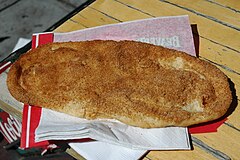
Generally speaking, table manners in Canada are in line with standard European norms.
English Canadians may be mystified if you ask where you can get Canadian food. English Canadian cuisine varies radically from region to region. Some specialties include maple syrup , Nanaimo bars (chocolate-topped no-bake squares with custard or vanilla butter filling and crumb base), butter tarts (tarts made with butter, sugar, and eggs), beaver tails (fried dough topped with icing sugar), fiddleheads (curled heads of young ferns), peameal bacon (a type of back bacon made from lean boneless pork loin, trimmed fine, wet cured, and rolled in cornmeal; eaten at breakfast with eggs or for lunch as a sandwich), and Halifax donairs (sliced beef meatloaf wrapped in pitas and garnished with onions, tomatoes, and a sweet condensed milk sauce). They are an important, if somewhat humble, part of the Canadian culinary landscape. In other respects, English Canadian cuisine is similar to that of the northern United States. Canadians may be unaware that they even have national dishes, especially in the more urbanized areas; that said, there is a rising trend among Canadian chefs and restaurateurs to offer locally produced ingredients, and most major cities have bistros that specialize in local and national cuisine. These specialties may even include game meat dishes, such as caribou, grouse, moose, venison, or wild turkey prepared in a variety of European styles.
French Canadian cuisine is distinctive and includes such specialties as tourtière , a meat pie dish that dates back to the founding of Quebec in the 1600s, cipaille (meat and vegetable pie), cretons (mince of pork drippings), ragoût de pattes (pigs' feet stew), plorine (pork pie), oreilles de Christ (fried larding bacon), poutine , a dish consisting of French fries, cheese curds and gravy (its popularity has spread across the country and can be found from coast to coast), croquignoles (home-made doughnuts cooked in shortening), tarte à la farlouche (pie made of raisins, flour and molasses), tarte au sucre (sugar pie), and numerous cheeses and maple syrup products. In Acadian regions, available dishes will differ, and include poulet tricot, and poutine râpée (a potato dumpling with meat inside). Staples include baked beans, peas and ham. French-Canadian cuisine also incorporates elements of the cuisines of English-speaking North America, and, unsurprisingly, France.
The Indigenous peoples of Canada have their own distinctive cuisines, though these have not caught on with the majority of Canadians due to the use of exotic ingredients (e.g., bannock, bison, deer, muktuk), and you will often have to travel to their respective areas in order to sample these. Nevertheless, Indigenous restaurants are also becoming more common in the cities.
One peculiar tradition that you may notice in nearly every small town is the Chinese-Canadian restaurant. A lot of the reason for this is the role Chinese immigration played historically in the early settlement of Canada, particularly in the building of the trans-continental railway. These establishments sell the usual fast-food Chinese cuisine. American visitors will find this cuisine familiar, as it developed in parallel with a virtually identical version in the States. In Toronto and Vancouver, two large centres of Chinese immigration, one can find authentic Chinese cuisine that rivals that of Hong Kong. In both cities, the original Chinatowns have been eclipsed by newer Chinatowns in the suburbs, and most ethnic Chinese residents will tell you that the best authentic Chinese food is in the suburbs and not in Chinatown; Richmond in the case of Vancouver, with the majority of its residents being of Chinese descent, and Richmond Hill and Markham in the case of Toronto.
Montreal is well known for its Central and Eastern European Jewish specialties, including local varieties of bagels and smoked meat. In the prairie provinces, you can find great Ukrainian food, such as borshch and varenyky, due to large numbers of Ukrainian immigrants.
If you are more adventurous, in the larger cities especially, you will find a great variety of ethnic tastes from all over Europe, Asia and elsewhere. You can find just about any taste and style of food in Canada, from a 20-oz T-Bone with all the trimmings to Japanese sushi (indeed, much of the salmon used in sushi in Japan comes from Canada).
Americans will find many of their types of cuisine and brands with subtle differences, and many products unique to Canada, such as brands of chocolate bars and the wide availability of authentic maple syrup. Familiar products sometimes have other names: In the candy aisle, Smarties are candy-coated chocolate buttons similar to M&Ms, and the sugar candy known to Americans as Smarties are called Rockets in Canada.
If you are looking for a grocery store, then Loblaws, Sobeys, and Metro are the biggest companies, but depending on the province, their stores may go by multiple different brands, none of which make reference to the parent company.
Drink [ edit ]
The drinking age in Canada varies from province to province. In Alberta, Manitoba and Quebec the age is 18, while in the rest of the provinces and territories it is 19 . Acceptable forms of ID include a Canadian driver's licence, a passport or a non-driver provincial identification card. Foreign driver's licences may not be accepted, the main exceptions being U.S. licences, so bring your passport with you if you want to drink. A peculiarity of many Canadian provinces is that liquor and beer can only be sold in licensed stores. In some provinces, supermarkets may sell only beer and wine, and many will not sell alcohol at all. Supermarkets in some provinces may have their own liquor store nearby. Prices may seem high to Americans from certain states; bringing alcohol into Canada (up to 1L of hard liquor, 1.5L of wine, or a 24 pack of beer), is advisable. American cigarettes are also quite popular to bring in as they are not sold in Canada.
Beer [ edit ]
Canadian mass-market beers (e.g., Molson's, Labatt's) are generally a pale gold lager, with an alcohol content of 4% to 6%.
The mass-market beers are not very distinctive (although Americans will notice that some beers made by these companies are not sold in the States). However, Canadian beer drinkers do support local brewers. There has been a major increase in the number and the quality of beers from micro-breweries. Although many of these beers are only available near where they are produced, many mid-scale to top-end bars carry locally brewed beers. Many cities have brew pubs, which brew and serve their own beers, often with a full kitchen backing the bar. These spots offer a great chance to sample different beers and to enjoy food selected to complement the beers.
Halifax, Nova Scotia is home to the oldest continuously-brewed beer in North America, Alexander Keith's. Brewed at a facility on the city's waterfront since 1820, it is marketed as an India Pale Ale for historical reasons, but by modern standards is closer to a North American Blonde Ale, with low levels of hops (13 IBU). Brewery tours are available on a regular basis, featuring a history of the facility and of Mr. Keith himself (who actually served as the city's Mayor for a time), and complimentary samples for those of age.
Wine [ edit ]

The two largest wine-producing regions in Canada are the Niagara Region in Ontario and the Okanagan in British Columbia. Other wine-producing areas include the shores of Lake Erie, Georgian Bay (Beaver River Valley) and Prince Edward County in Ontario, and the Similkameen valley, southern Fraser River valley, southern Vancouver Island and the Gulf Islands in British Columbia. There are also small scale productions of wine in southern Quebec, Nova Scotia, and Saskatchewan.
Ice wine , a (very) sweet dessert wine made from frozen grapes is a Canadian specialty, in particular found at airport duty-free stores around the world. In contrast to most other wine-producing regions in the world, Canada, particularly the Niagara Region, consistently undergoes freezing in winter and has become the world's largest ice wine producer. However, due to the tiny yields (5-10% compared to normal wine), it's relatively expensive, with half-bottles (375 mL/13 fl oz) starting at $50. Canadian ice wine is somewhat sweeter than German varieties.
Distilled spirits [ edit ]
Canada is famous in other countries for its distinctive rye whiskey, a beverage commonly appreciated by Canadians. Popular brands include Canadian Club, Wisers, and Crown Royal. In addition to the plentiful selection of inexpensive blended ryes, you may find it worth exploring the premium blended and unblended ryes available at most liquor stores. One of the most-recognized unblended ryes is Alberta Premium, which has been recognized as the "Canadian Whiskey of the Year" by famed whiskey writer Jim Murray.
Canada also makes a small number of distinctive liqueurs. One of the most well-known, and a fine beverage for winter drinking, is Yukon Jack, a whiskey-based liqueur with citrus overtones. It's the Canadian equivalent of the USA's Southern Comfort, which has a similar flavour but is based on corn whiskey (bourbon) rather than rye.
Cape Breton Island is home to North America's first (and Canada's only) single malt whiskey. Nova Scotia has a long involvement with rum and rum-running, due to its historical naval prominence, proximity to America during Prohibition, and large quantities of high-quality local molasses production. Several local distillers offer on-site tastings, and local liquor stores offer a wide variety at a wide range of prices.
Newfoundland 's "screech" is the only liquor that can legally be sold in Canada at strength above 100 proof. It is Jamaican rum that Newfoundland had been importing for centuries before they joined Canada in 1949, and an exception to the potency limit was made for it.
Other beverages [ edit ]
You can find most nonalcoholic beverages you would find in any other country. Carbonated beverages (referred to as "pop", "soda" and "soft drinks" in different regions) are very popular. Coffee is a very popular beverage in Canada, usually drunk with breakfast or through the morning. Tim Hortons is the most ubiquitous and popular coffee shop in the country. Starbucks is also quite popular in most mid and large-sized cities. Other national chains such as Second Cup, Timothy's, mmmuffins, Country Style, and Coffee Time are found all over Canada. Tea is available in most coffee shops, with most shops carrying at least half a dozen varieties (black, green, mint, etc.)
Sleep [ edit ]
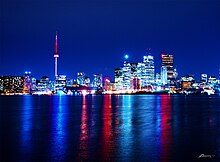
Accommodations in Canada vary substantially in price depending on time and place. In most cities and many tourist areas, expect to pay upwards of $100 or more for a good hotel room. If inquiring always ask if taxes are included; they most often are not, and can often add 15% to the cost once local, provincial and federal levies are taken into account.
Hotels play an integral part in Canadian history, with some of the country's most well-known landmarks being hotels. The Canadian Railway Hotels are a series of grand hotels that were constructed in major cities and some resort areas in the early 1900s. See Grand_old_hotels#Canada . Most of these are still standing and owned by corporations such as Fairmont Hotels & Resorts. Prices range from $150–400 a night depending on the city and the size of the room. These hotels are architecturally stunning and sumptuously decorated, and in addition to being exceptional places to stay, are tourist attractions in their own right. Even if you are not staying in a Grand Railway hotel, it would be more than worthwhile to explore the main lobby or dine at the hotel restaurant.
In rural areas, motels (short for "motor hotel") are small, simple hotels where you might pay as little as $40–60 for a night's accommodation (especially in the offseason). These are diminishing in number as international chains have largely saturated the low-end of the market with economy, limited service hotels along major freeways. Most villages have B&B ( bed and breakfast ), people's homes with suites for guests which are as distinctive in personality as their owners. Prices vary widely – anywhere from $45 a night to $140 a night – including a breakfast of some kind in the morning. Try bbcanada.com for listings.
Other options include cottage rentals on the lakes and in the countryside and apartment rentals in the cities. Prices compare to hotels and motels and this type of lodging provides some comfort of home while you are travelling.
Youth hostels are a good choice, offering lodging in shared dorms ($20–40) or private rooms ($45–80). Some useful resources are Hostelling International Canada and SameSun Backpacker Lodge . Most hostels in Canada meet very high standards.
Some universities will rent their dormitory ( more commonly called "residence" or "res") rooms in the academic off-season - May-August. Check university websites for more information.
A few hunting or fishing outfitters rent cabins or lodges, primitive rooms which provide access to some out of the way, off the grid lakeside rural location.
Finally, there is a large number of campgrounds in Canada. These range from privately owned R.V. parks to the publicly operated campgrounds in national and provincial parks, and are almost always well-kept and generally very beautiful. Almost every town and city will have at least one campground but, given Canada's climate, these operations are inherently seasonal.
Houseboats are available to rent on some scenic rural lakes and rivers in the summer months.
Learn [ edit ]
All foreigners require a study permit to study in Canada, in addition to any necessary visas. Enrolling in an academic programme on a tourist visa is illegal. There are exceptions to this rule for short-term (total course length less than six months) students and minors who are present in Canada with a parent who is authorised to study or work.
As a bilingual country, Canada has both English and French-language universities (and a few bilingual universities such as the University of Ottawa) which, while not as famous as those of its southern neighbour, are generally well-regarded and draw students from far and wide. Some of these universities also conduct intensive language courses for foreigners who wish to improve their English or French.
Work [ edit ]
Canada is generally a good place to work. The minimum wage varies by province, from $10.85/hour in Nova Scotia to $16.75/hour in British Columbia. As with most of the developed world, the economy is shifting from one dominated by manufacturing to one dominated by services. Thus, factory and manufacturing work is becoming scarcer every year and is highly sought, with most factories requiring a high school education or trade certificate. Minimum wage jobs are becoming more common every year, however with the housing market booming there is still a fair number of good construction jobs to be had. Hiring practices are similar to those in the US.
Foreigners, including United States citizens, wishing to work in Canada are required to obtain a work permit in order to do so, unless they are already permanent residents of Canada. International students may work part-time for up to 20 hours per week on-campus, and those enrolled in Canadian degree programmes may work part-time off-campus provided it is stipulated in their visa. Under the vast majority of circumstances, it is illegal for foreigners to work in Canada on a tourist visa, and doing so will result in you being deported and banned from re-entering. However, there are certain things the Canadian government does not legally consider "work" for this purpose, the biggest being remote work, when done for a non-Canadian employer and paid into a non-Canadian bank account.
However, United States and Mexican citizens working in certain skilled professions are able to obtain a work permit on arrival. Check with an immigration consultant to see if your potential job falls under the USMCA agreement's "professional" category and to ensure that your documentation is in order for when you arrive. Be prepared for the process to take extra time as you are essentially doing the full work permit application process at the border checkpoint. This can become a problem if crossing by bus; notify the driver in advance that you are applying for a work permit on arrival so that they will either wait for you at the border checkpoint or make arrangements for you to be picked up by another bus coming later.
Canadian visa rules include a category for people who can be self-employed in Canada. Artists, musicians and athletes or coaches who are "able to make a significant contribution to the cultural or athletic life of Canada" are eligible, but the bar is set rather high for them; for example, a coach with considerable experience of Olympic or professional sports will probably qualify but other experience may not count. Experienced farmers who want to buy and run a farm in Canada are also considered in this category and the bar is lower; if you have a decent business plan and enough money to get it started then you are quite likely to be admitted (or if you are a US farmer who owns land along the border, working both sides is another case that the Canadian government does not consider "work" for visa purposes).
Once you have been given work authorization, you will need to obtain a Social Insurance Number (SIN) so your employer can report your wages to the government for tax purposes. Income tax in Canada is levied both at the federal and provincial levels, though with the exception of Quebec , the federal government collects income tax on behalf of the provinces, meaning that you do not have to file separate tax returns. Those who are based in Quebec will be required to file their federal and provincial tax returns separately.
Working Holiday Visas [ edit ]
A Working Holiday Visa (also referred to as an "International Experience Canada / Working Holiday Visa") enables young citizens from certain countries to spend 1 or 2 years in Canada and to legally gain employment while in the country. The eligibility and length of stay rules vary by nationality. The standard rule used to be that a 1-year stay would be issued to nationals of participating countries who were between 18–30 years of age, however some countries (Australia) now get a two-year visa, and applicants from some other countries can now apply up to age 35. Some countries' nationals (i.e. citizens of Mexico) need to be post-secondary students at the time the application is made.
The full official list of participating countries and their associated eligibility requirements is available on the Government of Canada's website for this program. As of June 2018 Canada had working holiday agreements with the following countries: Australia , Austria , Belgium , Chile , Costa Rica , Croatia , Czech Republic , Denmark , Estonia , France , Germany , Greece , Hong Kong SAR, Ireland , Italy , Japan , Latvia , Lithuania , Mexico , Netherlands , New Zealand , Norway , Poland , San Marino , Slovakia , Slovenia , Spain , South Korea , Sweden , Taiwan , Ukraine , and United Kingdom .
There are also "Young Professionals" and "International Co-op Internship" visas available to students who already have a job offer in Canada. Citizens of some countries listed above do not qualify for one or both of these visas, although citizens of Switzerland (who do not qualify for a "Working Holiday" visa) may qualify for both.
United States citizens can also participate in a Working Holiday program without requiring a Temporary Resident Visa prior to entry. While the previous time limit of six months has been extended to 1 year as for most other participating countries and the requirement that they must be a post-secondary student are no longer present, they must apply through a third party like BUNAC, which will charge an additional US$300-500 for the privilege. United States citizens between the ages of 18 and 35 are able to obtain two one-year work permits this way, but upon the expiration of the first, must return to the United States first and apply for the second from there.
Stay safe [ edit ]
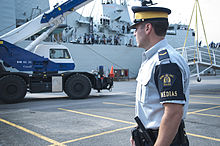
Safety in Canada is not usually a problem, and some basic common sense will go a long way. Even in the largest cities, violent crime is not a serious problem, and very few people are ever armed. Violent crime needn't worry the average traveller, as it is generally confined to particular neighbourhoods and is rarely a random crime. Overall crime rates in Canadian cities remain low compared to most similar sized urban areas in the United States and much of the rest of the world (though violent crime rates are higher than most western European cities). Crime is higher overall in western provinces than in Eastern Canada, but is even higher in the Yukon, Northwest Territories and Nunavut. There have been several high-profile shootings in public/tourist areas; the fact these incidents are so heavily covered by the media is related to the fact that they are considered very rare events.
If you travel near the Canadian-U.S. border, make sure that you do not accidentally enter the United States in a place where the border is not clearly marked. If you do, you could be subject to lengthy interrogation and possible jail time.
Policing [ edit ]
Police in Canada are usually hardworking, honest, and trustworthy individuals. If you ever encounter any problems during your stay, even if it's as simple as being lost, approaching a police officer is a good idea.
There are three main types of police forces in Canada: federal, provincial and municipal. The federal police force is the Royal Canadian Mounted Police (RCMP or "Mounties"), with a widespread presence in all parts of the country other than Quebec, Ontario, and Newfoundland & Labrador, which maintain their own provincial police forces. These are the Ontario Provincial Police (OPP), the Sûreté du Québec (SQ) and the Royal Newfoundland Constabulary. All the other provinces and territories (and some rural portions of Newfoundland as well as Labrador) contract their provincial duties to the RCMP.
In their capacity as a federal police force, RCMP officers typically wear regular police uniforms and drive police cruisers while performing their duties. However, a minority of RCMP officers may appear in their iconic red dress uniform in tourist areas, and for official functions such as parades. Some RCMP officers participate in elaborate ceremonies such as the Musical Ride horse show. While wearing their full dress uniform, their main function is to promote the image of Canada and Canadian Mounties. RCMP officers in full dress are generally not tasked with investigating crime or enforcing the law, although they are still police officers and can perform arrests. In some tourist regions, such as Ottawa, both types of RCMP officers are commonly encountered. This dual-role and dual-appearance of the RCMP, both as federal police, and as a tourist attraction, may create confusion among tourists as to the function of the RCMP. All RCMP officers are police officers, and have a duty to enforce the law.
Larger cities, towns and regions often have their own police forces, with the Toronto, Vancouver and Montreal forces being three of the largest. Some cities also have special transit police who have full police powers. Some quasi-government agencies, such as universities and power utilities also employ private special police. The Canadian National Railway and Canadian Pacific Railway each have their own police force. Some First Nations reserves also have their own police force. Canadian Forces Military Police can be found at military bases and other defence-related government facilities.
All three types of police forces can enforce any type of law, be it federal, provincial or municipal. Their jurisdiction overlaps, with the RCMP being able to arrest anywhere in Canada, the OPP and municipal police officers being able to arrest anywhere within their own province. Powers of arrest for Federal, Provincial and municipal police agencies in Canada exist for officers both on, and off duty.
In the national capital region of Ottawa-Gatineau, one can encounter more police jurisdictions than in any other part of Canada. The Royal Canadian Mounted Police (both regular uniformed and full dress), the Ontario Provincial Police, the Ottawa police, the Sûreté du Québec, the Gatineau Police, Military Police, and OC Transpo Special Constables, all operate in the region, each with a different style of uniform and police cruiser.
Do not under any circumstances offer a bribe to a police officer, as this is a crime, and they will enforce laws against it.
Theft [ edit ]
If you are unfortunate enough to get your purse or wallet snatched, the local police will do whatever they can to help. Often, important identification is retrieved after thefts of this sort. In large cities, parked cars are sometimes targeted for opportunistic smash-and-grab thefts, so try to avoid leaving any possessions in open view. Due to the high incidence of such crimes, motorists in Montreal and some other jurisdictions can be fined for leaving their car doors unlocked or for leaving valuables in view. Take a picture of your licence plate and check that your plates are still in place before you go somewhere as some thieves will steal plates to avoid getting pulled over. Auto theft in Montreal, including theft of motor homes and recreational vehicles, may occur in patrolled and overtly secure parking lots and decks. Bike theft can be a common nuisance in metropolitan areas.
Winter storms [ edit ]

Canada is very prone to winter storms (including ice storms and blizzards) from November through March. In Eastern Canada, they are the most likely, but the occasional small one will pop up west of Northwest Ontario; usually there it is wind-whipped snow that is the main hazard. Reduce speed, be conscious of other drivers, and pay attention. It's best to carry an emergency kit, in case you have no choice but to spend the night stuck in snow on the highway (yes, this does happen occasionally, especially in more isolated areas). If you are unfamiliar with winter driving and choose to visit Canada during the winter months, consider using another mode of transportation to travel within the country. While the vast majority of winter weather occurs during the winter months, some parts of Canada such as the Prairies , Labrador , Northern Canada , and mountain regions may experience severe, if brief, winter-like conditions at any time during the year.
If you are touring on foot, it is best to bundle up as much as possible in layers with heavy socks, thermal underwear and gloves; winter storms can bring with them extreme winds alongside frigid temperatures and frostbite can occur in a matter of minutes.
Firearms and weapons [ edit ]
Canadians have no constitutional rights relating to gun ownership. Possession, purchase, and use of any firearms requires proper licences for the weapons and the user, and is subject to federal laws. Firearms are classed (mainly based on barrel length) as non-restricted (subject to the least amount of training and licensing), restricted (more licensing and training required) and prohibited (not legally available). Most single-shot rifles and shotguns are non-restricted, as they are used extensively for hunting, on farms, or for protection in remote areas. Most handguns are prohibited, except for those used in international pistol shooting competitions, which are restricted instead. Semi-automatic assault rifles are prohibited.
Generally the only people who carry handguns are police, Border Services Officers, Wildlife Officers in most provinces, private security guards who transport money, people who work in remote "wilderness" areas who are properly licensed, and sport shooters who specialize in pistol shooting.
As a general rule, you are not allowed to carry guns for self-defence in Canada. It is possible to import non-prohibited firearms such as most types of rifle and shotgun for sporting purposes like target shooting and hunting, and non-prohibited pistols for target shooting may also be imported with the correct paperwork.
All firearms must be declared to customs on entry into Canada, even if non-restricted, and failing to do so is a criminal offence punishable by fines and imprisonment. Prohibited firearms will be seized at customs and destroyed. Air soft guns that are replica firearms are prohibited. Travellers should check with the Canadian Firearms Program and the Canada Border Services Agency before importing firearms of any type before arrival.
Switchblades, butterfly knives, spring loaded blades and any other knife that opens automatically are classified as Prohibited and are illegal in Canada, as are Nunchucks, Tasers and other electric stun guns, most devices concealing knives, such as belt buckle knives and knife combs, and articles of clothing or jewellery designed to be used as weapons. Mace and pepper spray are also illegal unless sold specifically for use against animals.
Cannabis and other drugs [ edit ]
Marijuana use is legal in Canada since October 17, 2018, and every adult is allowed to possess up to 30 grams (1 ounce) of dried marijuana at a time. Each province has licensed some retail stores to carry cannabis products or has provided them for order over the internet. It remains illegal to buy cannabis from anyone other than a licensed shop; the punishment is theoretically jail time and although it is rarely prosecuted it could easily lead a foreigner to be deported. For advice on where to get legal weed in Canada, see the Wikivoyage guide of the province or cities you will be visiting. Cities also generally have "smoking bylaws" that restrict where one can legally smoke tobacco and these also apply to marijuana. The punishment for breaking these bylaws is generally a large fine, but not jail time. Private businesses are also allowed to prohibit smoking on their property, and many hotels would not take kindly to the smell of weed in their rooms. The law on providing marijuana to minors remains extremely strict, and would certainly result in deportation or jail time if convicted.
Driving while impaired by drugs (including marijuana and even legal "drowsy" drugs) is a criminal code offence and is treated in the same way as driving under the influence of alcohol, with severe penalties. Do not attempt to drive while high; visitors can expect to be deported after serving jail time or paying very large fines.
Khat is illegal in Canada, and will get you arrested and deported if you try to pack it in your luggage and get caught by customs.
Drunk driving [ edit ]
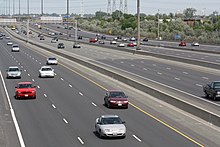
Canadians take drunk driving very seriously, and it is a social taboo in most circles to drink and drive. Driving while under the influence of alcohol or marijuana is a only a misdemeanor in some places, but in Canada it is a felony.
If you "blow over" the legal limit of blood alcohol content (BAC) on a roadside Breathalyzer machine test, you will be arrested and spend at least a few hours in jail. 80 mg of alcohol per 100ml of blood (0.08%) is the legal limit for a criminal conviction. Many jurisdictions call for fines, licence suspension and vehicle impoundment at (0.04%), or if the officer reasonably believes you are too intoxicated to drive. While having a BAC of 0.03% when tested at a police checkpoint will not result in arrest, having the same BAC after being pulled over for driving erratically, or after getting involved in an accident, may result in being charged with driving under the influence (DUI).
Being convicted for DUI will almost certainly mean deportation, a criminal record and you being barred from re-entering Canada for at least 5 years. There may also be jail time and/or a hefty fine, particularly for repeat offences.
Those crossing the land border into Canada from the USA while driving under the influence will get arrested by the Border Services Officers. People with a drunk driving conviction may also be denied entry to Canada as undesirable criminals; see Traveling with a criminal_history#Canada .
Refusing a breathalyzer test is also a Criminal Code offence, and will result in the same penalties as if you had blown over. If a police officer demands that you supply a breath sample, your best option is to take your chances with the machine.
Hate speech and discrimination [ edit ]
Canada is a very multicultural society, and the vast majority of Canadians are open minded and accepting. Thus, it is unlikely to meet ridicule on the basis of race, gender, religion or sexual orientation — while this does happen on occasion, it's rare enough that such ridicule is aired as a local news story even in the largest cities.
Hate speech — defined as communication that may incite violence toward an identifiable group — is illegal in Canada and can lead to prosecution, jail time, and deportation. Similarly, Canadian law also prohibits any form of discrimination in education and employment.
Stay healthy [ edit ]
You are unlikely to face health problems here that you wouldn't face in any other Western industrialized country (despite claims of inferior care, which often varies by hospital and is usually exaggerated). The health care system tends to be very effective and widely accessible. However, wait times for non-critical illnesses or injuries can take up to several hours in major cities like Toronto.
In the summers of the late 2000s and early 2010s, Canadians in some provinces (Ontario, Manitoba, Saskatchewan and Alberta) have faced a few cases of West Nile virus, an occasionally fatal infection transmitted by mosquitoes. Some diseases like pneumonia, the flu/cold or whooping cough do occur in both rural and urban Canada. While Canada has universal health care for residents, health care is not free for visitors; therefore it is important to make sure you are covered by your insurance when travelling to Canada.
Most Canadian provinces have banned all indoor smoking in public places such as hospitals and schools and near entrances. Some bans include areas such as bus shelters and outdoor patios. See Smoking .
Food preparation [ edit ]
Canada has quite high standards for restaurant and grocer cleanliness. If there is a problem with the food you have bought, speak to the manager to report it. Getting sick from contaminated food is unlikely, but food poisoning in rural areas is not unheard of.
Health care [ edit ]
Health care in Canada is generally of a standard comparable to other Western nations. Almost all Canadian citizens and permanent residents receive health coverage from their provincial government, with reciprocal agreements between provinces providing Canada-wide coverage. Eligibility for health coverage for those on student or work visas varies by province, but no province offers coverage for short-term visitors. Hospitals are generally owned by government agencies or non-profits, while doctors offices and smaller clinics are for-profit operations that directly bill the provincial health system.
Compared to the United States, medical care in Canada is about 30-60% less expensive. Medical tourism firms help visitors to obtain medical care such as cosmetic surgery and joint replacement in major cities including Vancouver and Montreal. After their treatments, patients can enjoy a vacation and relax in a cabin in the Canadian Rockies, explore colourful Montreal, or other activities.
While cheaper than the sticker price in the United States, health care in Canada can be very expensive for visitors. A minor trip to the emergency room can easily cost $1000, especially if an ambulance is involved. Visitors to Canada should carry international health insurance valid for the duration of their stay.
In remote areas, particularly communities without road access such as Churchill , serious medical and trauma patients may be evacuated to a major centre by air ambulance. The cost for the air ambulance alone can reach $10,000, and even those on provincial health plans may not be covered if out of their home province. Everyone, even Canadian residents going to remote or rural areas should ensure that they have sufficient insurance coverage for such an incident.
Potable water [ edit ]
Clean, safe drinking water is available from the tap in all cities and towns across Canada. Bottled water is widely sold, but it is no better in quality than tap water.
For travel in the backcountry it is advisable to bring a water purification system, as there can be Giardia in open water sources such as lakes or rivers; this can cause gastrointestinal illness like diarrhea or vomiting. It can be avoided by either boiling your drinking water or using filter systems or tablets to disinfect the water before drinking.
Respect [ edit ]
Canada is very much a multicultural country, especially in the main cities. As of the 2021 census, 23% of Canadian residents were immigrants; 51% of the population of Toronto (the largest city) and 42% of the population of Vancouver (the third largest city), were born outside Canada, and another 20% or so had at least one parent born outside the country.
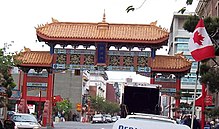
Immigrants have come from all over the world, and many cities have whole districts dominated by specific immigrant groups, such as Chinatown, Little Italy and so on. Various writers have claimed that, in contrast to the American "melting pot", Canada aims at a "cultural mosaic", although some have also claimed that the differences are exaggerated.
It is also, in general, a tolerant society. There are laws against various sorts of discrimination and hate crimes, same-sex marriage is legal, and half the cabinet is female. Most Canadians will treat open displays of racism, sexism, or homophobia with rather pointed scorn.
Not all Canadians are tolerant, however. There is a long history of racism, especially against Indigenous peoples and various immigrant groups (Chinese and Irish in the 19th century, later mainly blacks and South Asians, today mainly Muslims).
There is a large degree of regionalism in Canada. In particular, Quebec's somewhat strained relationship with the rest of Canada — the result of a still-somewhat active secession movement — may be a sensitive topic. Some Quebecers favour independence from Canada, while most Francophone communities outside Quebec, such as the Acadians in New Brunswick, are proud to be both Francophone and Canadian.
When entering a private home in Canada it is usually expected that you take off your shoes unless the host specifically tells you not to.
Canada is widely regarded as a very polite society, where apologizing, excusing and thanking is very common, even in large urban areas. Canadians follow a relatively standard "Western" system of niceties and manners, closely akin to those of the United States.
Gay and lesbian travellers [ edit ]
Canada is very open to all forms of LGBT travellers . Same-sex marriage is recognized nationwide. Vancouver , Toronto and Montreal are all famed for their LGBT communities. Outside these metropolitan areas, open displays of affection shouldn't generally present a problem despite a more conservative outlook, although certain rural areas may be more problematic. Native-born Canadians seem to be more tolerant than immigrant Canadians, as LGBT people are not always accepted in the countries they came from. As always, use your discretion.
Human Rights Codes protect against discrimination in all areas, including accommodation, access to health care and employment. Should you encounter any negative responses, especially violent or threatening episodes, the police will be glad to help you.
Indigenous people [ edit ]
There are approximately 1.4 million indigenous people in Canada belonging to numerous distinct nations, cultures and traditions and language groups. They are generally divided into three legally distinct groups:

The First Nations people are those who were historically referred to as "Indians," a term which, although still used in the legal system, is now considered offensive. Their traditions, languages, history, and way of life vary based on background and location; there are over 600 federally recognized First Nations in Canada.
The Métis (pronounced MAY-tee) are descendants of European (mostly French) fur traders and Indigenous women. Found mostly in the Prairies and especially Manitoba , they have their own distinct culture and history. In the late 19th century, they rose in two rebellions led by Louis Riel (the closest thing to a civil war Canada has experienced) but they were defeated and Riel hanged, an event which sparked tensions between French- and English-speaking Canadians, as the former tended to be at least somewhat sympathetic to the Métis cause.
The Inuit (singular: Inuk) are the smallest group, found mostly in Nunavut , with smaller populations in Quebec , Labrador and the Northwest Territories . Historically they were known as "Eskimos", but this term is today considered to be racist slur in Canada and should never be used. While the term "Inuit" legally refers to all of these people, the Inuvialuit of the Northwest Territories consider themselves a distinct people. The Inuit should not be confused with their relatively southern neighbours in Quebec and Labrador, the Innu, who are First Nations.
The term "Indigenous" ("Autochtones" in French) is used as catch-all terms for all the groups mentioned above, though many Indigenous people would prefer to be referred to by their specific ethnicity (for example "Cree," "Métis," or Inuvialuit"). "Aboriginal" and "Native" are also used, but are not the preferred terms.
While a growing number of Indigenous people live in major cities, there are many rural communities scattered throughout Canada that are majority Indigenous, most obviously First Nations reserves, which is an area legally set aside for members of that particular band or nation. Facilities for visitors in these communities vary widely, and as with visiting any community, knowing what is offered to visitors before you go, and respecting those who live there is important. There are also an increasing number of reserves in urban areas, though they are typically indistinguishable from the city around them to the casual observer.
All of the Indigenous groups (First Nations, Métis, Inuit) suffered widespread discrimination and forced assimilation in the past, often sanctioned by the government and administered by Christian churches and government agents. There remains a lot of mistrust between many Indigenous groups and the government on environmental policies, resource management and treaties that were established more than 100 years ago with vague wordings that are left open to interpretation, which lead to drawn-out court challenges, and on education because of the residential school system, which some have characterized as cultural genocide. Indigenous Canadians remain economically disadvantaged, and are often subject to negative stereotyping by non-Indigenous Canadians. Be mindful that they grew up in an education system full of systemic bias that does not provide adequate funding or support for success in the community due to inter-generational trauma. Don't forget that they are the descendants of the very first groups that settled in North America. They often have time-tested traditional knowledge that is passed down through generations and offer insights that non-Indigenous people may not be aware of.
There has been significant growth in Indigenous ecotourism and cultural tourism.
Religion [ edit ]
Modern Canada is largely a secular society, and people who go to church regularly are in the minority. Most Canadians are tolerant towards people of all faiths, and wearing religious clothing in public rarely poses a problem. Nevertheless, attempting to proselytise would generally be regarded as rude. Things are, however, considerably stricter in Quebec, where people are fiercely protective of the French model of laïcité ; you will be expected to confine your religion to your private life, and avoid displaying any overt indications of religiosity in public (such as wearing religious clothing) unless you are at your place of worship.
National identity [ edit ]
Despite sharing close cultural, economic and political ties, Canadians are not Americans , and implying that Canada is part of the United States, even jokingly, will not earn you any Canadian friends. Canadians are often keen to emphasize the unique aspects of their country that distinguish them from the United States, and appreciate it when visitors do likewise. The relationship between the two countries is often described as sibling-like, with the sibling rivalry to boot. While sporting rivalries, especially in ice hockey, can be intense, Americans and Canadians have genuine affection for each other, and are often eager to come to each other's aid whenever disaster strikes.
In the often-restive province of Quebec, many locals identify solely as "Québécois" and not "Canadian", and often view Quebec as a separate nation even if they may not be advocating for independence from Canada. This is, however, not universal; most of the Anglophone minority, as well as a good number of Francophones in bilingual Montreal, identify as both Québécois and Canadian.
Connect [ edit ]

The communication infrastructure of Canada is typical of any first-world, developed, industrialized country.
By phone [ edit ]
Canada is part of the North American Numbering Plan (along with the US and most of the Caribbean) and uses the country code +1. Area codes and local phone numbers follow the same format as the United States: 1 — three digit area code — seven-digit local phone number. The leading '1' is omitted when making local landline calls and optional on local mobile calls. For long-distance calls, dial the entire number including the '1'.
Thanks to the implementation of a national mental health hotline at the short code 988, all parts of Canada except the Arctic territories were required to implement ten-digit dialing.
Canada draws its toll-free numbers from a shared pool based in the US. These are dialled using the full eleven-digit international format: +1-800-234-5678 . Mobile numbers are normally allocated from the same local area codes as landlines; the recipient of the call pays airtime.
The prefix to make an outbound international call from North America is 011-. This prefix does not apply to countries which share the Canadian +1 prefix, such as the US.
A few payphones exist in high-traffic locations such as shopping malls, supermarkets and local or intercity transport stations; these can call toll-free numbers (+1-800 and its overlays) for free and make fifty-cent local calls, but coin-paid long distance from incumbent carriers is prohibitively expensive at nearly $5 for the first minutes for the most trivial of trunk calls. A few telephone booths are operated by obscure competing firms, where the local price is the same but long distance is typically a slightly less painful $1 per three-minute interval. Most coin phones block incoming calls. Typically, Canadians avoid coin-paid trunk calls by using prepaid cards or have stopped using telephone booths in favour of mobile telephones or (where wi-fi is available) voice over IP.
Unbundled Internet telephony typically costs one or two cents a minute, although some carriers may sell for less.
If you need to call with a Canadian phone number or call a phone number in Canada without paying any fees, several free smartphone apps are available in Canada on iOS and Android, which provide a free phone number with free calling or free texting over wi-fi. These apps tend to be supported by in app advertising.
By mobile phone [ edit ]
Canada is one of the few countries (along with China , Hong Kong and the USA ) where mobile users must pay to receive calls. Cellular telephones occupy the same local geographic area codes as landlines; all numbers are portable.
Three carriers ( Bell , Telus and Rogers ) control the majority of the wireless market, using multiple brands ( Fido and Chatr are owned by Rogers, Koodo and Public Mobile are owned by Telus, Virgin Plus and Lucky Mobile are owned by Bell) to give an illusion of competition, although recently, "real" competition coming from Vidéotron in Quebec (including Ottawa-Hull) since purchasing Freedom Mobile (covers urban areas in British Columbia, Alberta, and Ontario) has finally resulted in lower prices across the board.
Coverage is good in cities and on busy transportation corridors, but non-existent in many remote areas . Some points on the Trans-Canada Highway have no signal at all. It is impossible to travel between Canada's Pacific and Atlantic coasts without losing wireless coverage in gaps in rural areas of British Columbia and Ontario. In the north, mobile phones generally only work in small areas around major settlements such as territorial capitals.
There are a few regional carriers, like SaskTel in Saskatchewan and TBayTel in Thunder Bay, Ontario. In addition, the northern territories have their own carrier, Ice Wireless . While Bell and Telus have their own networks up north, Rogers relies on "extended coverage" provided by Ice Wireless that is unavailable to prepaid users on any of its brands. If you are planning a trip that includes northern Canada, avoid getting a SIM from Rogers, Fido, or Chatr, otherwise you will have to purchase a separate Ice Wireless SIM for that portion of your travels (a prepaid SIM with talk, text, and 1 GB of data will cost you $25).
The three major carriers operate 4G LTE and 3G UMTS ( WCDMA / HSPA ), and have began rolling out 5G. 3G operates on the North American 850 MHz/1900 MHz frequency bands (which do not match standard frequencies in Europe). Freedom Mobile operates its own network across many urban areas in British Columbia, Alberta, Ontario, and Quebec (Band 4 AWS for 3G, Band 7 LTE in city centres, Band 4 and Band 13 LTE in most of its coverage area, and Band 66 LTE for additional capacity across its entire network). On 5G, all the three major operators (Bell, Telus, and Rogers) use band n66 for their 5G networks, while Rogers are also using band n41 and n71 for their 5G networks, and Freedom only uses n71.
Various "virtual mobile" operators buy access to the three majors to resell phones (or SIM cards) under their own brands; Loblaws' "PC Mobile" prepaid uses Bell's network, while ZtarMobile ("7-Eleven", "Quickie" and "Petro-Canada") uses Rogers, and China Telecom's Canadian operation (CTExcel) uses Telus.
Anyone may acquire a Canadian prepaid mobile number; even clearly fictional persons (such as "Pierre Poutine, rue des Séparatistes, Joliette") have been subscribed prepaid, no questions asked. All you need is to provide your name and a physical address in Canada. Which carrier to choose will depend largely on where you plan to go and where you enter the country from. If you will start your trip in a major urban area and don't mind some coverage gaps or somewhat slower data, then Freedom Mobile has the best pricing; their activation fee is $10 for either physical SIM or eSIM and their prepaid plans start from $29 for talk/text/20GB valid both on their own network as well as on the big three and US carriers (in fact, this is the cheapest Canada+US plan available on either side of the border) scaling all the way up to $50 for talk/text/100GB valid across the same footprint. For those traveling over a longer period (>2 months), be aware that Freedom reserves the right to terminate service if more than 25% of usage occurs outside their own network over multiple months. If you need native coverage on one of the big three or will be traveling outside Freedom's native coverage area for more than 2 months, then look to their budget brands first; Public Mobile (Telus) starts at $28 for 4 GB while Chatr Wireless (Rogers) starts from 8 GB for $35 and Lucky Mobile (Bell) offers 28 GB for $40. All carriers charge $10 to activate with physical SIM while Public Mobile and Lucky Mobile offer free activation on eSIM as well.
Some carriers provide postpaid mobiles to non-resident Americans if a Canadian address of some sort is provided and a credit card is pre-authorized for bill payment. This may be useful for repeat visitors or if you want a Rogers plan and will be traveling to the north.
Most mobile telephones in Canada are sold by carriers (or their resellers), though Canadian law now requires them to sell their phones unlocked. In addition, big-box stores like Walmart and Best Buy, as well as office supply chain Staples and smaller electronics stores like Canada Computers, carry fully carrier-neutral devices, sometimes with a mark-up. Carriers are also now required to provide unlock codes for previously locked phones free of charge.
If you plan on continuing to the US later and want one plan that works in both countries, many Freedom Mobile prepaid plans as well as Public Mobile's top-tier $65 for 60GB plan include US roaming. While others do not include US roaming, this does not mean you will receive surprise charges; Rogers and Bell as well as their associated prepaid brands do not allow roaming at all, and Telus only allows US roaming on their sub-brands when an add-on is purchased; if you connect to a US network with Koodo or Public Mobile prepaid you will receive a text asking you to purchase a roaming add-on (and giving you an opportunity to reconnect to the home network if necessary). If you select a Freedom Mobile plan without US roaming, you will need to turn off US roaming in your account settings to avoid accidentally connecting to a US network; while $0.20 per minute, $0.10 per text, and $0.03 per MB of data sound small, they can add up over an extended period.
By internet [ edit ]
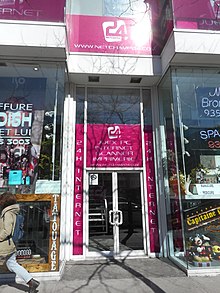
Although mobile data can be expensive, there are many ways to access the Internet for free. Public computers and Wi-Fi are typically found in public libraries even in the smallest towns. Where a password is required, some libraries provide guest accounts to non-residents. Cities often provide Wi-Fi in other community locations such as town or city halls and community centres. Some cities (for example Halifax, Montreal, Mississauga, and Vancouver) operate extensive free Wi-Fi networks covering busy public areas.
Wi-Fi is also frequently available in public and commercial venues such as cafés, chain restaurants, museums, art galleries, shopping centres and larger retail stores. You may be expected to make a purchase, ask for a password, or provide contact details for marketing purposes, but the Wi-Fi itself is typically free.
Dedicated Internet cafés are now rare, but gaming cafés in larger cities provide high-performance equipment, faster connections, and late-night hours targeting Esports players (they might be an expensive option for just checking e-mail and visiting a few websites). Most business service and print shops (such as Staples or the UPS Store) rent computer stations for a time-based fee.
Hotels usually provide overnight guests with Wi-Fi, but the pricing may depend on your room rate or loyalty status. Large ski resorts such as Whistler and Tremblant provide Wi-Fi that may be enough to replace mobile data for your trip if you stay within the resort area.
Most airports and larger Via Rail Canada stations (mostly in Ontario and Quebec), offer free Wi-Fi in passenger areas. BC Ferries offers free Wi-Fi at most ferry terminals. Ontario offers free Wi-Fi at its ONroute highway 400/401 rest stops, and chain fast food outlets offer the same Wi-Fi access at rest stop or roadside locations as they do within town.
By mail [ edit ]
While its delivery times vary depending on shipping option and package/parcel size, Canada Post is very reliable. As of 2021, it costs $1.07 to mail a domestic letter. International parcel postal services can be costly. Postal offices are usually marked by the red and white Canada Post markings. Some drug stores, including many in the Shoppers Drug Mart, IDA, Pharmaplus, Jean Coutu and Uniprix chains, feature smaller outlets with full service. Such outlets are often open later and on weekends, as opposed to the standard M-F 9AM-5PM hours of the post offices.
For inbound mail, "general delivery" (in French and in English outside of North America, "poste restante") is available at main post offices, but not in retail postal outlets such as pharmacies. Travellers can use the service for up to four months for free by registering in person at each post office where they need to receive mail.
There are also courier services across the country, such as Purolator. The US-based UPS and FedEx also serve Canada. Some (but certainly not all) intercity bus companies will accept domestic parcels for delivery to other cities on the same bus line. Courier packages may not be sent to PO boxes or held as poste restante, but can be held by some commercial mail receiving agents for pickup.
Some postal outlets and commercial mail receiving agents offer fax transmission services, but availability may vary by location.
Canadian addresses generally follow the following format, which is very similar to the format used in the United States and Australia.
Name of recipient House number and street name (If needed) Suite or apartment or building number City or town, two letter provincial abbreviation, postal code
In Canada, postal codes are alpha-numeric in this format: K1A 1A1.
Go next [ edit ]
- Canada's southern and northwestern neighbour, the United States of America , can become a side trip from Canada or even a major part of your vacation. In some places major Canadian and US cities are quite close and well connected by public transportation, for example Vancouver and Seattle , or Toronto and Buffalo . There are also dozens of places all along the border with a fair-sized town on either side. See the main article on the US for entry requirements – if you need a visa be sure to apply well in advance.
- Saint-Pierre and Miquelon are two relatively small islands off the coast of Newfoundland. Despite their small size and relative proximity to the Canadian coastline, they are overseas departments of France and a vestige of former extensive French colonies in North America. To step into this charming French seaside community, take the passenger ferry from Fortune, Newfoundland during the summer, or scheduled flights from Montreal, Halifax, and St. John's year round.
- Greenland , Canada's major eastern island neighbour, despite being separated by less than 50 km of water in some locations is not easily accessible from North America. Seasonal flights are available from Keflavík International Airport , Iceland ( KEF IATA ) and year-round via Copenhagen Airport ( CPH IATA ). Another, albeit more expensive, option is the summer cruise ships originating in both the US and Canada. Despite the relative difficulty of reaching Greenland, the untouched natural Arctic beauty of one of the most remote places on earth makes it well worth the effort.
- Has custom banner
- Has mapframe
- Maps with non-default alignment
- Maps with non-default size
- Has map markers
- Has VisaRestriction box
- Has VisaRestriction box with no date
- Go listing with no coordinates
- Has caution box
- Has Geo parameter
- North America
- All destination articles
- Guide countries
- Guide articles
- Country articles
- Pages with maps
Navigation menu
- Search Please fill out this field.
- Manage Your Subscription
- Give a Gift Subscription
- Sweepstakes
- Destinations
How to Plan the Perfect Trip to Montreal — Luxury Hotels, Beautiful Parks, and Canada's Best Restaurant Included
Here's where to eat, stay, and explore in Montreal, according to a local.
Best Hotels
- Best Things to Do
Best Places to Eat
Best nightlife, best shopping, best neighborhoods to visit, best time to visit, how to get there, how to get around.
R.M. Nunes/Getty Images
Despite its sometimes divisive language politics, extreme seasons, and chronic traffic headaches, Montrealers, or les Montréalais , are justifiably proud of their distinctive, if idiosyncratic, city — and for good reason. Travel + Leisure readers named Montreal one of their favorite cities in Canada in 2023 .
The sophisticated, French-speaking (yet very bilingual), culturally diverse city lays claim to world-class restaurants, lovely parks, superb art galleries and museums, a dynamic music scene, inspiring 18th- and 19th-century architecture, and vibrant nightlife.
It can also be a lot of fun in the winter , when locals like to get out and celebrate the cold and snow, even extending the revelry at outdoor festivals and concerts at night.
Thom Seivewright, a Montreal expert and former hotel concierge, launched his small-group tour company, Tours Montreal , in the Canadian city in 2016. “Our art scene is on par with cities two or three times our size,” he says. “There’s obviously a big emphasis placed on arts and culture in Montreal.”
There’s a big emphasis on food , too. Montrealers love their bagels, cheeses, poutine, and maple syrup, and they’re loyal to their chef-owned restaurants. “It’s a little gem of a city that has world-class dining — and world-class junk food,” says Seivewright.
Long known for its exuberant after-dark scene, Montreal has it all, from cocktail bars to Irish pubs, jazz bars to pulsating dance clubs. The city is even planning to create a 24-hour nightlife district .
Here's everything you need to know to plan a memorable trip to Montreal.
Top 5 Can’t Miss
- The fashionable, Parisian-style brasserie and rooftop terrace at Hôtel Le Place d’Armes, a boutique luxury property overlooking Place d’Armes and the Notre-Dame Basilica, attracts locals and tourists alike.
- Designed by American landscape architect Frederick Law Olmsted, who was also responsible for New York City’s Central Park, Parc du Mont-Royal is an oasis of greenery in the city center.
- Mon Lapin, a cozy wine bar and restaurant in Little Italy serving natural wines and an ever-changing menu of small plates, was voted Canada’s best restaurant in 2023 .
- Bar Furco’s lovely terrace becomes lively in the summer during Montreal’s ritual cinq à sept (happy hour).
- Saint Laurent Boulevard, a.k.a. the Main, is a good place to get a glimpse of Montreal’s 19th- and 20th-century immigrant history. It's also the historical dividing line between French and English in the city.
Courtesy of Four Seasons Resorts
Hotel Nelligan
Hotel Nelligan , located in the heart of Old Montreal, was T+L readers' favorite city hotel in Canada in 2023 . Spanning four 19th-century graystones, the 105-room boutique property lies near the Notre-Dame Basilica and Old Port waterfront. Its seasonal rooftop terrace is a summer favorite for its picturesque views and lively happy hour.
Hôtel Place d’Armes
Another T+L reader favorite, Hôtel Place d’Armes is housed in four 19th-century neoclassical buildings opposite the Notre-Dame Basilica. The property is highly rated for its tasteful rooms featuring hardwood floors and brick walls, swanky French brasserie , and popular rooftop terrace.
Hôtel Uville
One of the city’s newer hotels, opened in 2020, Hôtel Uville got its name thanks to its location in Old Montreal’s Place d’Youville. Uville is part design hotel, part museum — a love letter to the Montreal of the 1960s and '70s. This was transformative period, a time when francophone Quebecers were turning away from the Catholic church and leading the charge in North America vis-à-vis cuisine, style, and design — the culmination of which were Expo 67 and the 1976 Olympics.
“This hotel is very cool,” says Seivewright. “They did a great job. The details, like the tiled bathrooms and custom-made wallpapers, are amazing. They’ve got archival photos and artifacts from the '60s and '70s in each of the rooms, and documentary films from the National Film Board that you can watch on your room’s TV.”
The Ritz-Carlton, Montreal
Montreal’s grande-dame hotel, the Ritz-Carlton , opened in 1912 in the city's Golden Square Mile. In addition to housing chef Daniel Boulud's Maison Boulud , the refined property offers afternoon tea in the ornate Palm Court and seasonal garden terrace, Spa St. James, and an indoor saltwater pool.
Four Seasons Hotel Montreal
Located in Golden Square Mile since 2019, the posh Four Seasons Hotel Montreal is connected via a third-floor walkway to the luxury department store Holt Renfrew Ogilvy . The hotel boasts Marcus Restaurant + Terrace, in partnership with legendary Manhattan chef Marcus Samuelsson; a Guerlain Spa; and a skylit swimming pool with an upstream current generator.
Best Things to Do
Taylor McIntyre/Travel + Leisure
Parc du Mont-Royal
What Central Park is to New Yorkers and Hyde Park to Londoners, Parc du Mont-Royal, or Mount Royal Park, is to Montrealers. At 764 feet high, Mount Royal may not be much of a mountain, but the park is, as Seivewritght says, “the heart and soul of the city.” He adds, “The fact that Montreal is a four-season city and Mount Royal is a four-season park makes it even better because you’ve got skiing, skating, and tobogganing in the wintertime. And in the summer, you can go biking and walking.” You can also go for a picnic and rent a rowboat or Mölkky or spikeball equipment at Beaver Lake.
Old Montreal
With its graystone buildings and narrow streets, Old Montreal can sometimes feel like a slice of Europe in North America. Certainly no visit to Montreal is complete without a stop here. Not only will you find the city’s most important historic landmarks, including the Notre-Dame Basilica , the 18th-century Notre-Dame-de-Bon-Secours Chapel , the Second Empire-style City Hall, and the neoclassic Marché Bonsecours , but it’s also home to pretty boutique hotels, haute-couture shops, and chef-owned restaurants.
Pointe-à-Callière
A national archaeological site, Pointe-à-Callière , now an impressive archaeology and history museum, sits above the ruins of the birthplace of Montreal. “The Pointe-à-Callière museum is amazing,” says Seivewright. “They’ll take you underground to see the ruins of the original fortifications of Montreal, the original city the French built here in the 1600s.” Visitors can also see Indigenous artifacts uncovered during a dig and part of North America’s first collector sewer, built between 1832 and 1838.
Arsenal Contemporary Art Gallery
Opened in Montreal in an 80,000-square-foot building in 2011, Arsenal Contemporary Art has since expanded to include locations in Toronto and New York City. “Outside of the museums, I would send my clients to certain galleries around town. These days, one of my favorites is Arsenal. It has an amazing [selection] in its permanent collection, but it also puts on temporary exhibits that are just mind-blowing,” says Seivewright.
Montreal is a city of festivals, with everything from jazz (the city hosts the world’s largest jazz festival) to Pride to circus arts celebrated here. There’s even a dedicated festival and outdoor performance space downtown called the Quartier des Spectacles . While there are festivals year-round , May to September is the city’s busiest period.
eyedias/Getty Images
La Banquise
One of Quebec's most beloved foods is poutine, traditionally a mess (translation of "poutine") of french fries, cheese curds, and gravy. But poutine continues to get more upscale. A veritable institution since 1968, La Banquise doesn’t claim to be high-end, but the casual eatery serves 35 kinds of poutine and it’s open 24 hours. “La Banquise is a classic. I’m [vegetarian], and in my opinion, the veggie gravies are even more delicious,” says Seivewright. “A lot of people knock La Banquise because it’s popular, but I stand by it.”
Montreal Plaza
The design at Montreal Plaza is elegant and stylish, yet also notable for its eccentric touches like a dollhouse hanging upside down from the ceiling and Elmo sitting on the bar. Even certain dishes, like crudo or oysters, are served atop a toy triceratops or among plastic Smurfs. Chef and owner Charles-Antoine Crête and his team enjoy serving great food in a playful, joyous way. “This is my favorite place,” says Seivewright. “It’s not the just the way the food is prepared or what it is, but the whimsical, creative way it’s presented.”
Sushi Momo , from Mexican-Canadian chef Christian Ventura, is Montreal’s best vegan sushi restaurant. The sleek, dimly lit, botanically adorned space in the Plateau area is inviting, while the artfully plated confections are a feast for the eyes and the fusion of flavors a song for the taste buds.
Nora Gray , a lively, casual restaurant in Griffintown, is known for its southern Italian cuisine, updated cucina povera , and privately imported natural and organic wines. The dark wood, banquettes, long bar, and warm candlelight lend the restaurant an intimate, romantic, and club-like feel.
Dominique Lafond
Voted Canada’s best restaurant in 2023 , Mon Lapin is a cozy wine bar and restaurant in Little Italy. It serves natural wines and an ever-changing menu of French- and Italian-inspired small plates. Each dish highlights fresh, seasonal, and local ingredients plus unexpected flavor combinations.
Henryk Sadura/Getty Images
Cloakroom Bar
The 25-seat Cloakroom Bar , with a cloak-and-dagger atmosphere, was named Canada’s second-best bar in 2023 . “It’s one of my favorite bars anywhere in the world,” says Seivewright. “It’s hidden behind a menswear shop, which makes it even cooler. It’s very exclusive feeling. You tell them, 'I like gin, I like citrus,' and they’ll create something for you. If you’re three people and you all like the same thing, they’ll create three different drinks.”
Situated in the Plateau Mont-Royal, Diese Onze is an intimate jazz bar that also serves tapas and mains. “I’m a big jazz fan, and I love Diese Onze,” says Seivewright. “It’s a good mix of local and out-of-town musicians.”
Upstairs Jazz Bar & Grill
A Montreal institution since 1995, Upstairs is, funnily enough, located in a basement. It attracts big-name international jazz acts who make this a routine stop on their tour itineraries.
Pub Le Sainte-Élisabeth
Established in 1997, this European-style pub between the Quartier des Spectacles and student-heavy Quartier Latin is quite cozy inside, but it’s the enclosed, leafy terrace at the back that draws people here come summer. The service many not win any awards, but Le Sainte-Élisabeth is about the ambience.
The minimalist redesign of the Canadian Fur Company building (hence Furco ), located on a downtown back street, is a big draw for wine lovers and the happy hour crowd. It features an adventurous food and wine menu, in addition to more traditional charcuterie and cheese plates.
Maison Marie Saint Pierre
Marie Saint Pierre 's Montreal-made, ready-to-wear pieces marry timeless feminine styles with contemporary flair and function.
Entering this handsome Crescent Street atelier-cum-boutique near the Montreal Museum of Fine Arts is like stepping into an old-school European tailor shop. Started by their father, Arthur Der Shahinian, sons Tavit and John carry on the tradition of crafting impeccably fitted and designed bespoke men’s suits and shirts, with damask silk lining and hand-sewn button holes, never compromising on quality or friendly, professional service.
Simons is originally from Quebec City, but it’s popular in cities across Canada. The small, mid-range department store downtown carries popular fashion brands as well as its own collections, in addition to homewares. “I’m a big fan of Simons,” says Seivewright. “I buy half my clothes there. The price point is good, the quality is good, and I like that it’s a local brand.”
Holt Renfrew Ogilvy
Montreal’s answer to Saks Fifth Avenue, Holt Renfrew Ogilvy is a one-stop shop for all things luxury, including clothing, shoes, and accessories. Clients can also enjoy a personal shopping experience in one of the five fifth-floor suites or the glamorous art-deco Café Holt, with its remarkable solar-like orb set above the central bar.
Saint Laurent Boulevard
“Saint Laurent [Boulevard], between Saint Joseph Boulevard and up to Van Horne Avenue, has the best boutique design shopping nowadays,” says Seivewright. “You could go all the way up to Little Italy and it’s still amazing. I was walking there the other day and every single window I walked by made me want to go in. There are furniture shops, clothing shops, and jewelry shops — some of it is new, some of it is vintage, and it’s all local.”
Saint-Henri
Saint-Henri, once a francophone working-class neighborhood, is now gentrified, replete with popular, chef-owned wine bars and restaurants, antiques shops, cafes, and boutiques. Still, it retains pockets of its former self. “I love it because it has parts that haven’t changed in a hundred years and others that make it the most modern neighborhood in Montreal,” says Seivewright. “It’s got a cool, little rough-around-the-edges vibe. It’s one of those neighborhoods where you’ll have a multimillion-dollar home next to a really rundown place, and you see that contrast. Then, you listen to the people and hear French and English. You've got old people, young people — it’s a neighborhood where everything mixes.”
Plateau Mont-Royal/Mile End
Once relegated to working-class European immigrants, the Plateau/Mile End area is the epicenter of Montreal’s creativity and bohemian joie de vivre. Leafy streets lined with triplexes fronted by balconies and steep, often-winding, wrought-iron staircases invite visitors to explore this neighborhood bursting with convivial cafes, top-drawer restaurants , funky vintage shops, and trendy boutiques.
For a glimpse into how the upper crust of Montreal lived until the 1970s and '80s, head to the neighborhood of Outremont. Its two main shopping and dining strips are Bernard Ouest and Laurier Ouest avenues — part of the former turns into a pedestrian-only area come summer, with restaurant terraces sitting directly on the street.
Montreal is a four-season city. Late April to mid-May tends to be best for blooming trees, while October to early November is usually prime for leaf peeping. The holiday season is lovely, but a white Christmas is increasingly rare. For a stronger chance of experiencing the romance of winter snow, January and February are ideal. Summers in Montreal are hot and humid, and heat waves can now begin as early as May. Visit in May, June, or late August through September and October to avoid the worst of the summer temperatures and crowds.
Chris Jongkind/Getty Images
Montreal can be reached via regular flights with Air Canada, Delta, American, and United. Flying from New York’s LaGuardia to Montreal-Trudeau International Airport, better known as Dorval (YUL), takes about 90 minutes gate to gate. Driving may be cheaper, but it takes about seven hours, and unless you’re planning to pay for hotel parking, parking in Montreal can be a hassle. For travelers living in New York or Vermont, a more scenic and leisurely option (10 hours) is Amtrak’s Adirondack train from Moynihan Train Hall to Montreal’s Gare Centrale (Central Station).
Patrick Donovan/Getty Images
In summer, the best way to get around is on foot or by Bixi, the city-wide bicycle rental system. In 2023, Bixi decided to end the storage of their bicycles during the winter, so they are now available year-round. However, there are not as many stations as in summer. The metro (subway) is fairly reliable and frequent during rush hour — and often the quickest way to get from point A to point B. Buses tend to be less reliable, but they go everywhere the metro does not. An Opus card can be purchased with several fares added, if you’re planning on using the metro and/or buses often. Taxis and Ubers are readily available, too, and taxis can be hailed on the street.
- Today's deals
- Search travel guides

Canada Featured Articles
Canada popular cities, canada guides.
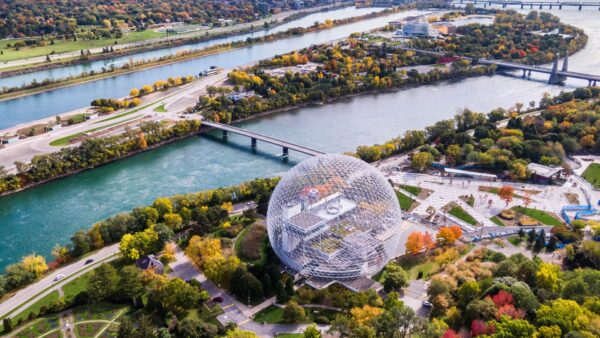
Current language
All languages.

USPS suggests the address below
Time to upgrade your browser.
If you're reading this, you're surfing using Internet Explorer 6, an eight-year-old browser that cannot cope with the demands of the modern, secure internet. For the best web experience, we strongly recommend upgrading to Firefox , Opera , Safari , Google Chrome , or a more recent version of Internet Explorer .

- Canada Destinations
- Visit Other States
- Visit Other Countries

For year-round snow-oriented sport, head for the forested mountains around Whistler, sure to have a slope or two open even in summer with plenty of hiking and biking at lower altitudes.
- Things To Do - Overview
Tour Companies
- Tourist Attractions
- Attractions
- Scenic Drives
Free Travel Planners
- Houseboating
- RV Parks Camping
- Skiing - Boarding
- White Water Rafting

- Lodging - Hotels, Resorts, etc.
- RV Parks - Campgrounds

Use our easy Lodging Search to find exactly the type of accommodation you are looking for at the right price.
- Free Visitor Guides!
Transportation
- Tourism Resources

- Canada Photo Gallery

Below are the Free Visitor Guides for Canada Area. Click here to view all the guides avialable for Canada.
Select All General Interest Guides
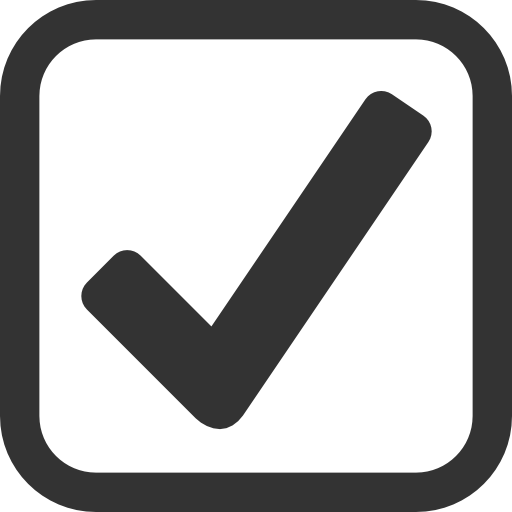
Bellingham Whatcom County Canadian Border
Bellingham whatcom county.
To request a free visitor guide from Canada Travel Guide , please fill out the form below and click "Submit".
Your request has been processed, thank you!
We also have visitor guides available in states highlighted in blue below. Click on any state to see what's available.
- Connecticut
- Development
- Massachusetts
- Mississippi
- New Hampshire
- North Carolina
- North Dakota
- Pennsylvania
- Rhode Island
- South Carolina
- South Dakota
- Washington D.C.
- West Virginia
Canada Travel Guide
A comprehensive vacation and recreation guide.
The Go Canada Travel Guide and Vacation Planner is your best resource to provide complete and accurate information on the thousands of sightseeing attractions, tourist destinations, hotels, resorts, RV parks, and recreational activities. Our travel guide contains thousands of pages of travel, vacation, and recreation information to help you plan your trip.
Your dream vacation, recreational activities and travel opportunities within Canada are only a few clicks away...
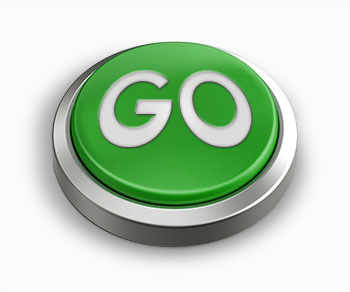
Places To Go
Destinations - all, quebec city, sunshine coast / whistler, vancouver - canada, things to do, things to do - all, sightseeing, recreational activities, houseboat rentals, travel planning, rv parks + camping, photos + video.
- Advertising
- Privacy Policy
- Report a Problem
- Make A Suggestion

- Go Travel Sites
- Houseboating.org
Email Page Link
Switch to Mobile Browser Mode
We offer a compact version of Go-Canadatravel for mobile users, allowing you to access just the information you need on the road. Of course, you can still use the full version of Go-Canadatravel on your mobile device just as you can on your desktop.
Continue to Mobile Site Return to Main Site
- Skip to main content
- Skip to site information
Language selection
Help us to improve our website. Take our survey !
Travel outside Canada
It is important to be prepared and to expect the unexpected wherever in the world you may be. Here is helpful information on health and safety, travel documents, Canada-U.S border wait times, travelling with children and more.
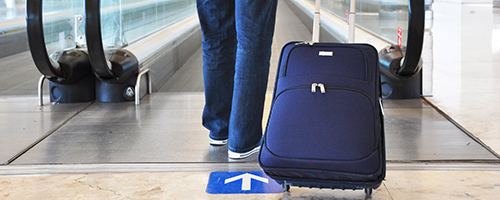
Measles cases are increasing worldwide
Before travelling, check that you and your family have received the recommended measles vaccinations.
Do not travel if you have symptoms of measles or have been in contact with someone with measles.
If you develop symptoms of measles after your return to Canada, call a health care provider right away.
Global Measles Notice
Services and information
Travel advice and advisories.
Official Government of Canada travel information
Travel Advice and Advisories archives
Government of Canada’s Travel Advice and Advisories archives from November 16, 2012 to the present
Health and safety outside Canada
Essential information on travel health and safety risks and how to prevent them
Travel documents
Passports, visas, international driving permits and other documents you will need when you travel abroad
Types of travellers
Find travel information specific to dual citizens, women, older people, 2SLGBTQI+ people and other types of travellers
Canada to U.S. border wait times
Regularly updated list of wait times at border crossing points for drivers going to the U.S. from Canada
- Registration of Canadians Abroad
Sign up with the Registration of Canadians Abroad service to stay connected to Canada in case of an emergency abroad or an emergency at home
Children and travel
Everything you need to know to travel safely with children abroad
Living abroad
Be informed and prepared for the benefits and challenges of working, studying, retiring, volunteering or travelling on business abroad before you leave Canada
Resources for educators, students and travel counsellors
Online training and web-based resources for educators, students and travel counsellors
Publications
Ordering and reading our wide range of publications is a good first step to a safe and healthy trip abroad
Cannabis and international travel
Understand and avoid the risks related to cannabis and international travel
Travelling and money
Information about using cash, credit cards and debit cards abroad, taxation and travelling with $10,000 or more
Schengen Area
Important information for travellers to Europe
What we are doing
Policies, acts and regulations.
- Citizenship Act
- Canadian Air Transport Security Authority Act
- Department of Foreign Affairs, Trade and Development Act
- Public Health Agency of Canada Act
- Bon voyage, but... Essential information for Canadian travellers
- Travelling with children
- Well on Your Way - A Canadian's Guide to Healthy Travel Abroad
All related publications
- CATSA claims forms
- Recommended consent letter for children travelling abroad

Before travelling, check that you and your family have received the recommended measles vaccinations and know what symptoms to look out for.
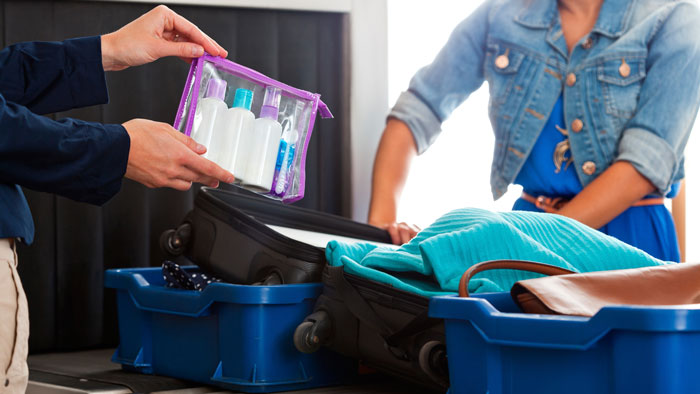
A quick searchable guide to what you can and cannot bring on a plane.
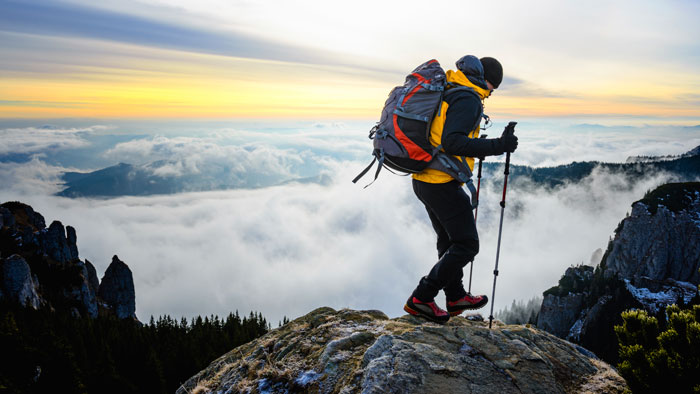
A free service provided by Global Affairs Canada that keeps you connected to Canada in case of an emergency abroad or at home.

Where to Find AAA TourBook Guides and Maps
Updated : April 23, 2024
Michelle Palmer
Table of contents, what information is in a tourbook, what else will i find, travel information from experts you can trust, where can i find aaa maps.
Get TourBook ® guides for destinations across the U.S., Canada, Mexico and the Caribbean at TourBook.AAA.com , and find paper maps at your local AAA offices as well as printable maps at AAA’s online map gallery.
Since 1926, AAA’s free TourBook guides have been providing trustworthy travel information to AAA members. The digital guide is the same great TourBook you know and love, but now you can get that information and more in an eco-friendly, easy-to-use format on your smartphone, tablet or desktop. It is also downloadable, so you can access the guide wherever you are at any time of day.
Go from dreaming about your next vacation — whether that’s a family adventure to Yosemite, a romantic getaway in Asheville or a fun trip with friends in Austin — to planning with this interactive guide. You can find a hotel with ease and book your room with just a click of the Book Now button. Save money with access to special deals and benefits available only to AAA members, and you can rest assured that wherever you choose to stay, it will be clean and comfortable. Or follow the link to contact a travel agent at your local AAA office. They can assist you with a complete vacation package from finding the best deals and booking your hotel to helping you plan an entire itinerary.
All hotels in the guide have earned a AAA Diamond designation by going through rigorous evaluations conducted by AAA’s team of professional inspectors. Not only are they clean; you can know what level of amenities are offered making it easy to choose a hotel that best suits your budget and your preferences.
Save time planning your trip by using our helpful articles. AAA’s team of travel editors has created one-day itineraries that you can follow exactly to get the most out of a short excursion. Alternatively, use them as a guide to get an idea of where things are in a city to assist in planning your trip, so you don’t waste valuable vacation time.
Our travel editors also have identified must-see attractions including AAA GEMs (Great Experience for Members ® ) that shouldn’t be missed. These include stops ranging from the Montréal Botanical Garden and The Field Museum in Chicago to the Painted Desert in the Petrified Forest National Park. They have also noted top places to take children, so everyone of all ages has a good time during your family vacation.
Unlike the printed guides, the digital TourBook includes road trips. You can use these to plan out an entire itinerary like a classic trip down Route 66 or a drive up the Northern California coast. Our suggested routes include stops such as tasty local restaurants to refuel, museums to learn about the area, and parks to recharge and stretch your legs in an idyllic setting. Or use them to take a detour down a scenic byway through forests, around lakes and even for leaf-peeping in the fall.
- Diamond-designated restaurants with information on cuisine
- Sports and recreation, including where to catch games as well as places to hike, bike, golf and other activities
- Recreation charts to quickly identify national, state, provincial and local parks, as well as available activities and amenities
- High-quality maps to see nearby cities, national parks and scenic natural features
- Interactive table of contents that navigates where you want in just a click
- Shopping information on malls and specialty districts
- Nightlife articles to find the best bars and late-night eats
For more than 80 years, AAA’s expert inspectors have been evaluating hotels and restaurants across the United States, Canada, Mexico, Costa Rica and the Caribbean. They conduct surprise evaluations based on a rigorous set of guidelines to provide members with detailed comments on what to expect at AAA Diamond-designated hotels and restaurants.
Unlike other rating systems that are based solely on travelers’ experiences, AAA inspectors determine Diamond designations on-site and according to established guidelines and requirements. The AAA Diamond Program reflects the latest in industry trends and travelers’ expectations. The designations not only indicate the level of amenities that you can expect at a property; they also assure that hotels offer a clean, comfortable experience no matter the budget.
Our team of AAA travel editors has been providing travel advice and information for members since the release of the first TourBook in 1926. They are experienced travelers who provide in-depth information on cities and attractions as well as sample travel plans. With the AAA TourBook guides, AAA’s travel information is more convenient than ever.
There are a few ways to get AAA maps. Firstly, you can stop by your local AAA office to pick up paper maps of U.S., Canada and Mexico — for free for AAA members. Plus, select offices carry an atlas of North America.
The second way you can get maps is via the AAA Map Gallery , an online gallery where you can access printable maps of destinations in the U.S., Canada and Mexico, as well as maps of cruise terminals and national parks.
The other way to access maps is with TripTik Travel Planner . The TripTik tool allows you to plan and save routes, find important points of interest like hotels (including pet-friendly hotels), campgrounds, restaurants and attractions as well as identify locations that offer discounts and savings to AAA members.
Michelle Palmer is a development editor who has over 10 years of experience in the travel publishing industry. She loves telling the stories, histories and culture of places that inspire others to go and experience new destinations. When not traveling, she participates in circus arts, goes to live shows and is a “Murder, She Wrote” aficionado.
More Articles
Travel like an expert with aaa and trip canvas, get ideas from the pros.
As one of the largest travel agencies in North America, we have a wealth of recommendations to share! Browse our articles and videos for inspiration, or dive right in with preplanned AAA Road Trips, cruises and vacation tours.
Build and Research Your Options
Save and organize every aspect of your trip including cruises, hotels, activities, transportation and more. Book hotels confidently using our AAA Diamond Designations and verified reviews.
Book Everything in One Place
From cruises to day tours, buy all parts of your vacation in one transaction, or work with our nationwide network of AAA Travel Agents to secure the trip of your dreams!
Change location
- UK / International
- Call toll-free tomorrow from 9am EDT 617-223-4521 617-223-4583 or
- REQUEST A QUOTE

Lizard Creek Lodge
Fernie, Canada
This year-round lodge is situated amid stunning mountain scenery, in the pretty town of Fernie, within easy reach of the many activities and facilities of the town. Each of the suites provides a homely feel with a fully equipped kitchen and space to enjoy the views of the peaks from the balcony.
The lodge offers direct slope access during the winter and plenty of outdoor activities in the summer. Lizard Creek has a classic, alpine lodge atmosphere with towering stone columns, large fireplaces and plush furnishings with ensures a comfortable, warm space to unwind after a day exploring the mountains.
This lodge primarily caters for the winter season and does have the feel of a North American ski resort. However, there is a great range of facilities and provides an excellent base to explore the mountain with some additional space in the rooms.
OUR RATING: Medium
Start planning your tailor-made trip by contacting one of our Canada specialists
- 617-223-4521 617-223-4583
- Make an inquiry
Photos of Lizard Creek Lodge

The studios and condominiums are divided between the main lodge and two separate buildings. Each is decorated much the same as the wider hotel with wooden furnishings, rich colours and stone fireplaces. The range of accommodations sleep two to twelve people comfortably and are equipped with kitchens for casual dinners, and the usual conveniences. You can also soak up the fresh mountain air from your private balcony.
Lizard Creek Lodge is located on the side of the Lizard Mountain Range just a short, 7 km (11 mile) drive from central Fernie in the Kootenay Rockies region. The lodge is right at the bottom of the Elk Chairlift which is open during summer to take you up the mountain for views over the valley and a network of walking trails.
Food and drink
A unique dining experience awaits you in the restaurant, Cirque, with service that is friendly yet refined. The restaurant uses fresh, natural ingredients prepared with care in their hearty dishes, and pairs the delicious food with a cosy yet sophisticated setting and floor to ceiling windows boasting views of the mountain. There are also several restaurants in nearby Fernie.
Facilities and activities
The licensed Great Room has a grand stone fireplace, creating a warm and inviting welcome. The lodge also offers a health club with heated outdoor swimming pool and hot tubs, steam room, fitness centre and a spa, featuring aromatherapy, hydrotherapy and massage. There is a frequent shuttle bus service to and from Fernie, and the lodge offers secure underground parking. The resort concierge team will be able to help arrange any additional activities for you.
Location & places nearby
Places & hotels on the map, fernie and nearby places.
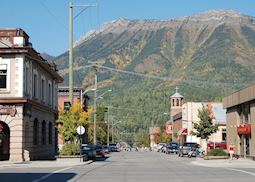
- Waterton Lakes National Park 59 miles away
- Head-Smashed-In Buffalo Jump 67 miles away
- The Purcell Mountains 68 miles away
- Claresholm 78 miles away
- The Kootenays 112 miles away
- Canmore 113 miles away
- Calgary 119 miles away
- Banff 121 miles away
- Yoho National Park 144 miles away
- Lake Louise 144 miles away
lululemon Paris 2024 Team Canada athlete kit: Top picks
Wear your support
You can save this article by registering for free here . Or sign-in if you have an account.
Reviews and recommendations are unbiased and products are independently selected. Postmedia may earn an affiliate commission from purchases made through links on this page.
Article content
Get ready to sport your red and whites. lululemon is Team Canada’s official clothing partner for the Paris 2024 Olympics.
The B.C.-based retailer just released the Team Canada collection that will be sported by the Olympians but is also available for everyone to get a little piece of Paris pride. Read more about the launch here .
We attended the Team Canada collection reveal to get our hands on the new pieces. We were treated to a fashion show filled with Team Canada athletes including Phil Kim, Zak Madel and Leylah Fernandez and a surprise run-in with Wayne Gretzky, who we’ve learned has involvement in this Olympic collaboration.
Enjoy the latest local, national and international news.
- Exclusive articles by Conrad Black, Barbara Kay, Rex Murphy and others. Plus, special edition NP Platformed and First Reading newsletters and virtual events.
- Unlimited online access to National Post and 15 news sites with one account.
- National Post ePaper, an electronic replica of the print edition to view on any device, share and comment on.
- Daily puzzles including the New York Times Crossword.
- Support local journalism.
Create an account or sign in to continue with your reading experience.
- Access articles from across Canada with one account.
- Share your thoughts and join the conversation in the comments.
- Enjoy additional articles per month.
- Get email updates from your favourite authors.
Don't have an account? Create Account
We looked through the collection and have our favourites, but if you’re looking for Gretzky’s opinion, he “likes them all.” Here are our top picks from the Team Canada collection that subtly scream Canadian pride.
Team Canada Future Legacy Mini Belt Bag ($38)
Team canada steady state crew ($98), team canada classic-fit cotton t-shirt ($58), team canada relaxed-fit wovenair short ($98), team canada surge jogger ($128), team canada align high-rise pant ($98), team canada beyondfeel women’s running shoe ($198).
Shop the full collection, here .
Shopping Essentials is a category written by research-obsessed shopping experts. Explore product reviews, recommendations and launches — plus behind-the-scenes info on your favourite brands and hidden gems — learn more here or sign up for our newsletter .
rmann@ postmedia.com
instagram.com/randimann
Looking for savings? Look no further than our coupons page , for discounts on your favourite brands.
Postmedia is committed to maintaining a lively but civil forum for discussion. Please keep comments relevant and respectful. Comments may take up to an hour to appear on the site. You will receive an email if there is a reply to your comment, an update to a thread you follow or if a user you follow comments. Visit our Community Guidelines for more information.
'Nessie' photo at Scotland's Loch Ness puts Canadians in media spotlight
Michael taube: why canada’s banks should avoid halal mortgages at all costs, 'good luck with that': trudeau cautions saskatchewan premier over carbon tax fight with cra, first reading: islamophobia czar's wild claim that anti-israel extremism is a 'few individual protesters', was harry jerome the world's fastest man his 1960 finish is still a mystery, new star wars lego sets released for 2024.
Celebrating 25 years of Star Wars LEGO
Sun’s out, legs out! Here are 5 stylish shorts and skirts to try this season
From pleated skirts to 24-7 shorts, Rebecca Tay showcases five options to set up for the season ahead.
Advertisement 2 Story continues below This advertisement has not loaded yet, but your article continues below.
Fashion brands that prioritize sustainable manufacturing
How these fashion brands are prioritizing sustainability
Top spring cleaning tips from Melissa Maker of YouTube’s Clean My Space
Maker celebrates International Creator Day
Best Buy’s electronic recycling trade-in program a simple way to contribute to circular economy
Celebrate Earth Day and upgrade your tech
This website uses cookies to personalize your content (including ads), and allows us to analyze our traffic. Read more about cookies here . By continuing to use our site, you agree to our Terms of Service and Privacy Policy .
You've reached the 20 article limit.
You can manage saved articles in your account.
and save up to 100 articles!
Looks like you've reached your saved article limit!
You can manage your saved articles in your account and clicking the X located at the bottom right of the article.
Stories that travel. Made by Air Canada.
City Guides
- Fredericton
- Los Angeles
- Montego Bay
- New York City
- Quebec City
- San Francisco
- Yellowknife
- Food & Drink Food & Drink
- Health & Wellness Health & Wellness
- Design & Culture Design & Culture
- Sports & Entertainment Sports & Entertainment
- City Guides City Guides
- Aeroplan Insider Aeroplan Insider
Ready, set, dine! These are Canada’s Best New Restaurants.
A Perfect Day in Tiong Bahru, Singapore
- pinterest-white Created with Sketch.
- noun_link_2071800 Created with Sketch.
As home to the towering Marina Bay Sands , Singapore may be synonymous with its iconic harbour skyline. But, Tiong Bahru takes visitors back to a time when mid–century buildings rose to a modest four storeys.
Named for a long–gone Chinese cemetery, the neighbourhood became the site of Singapore’s first public housing project in the 1920s. Nicknamed “aeroplane houses,” for their resemblance to airplane wings, these pre–war flats were awarded conservation status in 2003, preserving a delectable slice of history in the rapidly modernizing city.
The nerve centre of the neighbourhood is Tiong Bahru Market , where Singaporeans embrace their love of hawker fare. Once a myriad of makeshift stalls with zinc roofs and black tarpaulins that would appear in monsoon season, the market now stands in a two–storey complex. In the ground floor wet market, vendors hawk fresh seafood, meat and vegetables alongside spices, flowers and piled wares.
Upstairs, many of the cooked food stalls display Michelin Bib Gourmand badges. Try Tiong Bahru Hainanese Boneless Chicken Rice , where the name offers a good indication of what to order, or Jian Bo Shui Kueh for soft rice cakes topped with chai poh (preserved radish) and dried shrimp chili sauce. Polish things off at Tian Tian Yuan Dessert House — a third–generation stall with a name that’s a mouthful to pronounce, and traditional local sweets that make it worth the effort. Don’t forget to chope as the locals do: Reserve your table with a tissue packet.
Murals by self–taught Singaporean artist Yip Yew Chong transform Tiong Bahru into a public art gallery. Bird Singing Corner , between Seng Poh Road and Tiong Poh Road, depicts a bird singing club gathering, a bygone morning pastime that saw old “uncles” sipping kopi (“coffee” in Malay) under the cages of their feathered friends. Wander the blocks in search of his other heritage murals: Pasar , Fortune Teller and Home .
If you’re lucky and it’s an auspicious day on the lunar calendar (the 16th day of the 8th lunar month), birthday celebrations will be in full swing at Qi Tian Gong Temple for the Monkey God (a mythological character from the Chinese novel The Journey to the West ). Festivities at the Taoist temple, which houses more than 10 statues of the deity, include lion and dragon dances, and Chinese street operas known as wayang .
Next, head to Micro Bakery Kitchen in an unassuming shop under pre–war flats on Yong Siak Street for steaming–hot espressos from freshly ground small–batch beans, served in cups made by Thai ceramicists. If you have room, squeeze in some pastries or grab a sourdough loaf for the road.
In a city of mega malls, the indie stores on Yong Siak Street come as a relief. In the 2000s, these pioneer shops propelled Tiong Bahru to its current hip status. Pop into Cat Socrates for lifestyle goods with cat motifs, or Nana & Bird and Monument Lifestyle for capsule additions to your wardrobe. Drop into Ahhh.House for carefully curated prints and design objects.
When you have worked up an appetite, head to Por Kee Eating House opposite Tiong Bahru Market for fab zi char (literally, “cook and fry”). Expect to find no–frills Chinese food, from yang chow fried rice to tender champagne pork ribs and steamed or fried chili crab, at a bargain. Feast outdoors on round tables covered with tablecloths, and wash it down with a Tiger Beer, Singapore’s first locally brewed lager.
Where to Stay
In the nearby Duxton Hill area, shuttered shophouses have turned into Michelin–star establishments. The 302–room Mondrian Singapore Duxton , which opened in 2023, blends historical Chinese shophouse elements with modern luxury, making it an ideal place to put up weary feet after exploring. From your window, watch lion dance troupes practise on rooftops, or head down and rub shoulders with locals doing tai chi in the morning.
Plan for your next trip.

IMAGES
VIDEO
COMMENTS
Learn about the reasons, benefits, and challenges of traveling to Canada, a large and diverse country with a lot to offer for nature, winter sports, cities, and cost. Find out how to get a visa, what language to expect, and what to expect from the weather, culture, and security.
The Rough Guides to Canada and related travel guides. In-depth, easy-to-use travel guides filled with expert advice. Buy US$28.99. Buy US$28.99. Buy US$34.99. Buy US$34.99. Find even more inspiration here. Quiz: can you name these famous sights? Road trip Canada: 5 of the best routes.
Canada Travel Guide: The Best Booking Resources. These are my favorite companies to use when I travel. They consistently have the best deals, offer world-class customer service and great value, and overall, are better than their competitors. They are the companies I use the most and are always the starting point in my search for travel deals.
Here are the basics of travel to Canada. CAPITAL: Ottawa. OTHER MAIN CITIES: Quebec, Toronto, Vancouver, Montreal, Calgary, Edmonton. CURRENCY: Canadian dollar (See current exchange rates) ELECTRICITY: In Canada, the standard voltage is 120 V, while the standard frequency is 60 Hz.
Many travelers to Canada need a visa or Electronic Travel Authorization to visit. Here's a quick guide to the visa requirements for Canada. Read article. Money and Costs. Canada abounds with pleasures - which, unfortunately, don't come cheap. Here are a few ways to explore the country without breaking the bank.
Something for everyone. Discover Canada's captivating allure where welcoming metropolises meet sweeping coastlines, embodying a unique blend of wild prairies, fearless adventures, and refreshing perspectives. Whether kayaking off British Columbia, savoring Nova Scotia's lobster feast, or witnessing the mesmerizing northern lights in the Yukon.
Budget: You can find a number of budget hotels and hostels for around 20-65 Canadian Dollars. Enjoy dorm-styled or private rooms, common areas, shared kitchens, free Wi-Fi, and easy access to city or scenic locations. Mid Range: For mid-range hotels, expect to pay 100 to 200 Canadian Dollars per night.
Canada. Canada's unspoiled natural beauty is matched only by its cosmopolitan cities. Split time here among the magnificent Canadian Rockies, sophisticated Montreal, sprawling Great Lakes, and scenic Vancouver. The Complete Guide to Alberta's Icefields Parkway. The Best 25 Things to Do in Canada. Val d'Or, Quebec: The Complete Guide.
The snowy months of winter allow for world-class skiing, snowshoeing, and hockey games. Summer is ripe for sunseekers to explore both the Pacific and Atlantic coasts, the lakes of Ontario, and the wild country of the North. Spring turns the West into one gigantic flowerpot, while fall transforms Eastern Canada into a kaleidoscope of colors.
Canada travel guide. About Canada. Whether you're a hardcore adrenaline junkie, a wildlife enthusiast or a city slicker looking for cutting-edge culture, Canada ticks all the boxes. ... The World Travel Guide (WTG) is the flagship digital consumer brand within the Columbus Travel Media portfolio. A comprehensive guide to the world's best ...
Something for everyone. Discover Canada's captivating allure where welcoming metropolises meet sweeping coastlines, embodying a unique blend of wild prairies, fearless adventures, and refreshing perspectives. Whether kayaking off British Columbia, savouring Nova Scotia's lobster feast, or witnessing the mesmerising northern lights in the Yukon.
For Canada's 150th birthday in 2017, they drove coast to coast to coast for 150-days to create a mini travel series about Canada and a mini-documentary about what makes Canada special. Since then, they've become experts on travelling in Canada and share all their tips, stories, and advice through videos, travel guides, social media, and more!
Get information on Canada Travel Guide - Expert Picks for your Vacation hotels, restaurants, entertainment, shopping, sightseeing, and activities. Read the Fodor's reviews, or post your own.
In addition to tax, tipping 15-18% is expected for drinking, dining, and tours. But don't be dismayed - there are plenty of ways to reduce your costs here. A conservative travel budget for Canada would be $80 USD per day to cover accommodation (e.g. dorms and humble AirBNBs ), food, and potentially activities.
Plugs: The plugs in Canada are type B (the same as the US). The standard voltage is 110-120 V, and the standard frequency is 60Hz. For foreign travelers, I recommend buying a universal adapter (make sure it has surge protection) and using a converter for hairdryers and hot tools. Safety: Canada is a very safe country to visit, and there's ...
Toronto Travel Costs. Hostels - Toronto only has a few hostels. Dorms with 6-8 beds cost between 30-45 CAD per night. Free Wi-Fi is standard, and most hostels have self-catering facilities to cook your own food. A couple of hostels include free breakfast. Private rooms begin at 75-90 CAD per night.
When to Go to Nova Scotia. Nova Scotia is at its busiest in the summer, with the best weather occurring between June and August. Temperatures often exceed 25°C (78°F). Keep in mind that accommodation prices are higher during this time, but tourist attractions are never overly crowded compared to elsewhere in Canada.
Measles cases are increasing worldwide. Before travelling, check that you and your family have received the recommended measles vaccinations. Do not travel if you have symptoms of measles or have been in contact with someone with measles.. If you develop symptoms of measles after your return to Canada, call a health care provider right away.
Explore the 13 best vacation spots in Canada with in-depth travel guides. Discover the best things to do, when to visit, where to stay, how to get around, and how to save money.
Regions [edit]. Visiting Canada all in one trip is a massive undertaking. The Trans-Canada Highway is about 8,000 km (5,000 mi) from St. John's, Newfoundland to Victoria, British Columbia (about the same distance as Cairo to Capetown, and more than three times Napoleon's march from Paris to Moscow).Crossing the country with any ground transport takes at least a week, even if you do not stop to ...
Here's your ultimate guide to Montreal, including the best hotels, restaurants, shops, bars, and more. ... Montreal can be reached via regular flights with Air Canada, Delta, American, and United ...
7-Day Ultimate Toronto Itinerary: Exploring the Heart of the City. Explore the best of Toronto in 7 days with our ultimate itinerary. From the iconic CN Tower to the picturesque Toronto Islands, immerse yourself in the vibrant culture, history, and flavors of Toronto. READ MORE.
Canada Travel Guide. The Go Canada Travel Guide and Vacation Planner is your best resource to provide complete and accurate information on the thousands of sightseeing attractions, tourist destinations, hotels, resorts, RV parks, and recreational activities. Our travel guide contains thousands of pages of travel, vacation, and recreation ...
Travel outside Canada. It is important to be prepared and to expect the unexpected wherever in the world you may be. Here is helpful information on health and safety, travel documents, Canada-U.S border wait times, travelling with children and more. ... A quick searchable guide to what you can and cannot bring on a plane. Registration of ...
Get TourBook ® guides for destinations across the U.S., Canada, Mexico and the Caribbean at TourBook.AAA.com, and find paper maps at your local AAA offices as well as printable maps at AAA's online map gallery.. Since 1926, AAA's free TourBook guides have been providing trustworthy travel information to AAA members. The digital guide is the same great TourBook you know and love, but now ...
Speak to a certified Canada specialist to start planning your tailor-made vacation... Call one of our experts or arrange a video appointment for ideas and advice. 617-223-4521
Team Canada Steady State Crew. Photo by lululemon. Team Canada Classic-Fit Cotton T-Shirt ($58) Team Canada Classic-Fit Cotton T-Shirt. Photo by lululemon. Team Canada Relaxed-Fit WovenAir Short ($98)
Upstairs, many of the cooked food stalls display Michelin Bib Gourmand badges. Try Tiong Bahru Hainanese Boneless Chicken Rice, where the name offers a good indication of what to order, or Jian Bo Shui Kueh for soft rice cakes topped with chai poh (preserved radish) and dried shrimp chili sauce. Polish things off at Tian Tian Yuan Dessert House — a third-generation stall with a name that ...